Today we had planned a drive/walking tour of Kiev. After yesterday’s super long day out to Chernobyl and the way my back was feeling, I was doubting the sanity of lining up for another long day out. This morning my back is still not back down to its usual dull roar, but we only have limited time, I just have to push on and hopefully not pull the pin too early. Seriously, I really need a sea day!
Monument to Kyiv, Shchek and Khoryv, the are three legendary brothers, often mentioned along with their sister Lybid who are believed to be the founders of the medieval city of Kyiv. According to legend, Kyiv, the eldest brother, was a prince from Polonia and he named the city after himself. There are also mountains named after his brothers and a river named after Lybid around here somewhere.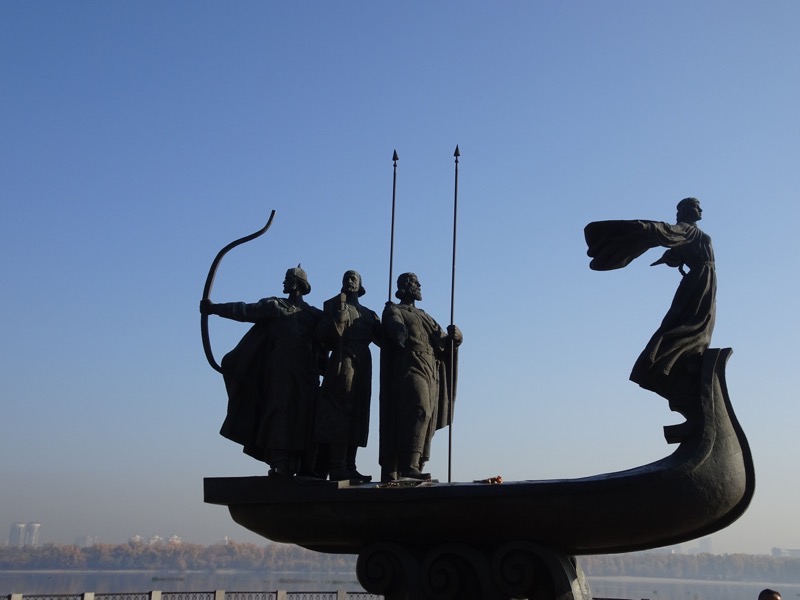 Bridal couples like to visit this monument and turn their back to the longship throwing their bouquets onto the ship – if the flowers land on the deck of the ship, they wll have a long and happy marriage.
Bridal couples like to visit this monument and turn their back to the longship throwing their bouquets onto the ship – if the flowers land on the deck of the ship, they wll have a long and happy marriage.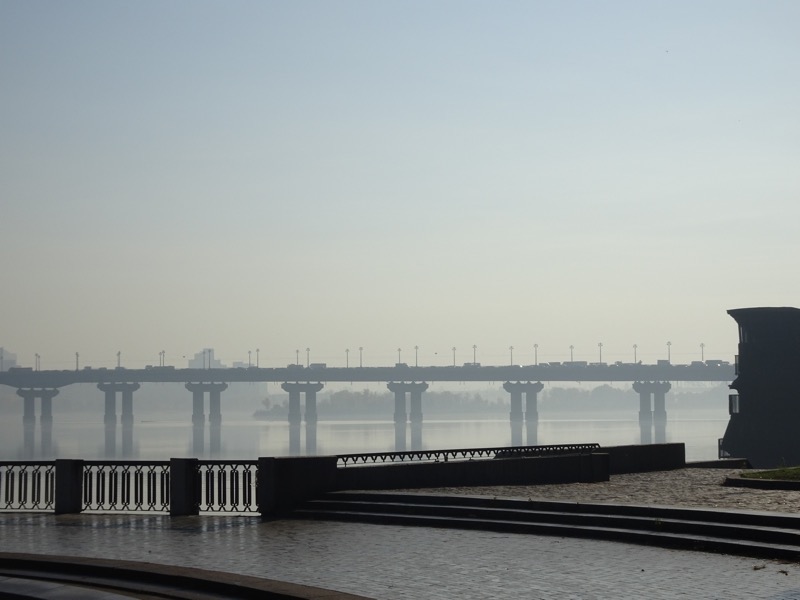 This is called the ‘Tree of Happiness’ and it is full of ribbons and tokens placed here from the parents of the aforemented bridal couples.
This is called the ‘Tree of Happiness’ and it is full of ribbons and tokens placed here from the parents of the aforemented bridal couples.
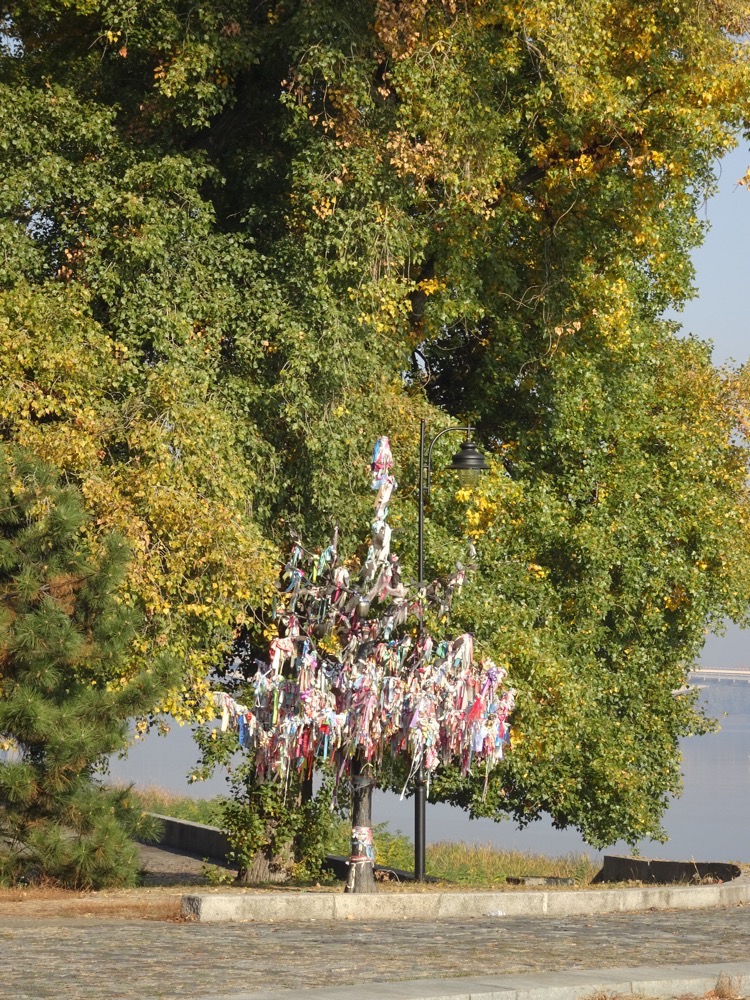
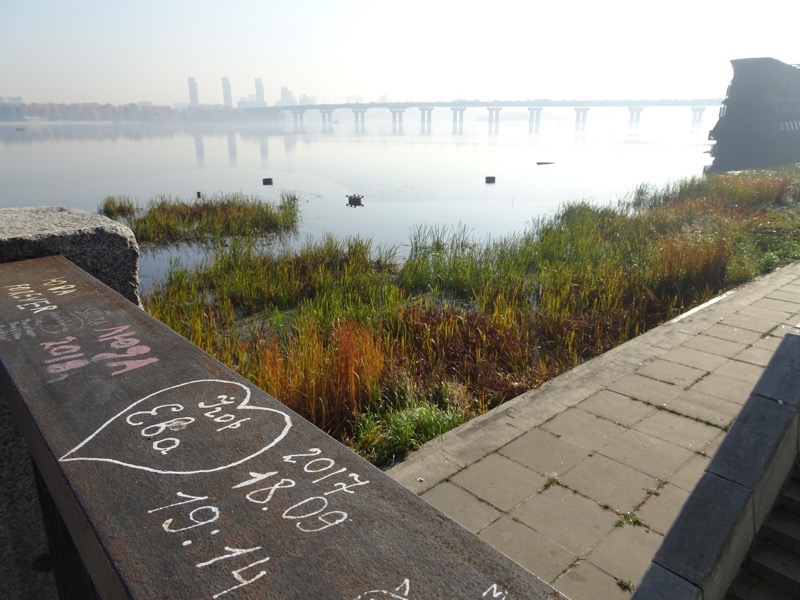
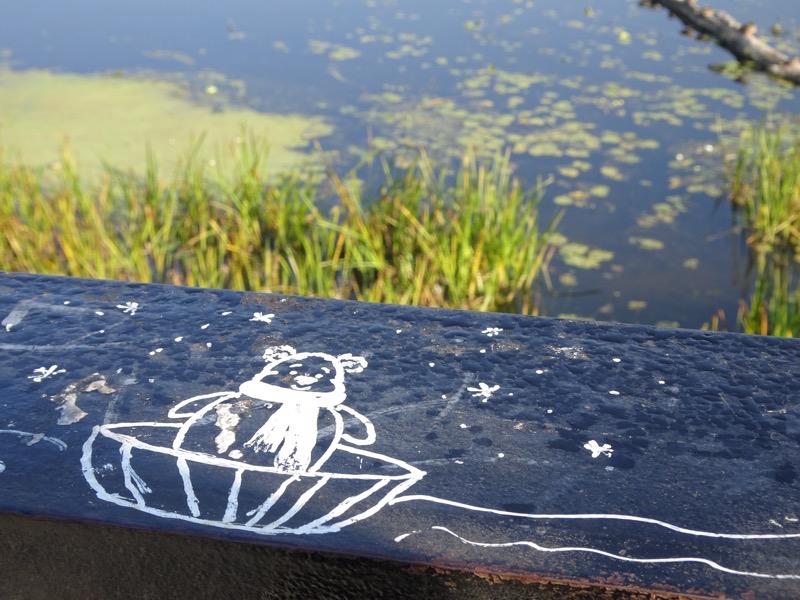 Banks of the Dneiper River.
Banks of the Dneiper River.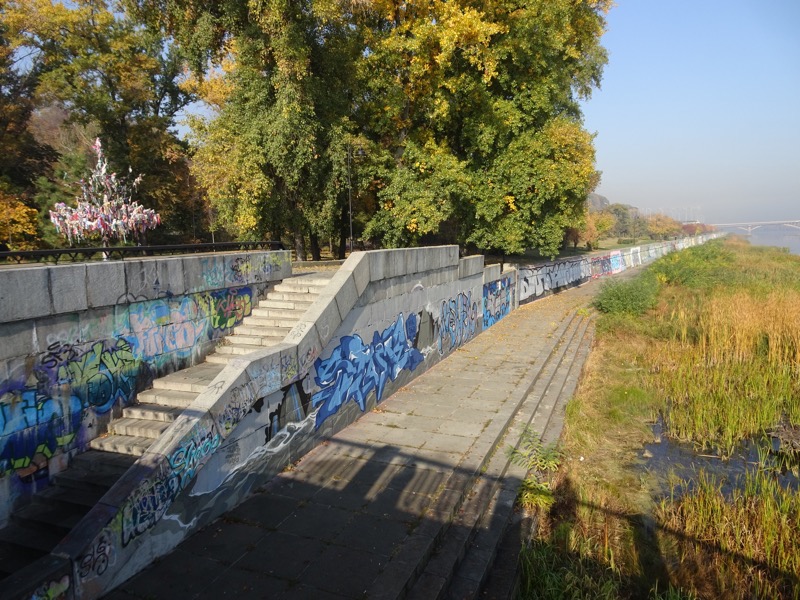 The Motherland Monument stands high on the hills over the Dnieper River and is a part of the Ukraine World War II Museum – it is the only remaining monument in Ukraine bearing Soviet imagery, and the reason is that no one can decide how/what to replace it with. At 102m tall, it is an imposing structure designed to convey the power and strength of the Soviet Union.
The Motherland Monument stands high on the hills over the Dnieper River and is a part of the Ukraine World War II Museum – it is the only remaining monument in Ukraine bearing Soviet imagery, and the reason is that no one can decide how/what to replace it with. At 102m tall, it is an imposing structure designed to convey the power and strength of the Soviet Union.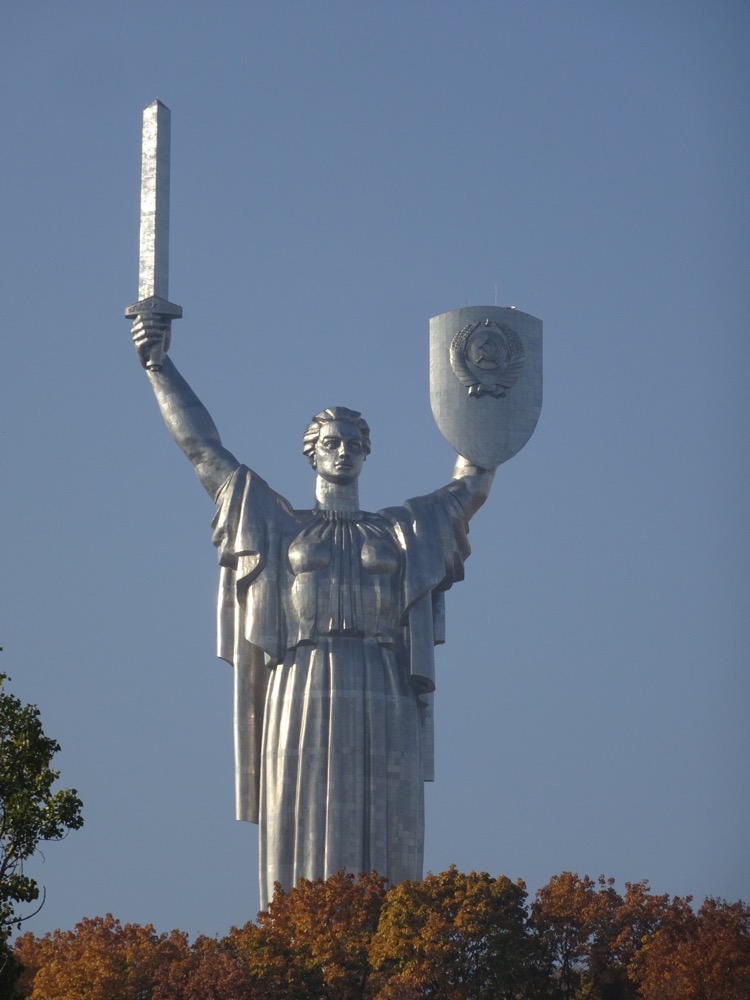 The WWII Musuem is lined with tanks and helicopters, many of which are from the 1980s wars with Afghanistan. Thanks Charlie Wilson – Ukraine has plenty of young vets with PTSD.
The WWII Musuem is lined with tanks and helicopters, many of which are from the 1980s wars with Afghanistan. Thanks Charlie Wilson – Ukraine has plenty of young vets with PTSD.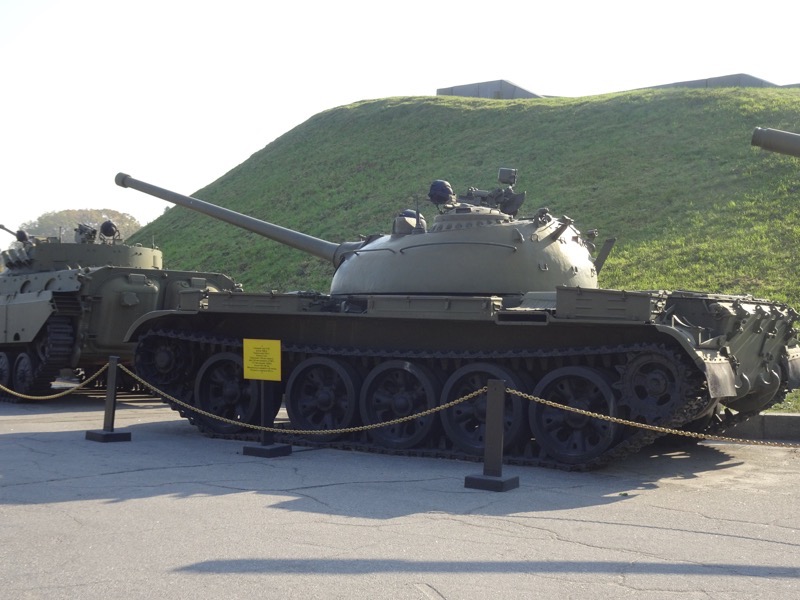 Our next stop was the National “Holodomor Victims Memorial”. The Holodomor (literally “to kill by starvation”) of 1932-1933 was effectively the Ukraine’s version of the Halocaust. It was a man-made famine in Soviet Ukraine that killed millions of Ukrainians. The museum was opened on the day of the 75th anniversary of the Holodomor in 2008 and gained the status of a national museum in 2010. The museum is located on the Pechersk Hills on the right bank of the Dnieper river in Kiev, adjacent to the Kiev Pechersk Lavra.
Our next stop was the National “Holodomor Victims Memorial”. The Holodomor (literally “to kill by starvation”) of 1932-1933 was effectively the Ukraine’s version of the Halocaust. It was a man-made famine in Soviet Ukraine that killed millions of Ukrainians. The museum was opened on the day of the 75th anniversary of the Holodomor in 2008 and gained the status of a national museum in 2010. The museum is located on the Pechersk Hills on the right bank of the Dnieper river in Kiev, adjacent to the Kiev Pechersk Lavra.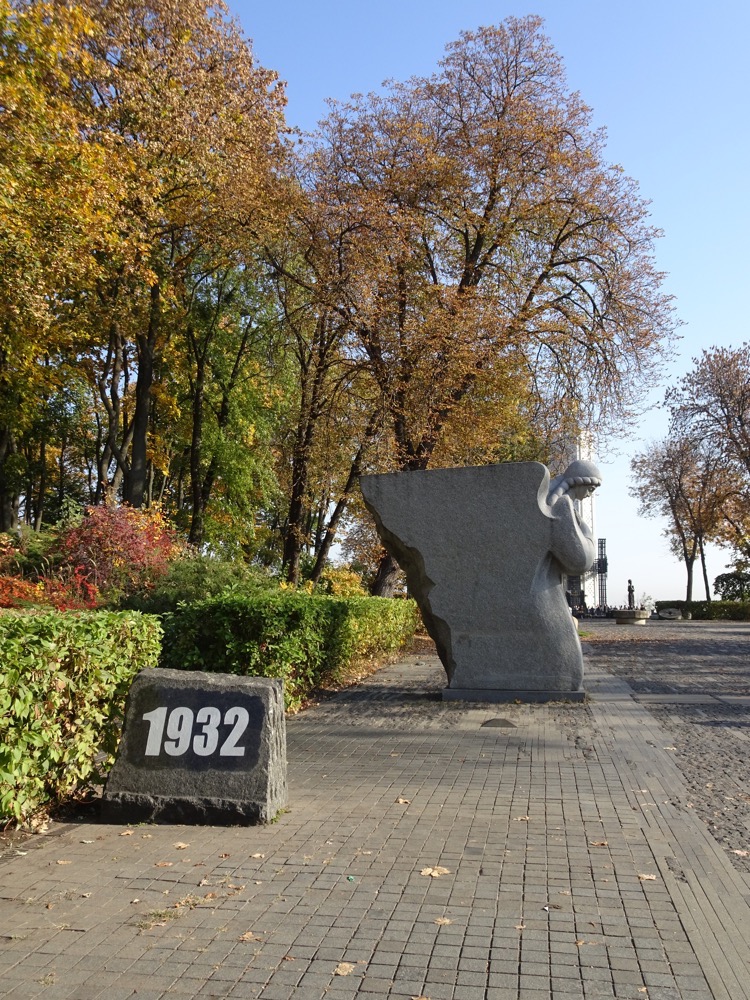
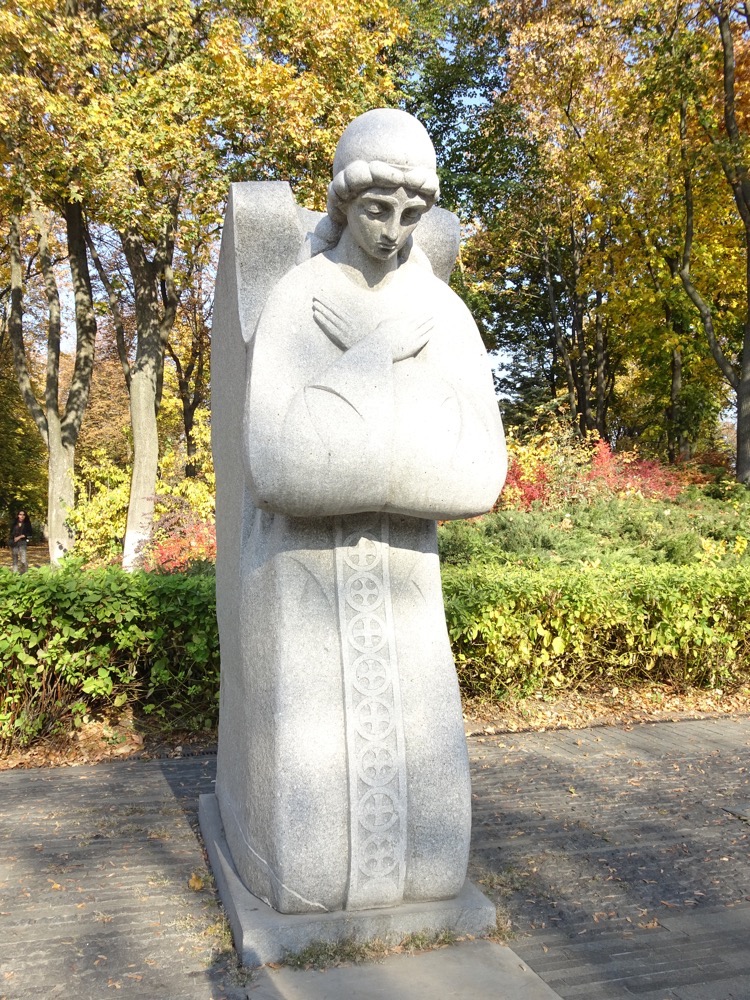 During the Holodomor, millions of inhabitants of Ukraine, the majority of whom were ethnic Ukrainians, died of starvation in an unprecedented, deliberate and orchestrated famine that was carried out against the Ukranian people by the Soviet Government. Fatalities are uncertain, but up to 12 million ethnic Ukrainians were said to have died as a result of the famine.
During the Holodomor, millions of inhabitants of Ukraine, the majority of whom were ethnic Ukrainians, died of starvation in an unprecedented, deliberate and orchestrated famine that was carried out against the Ukranian people by the Soviet Government. Fatalities are uncertain, but up to 12 million ethnic Ukrainians were said to have died as a result of the famine.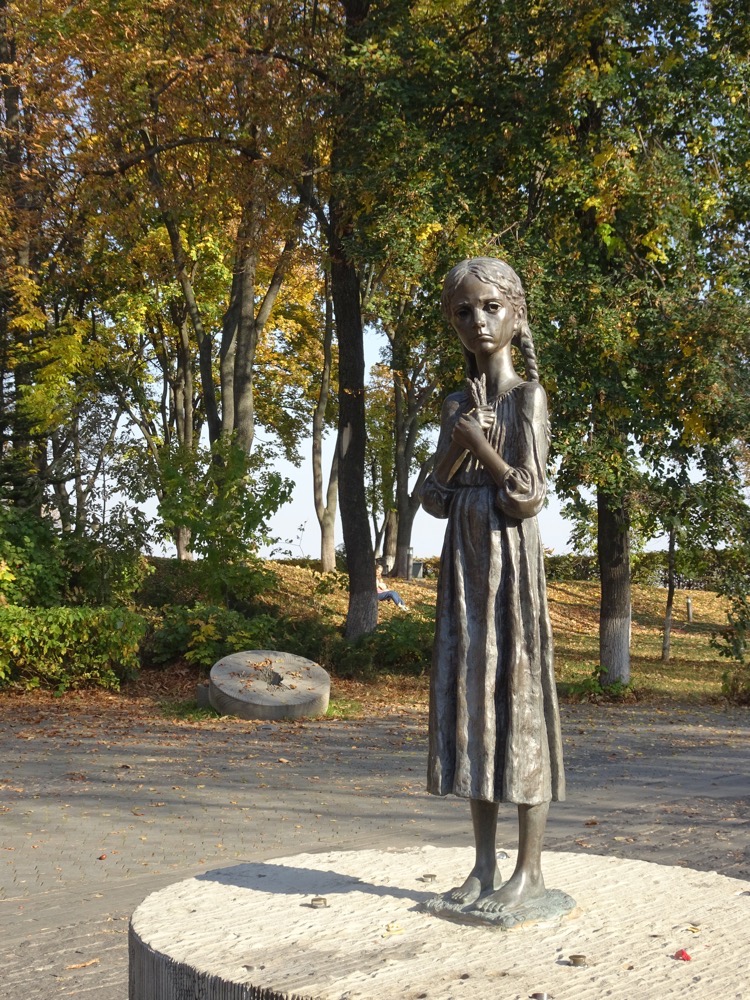 As it was explained to us, the Soviet Union has always tried to subjugate the ethnic Ukrainians and this famine was an effort to try and ‘eradicate’ the region of the Ukrainians altogether. Children as young as 12 would be jailed for possessing more than five stalks of grain, foodstuffs were confiscated allegedly for military efforts, and people became so desperate that evidence of widespread cannibalism (literally thousands of people resorted to eating people) was documented during the Holodomor, with children quite commonly ending up victims.
As it was explained to us, the Soviet Union has always tried to subjugate the ethnic Ukrainians and this famine was an effort to try and ‘eradicate’ the region of the Ukrainians altogether. Children as young as 12 would be jailed for possessing more than five stalks of grain, foodstuffs were confiscated allegedly for military efforts, and people became so desperate that evidence of widespread cannibalism (literally thousands of people resorted to eating people) was documented during the Holodomor, with children quite commonly ending up victims.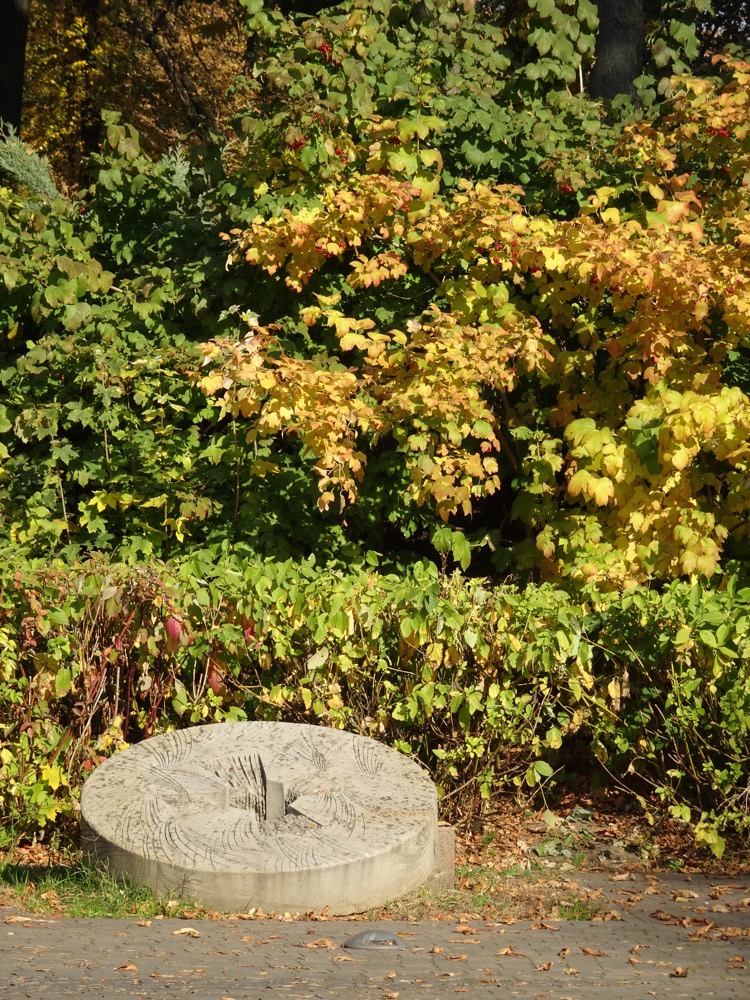
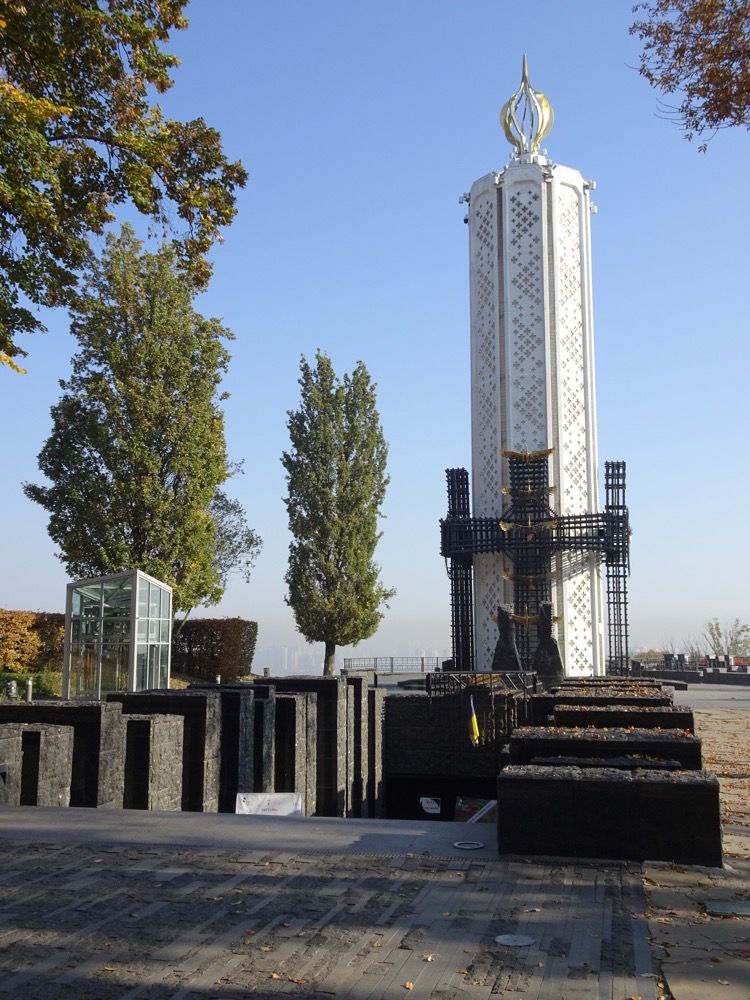
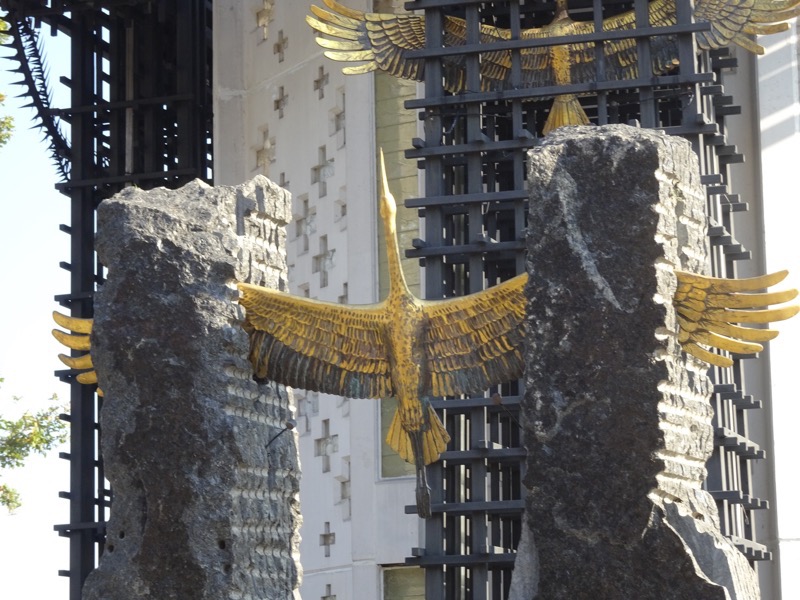
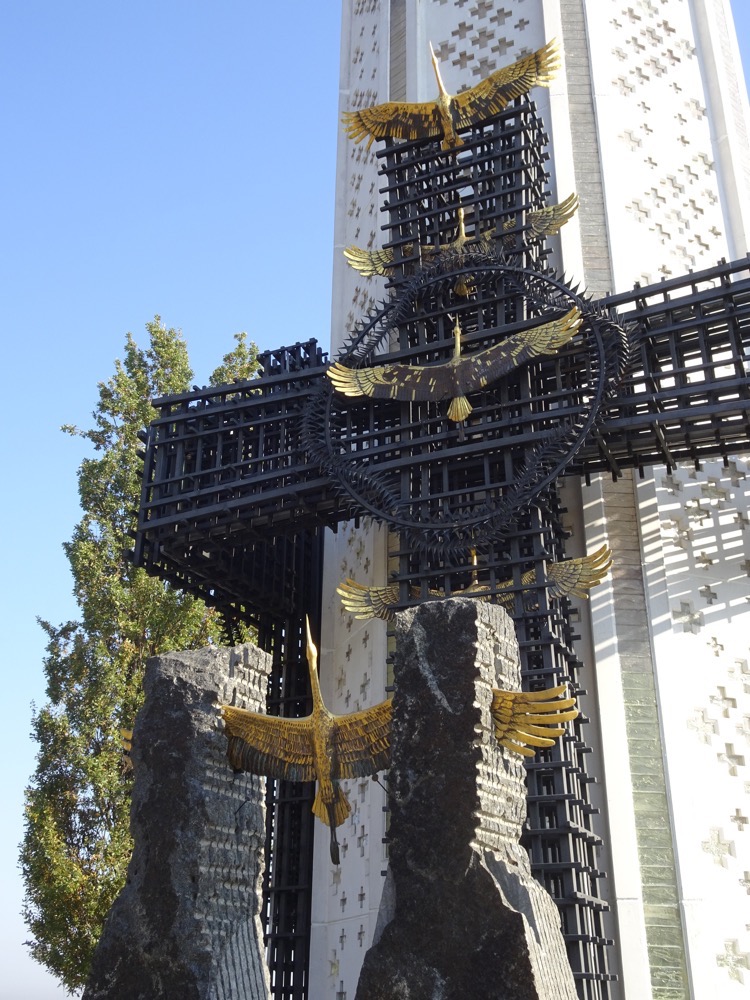
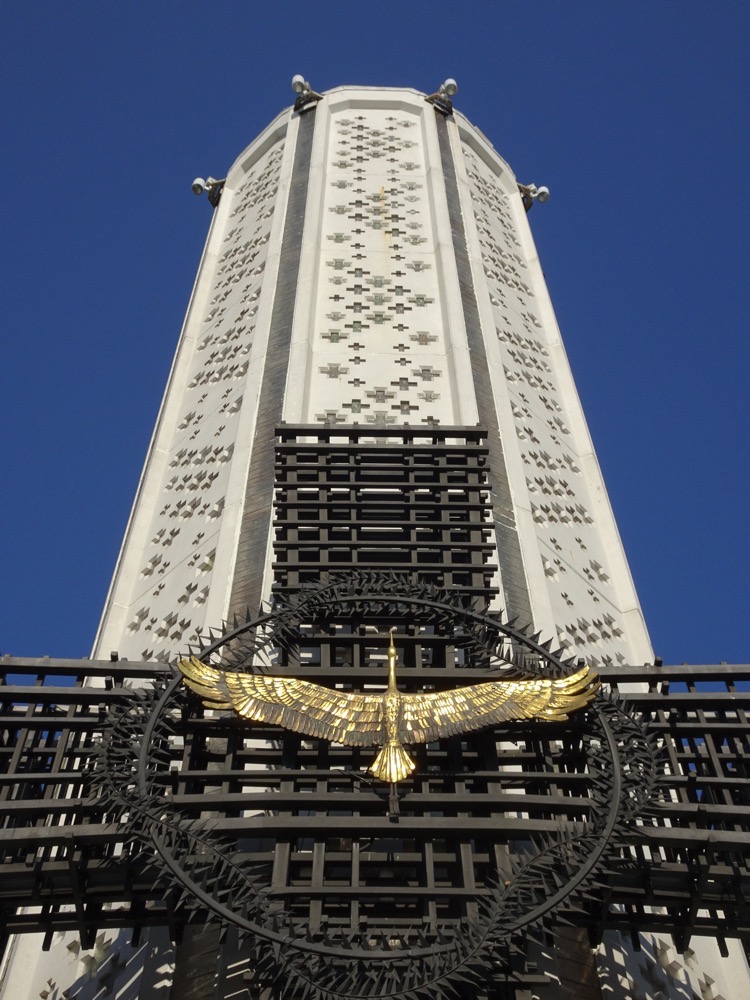 The World War II obelisk and to the right, what was designed and built to be a ‘youth skating rink centre’ but by the time corruption and government was through with it, it opened as a bar for diplomats with topless waitresses on roller skates. :/
The World War II obelisk and to the right, what was designed and built to be a ‘youth skating rink centre’ but by the time corruption and government was through with it, it opened as a bar for diplomats with topless waitresses on roller skates. :/ 
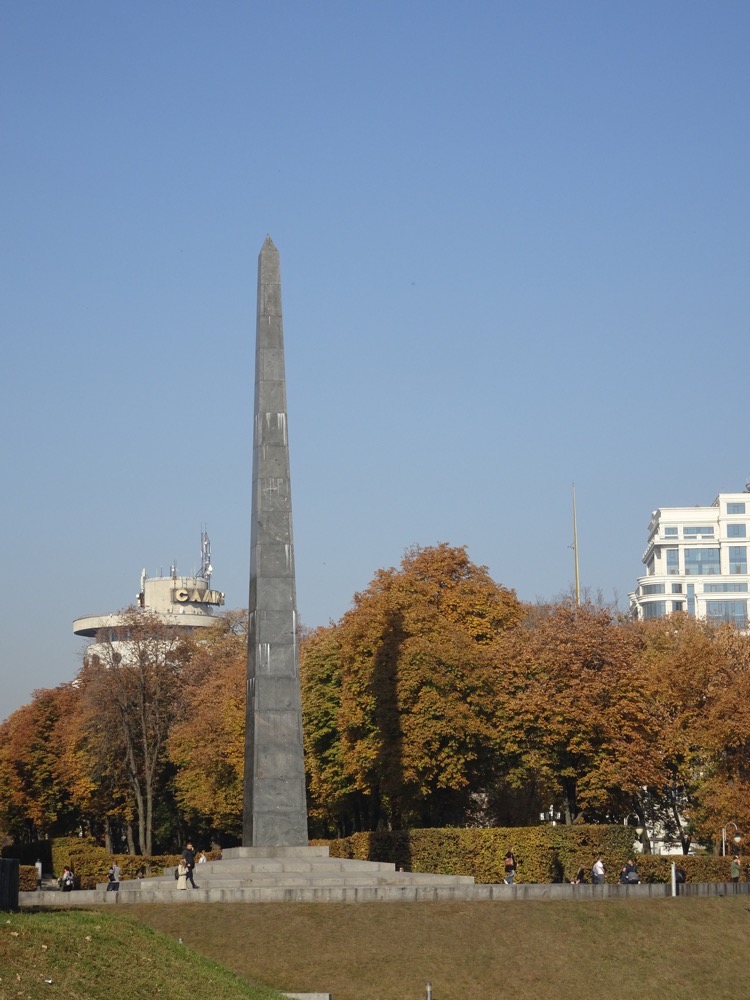 Kalyna berries are one of the national symbols of Ukraine. The red fiery colour of the berries represents beauty in Russian and Ukrainian culture and they symbolise the passionate love of a beautiful woman. They are seen quite commonly in folk painting and embroidery designs, and are used in decorations at holidays and weddings etc.
Kalyna berries are one of the national symbols of Ukraine. The red fiery colour of the berries represents beauty in Russian and Ukrainian culture and they symbolise the passionate love of a beautiful woman. They are seen quite commonly in folk painting and embroidery designs, and are used in decorations at holidays and weddings etc.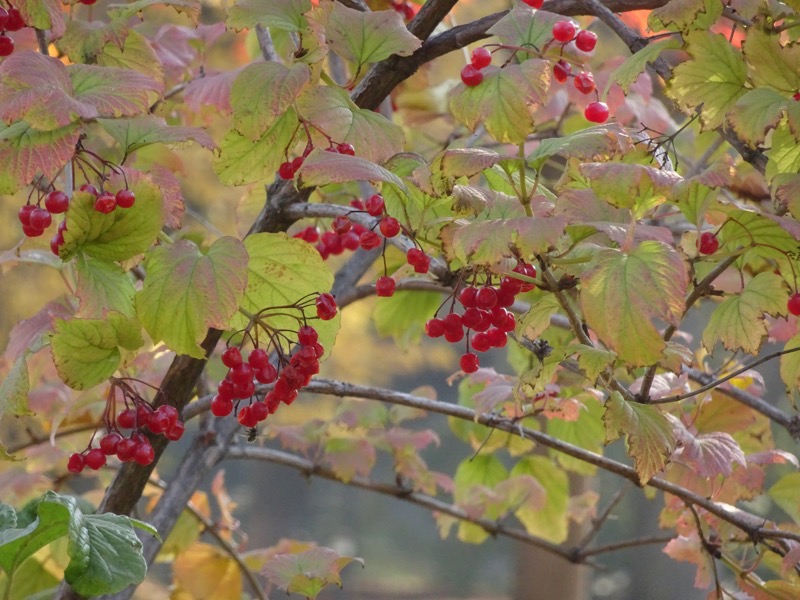
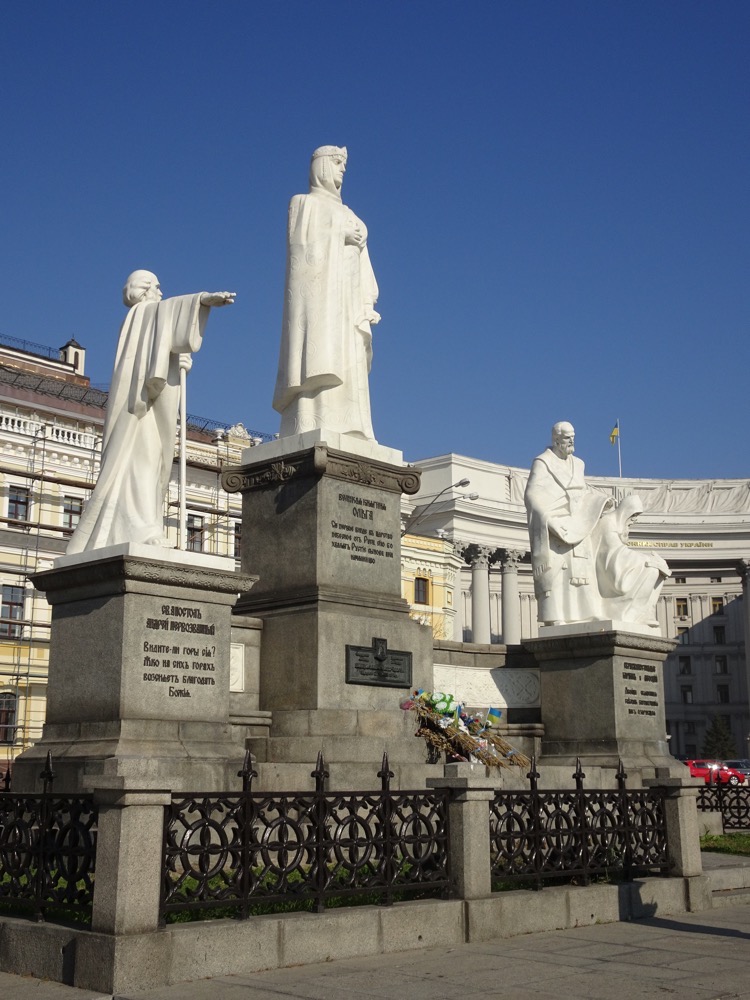
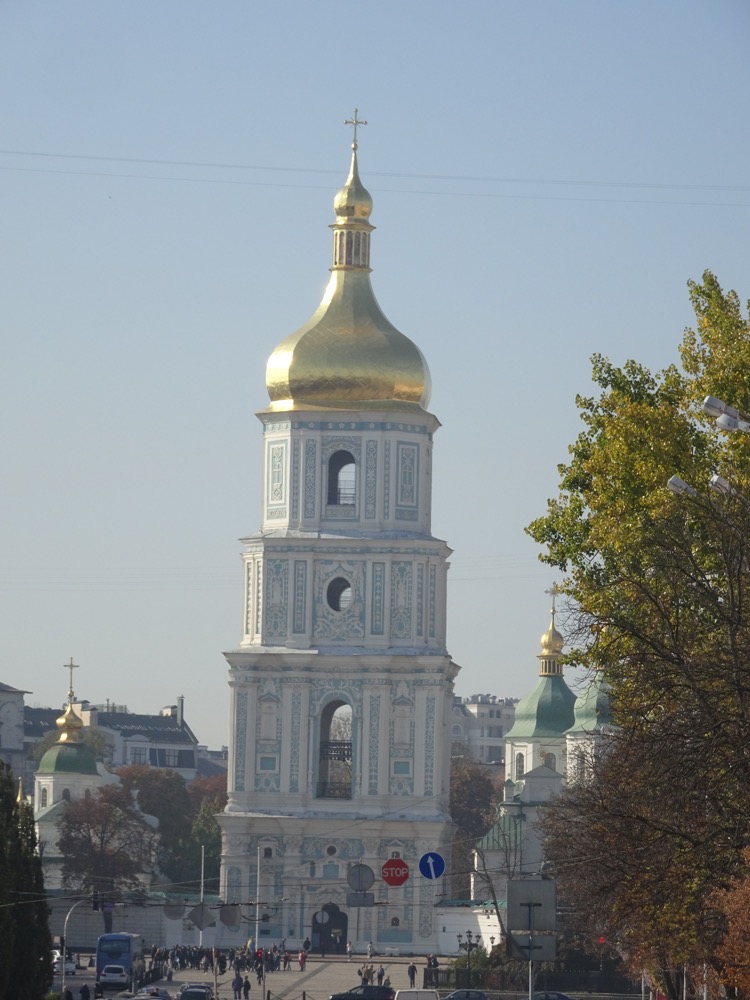 Somewhat incongruously, right beside the impressive St Michael’s Monastery sits the official Department of Foreign Affairs building.
Somewhat incongruously, right beside the impressive St Michael’s Monastery sits the official Department of Foreign Affairs building.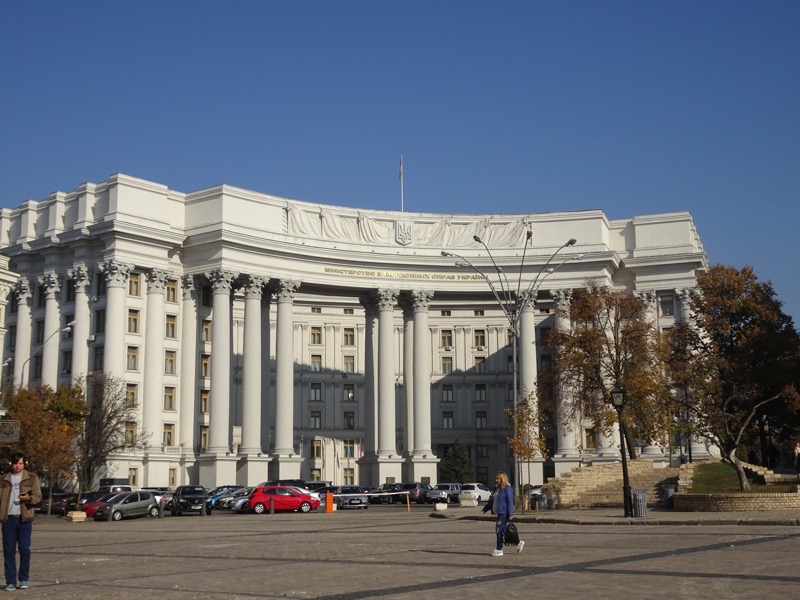
St. Michael’s Golden-Domed Monastery is located on the right bank of the Dnieper River in middle of the historic administrative/governmental, Uppertown. It overlooks the city’s historical commercial and merchant quarter known as the Podil. Originally it was built in
Originally built in the Middle Ages by Sviatopolk II Iziaslavych, who was the supreme ruler of the Kievan Rus for about 20 years (1093 to 1113), the monastery is made up of a Cathedral, the Refectory of St. John the Divine, the Economic Gates, and the monastery’s bell tower, which were all added in the 18th century. The exterior of the monastery was rebuilt in the Ukrainian Baroque style at that time while the interior is in the original Byzantine style… none of which really means anything because the original cathedral was completely demolished by Soviet authorities in the 1930s, and was then completely reconstructed and opened in 1999 following Ukrainian independence that happened in 1991! So the whole thing is new anyway.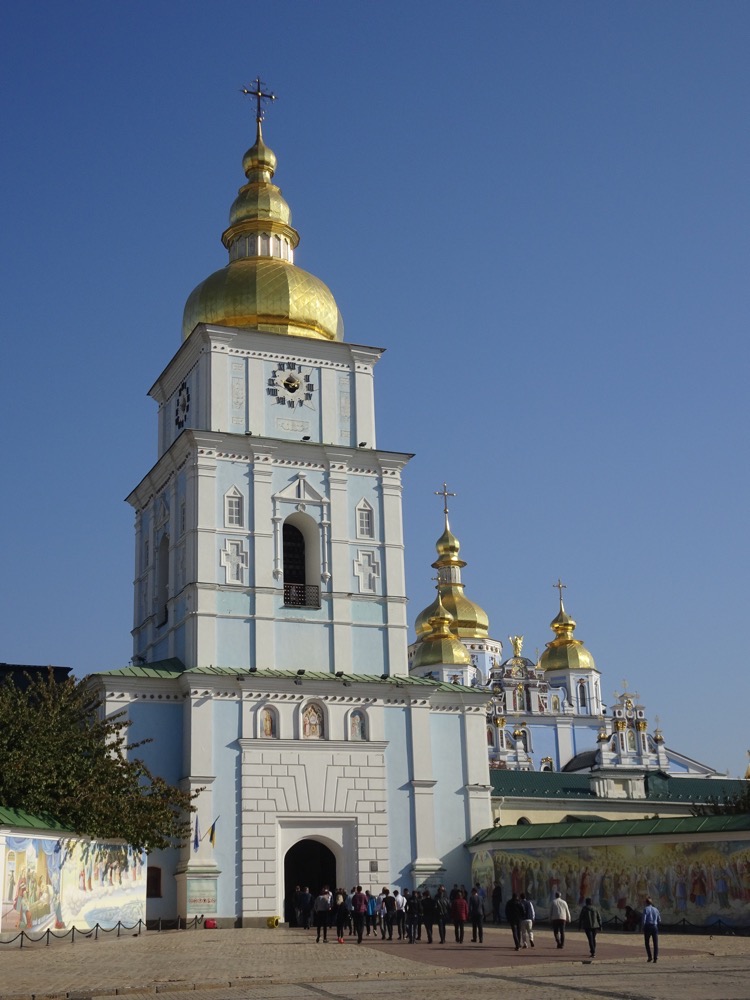
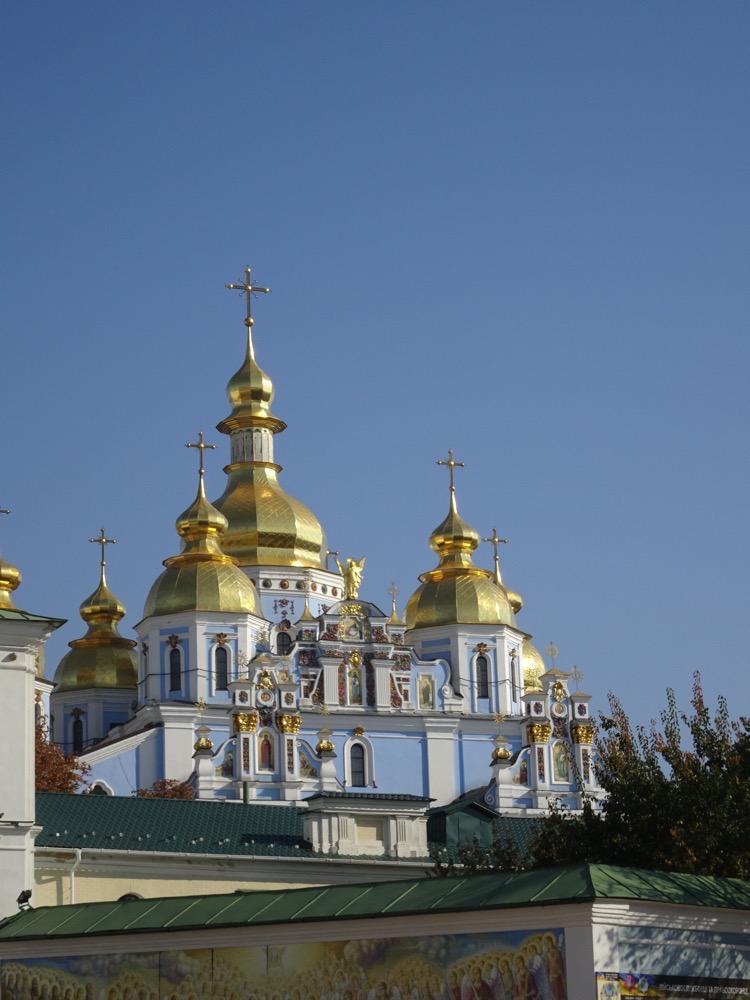
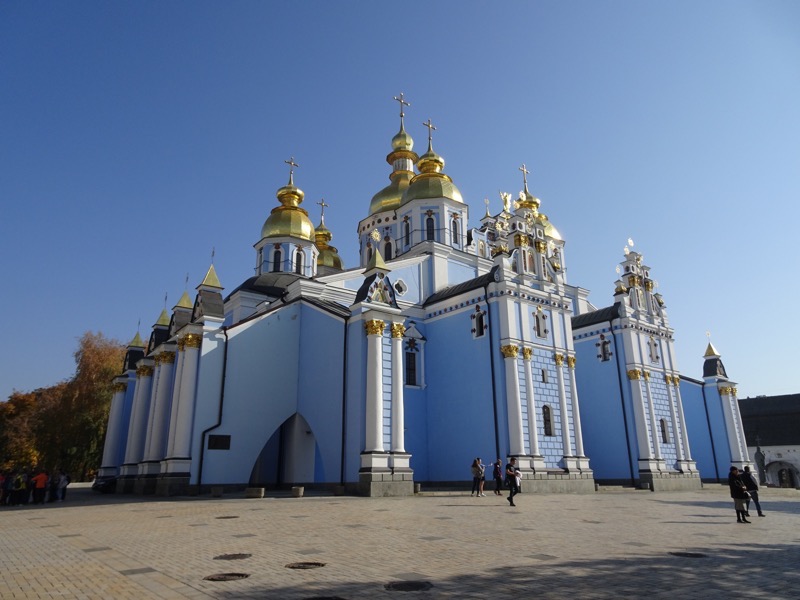
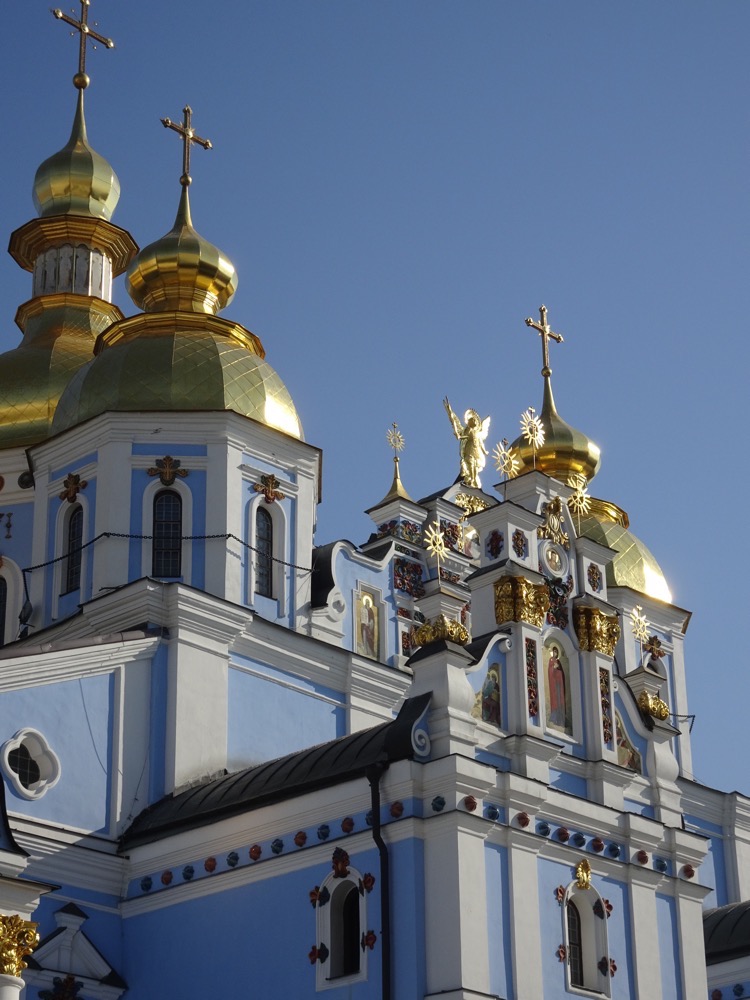
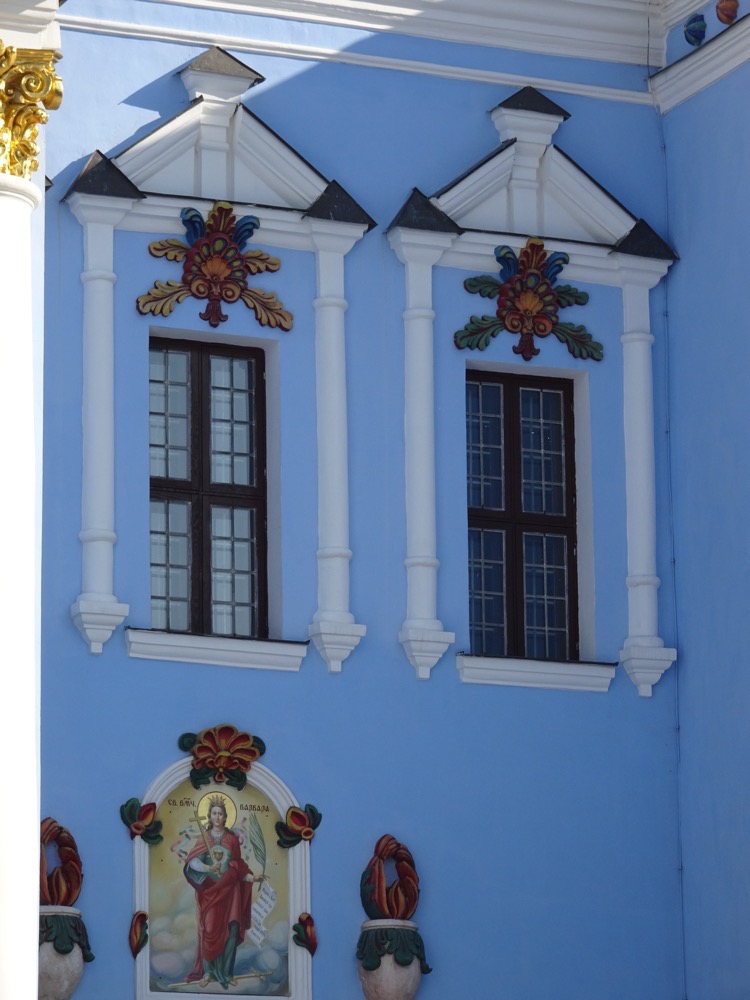 No photography is allowed inside, so I have totally stolen a picture from the Internet*:
No photography is allowed inside, so I have totally stolen a picture from the Internet*:
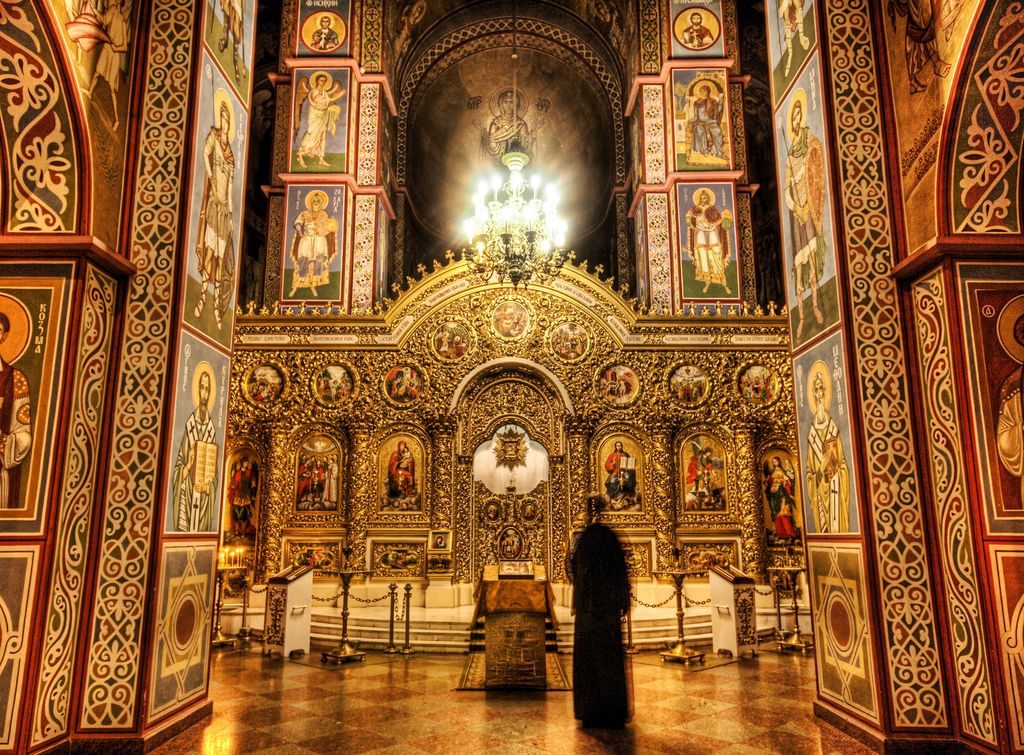 *I would normally list a photo credit, but I found this image on Pinterest, which as you all know is where all copyright and image credit information, goes to die. 🙁
*I would normally list a photo credit, but I found this image on Pinterest, which as you all know is where all copyright and image credit information, goes to die. 🙁
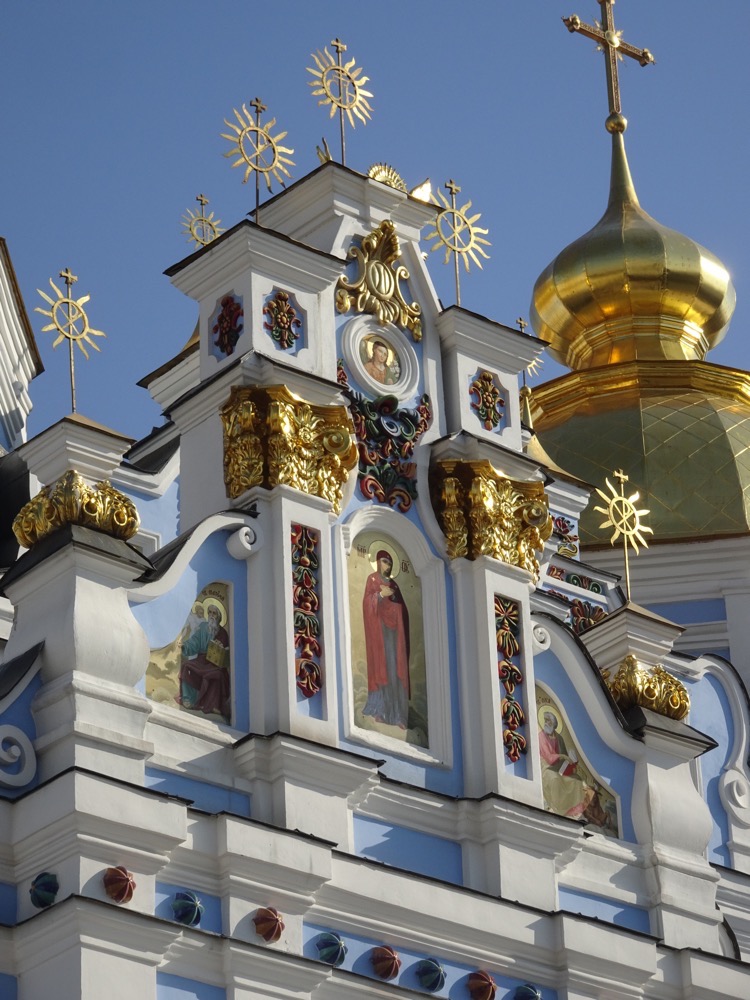
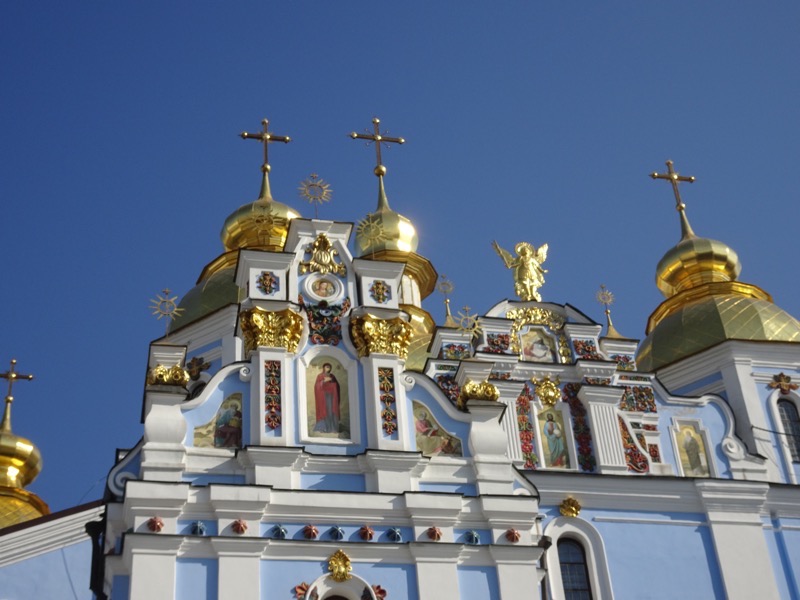
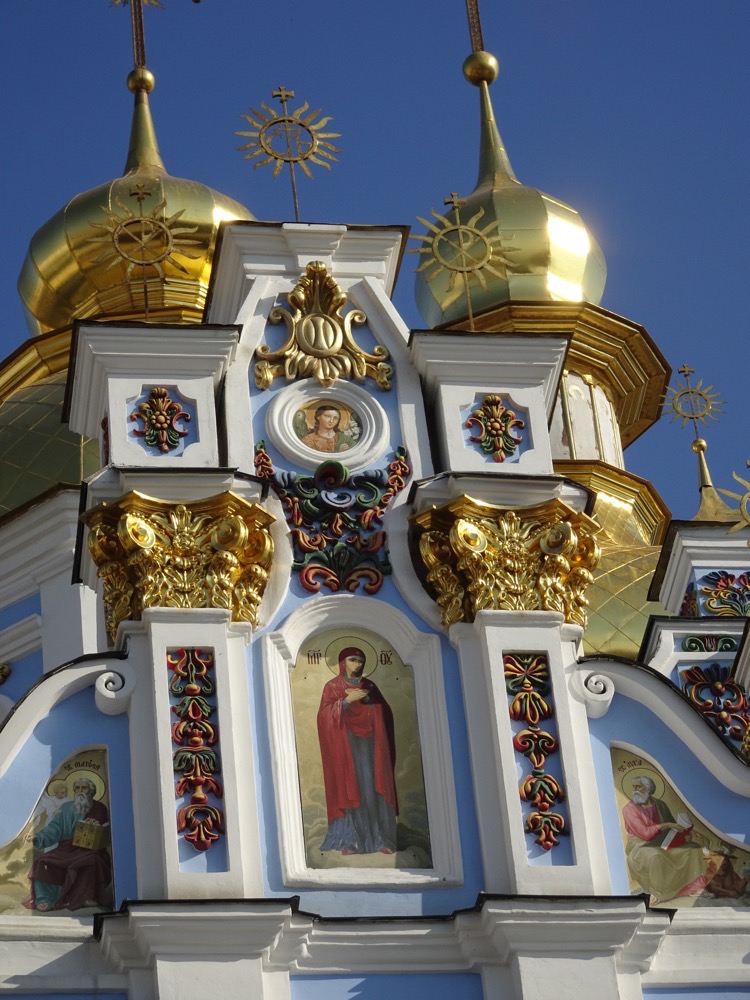 Fountain on the monastery grounds – and the first of several ‘wishing spot’ today. Wet a coin and see if you can get it to stick to the metal fountain taps, if it sticks, the wish will come true. My Australian 5c piece was just too heavy for the task (or the powers that be in the Monastery Business know I atheist/heathen type, and aren’t into granting wishes to people like me!)
Fountain on the monastery grounds – and the first of several ‘wishing spot’ today. Wet a coin and see if you can get it to stick to the metal fountain taps, if it sticks, the wish will come true. My Australian 5c piece was just too heavy for the task (or the powers that be in the Monastery Business know I atheist/heathen type, and aren’t into granting wishes to people like me!)
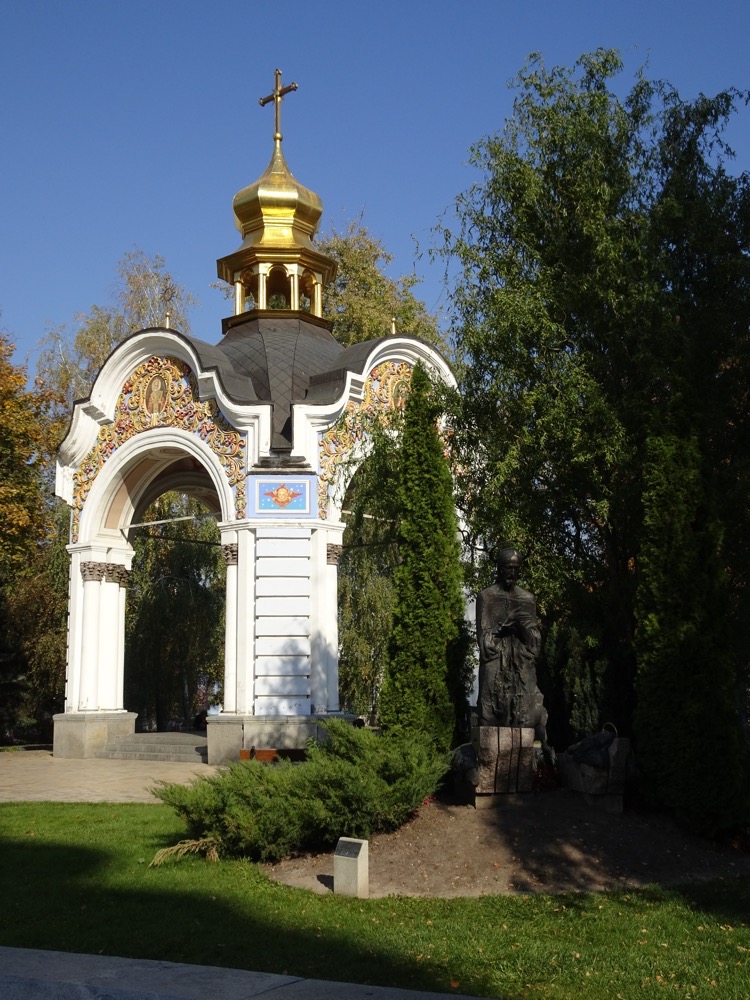
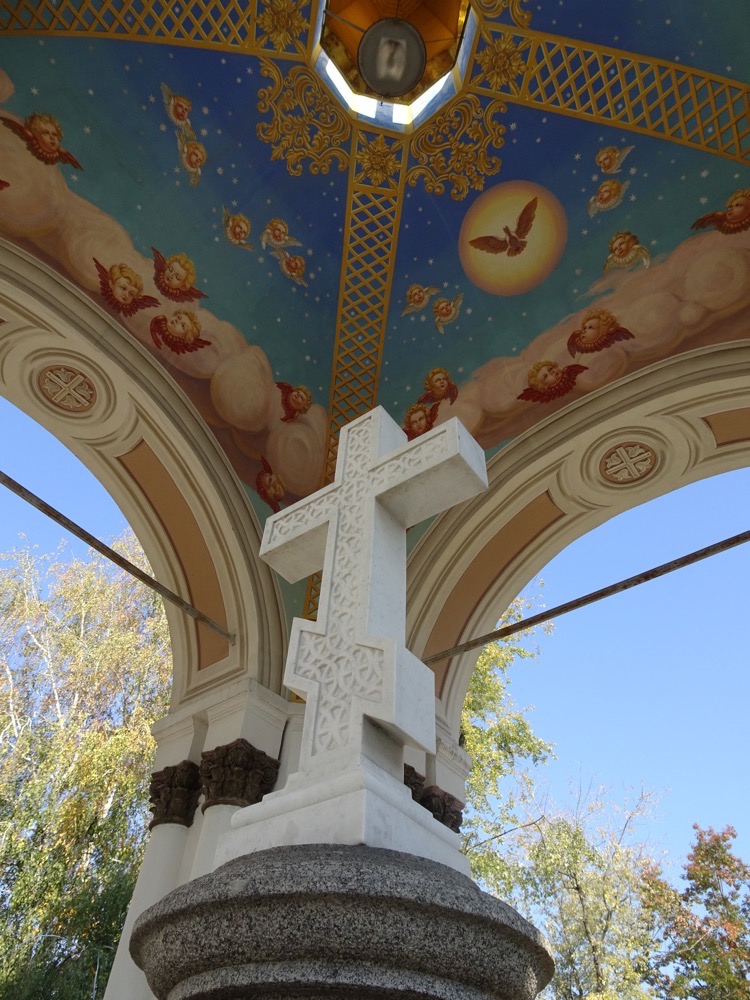
Directly outside St Michael’s Monastery is where Kiev lived through its most recent violent political upheaval. The Revolution of Dignity, as referred to as Euromaidan was a nationwide Ukrainian protest movement that lasted from November 2013 to February 2014. The historic events that took place here were precipitated from the abject rejection of the European foreign policy development vector, and the last minute refusal of the Ukranian government to sign the EU Association Agreement. The protests started peaceably enough but after ten days of peaceful protesting, the government resorted to violence and sent in Special Forces troops to Kiev’s main square Maidan Nezalezhnotsti (Independence Square) to disperse the protestors which saw many young protestors brutally beaten. The protestors took to the Monastery for shelter and the church turned into a makeshift kitchen, clothing distribution point, information and press distribution centre, and even emergency operating room. The protest turned into a longstanding civil disobedience campaign against unchecked state power, corruption and blatant human rights abuses and one hundred people died in the uprising. The ‘Heavenly Hundred’ are commemorated all over this part of the city – in particular on the street outside our hotel, the Ukraine Hotel, which was sadly used by the government as a sniper tower when dispersing the protests.
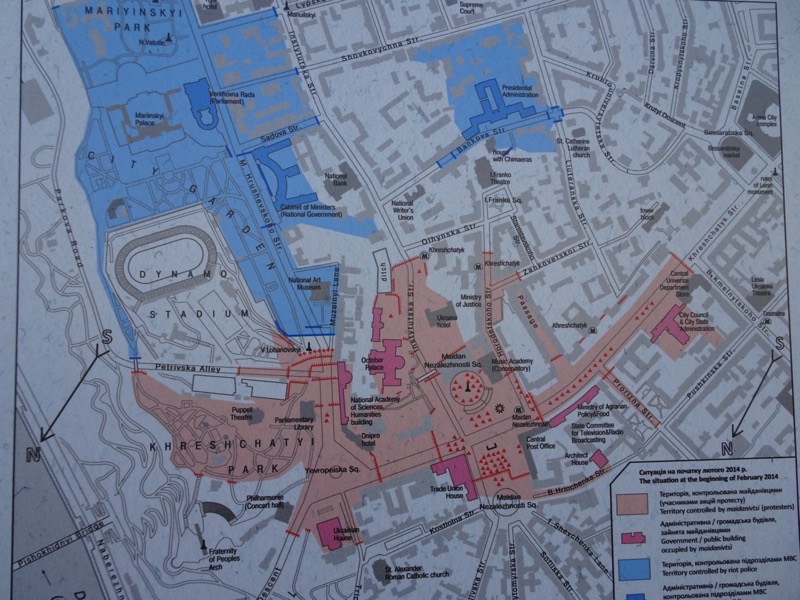 Our next point of interest was hopefully something a little less morose, St Andrew’s Church, which is a major Baroque church constructed between 1747 and 1754, It overlooks the historic Podil neighbourhood and is situation on a steep embankment called Andriyivska Hill. Currently, the church have become a major headache for local conservationists as the foundations have started to shift, causing worry that the entire building may collapse… pieces of the church’s decor have been found down the hill called St Andrew’s Descent. :/
Our next point of interest was hopefully something a little less morose, St Andrew’s Church, which is a major Baroque church constructed between 1747 and 1754, It overlooks the historic Podil neighbourhood and is situation on a steep embankment called Andriyivska Hill. Currently, the church have become a major headache for local conservationists as the foundations have started to shift, causing worry that the entire building may collapse… pieces of the church’s decor have been found down the hill called St Andrew’s Descent. :/
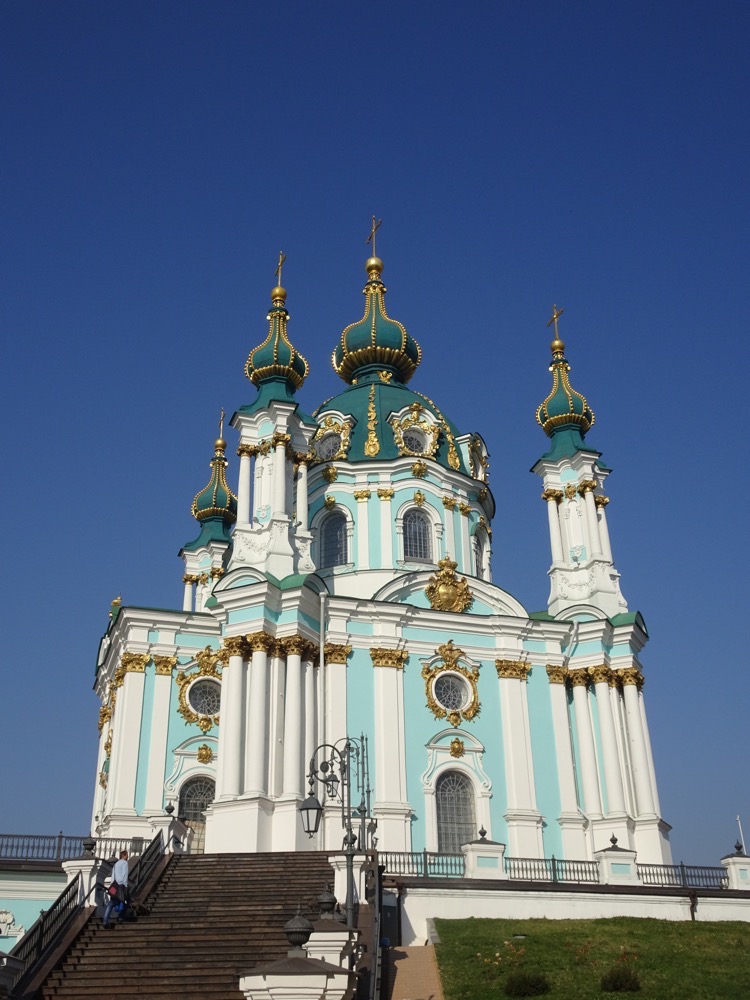
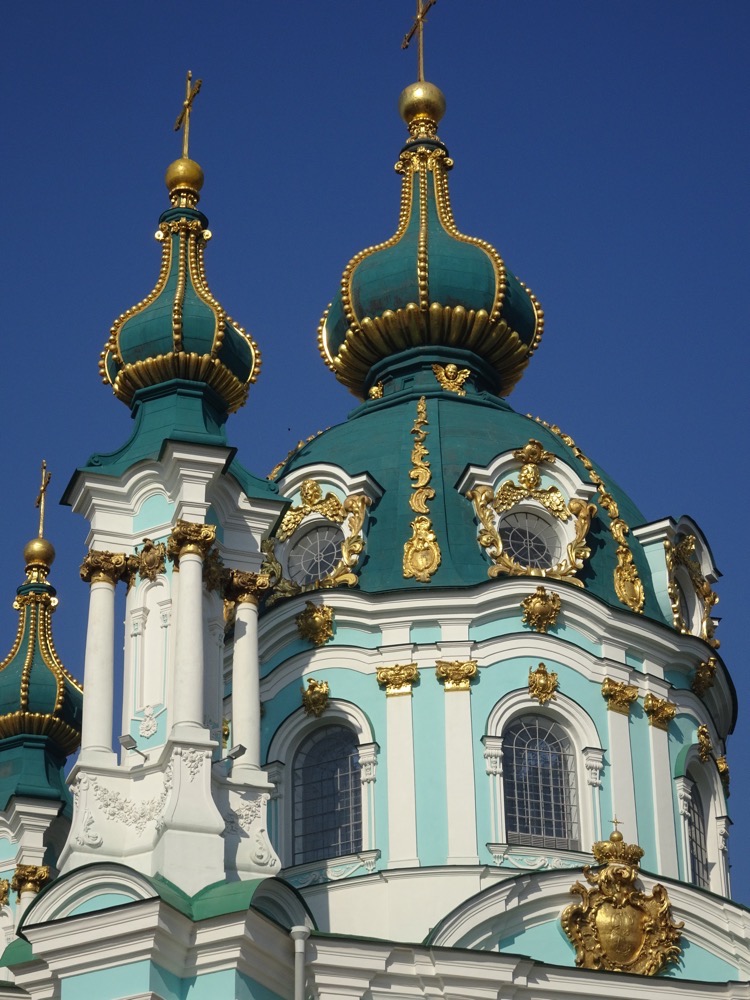 The Descent is considered ‘Kiev’s Montemarte’ and is a parade full of the work of local artists visible from the viewing platform at the base of the church.
The Descent is considered ‘Kiev’s Montemarte’ and is a parade full of the work of local artists visible from the viewing platform at the base of the church.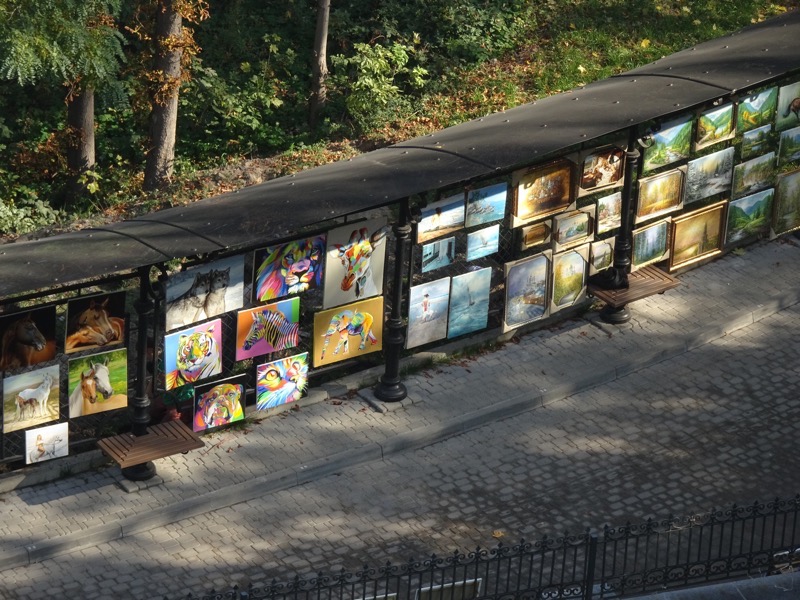 The diversity of architecture in the city is quite stunning.
The diversity of architecture in the city is quite stunning.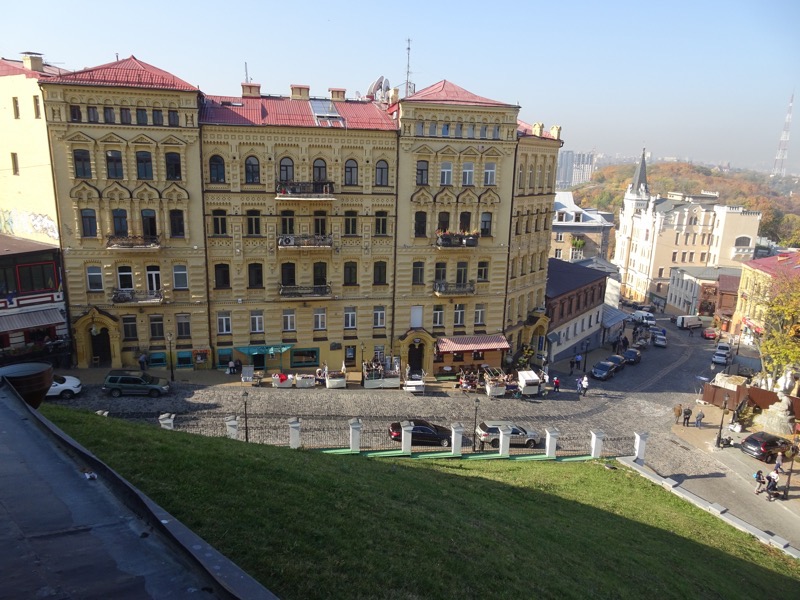
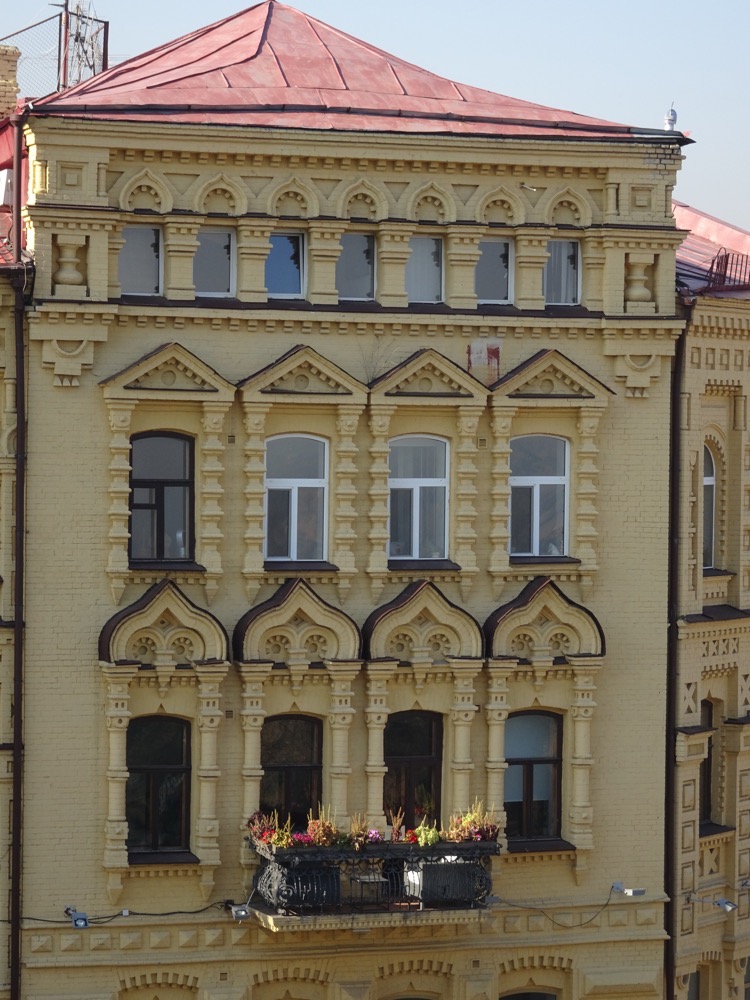
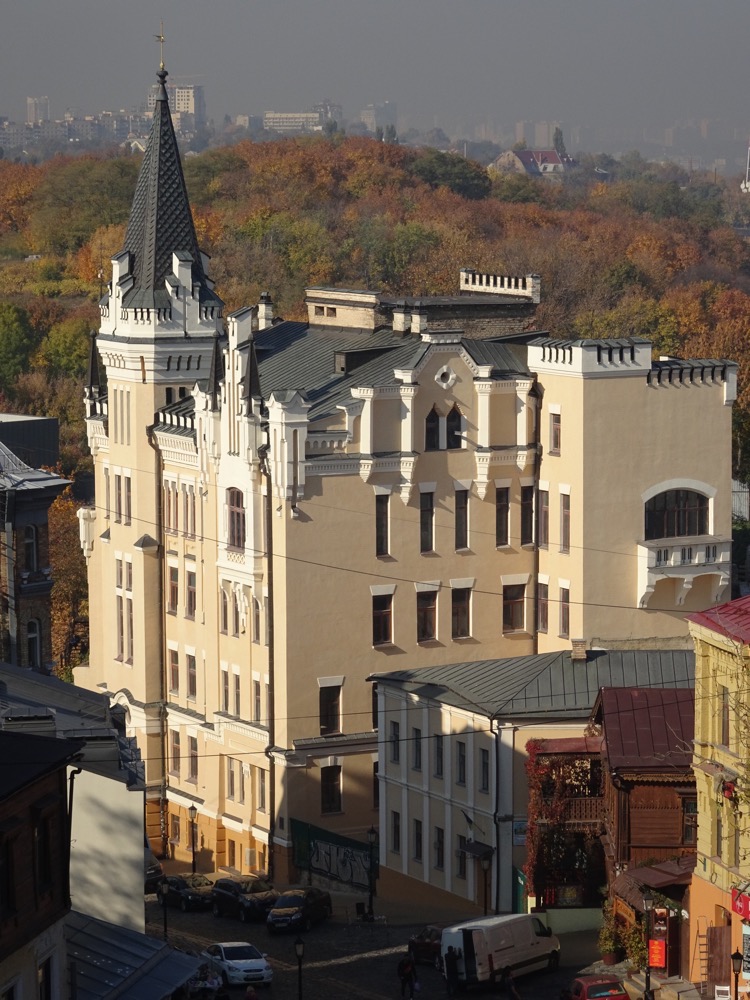
After St Andrew’s we headed to see the Theramin Fountain, which is one of seven iron fountains manufactured in the factory Alexei Theremin, in the pre-revolutionary era. Theremin had been commissioned to build several fountains for the city and was known for being an abusive and foul-mouthed boss. 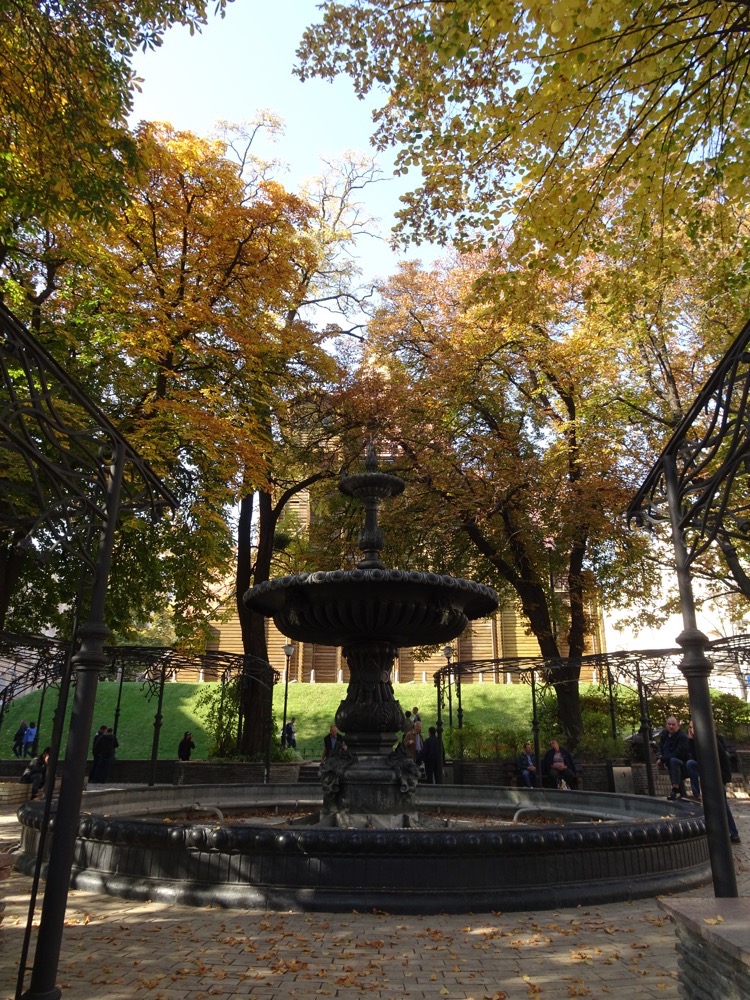
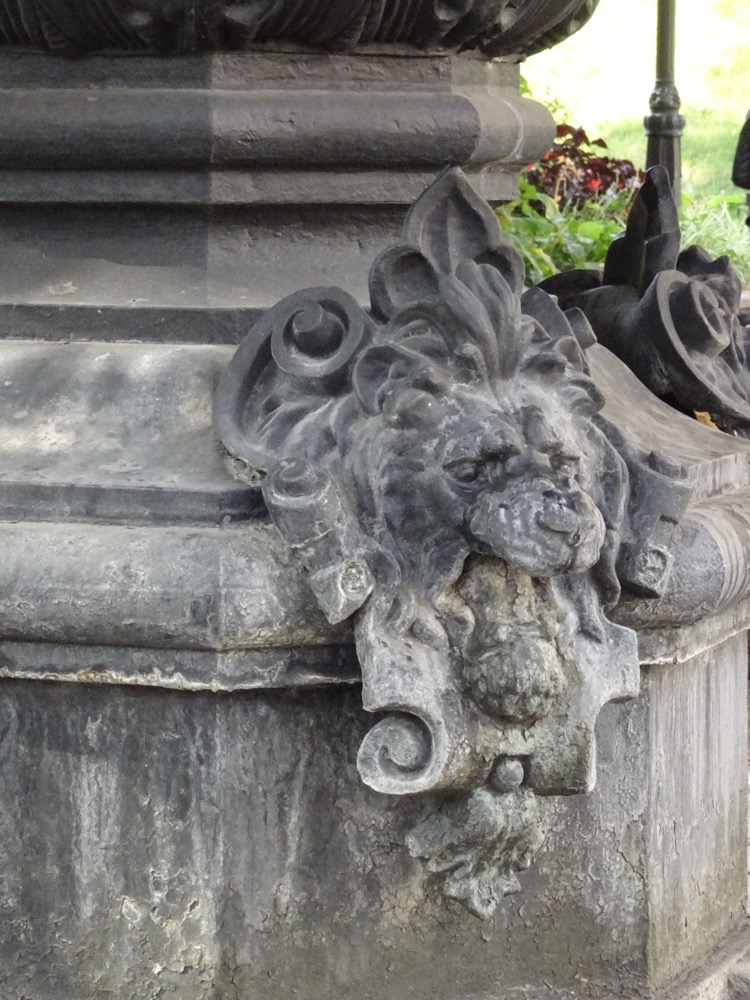 This fountain, which ended up bearing his name was the final fountain in the commission and unfortunately for Alexei, he left town a few days before it was completed and placed in situ. His workers, who were apparently all fed up with his abuse replaced several lions heads that were intended for the fountain with a representation of Alexei’s face – spewing water forth like the vitriol he spewed at his worker. When he came back and saw his likeness on the fountain, he was apparently none too impressed and attempted to buy back the fountain from the commissioning authority, but they were having none of it and so it remained.
This fountain, which ended up bearing his name was the final fountain in the commission and unfortunately for Alexei, he left town a few days before it was completed and placed in situ. His workers, who were apparently all fed up with his abuse replaced several lions heads that were intended for the fountain with a representation of Alexei’s face – spewing water forth like the vitriol he spewed at his worker. When he came back and saw his likeness on the fountain, he was apparently none too impressed and attempted to buy back the fountain from the commissioning authority, but they were having none of it and so it remained.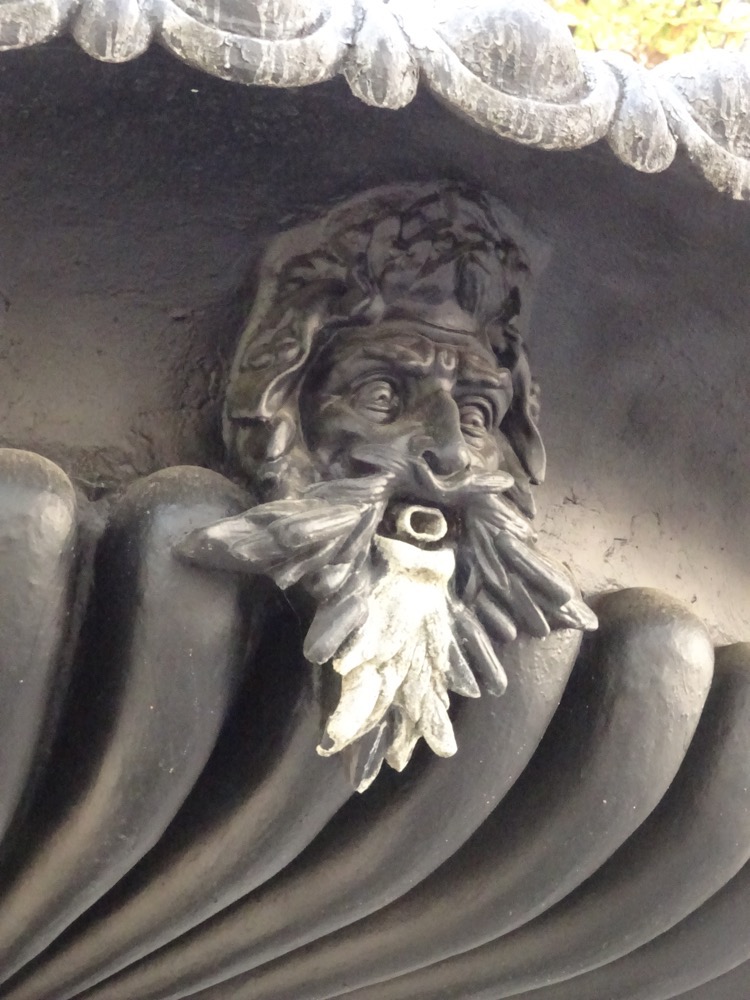 Nearby a piece of art designed to draw attention to the world’s plastic plight. There’s a cat thing in this city – not sure why…
Nearby a piece of art designed to draw attention to the world’s plastic plight. There’s a cat thing in this city – not sure why…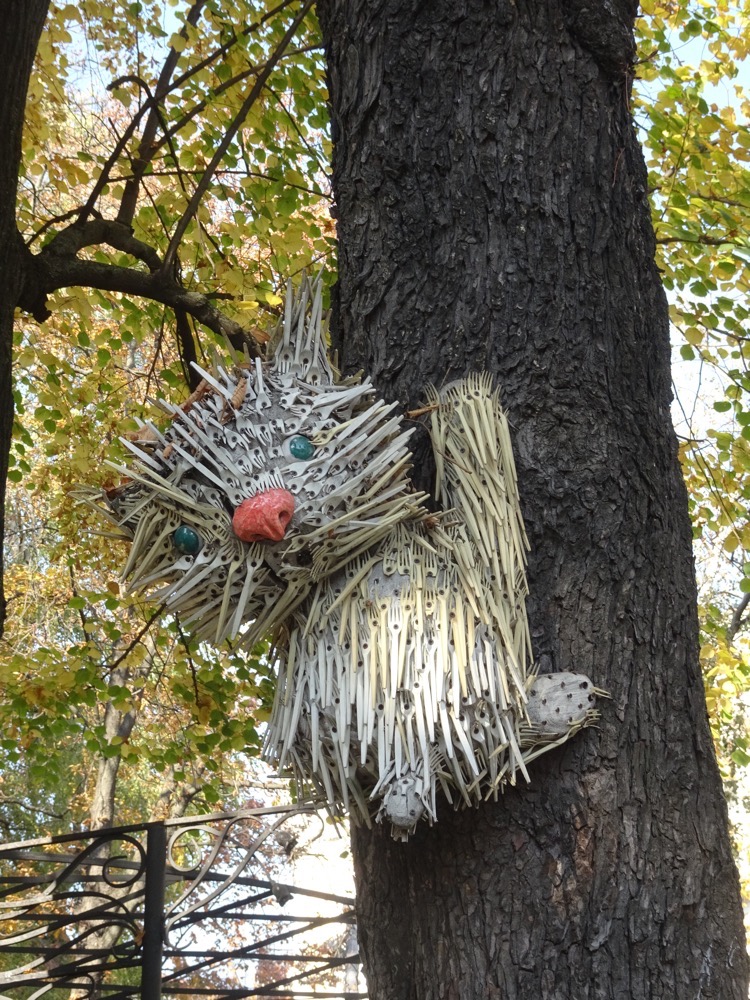 Just around the corner from the fountain is the Golden Gates of Kyiv which was where the main fortification gates of the city were located in the 11th century. It was named in imitation of the Golden Gate of Constantinople (not Istanbul!) but the structure was destroyed in the middle ages, so there were only ruins on this site and no one knew what they original gates looked like. In 1982, the Soviet government decided they should be rebuilt and this is what was created even though many different reconstructions were proposed?! So the original medieval gates probably looked nothing like this at all…
Just around the corner from the fountain is the Golden Gates of Kyiv which was where the main fortification gates of the city were located in the 11th century. It was named in imitation of the Golden Gate of Constantinople (not Istanbul!) but the structure was destroyed in the middle ages, so there were only ruins on this site and no one knew what they original gates looked like. In 1982, the Soviet government decided they should be rebuilt and this is what was created even though many different reconstructions were proposed?! So the original medieval gates probably looked nothing like this at all…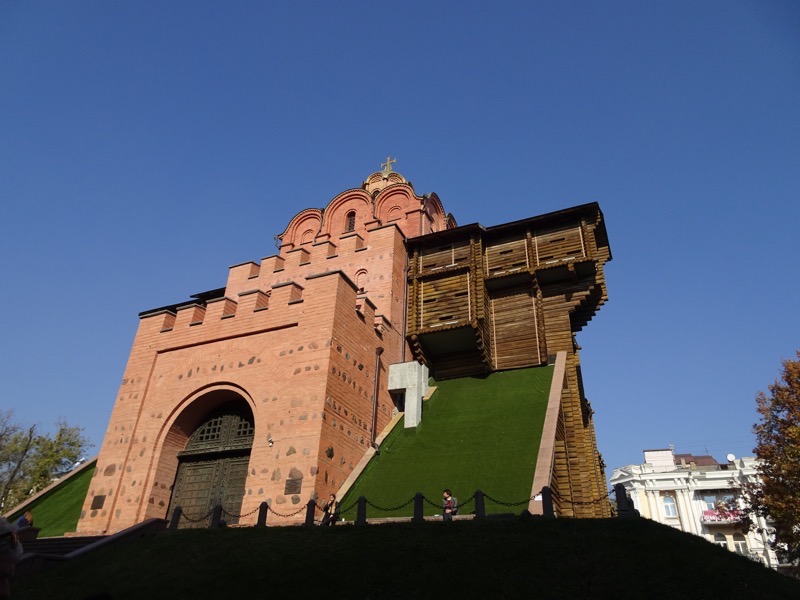
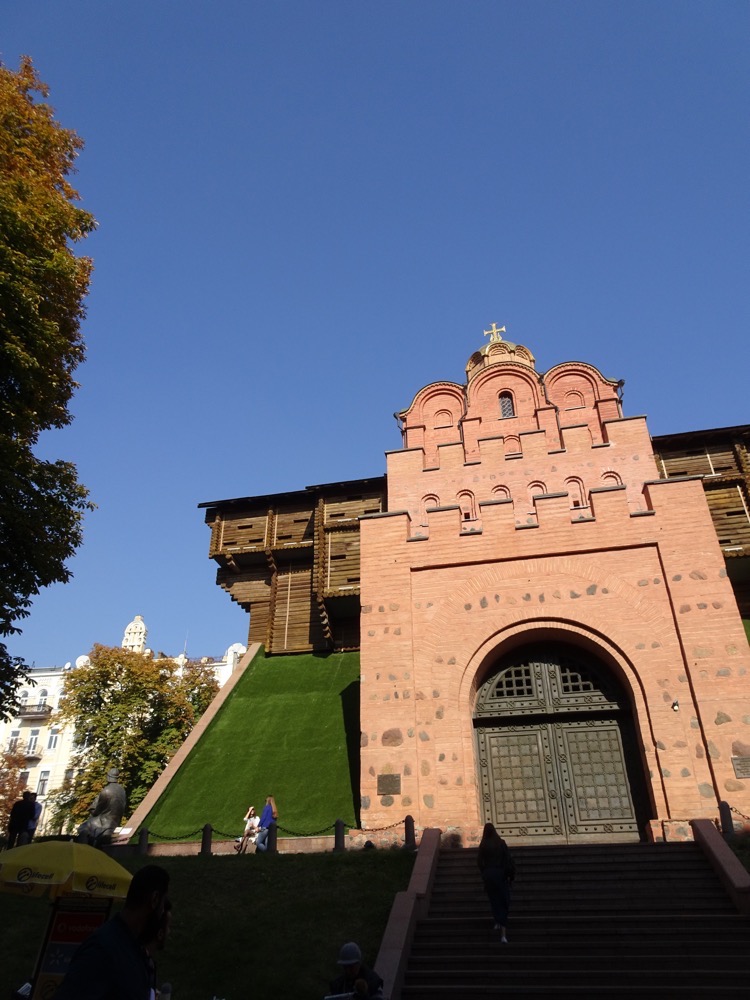
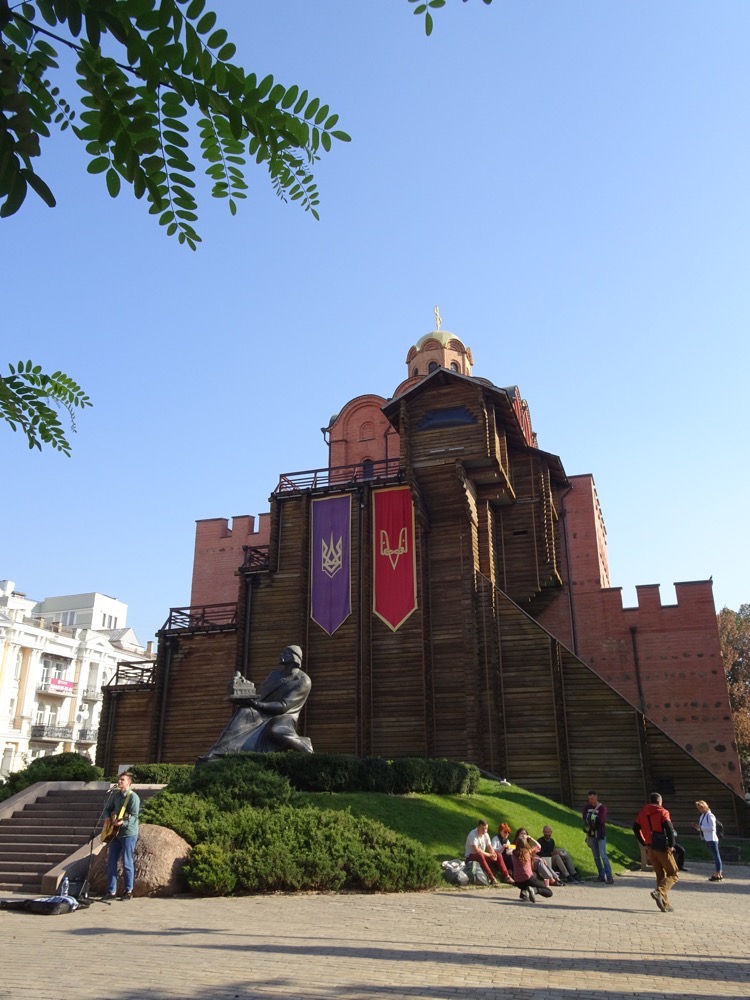
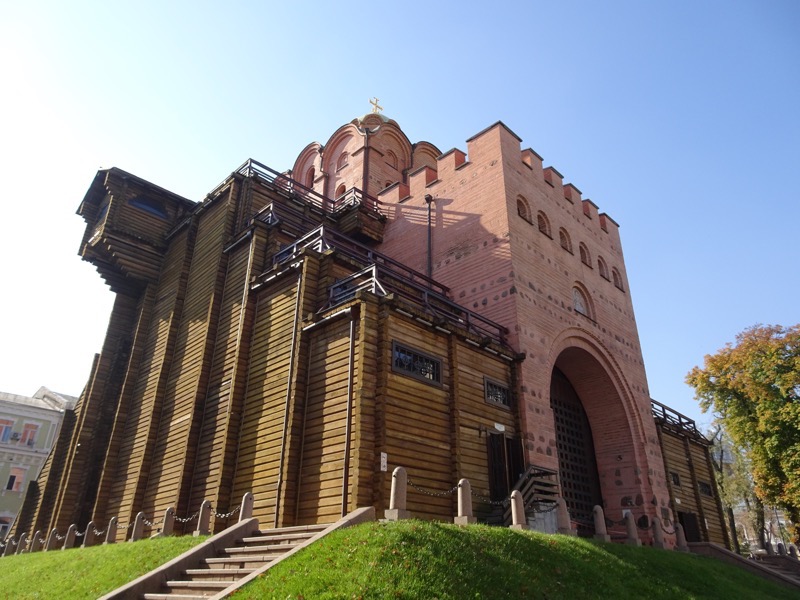 Nearby is a statue of a cat named Pantyusha who lived in the kitchen of a local restaurant. He was a well-mannered one and was loved by the cooks, waiters and diners alike. At some point, poor Pantyusha died in a kitchen fire, and not long after that some of the restaurant’s regular patrons donated a statue to a nearby park. People visiting the statue stroke Pantyusha’s head and tail and whisper wishes into his ears.
Nearby is a statue of a cat named Pantyusha who lived in the kitchen of a local restaurant. He was a well-mannered one and was loved by the cooks, waiters and diners alike. At some point, poor Pantyusha died in a kitchen fire, and not long after that some of the restaurant’s regular patrons donated a statue to a nearby park. People visiting the statue stroke Pantyusha’s head and tail and whisper wishes into his ears.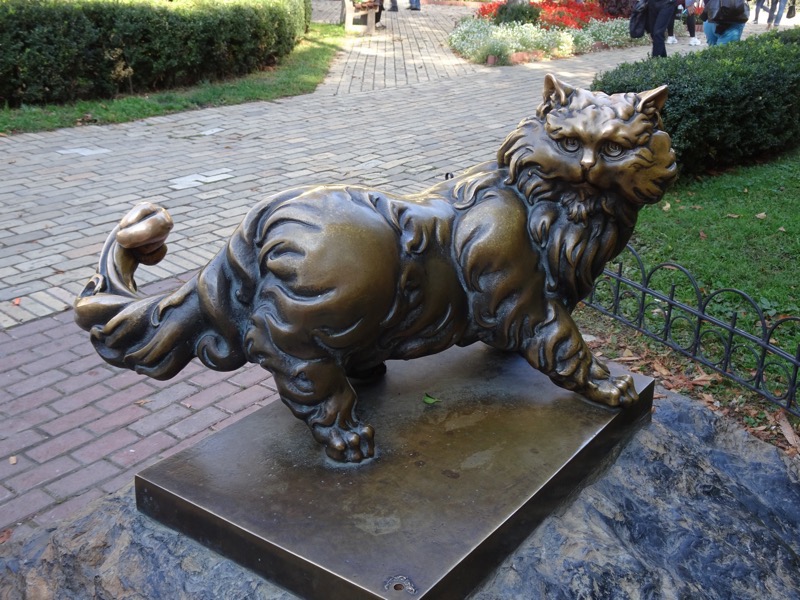 Across the street from the Golden Gate is this marvellously elaborate building that was called the Renaissance Kiev Hotel, built by a millionaire who went bust and had made the exteriors of the building so elaborate that he didn’t have money to fit it out properly. It was eventually bought by someone else who finished it and it became a popular dining place during the Soviet era, where buying a table (bribing the maitre d’hotel to give you someone else’s table) would cost you as much as your entire meal. More recently, it is seeing its own history repeating itself as it was purchased by a new owner was were going to restore the hotel to its former glory, but apparently hasn’t had the funds to complete the plan, so it’s been boarded up for about five years now.
Across the street from the Golden Gate is this marvellously elaborate building that was called the Renaissance Kiev Hotel, built by a millionaire who went bust and had made the exteriors of the building so elaborate that he didn’t have money to fit it out properly. It was eventually bought by someone else who finished it and it became a popular dining place during the Soviet era, where buying a table (bribing the maitre d’hotel to give you someone else’s table) would cost you as much as your entire meal. More recently, it is seeing its own history repeating itself as it was purchased by a new owner was were going to restore the hotel to its former glory, but apparently hasn’t had the funds to complete the plan, so it’s been boarded up for about five years now.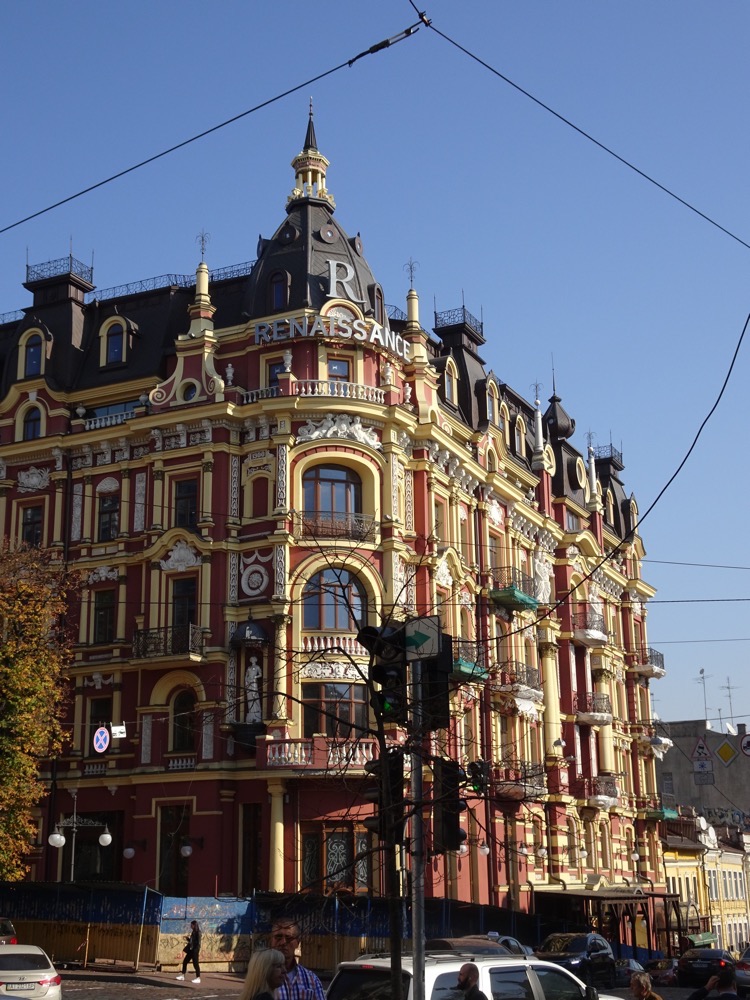 After wandering around the Golden Gate area, we made our way to the Kiev metro so we could jump a train to get to the Kiev Pechersk Lavra Monastery via the ‘deepest Metro Station in the World’– Arsenalna station which is 105.5 meters deep. First thing I noticed is how fast the escalators are moving in these stations – if you weren’t paying attention, I could imagine plenty it’d be pretty easy to be put your arse by them.
After wandering around the Golden Gate area, we made our way to the Kiev metro so we could jump a train to get to the Kiev Pechersk Lavra Monastery via the ‘deepest Metro Station in the World’– Arsenalna station which is 105.5 meters deep. First thing I noticed is how fast the escalators are moving in these stations – if you weren’t paying attention, I could imagine plenty it’d be pretty easy to be put your arse by them. 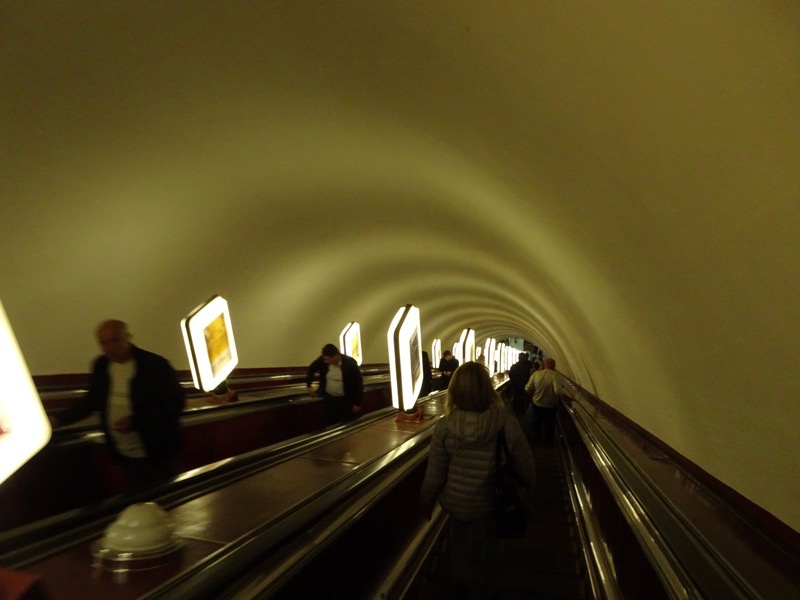 The decor is a little austere – very much in the Soviet-style not at all like the elaborate Art Nouveau and Art Deco metros in Moscow and St Petersburg, where some of the metro stations are also pretty deep – but this one takes the cake. It took a full three and a half minutes standing on the escalator to get to the surface at our destination, even with the fastest escalators I have ever seen.
The decor is a little austere – very much in the Soviet-style not at all like the elaborate Art Nouveau and Art Deco metros in Moscow and St Petersburg, where some of the metro stations are also pretty deep – but this one takes the cake. It took a full three and a half minutes standing on the escalator to get to the surface at our destination, even with the fastest escalators I have ever seen.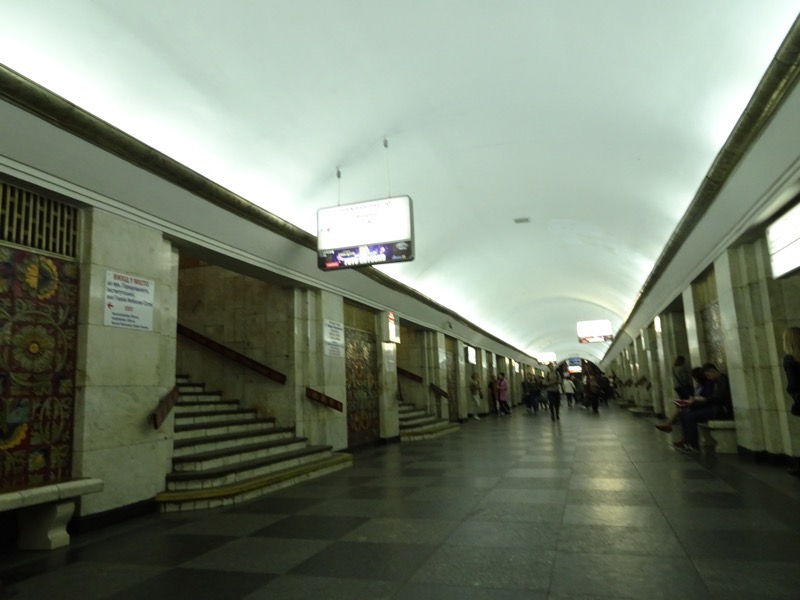
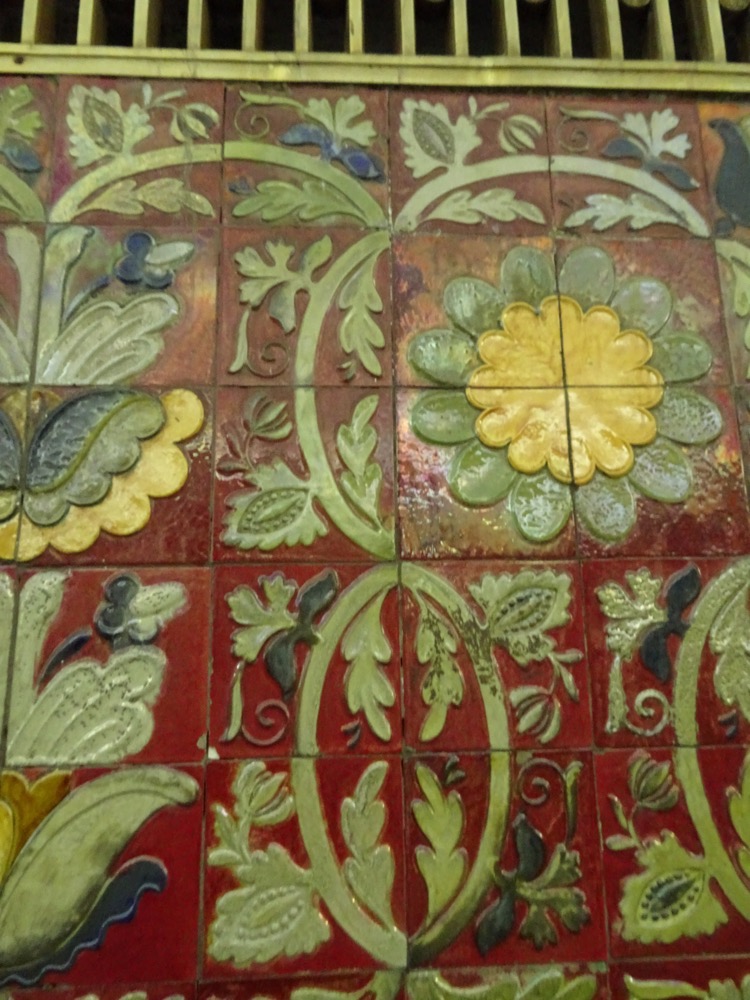
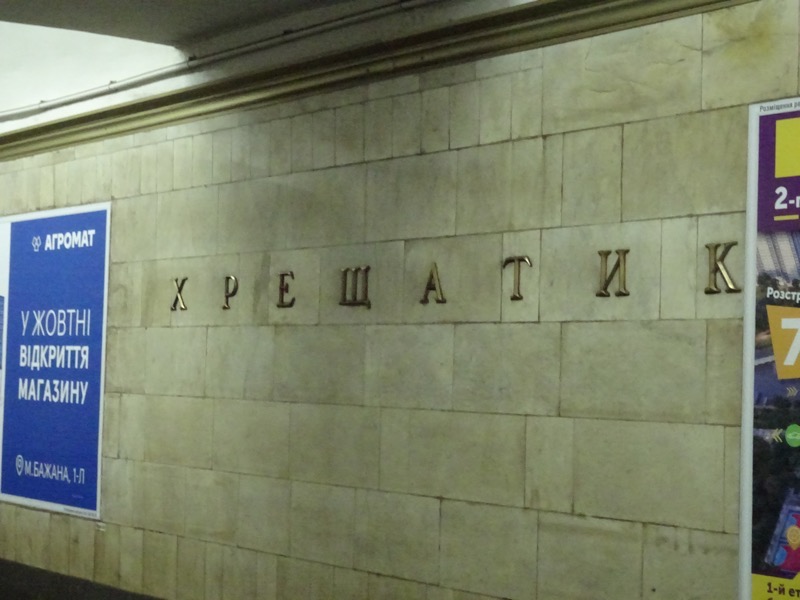
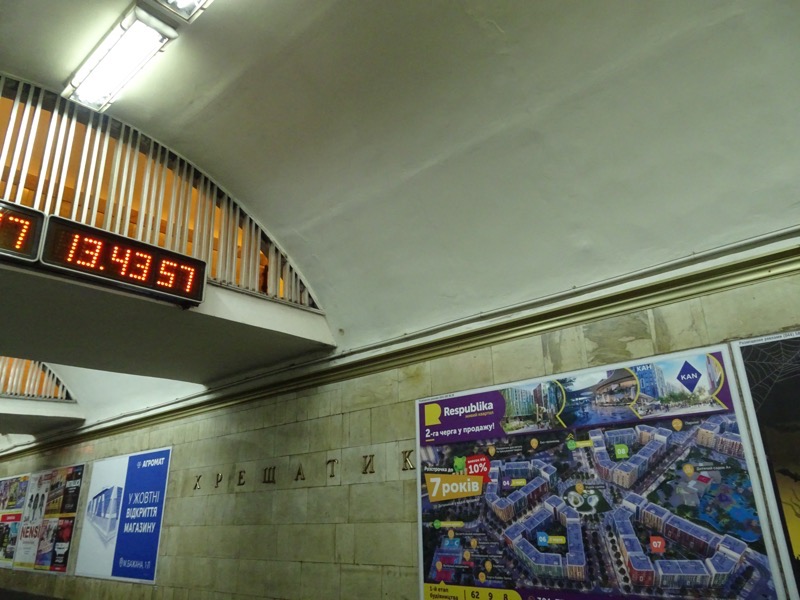
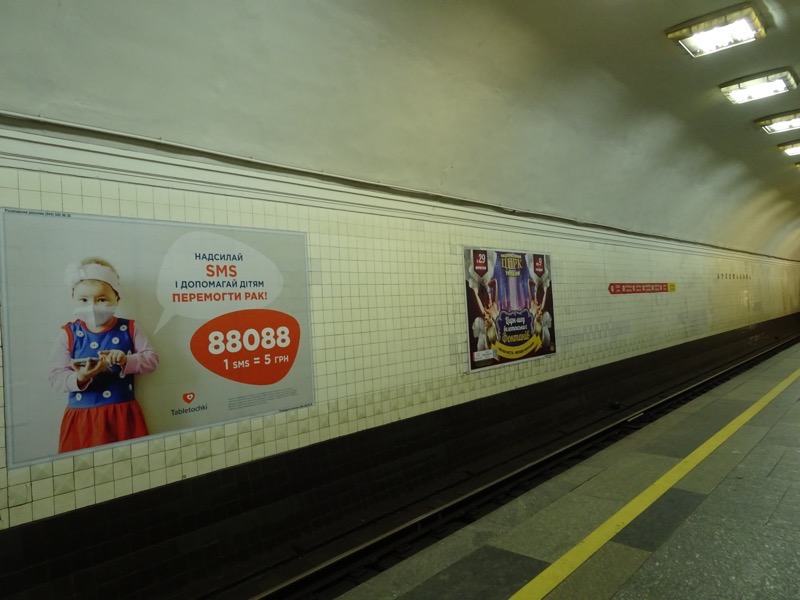
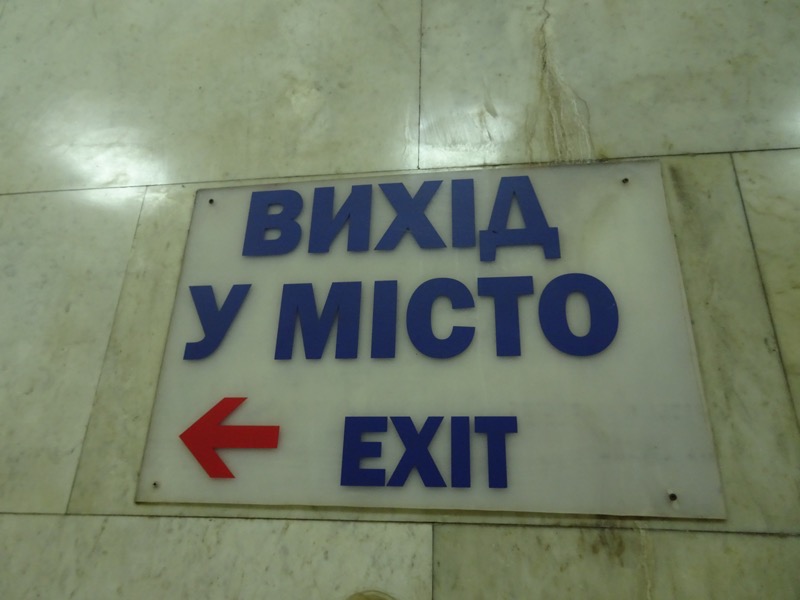 At the other end of the Metro, we took a walk along the banks of the Dnieper River towards the Lavra and got a closer look at some of the landmarks we had already briefly past.
At the other end of the Metro, we took a walk along the banks of the Dnieper River towards the Lavra and got a closer look at some of the landmarks we had already briefly past. 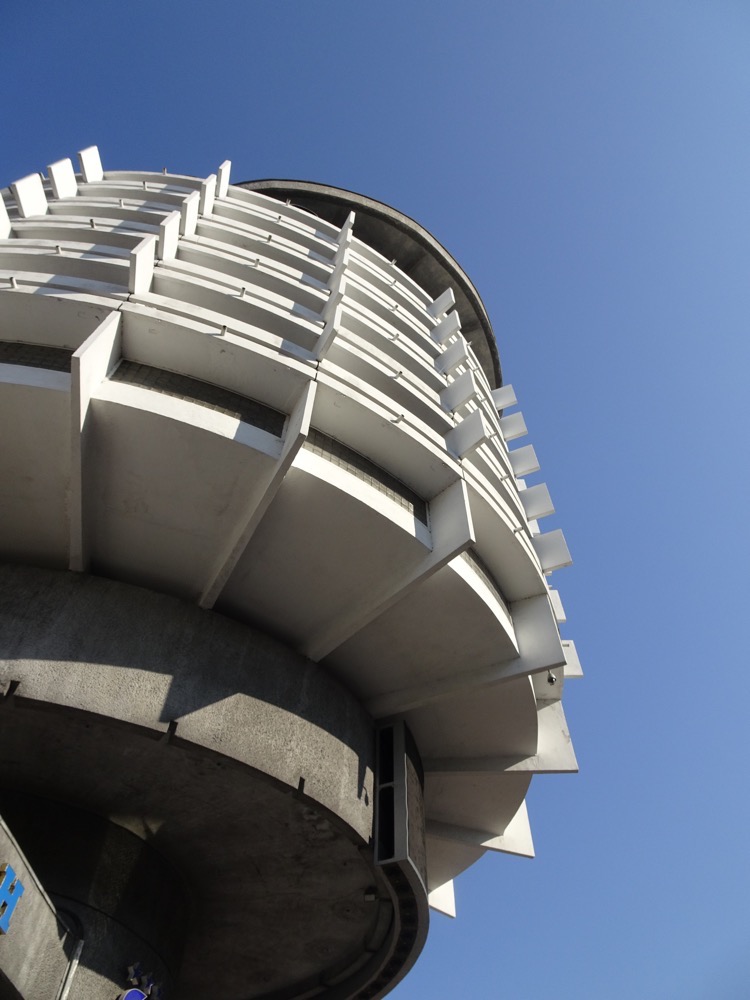 I loved this statue… it rotated which allowed you to turn it however you wanted, which meant the light was always going to be able to be on the best side for a photo.
I loved this statue… it rotated which allowed you to turn it however you wanted, which meant the light was always going to be able to be on the best side for a photo.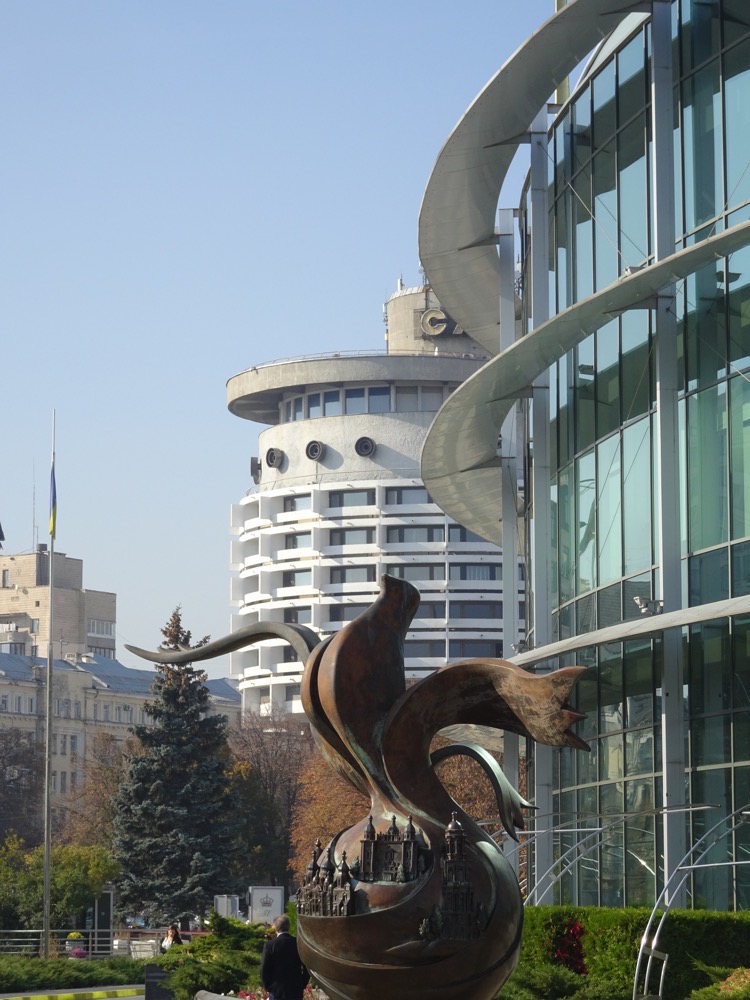 On it are represented many of the famous cathedrals, churches and monasteries of Kiev.
On it are represented many of the famous cathedrals, churches and monasteries of Kiev.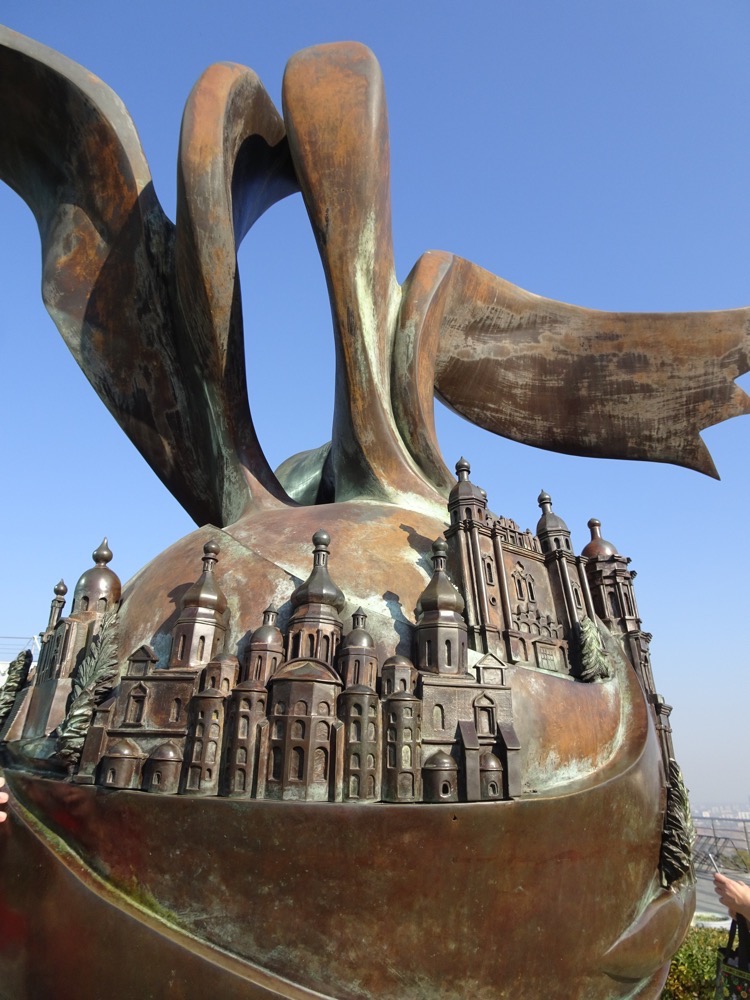
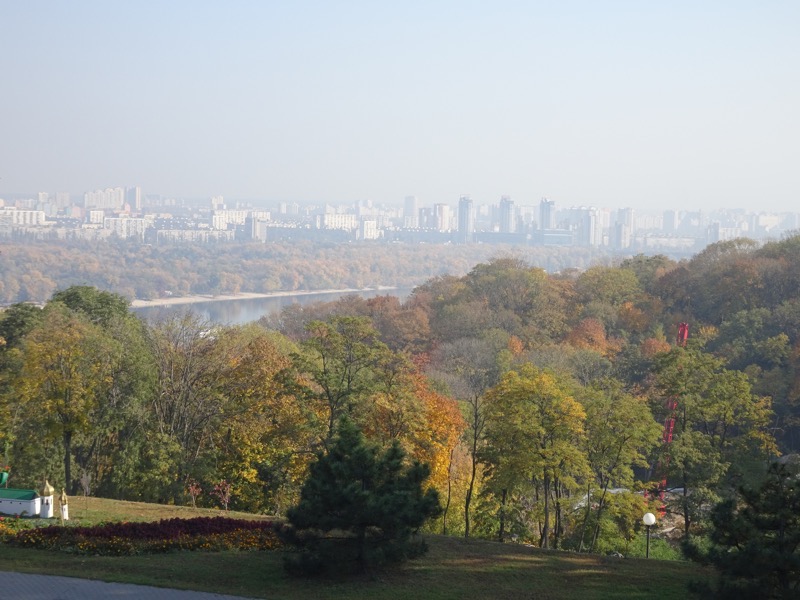 ‘The city is a little foggy and misty’, said our guide whose name I can’t pronounce and definitely couldn’t spell… foggy? poluted? potayto? potarto? It looked like this at 10am and was still ‘foggy and misty’ at 4pm.
‘The city is a little foggy and misty’, said our guide whose name I can’t pronounce and definitely couldn’t spell… foggy? poluted? potayto? potarto? It looked like this at 10am and was still ‘foggy and misty’ at 4pm.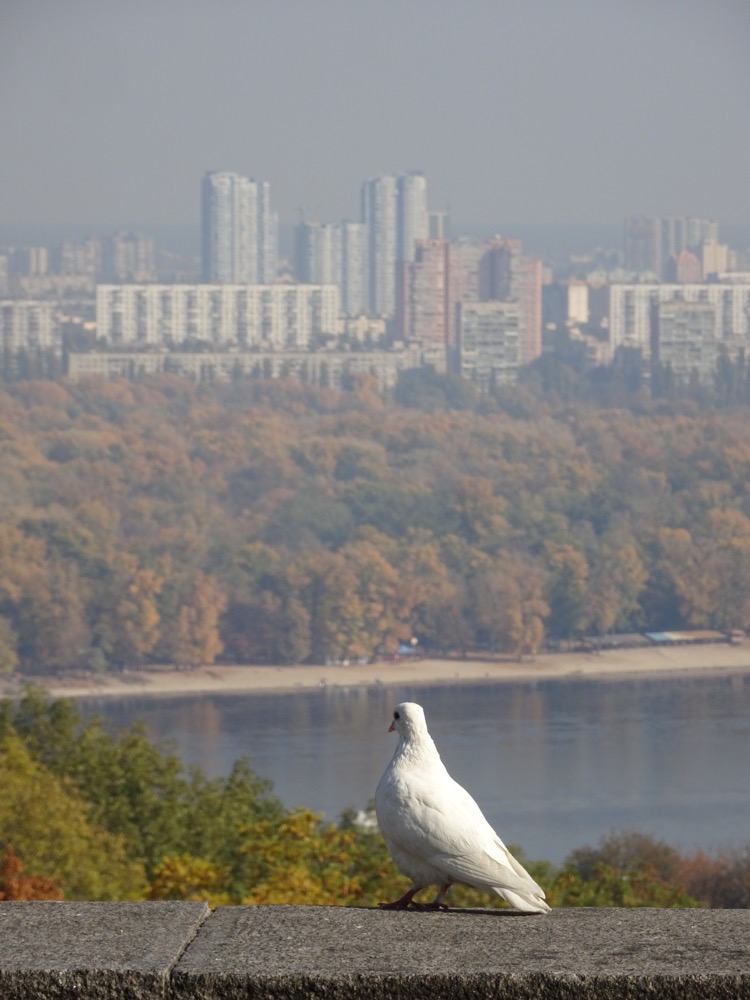
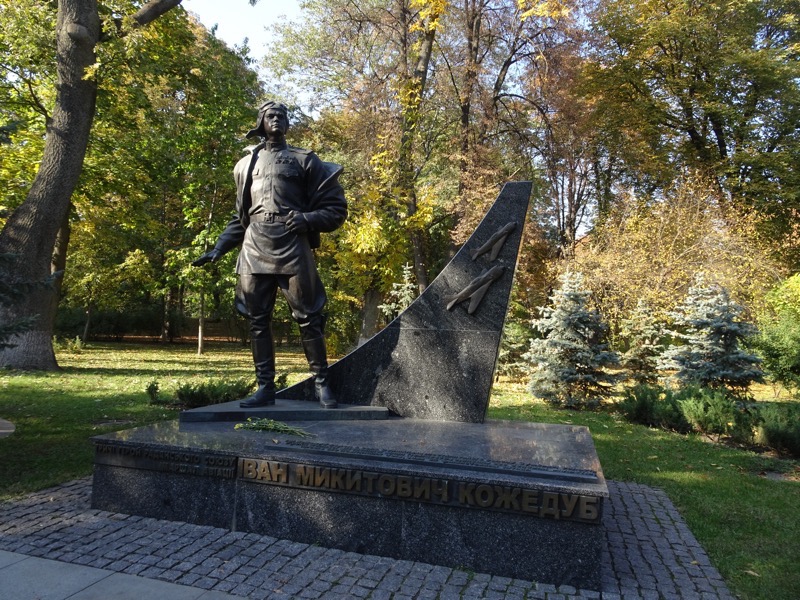 The Gate Church of the Trinity is a historic church of the ancient cave monastery of Pechersk Lavra and was originally being built in the Kievan Rus style, but is now decorated in a Ukrainian Baroque style, because like everything else in this city it appears to have been destroyed and reconstructed many times.
The Gate Church of the Trinity is a historic church of the ancient cave monastery of Pechersk Lavra and was originally being built in the Kievan Rus style, but is now decorated in a Ukrainian Baroque style, because like everything else in this city it appears to have been destroyed and reconstructed many times.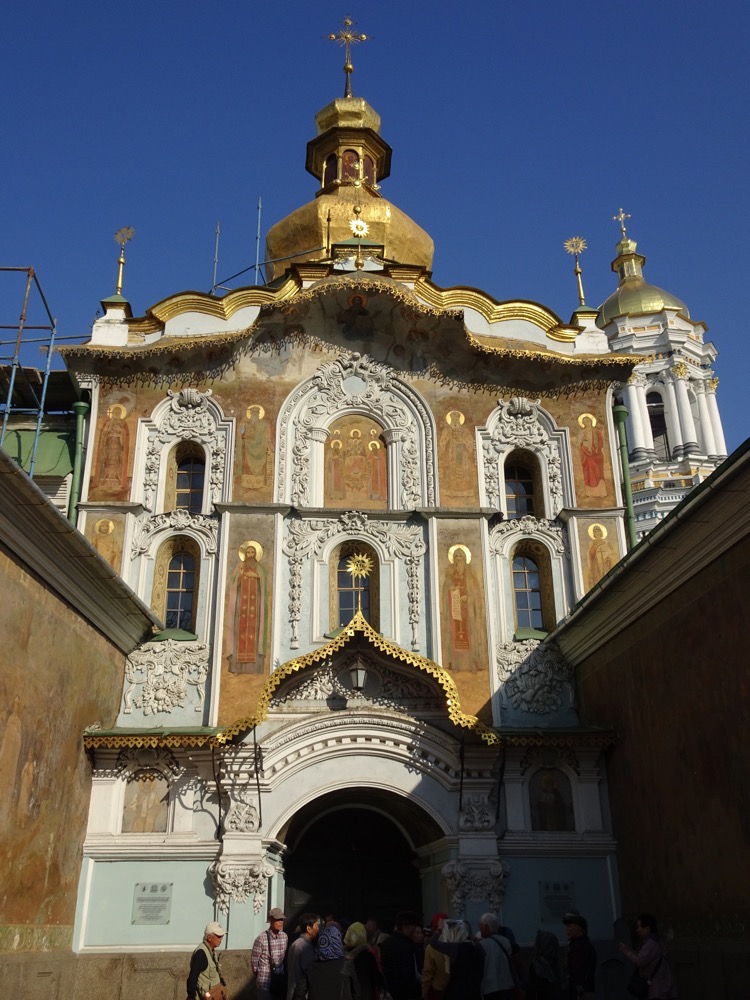 The massive Pechersk Lavra monastery complex covers nearly 30 hectares on the hillsides of Kiev overlooking the Dnieper River. Since its foundation as the cave monastery in 1051, the Lavra has been a the centre of Eastern Orthodox Christianity in Eastern Europe (so, kinda like the Eastern Orthodox, Mecca) and attracts many pilgrims each year who come to pray at the relics of saints that are preserved in the caves. It is also a UNESCO World Heritage Site, and built on a massive hillside, so a bugger of a walk to get down to the caves and back up again.
The massive Pechersk Lavra monastery complex covers nearly 30 hectares on the hillsides of Kiev overlooking the Dnieper River. Since its foundation as the cave monastery in 1051, the Lavra has been a the centre of Eastern Orthodox Christianity in Eastern Europe (so, kinda like the Eastern Orthodox, Mecca) and attracts many pilgrims each year who come to pray at the relics of saints that are preserved in the caves. It is also a UNESCO World Heritage Site, and built on a massive hillside, so a bugger of a walk to get down to the caves and back up again.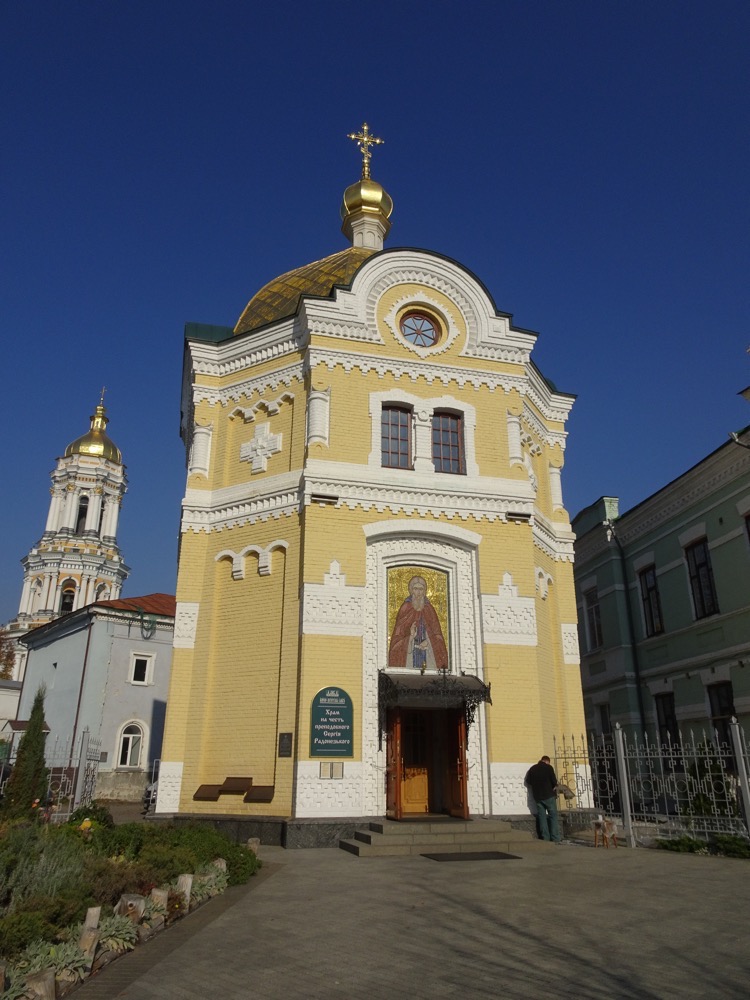
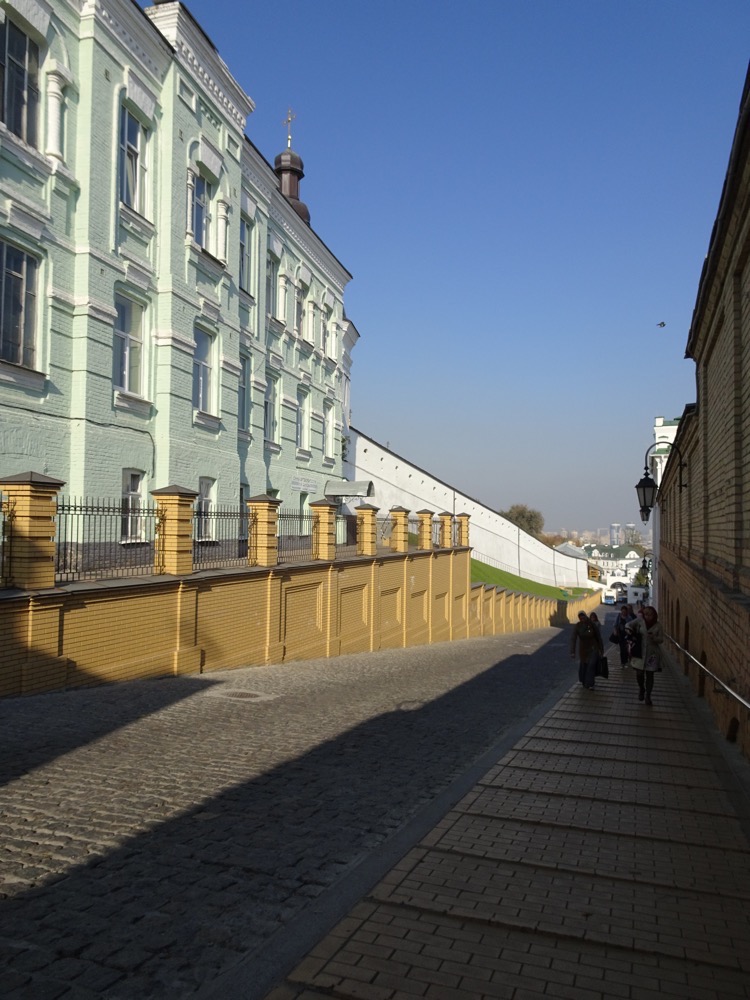 The caves are built into the hillside and are touted as being ‘catacombs’. But if you have ever seen any catacombs in Paris or Rome or somewhere, this place is completely different – it is a series of small paved and stuccoed tunnels connecting some rooms where the relics of saints have been preserved.
The caves are built into the hillside and are touted as being ‘catacombs’. But if you have ever seen any catacombs in Paris or Rome or somewhere, this place is completely different – it is a series of small paved and stuccoed tunnels connecting some rooms where the relics of saints have been preserved.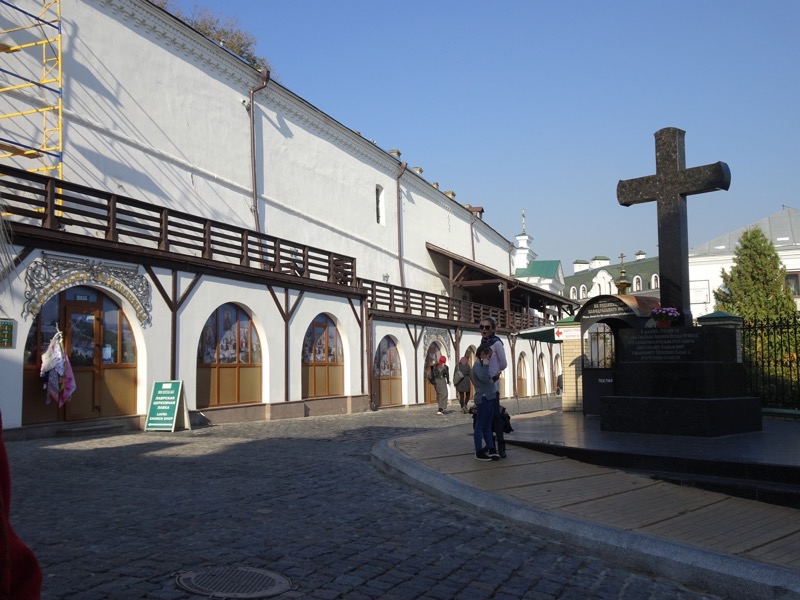 No photos allowed in the caves at Lavra, just plenty of noisily praying pilgrims. It is said that every Eastern Orthodox adherent should come to the caves of Lavra at least once in their lifetime. The dehydrated preserved relics of the ‘saints” reminded me of somewhere else I had seen a catacomb-like this – but I would have to go back through my travel photos to figure out where that was… St Petersberg maybe? Not sure.
No photos allowed in the caves at Lavra, just plenty of noisily praying pilgrims. It is said that every Eastern Orthodox adherent should come to the caves of Lavra at least once in their lifetime. The dehydrated preserved relics of the ‘saints” reminded me of somewhere else I had seen a catacomb-like this – but I would have to go back through my travel photos to figure out where that was… St Petersberg maybe? Not sure.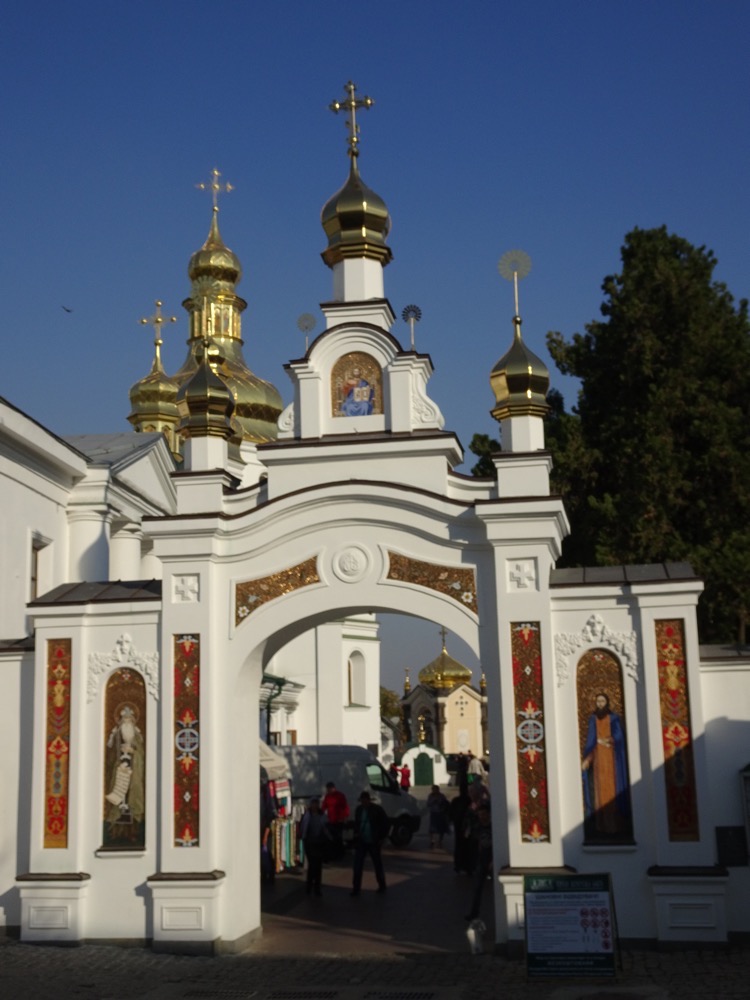
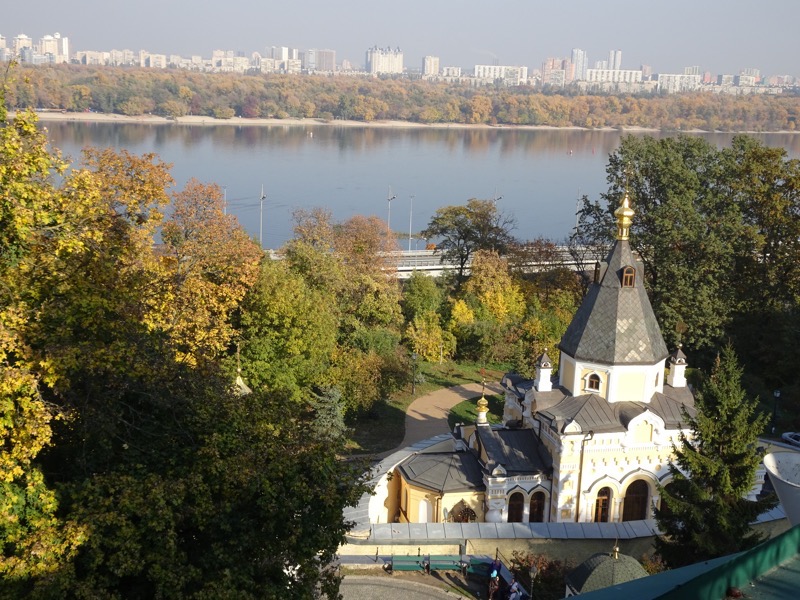
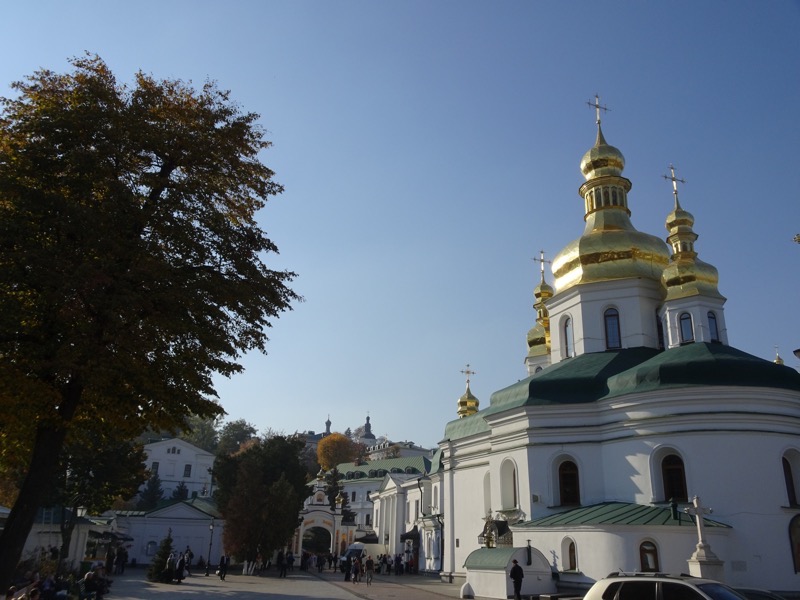
After our tour of the city, we went back to the hotel to rest my stupid back. I had made it through the itinerary without piking until we got to the last section of the Lavra Monastery and I looked at the hill and went, that’s a big ‘nope’. Seeing the Ukraine Hotel again after hearing its involvement in the recent uprisings – it looked different to me now, knowing that it had been used by the Soviet authorities as a sniper tower to quell the protesting population, made it less impressive and somewhat menacing. :/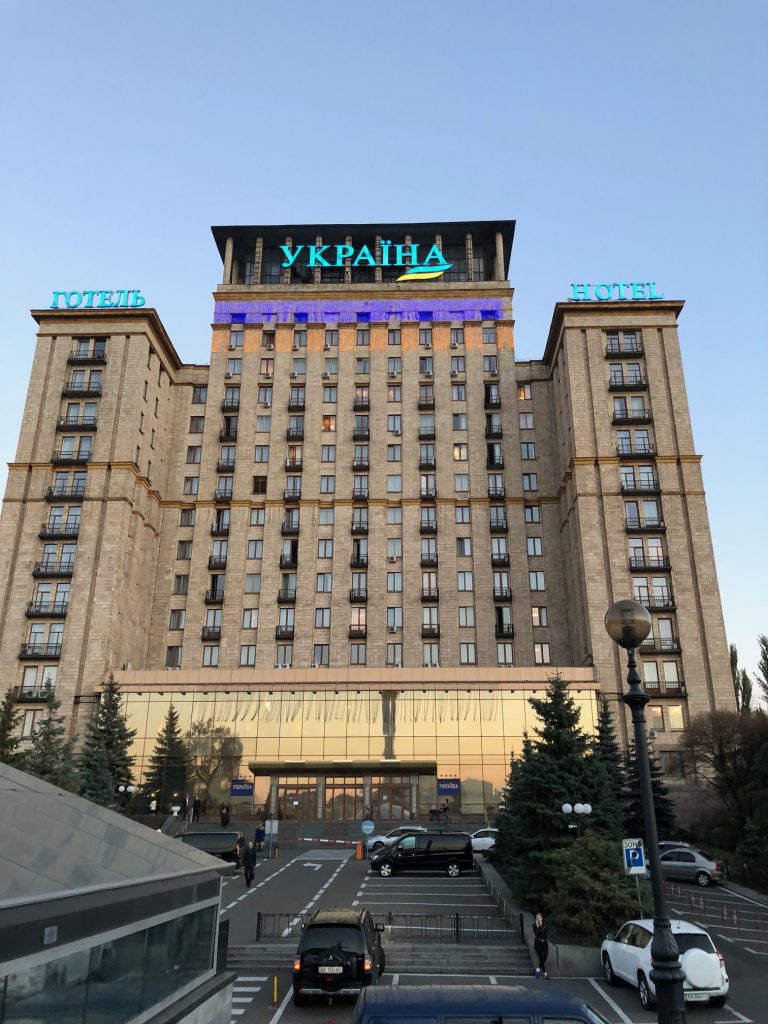 Another statue of the three founding brothers and their sister.
Another statue of the three founding brothers and their sister. 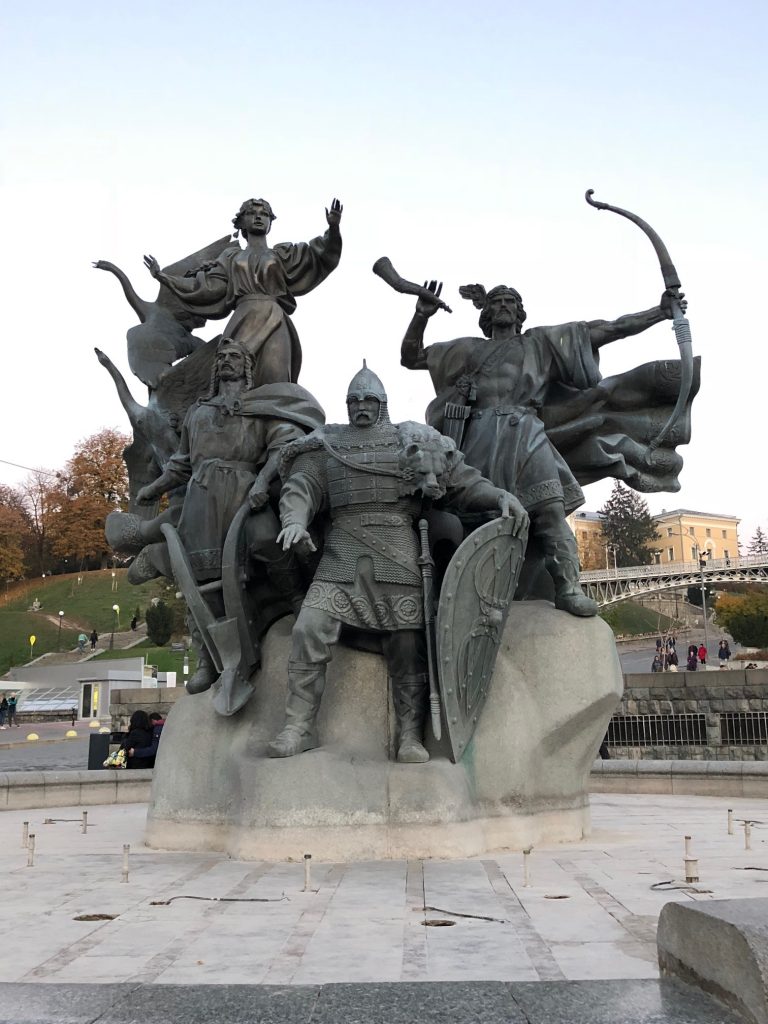 The main monument in Independence Square is the 62m victory Column of Independence. The figure atop the column is Berehynia, a national goddess or earth mother type. She holds a guelder rose branch which is the symbol of life, love and motherland. Some people love it, some people hate it apparently.
The main monument in Independence Square is the 62m victory Column of Independence. The figure atop the column is Berehynia, a national goddess or earth mother type. She holds a guelder rose branch which is the symbol of life, love and motherland. Some people love it, some people hate it apparently.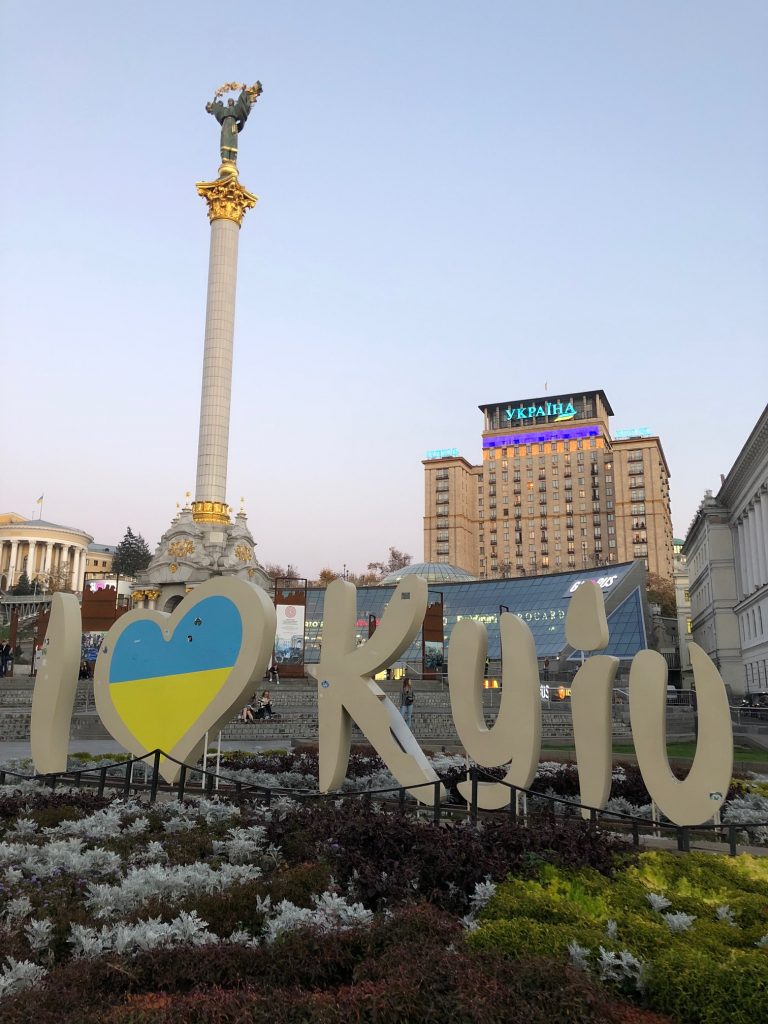 We had asked our guide earlier where to go for dinner and she recommended a restaurant called ‘Chicken Kyiv’… really – that is what the restaurant was called. We were seated and presented with menus that looked as thick as a bible!
We had asked our guide earlier where to go for dinner and she recommended a restaurant called ‘Chicken Kyiv’… really – that is what the restaurant was called. We were seated and presented with menus that looked as thick as a bible!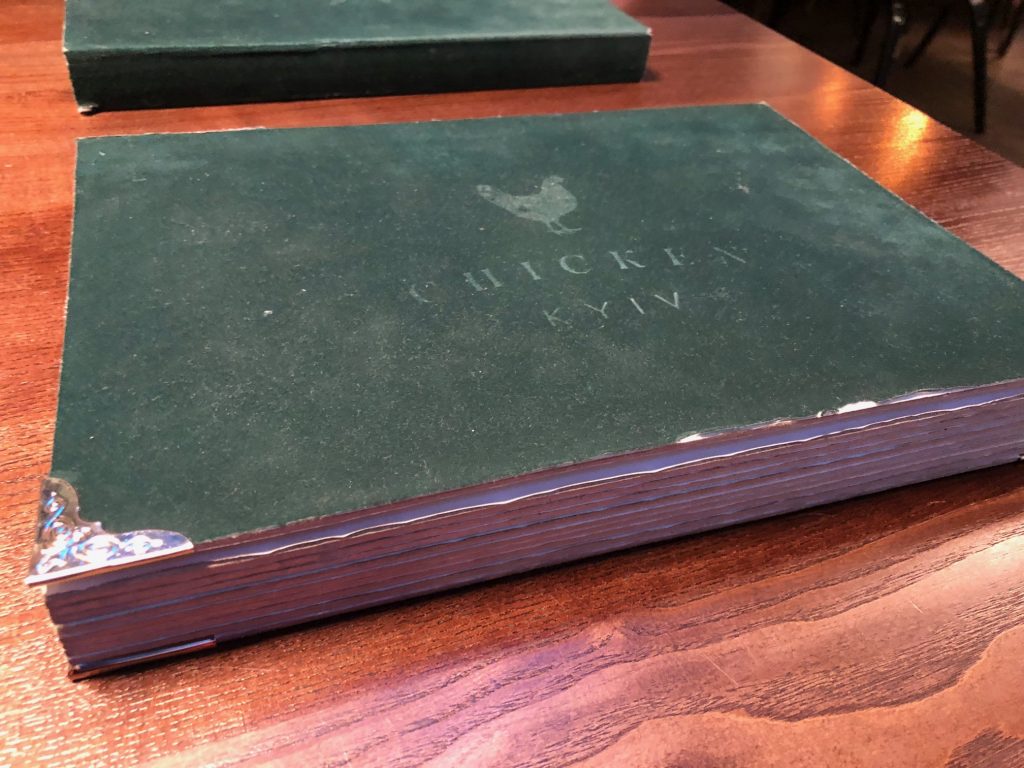 Only it turned out they were coreflut pop up books! Cute. Food was cheap and plenty of options.
Only it turned out they were coreflut pop up books! Cute. Food was cheap and plenty of options.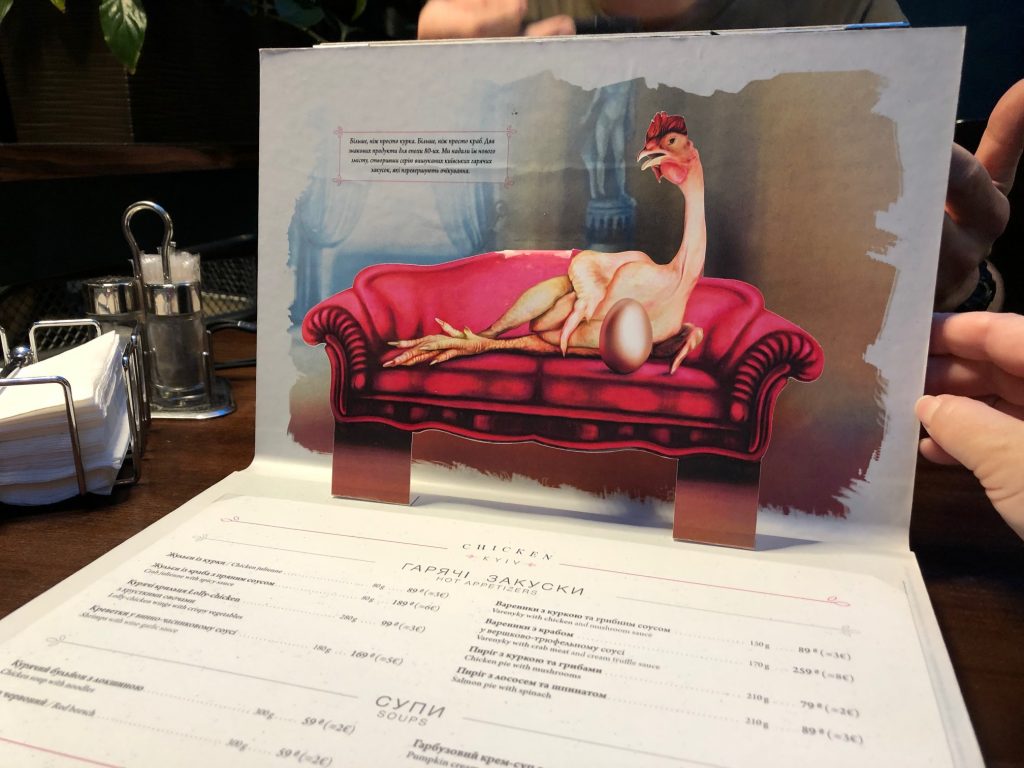 yale tried the chicken and mushroom tart for a starter which was very tasty…
yale tried the chicken and mushroom tart for a starter which was very tasty…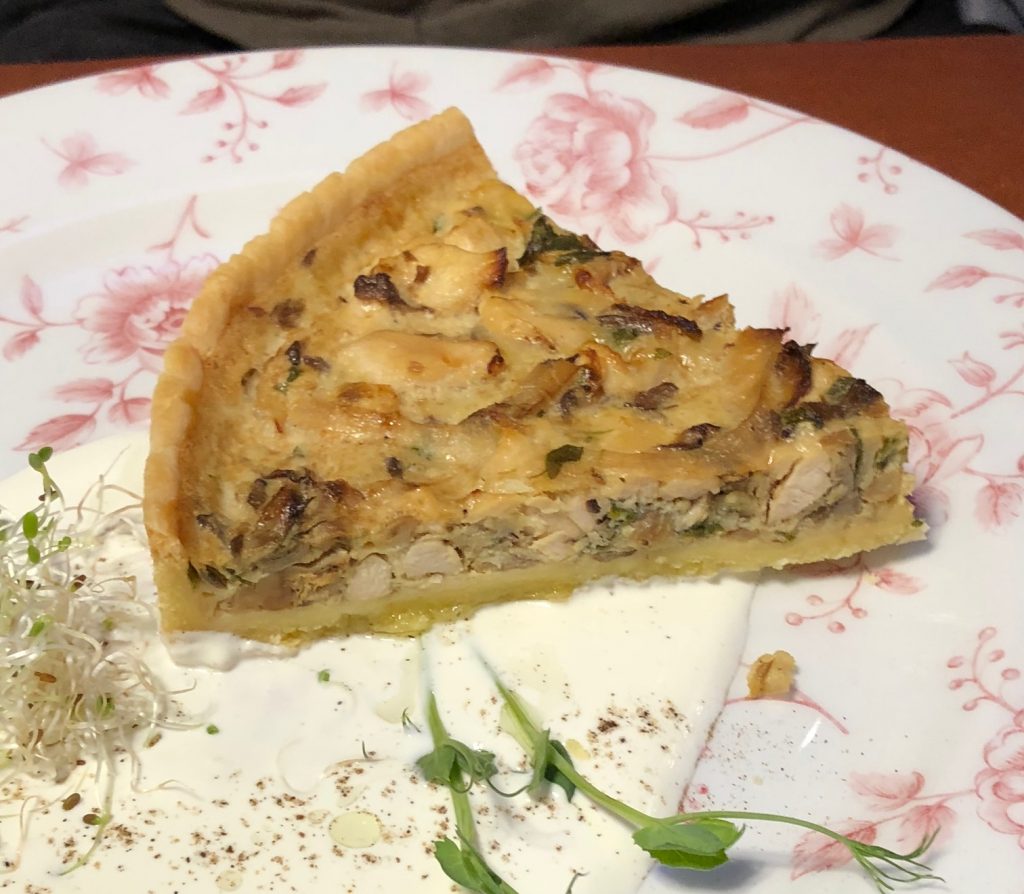 And I splashed out and ordered the sturgeon caviar (which turned out to be a quarter of the entire price of our bill). It was so totally worth it – absolultely delicious.
And I splashed out and ordered the sturgeon caviar (which turned out to be a quarter of the entire price of our bill). It was so totally worth it – absolultely delicious.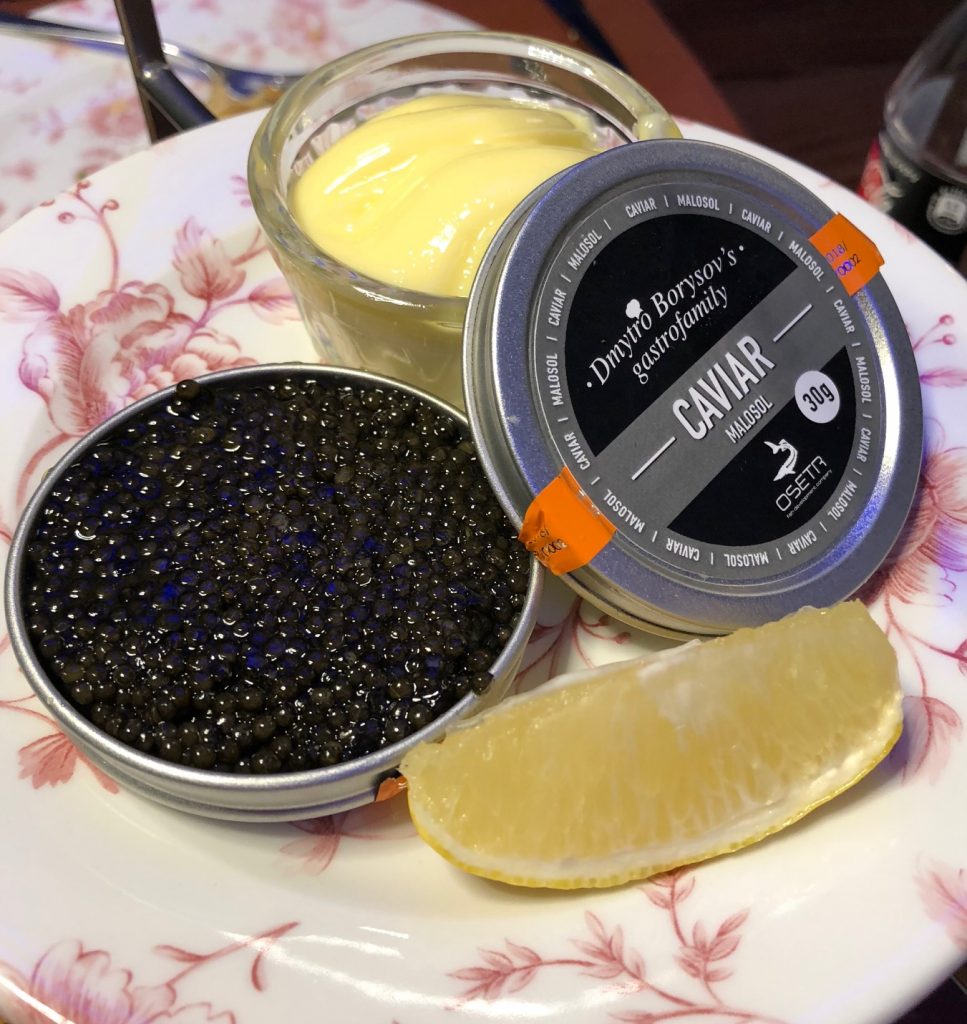 For mains, we tried their signature dish – when in Rome and all that – and ordered the Chicken Kyiv. It was a little disappointing to be honest, loaded with dill rather than the garlicky goodness we were expecting, it wasn’t exactly a taste sensation, but by the time we had put away a few more vodkas we didn’t really care.
For mains, we tried their signature dish – when in Rome and all that – and ordered the Chicken Kyiv. It was a little disappointing to be honest, loaded with dill rather than the garlicky goodness we were expecting, it wasn’t exactly a taste sensation, but by the time we had put away a few more vodkas we didn’t really care.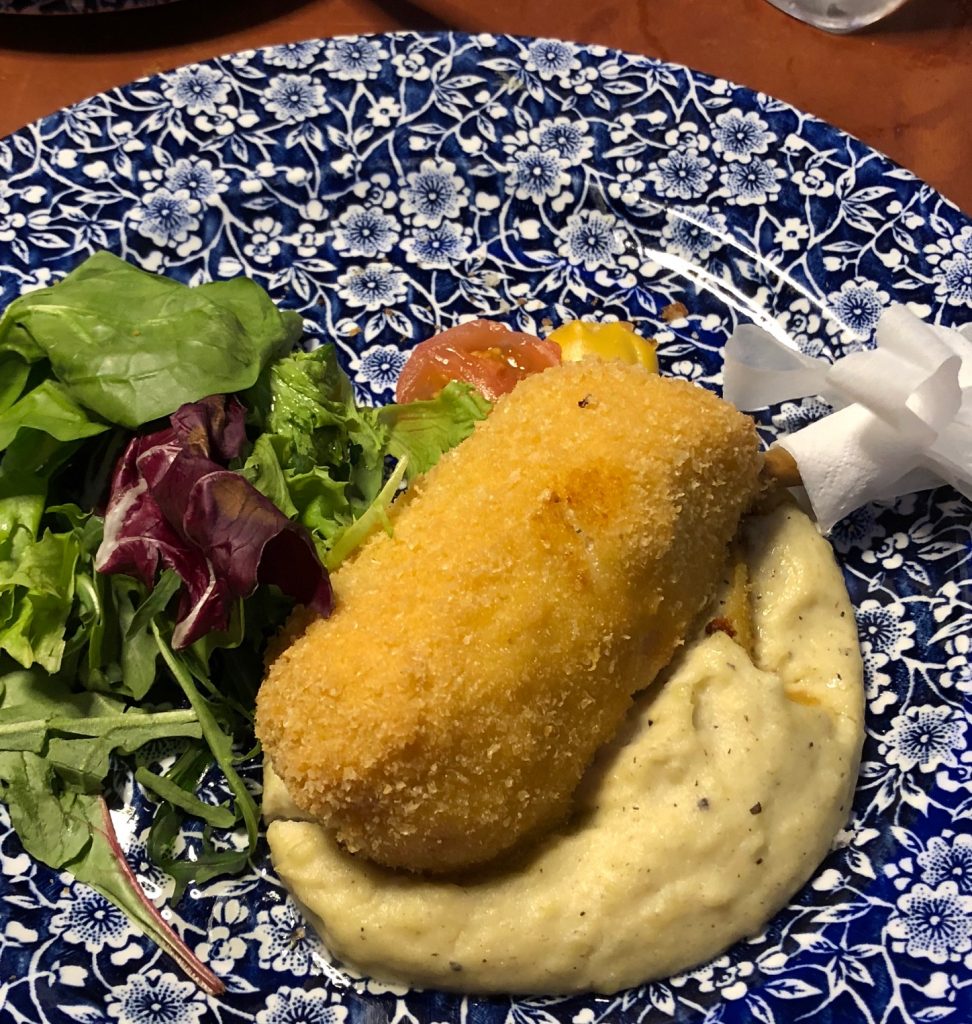 For dessert – proper honey cake! It was so good.
For dessert – proper honey cake! It was so good.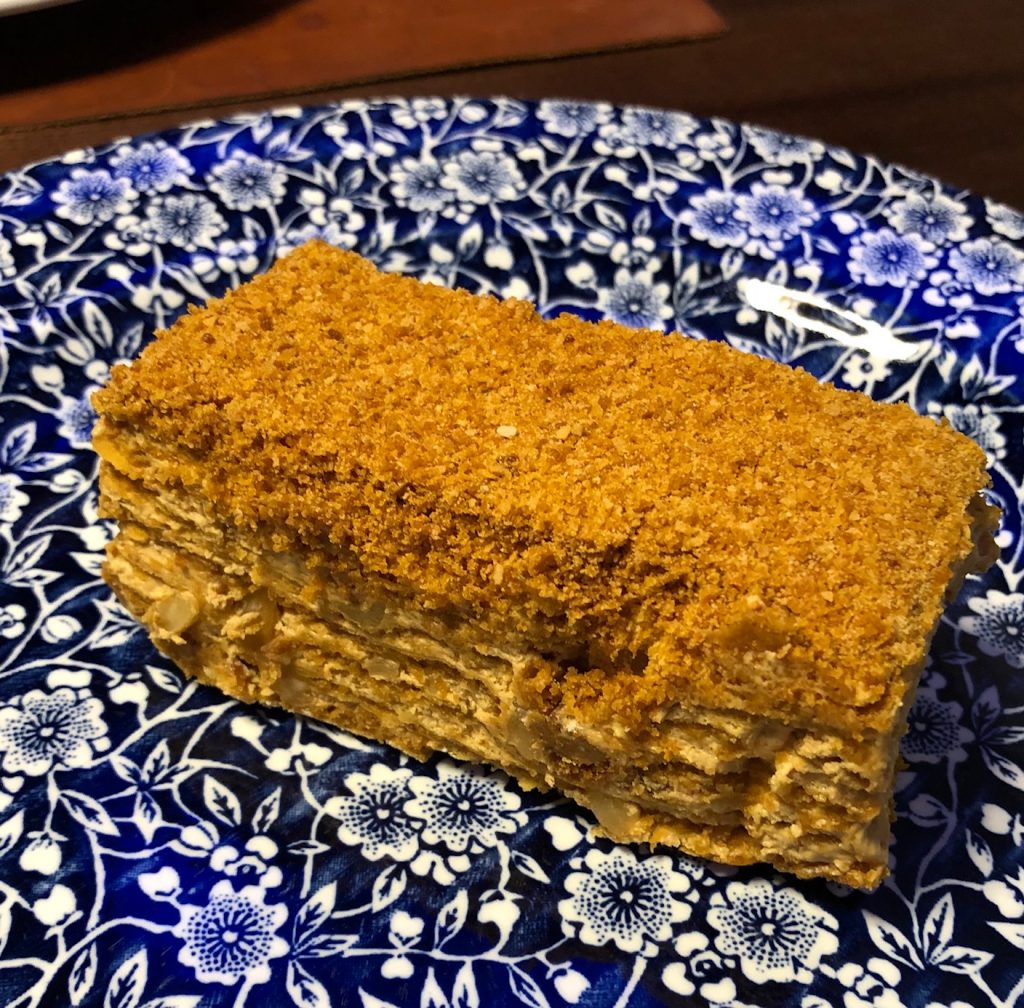 And yale had a Kiev cake – some sort of meringue and chocolate and pistachio concoction… but he liked my honey cake so much he went and ordered one of those as well.
And yale had a Kiev cake – some sort of meringue and chocolate and pistachio concoction… but he liked my honey cake so much he went and ordered one of those as well.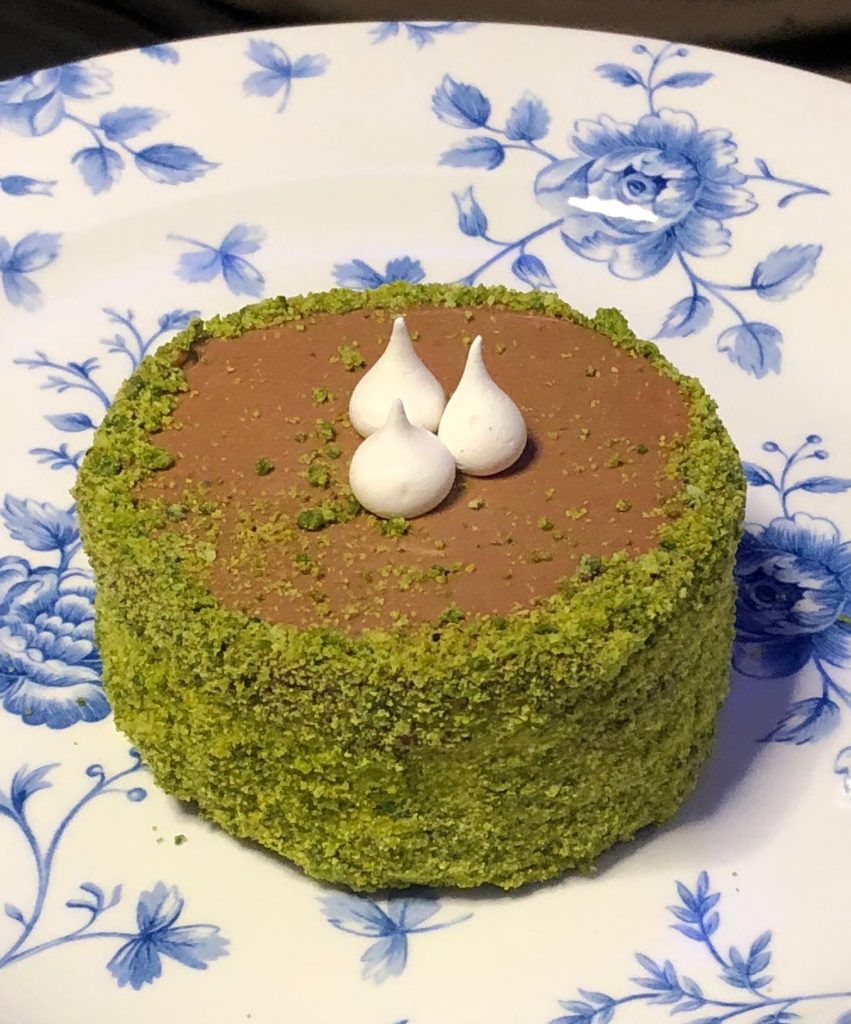 Throughout the meal we worked out way down the vodka menu starting at the top – drinks were so cheap we just kept ordering the next one down the list… and we made a pretty good dent in it, if I sawy so myself.
Throughout the meal we worked out way down the vodka menu starting at the top – drinks were so cheap we just kept ordering the next one down the list… and we made a pretty good dent in it, if I sawy so myself.
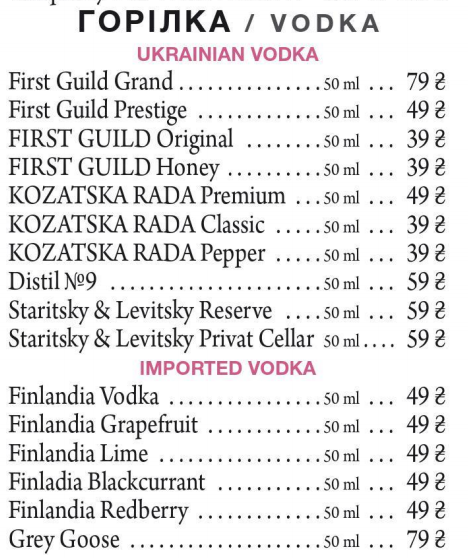
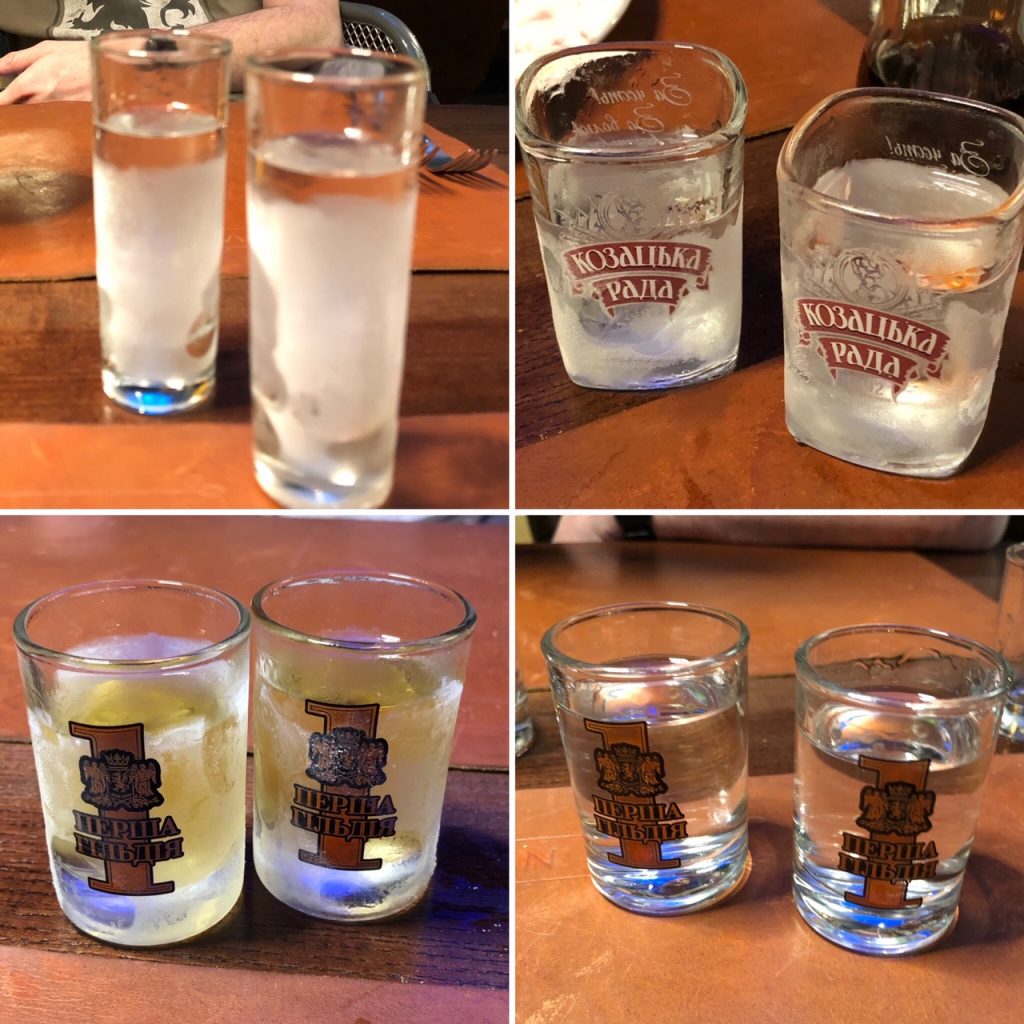 All up our dinner – three courses each including the ludicrously expensive caviar at (€27 for 30gms), plus about 12 vodkas was barely AUD$100. Woo-hoo! We’re not in Iceland anymore, Toto! Gotta love that exchange rate in Eastern Europe!
All up our dinner – three courses each including the ludicrously expensive caviar at (€27 for 30gms), plus about 12 vodkas was barely AUD$100. Woo-hoo! We’re not in Iceland anymore, Toto! Gotta love that exchange rate in Eastern Europe!
We stumbled and laughed our way back to the hotel, via a supermarket to pick up more alcohol, of course. We picked up a few things and at the checkout, three rather average Ukrainian men roughly about 5’8″ – 5’10”, but you know, stocky Ukrainian types came to line up behind us and started immediately commenting on Yale’s height (for those that don’t know him, he’s 6’9″. Naturally, we couldn’t understand what they were saying but with all the gesturing it was really obvious they were remarking how ridiculously tall he is, and of course standing beside him at 5’1″ (on a good day) I look equally ridiculous. It seemed in good natured and we weren’t feeling outnumbered or threatened at all, so as we made our purchase and as they moved to the register, yale started walking towards me, and I moved aside from him and put up two fingers about ten inches apart and winked at these guys, before turning on my heel and walking off. These poor guys fucking lost it! It was hilarious. 🙂 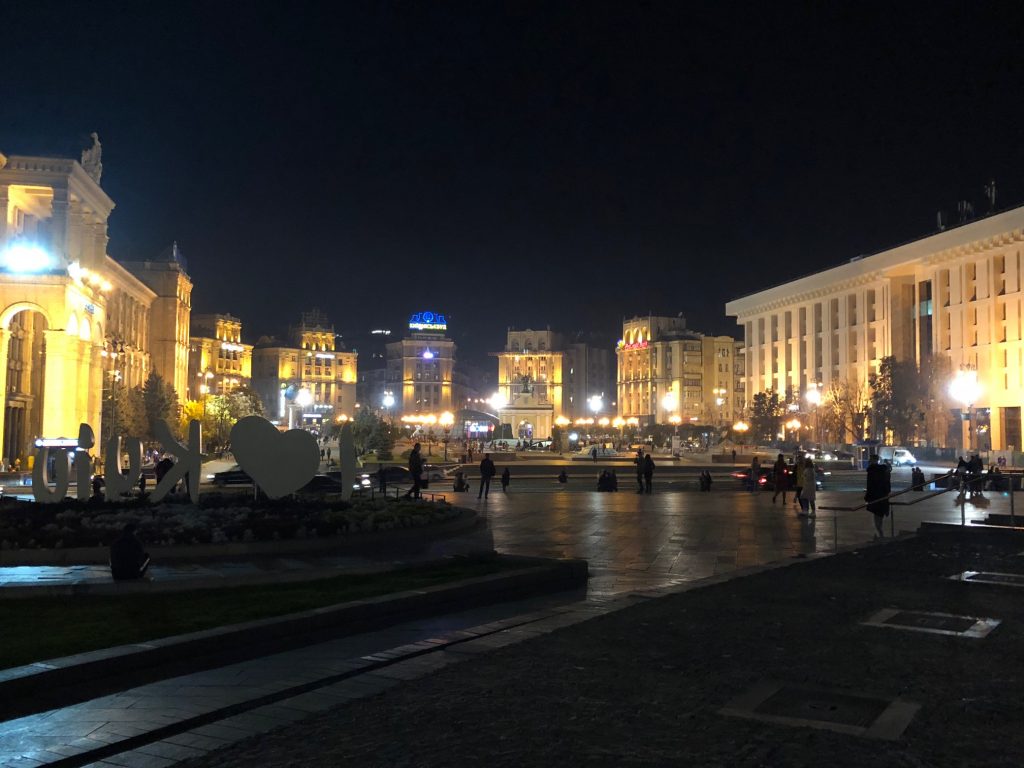
All up another great day out and a lovely evening, even though it was supposed be a lighter day than yesterday! Tomorrow, tomorrow will be a lighter day! *looks skywards*
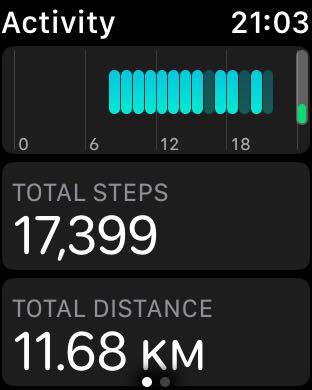

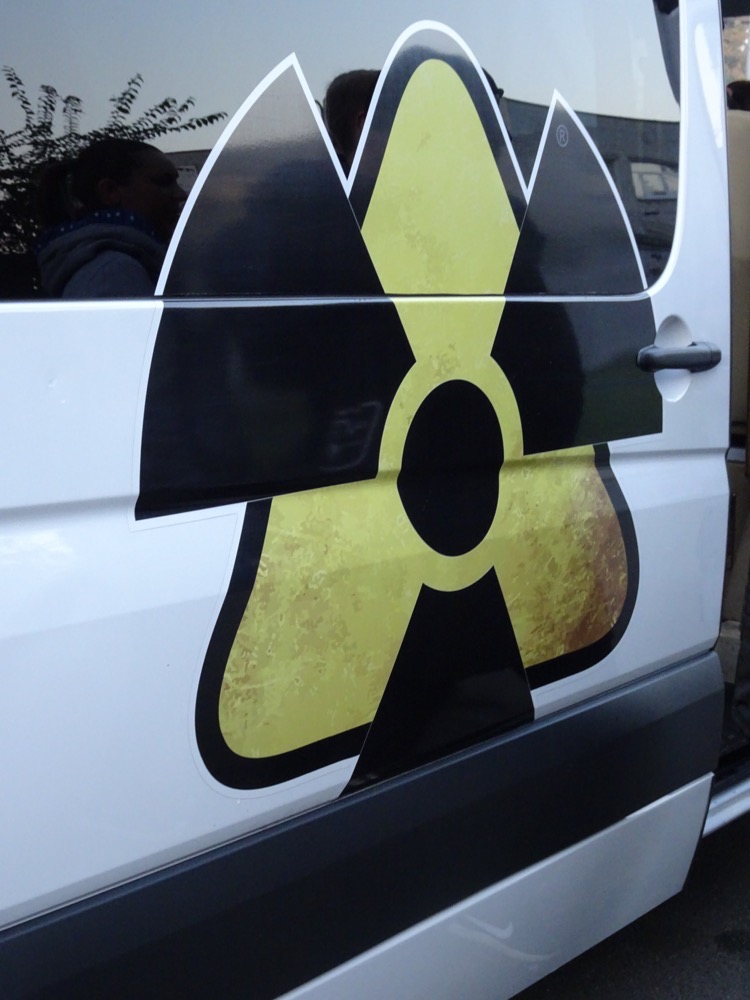 At the Dytyatky checkpoint, we exited the bus and stood in line with our passports while the local police (who now have jurisdiction over the 2,600 km2 Exclusion Zone, since the military withdrew) checked our passports. No photos of the checkpoints. Instead have an APC…
At the Dytyatky checkpoint, we exited the bus and stood in line with our passports while the local police (who now have jurisdiction over the 2,600 km2 Exclusion Zone, since the military withdrew) checked our passports. No photos of the checkpoints. Instead have an APC…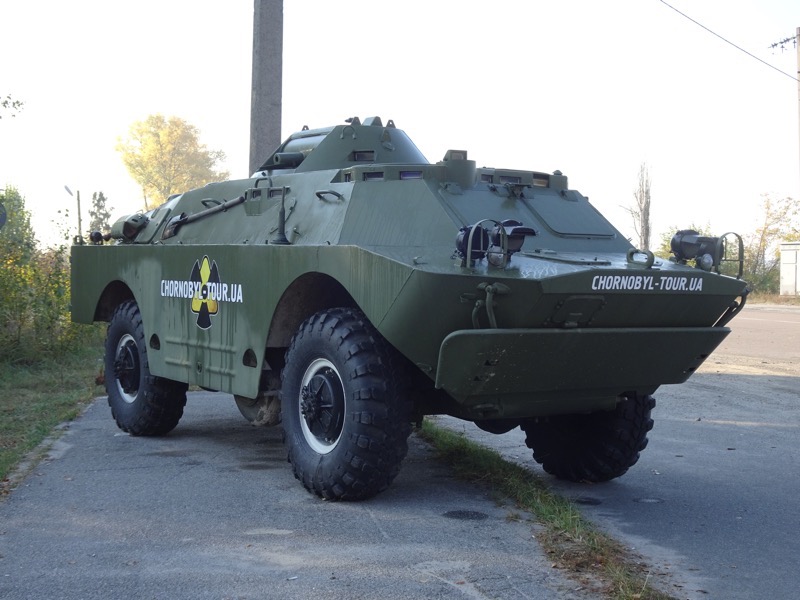 Many people in the group had chosen to hire Geiger counters for the duration to be able to see how radiation we were being exposed to in various areas. These counters were also able to collect spot readings off the ground or items in the area. This reading is about half what you would get if you turned on this meter in downtown Kiev… we are being exposed to very low levels of radiation constantly, but at this checkpoint, 30kms from The Incident site we are in a very clean area.
Many people in the group had chosen to hire Geiger counters for the duration to be able to see how radiation we were being exposed to in various areas. These counters were also able to collect spot readings off the ground or items in the area. This reading is about half what you would get if you turned on this meter in downtown Kiev… we are being exposed to very low levels of radiation constantly, but at this checkpoint, 30kms from The Incident site we are in a very clean area.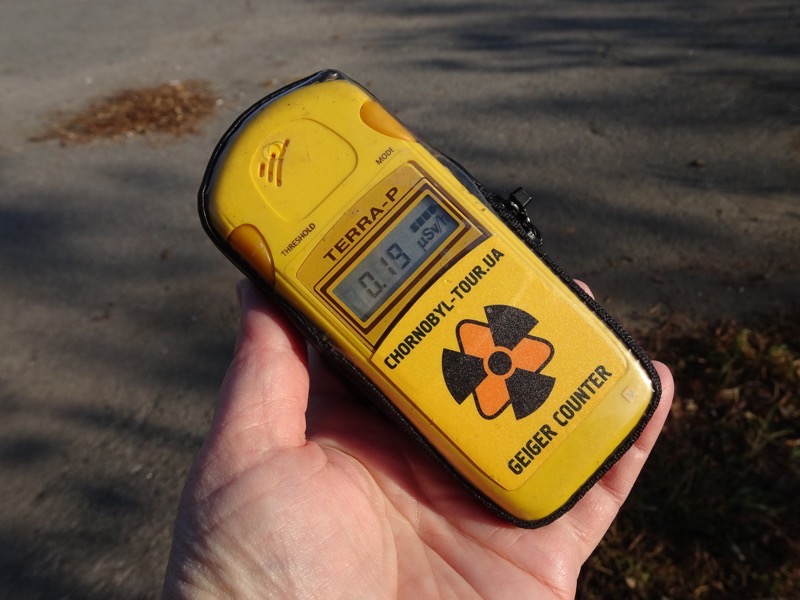
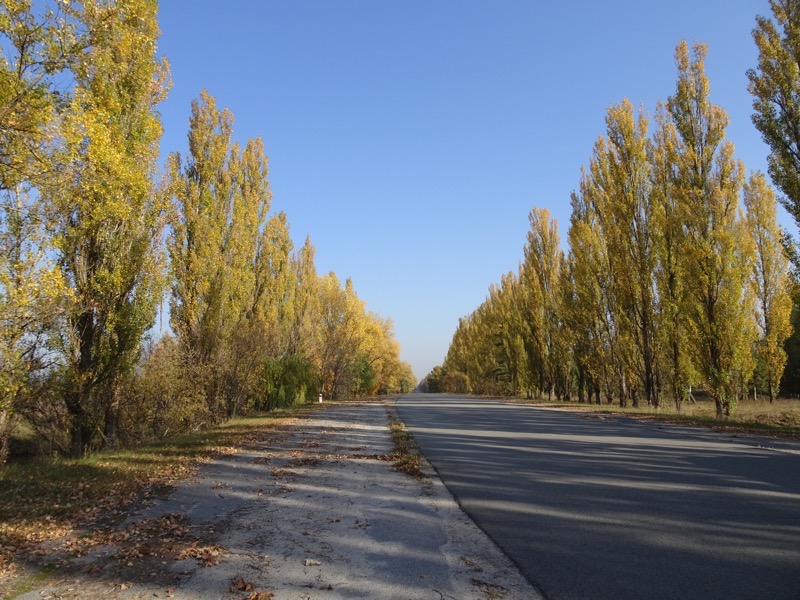 Our first stop is in the little village called Zalissya which has several abandoned houses and barns, a shop and a medical clinic. I was a bit flummoxed that they let tourists enter these dilapidated houses – they are definitely unsafe and we found ourselves walking on as many broken floorboards as broken glass. From an OH&S standpoint – no way this shit would fly at home. Or in the US. Or in most of Europe. Or… well, anywhere else really.
Our first stop is in the little village called Zalissya which has several abandoned houses and barns, a shop and a medical clinic. I was a bit flummoxed that they let tourists enter these dilapidated houses – they are definitely unsafe and we found ourselves walking on as many broken floorboards as broken glass. From an OH&S standpoint – no way this shit would fly at home. Or in the US. Or in most of Europe. Or… well, anywhere else really.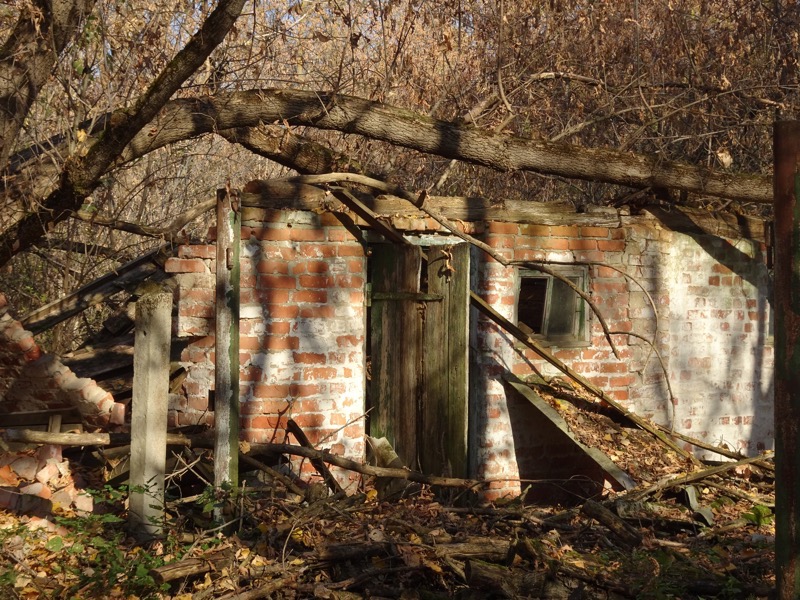
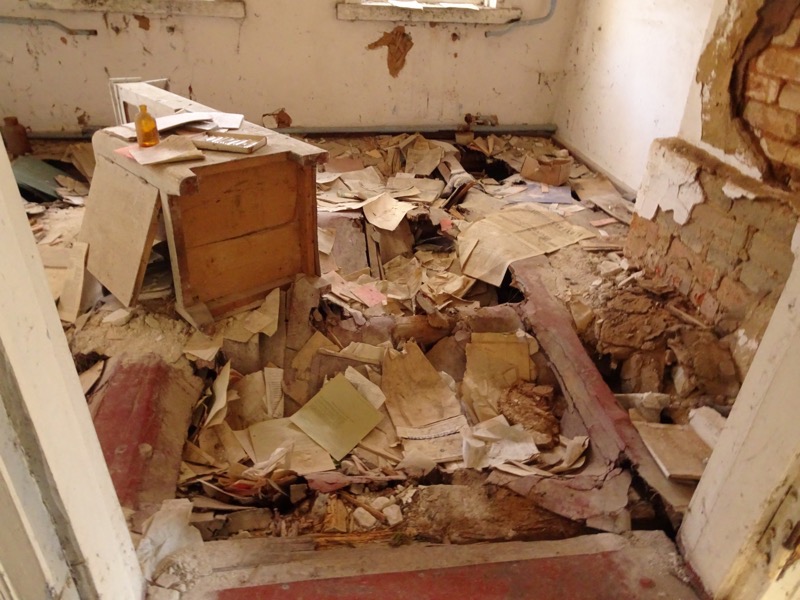
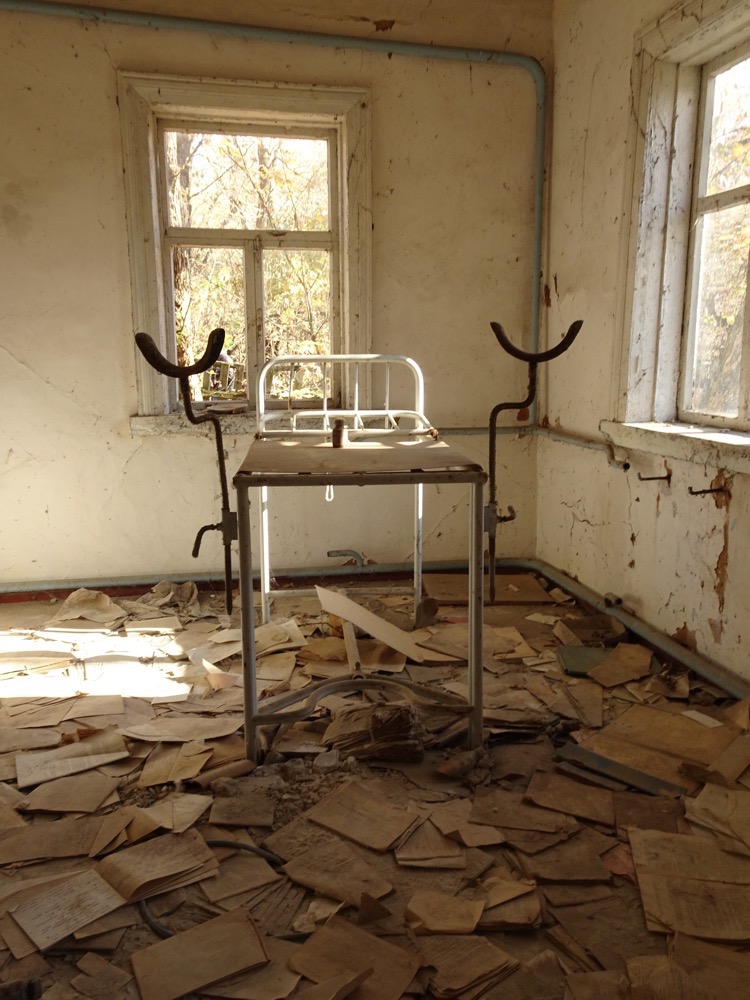 Things like this have just been left where they were found, even the Stalkers don’t seem to want to move/interfere with them.
Things like this have just been left where they were found, even the Stalkers don’t seem to want to move/interfere with them.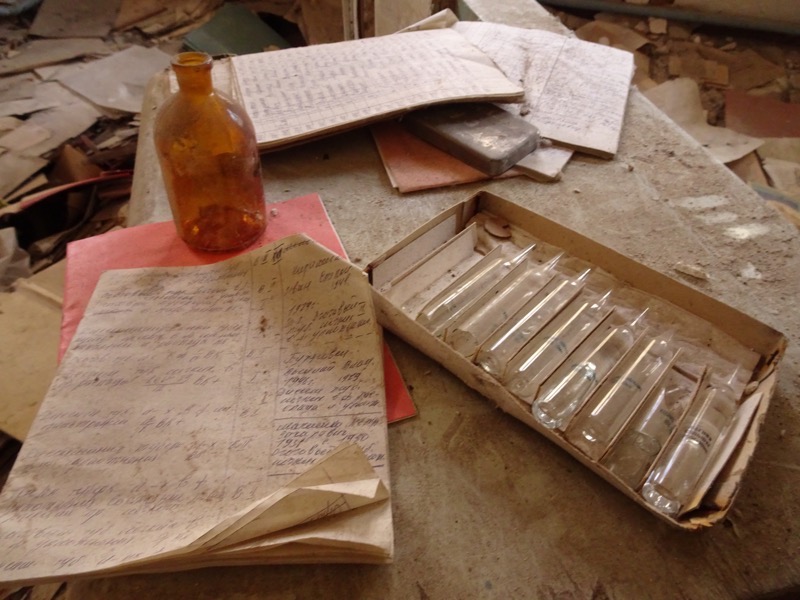 The local market. Our guide Nicky described how a trip to the local shop would be riddled with anxiety when she was a child growing up in Soviet Russia. The mature women who ran the shops were more than unusually stern and goods were often in high demand and low supply, so they had quite a position of power in their little villages.
The local market. Our guide Nicky described how a trip to the local shop would be riddled with anxiety when she was a child growing up in Soviet Russia. The mature women who ran the shops were more than unusually stern and goods were often in high demand and low supply, so they had quite a position of power in their little villages.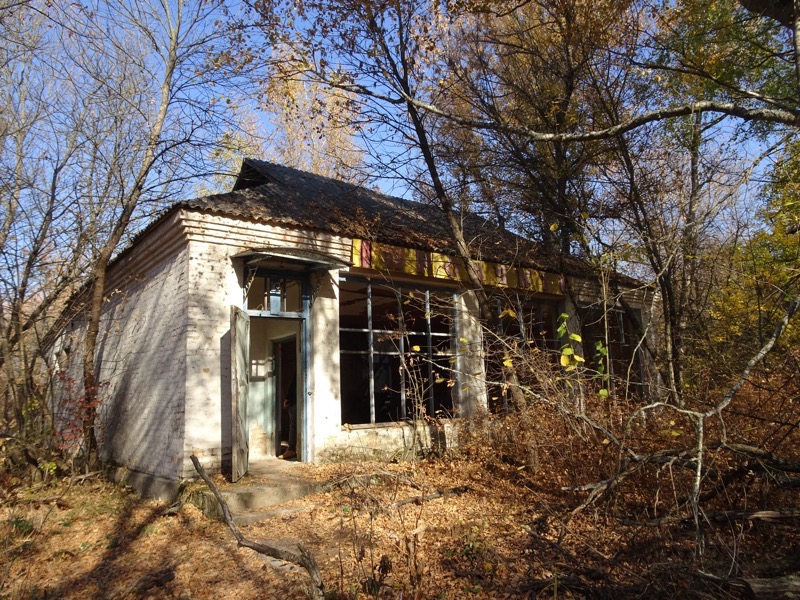 Lines are torn into the walls and ceilings where the copper has been ripped out by looking Slackers.
Lines are torn into the walls and ceilings where the copper has been ripped out by looking Slackers. 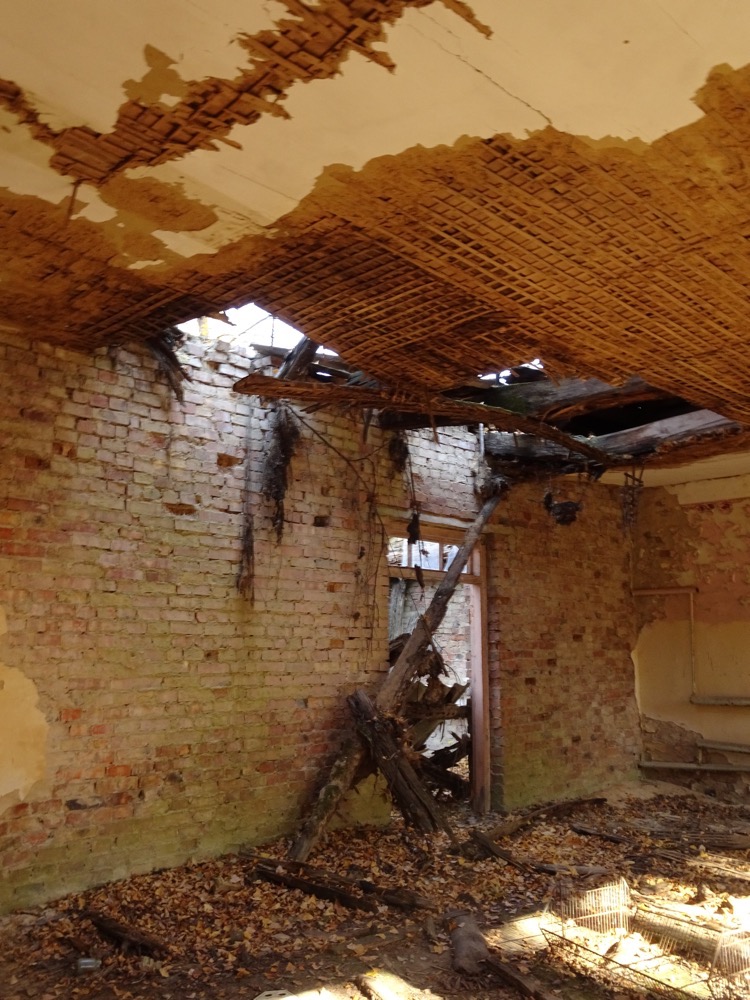
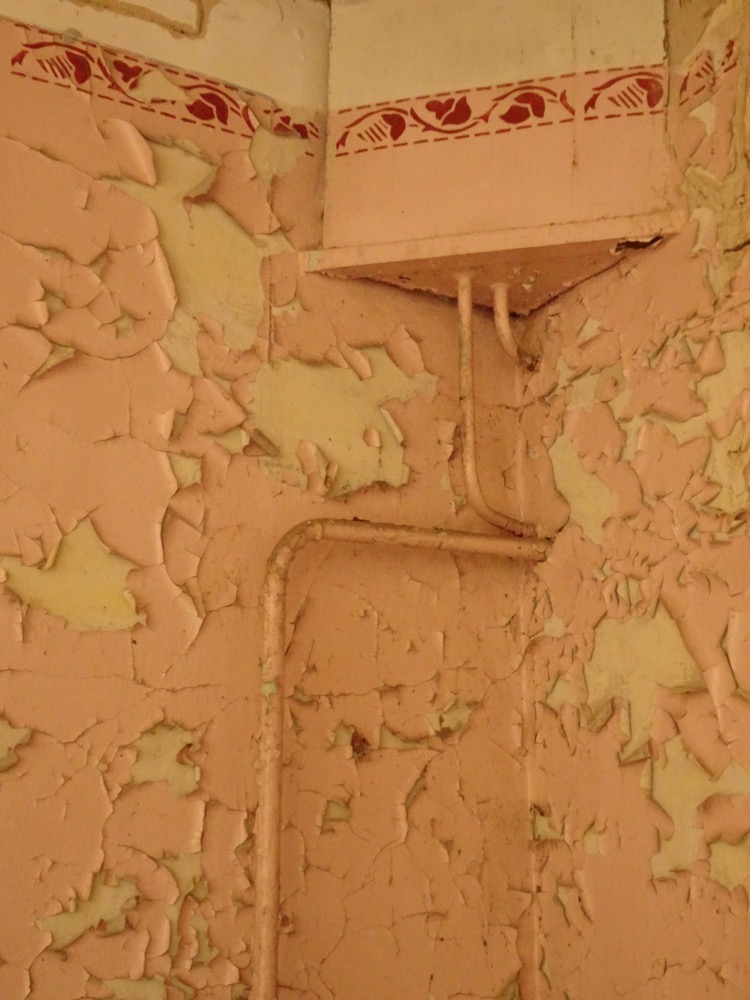
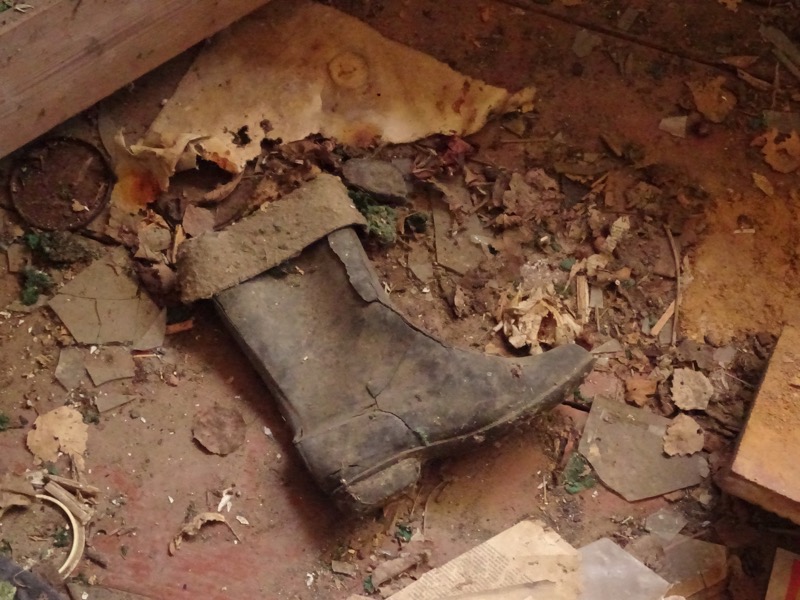 Zalissya is the only town that saw a lone self-settler named Rozaliya Ivanivna return to her home after the area was sort of declared ‘safe’. She lived alone in this abandoned little town for many years, growing most of her own food needs (in the contaminated soil) until her death of non-radiation related old age. Apparently, on one occasion, she had a pack of wolves surrounding her house for three days, and she was unable to leave the house… it is a particularly harsh sort of lifestyle, especially if you do not have a village to rely on.
Zalissya is the only town that saw a lone self-settler named Rozaliya Ivanivna return to her home after the area was sort of declared ‘safe’. She lived alone in this abandoned little town for many years, growing most of her own food needs (in the contaminated soil) until her death of non-radiation related old age. Apparently, on one occasion, she had a pack of wolves surrounding her house for three days, and she was unable to leave the house… it is a particularly harsh sort of lifestyle, especially if you do not have a village to rely on.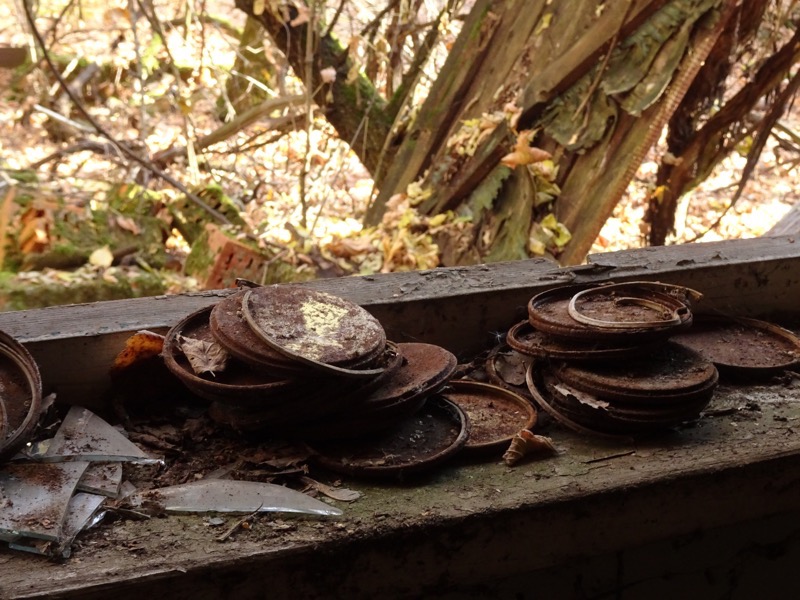
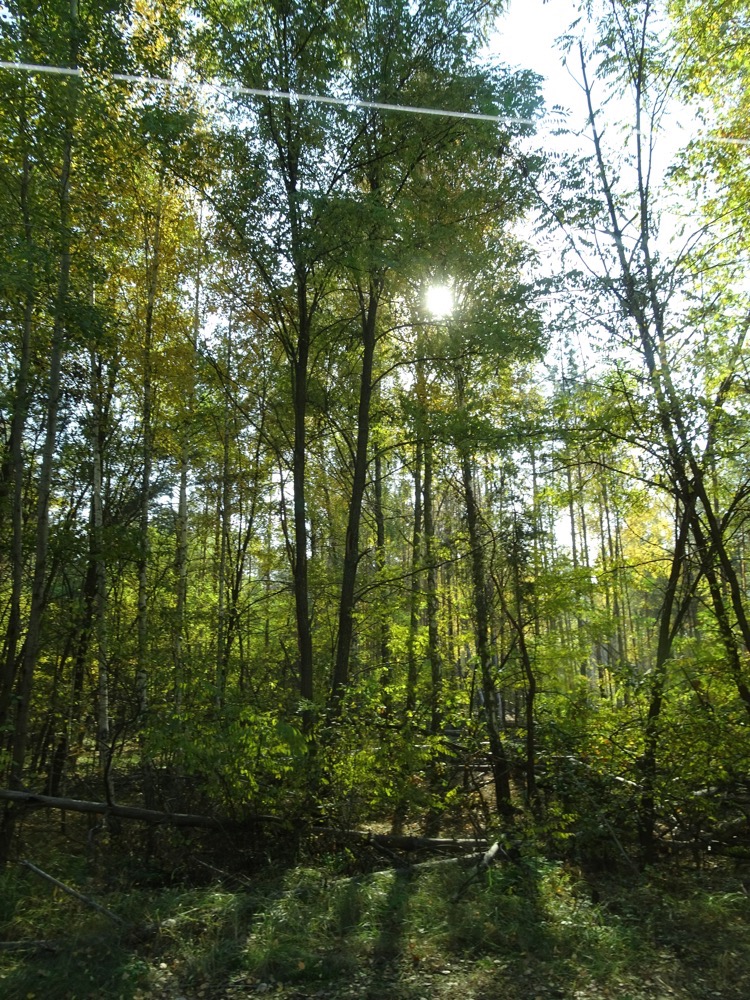 The Soviets had planted kilometres and kilometres of dense forest on every side of the installation to obscure the radar from being seen from any direction. There were three checkpoints on this road, which hapless civilian campers and fishermen may accidentally drive down. Nicky told us that at the first checkpoint, drivers would be greeted thus: “Comrade, there is nothing interesting down this road, you should go back.”, but they were not compelled to follow the instruction and if they chose to keep on going, they would eventually encounter another checkpoint where they would be greeted again with: “Comrade, there is nothing intersting down this road, you should probably go back.” If the idiot driver didn’t take the hint, they would eventually encounter the third checkpoint with: “Comrade, there is nothing interesting down this road, you should go back. I am authorised to shoot you on sight.” Which I imagine would have been an excellent deterrent if phrased that way in the first place.
The Soviets had planted kilometres and kilometres of dense forest on every side of the installation to obscure the radar from being seen from any direction. There were three checkpoints on this road, which hapless civilian campers and fishermen may accidentally drive down. Nicky told us that at the first checkpoint, drivers would be greeted thus: “Comrade, there is nothing interesting down this road, you should go back.”, but they were not compelled to follow the instruction and if they chose to keep on going, they would eventually encounter another checkpoint where they would be greeted again with: “Comrade, there is nothing intersting down this road, you should probably go back.” If the idiot driver didn’t take the hint, they would eventually encounter the third checkpoint with: “Comrade, there is nothing interesting down this road, you should go back. I am authorised to shoot you on sight.” Which I imagine would have been an excellent deterrent if phrased that way in the first place.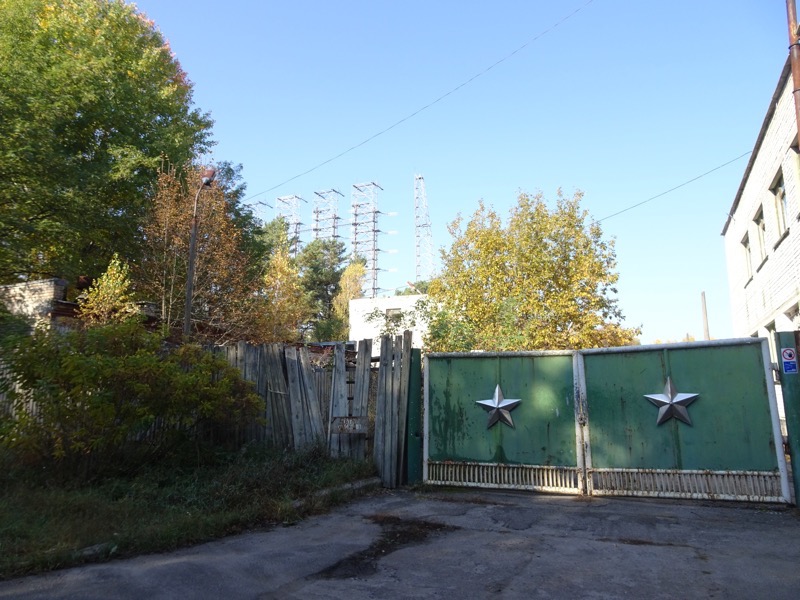 The abandoned military town is now manned by a local police checkpoint – there are like three guys here sitting around smoking, but we can’t take photos of the ‘security measures’.
The abandoned military town is now manned by a local police checkpoint – there are like three guys here sitting around smoking, but we can’t take photos of the ‘security measures’.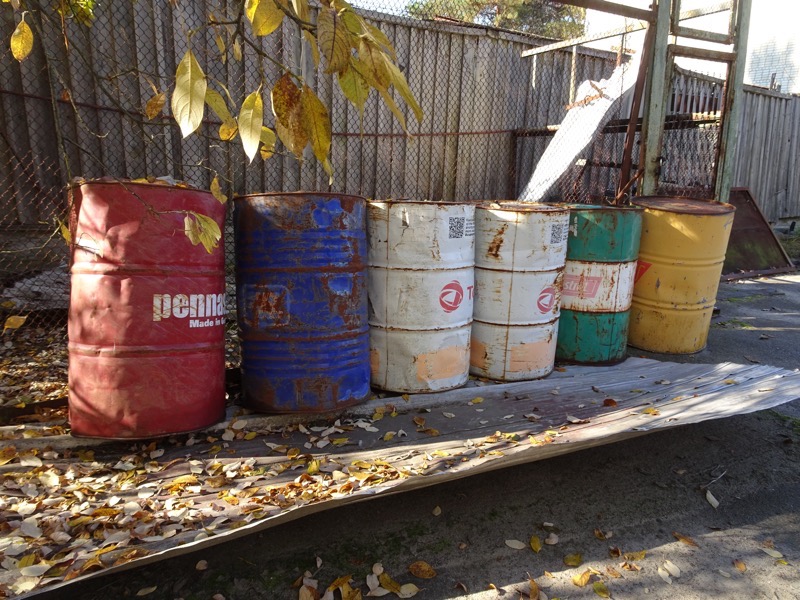
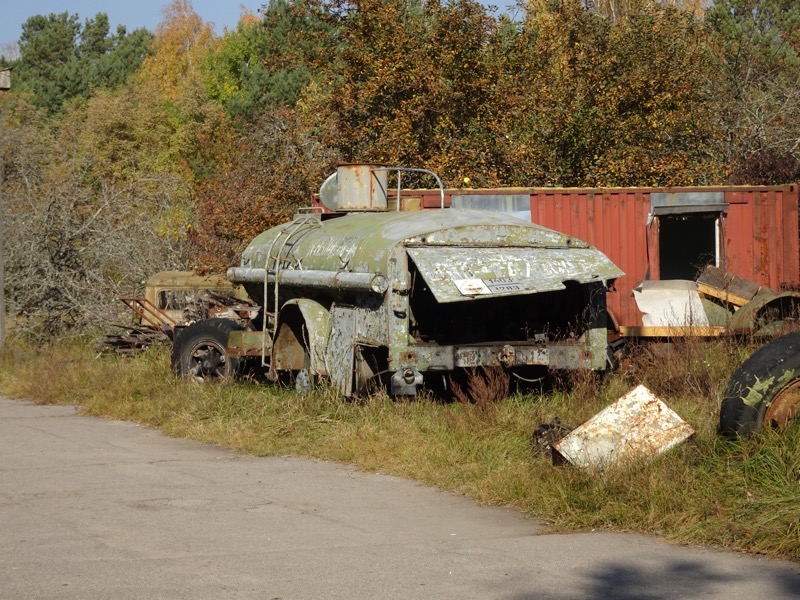 On many of the walls of buildings in the towns and later the city of Pripyat, Soviet propaganda is evident. This mural is literally ‘The Red Army Want YOU’, which ironically is painted on a wall inside a top-secret military town where the only person who had access, were already enlisted.
On many of the walls of buildings in the towns and later the city of Pripyat, Soviet propaganda is evident. This mural is literally ‘The Red Army Want YOU’, which ironically is painted on a wall inside a top-secret military town where the only person who had access, were already enlisted.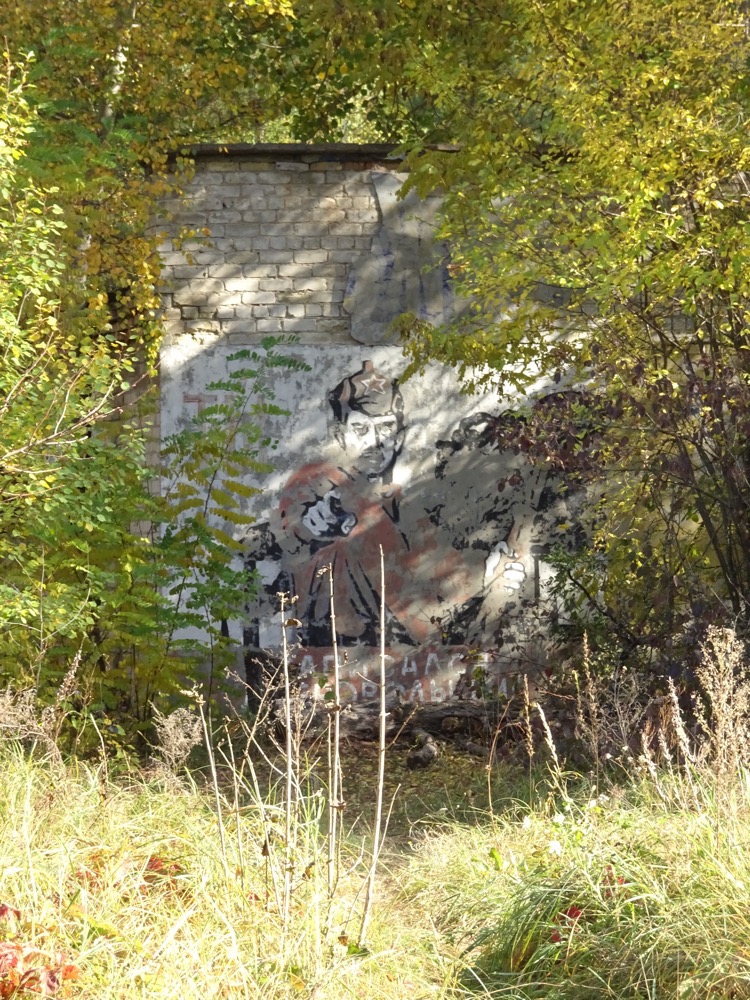 The DUGA-1 Radar:
The DUGA-1 Radar: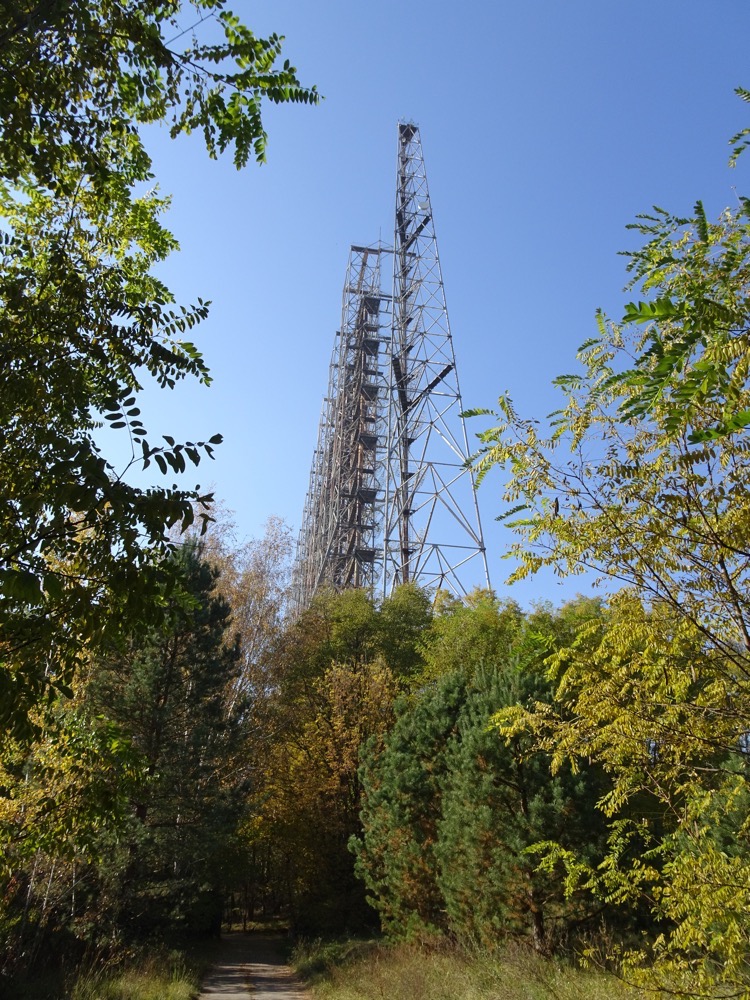 Radioactive mushrooms.
Radioactive mushrooms.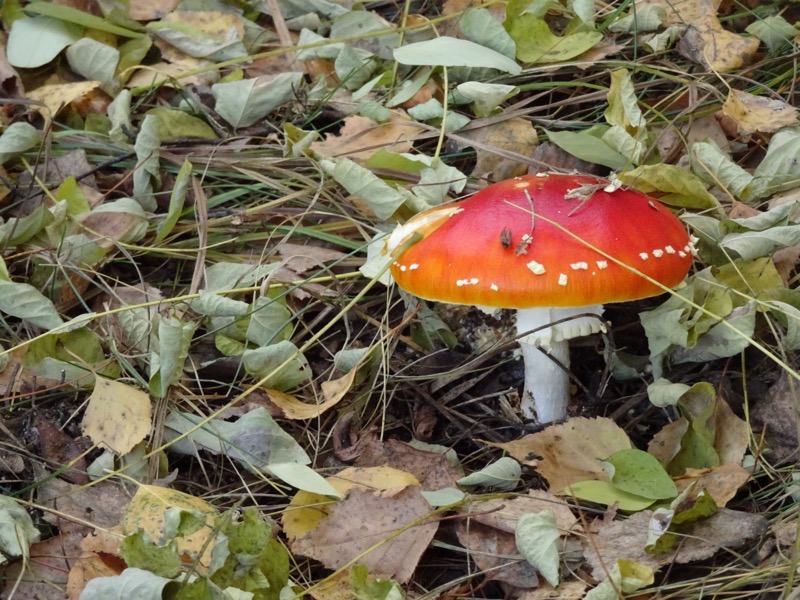
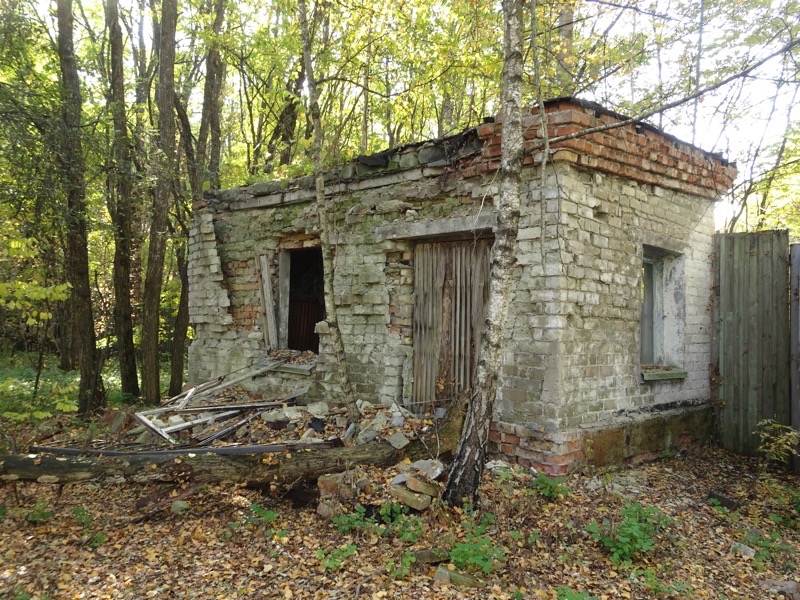 The radar is enormous and was part of a series of six of these installations scattered around the Soviet Union from here in Ukraine to the very east near Vladivostok and the border with China.
The radar is enormous and was part of a series of six of these installations scattered around the Soviet Union from here in Ukraine to the very east near Vladivostok and the border with China.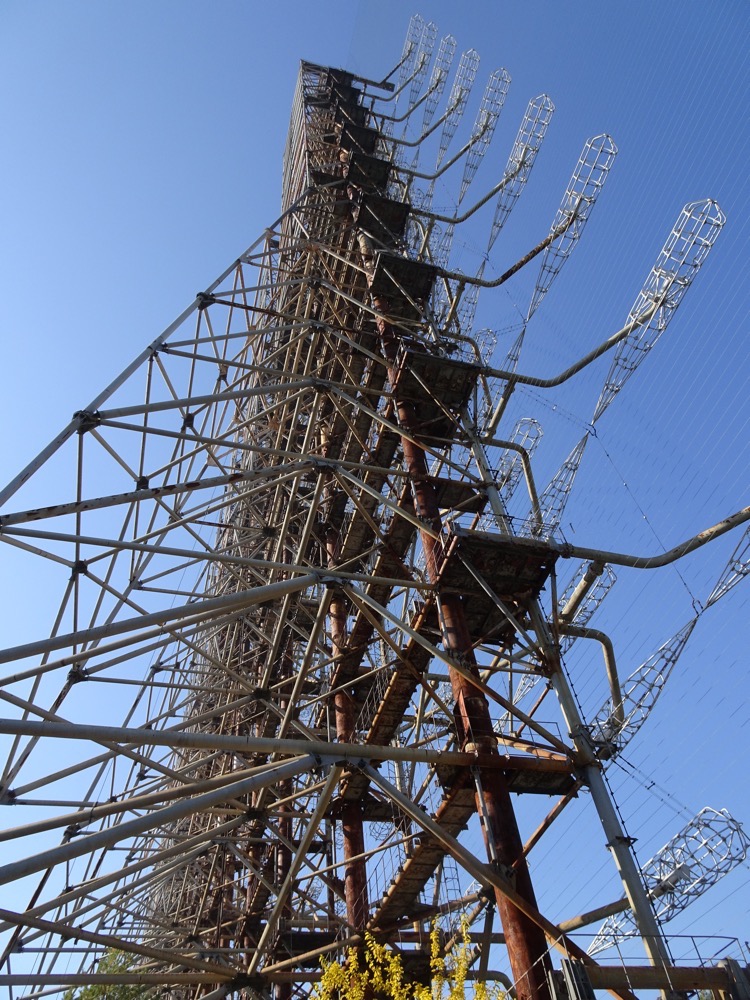
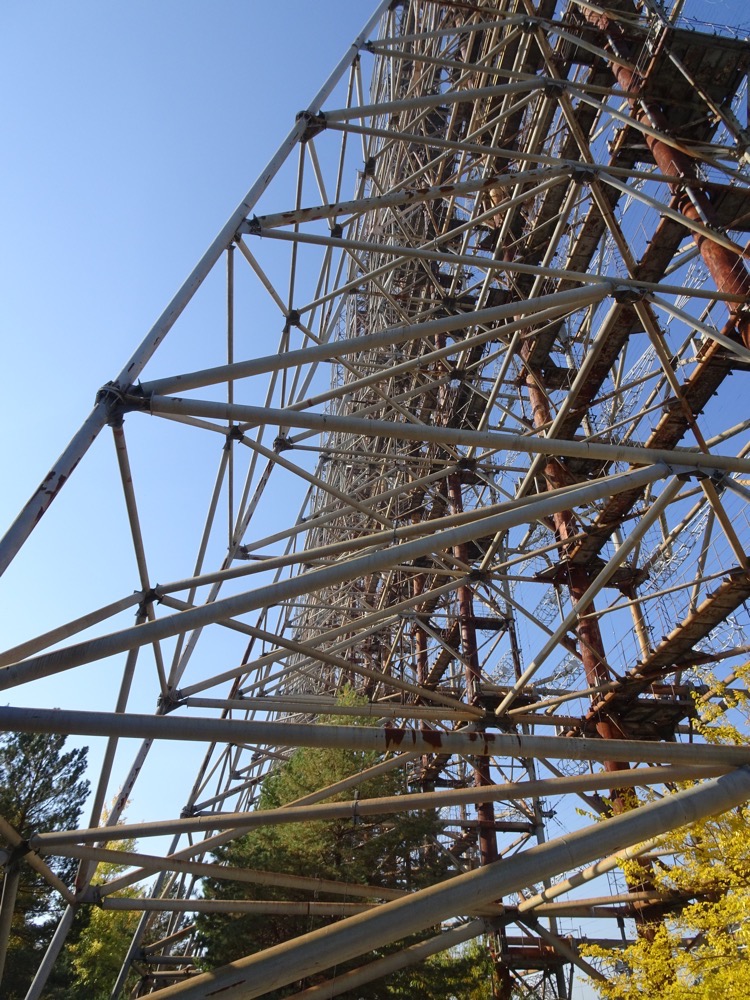
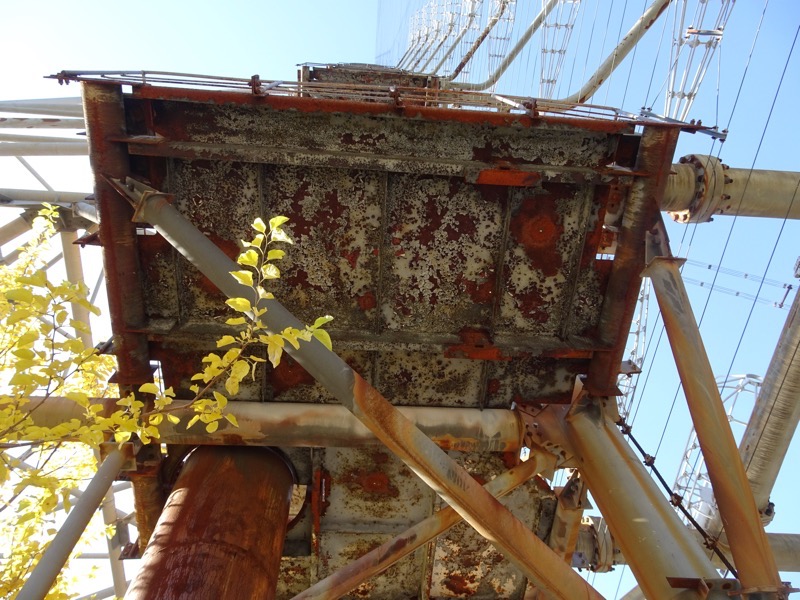
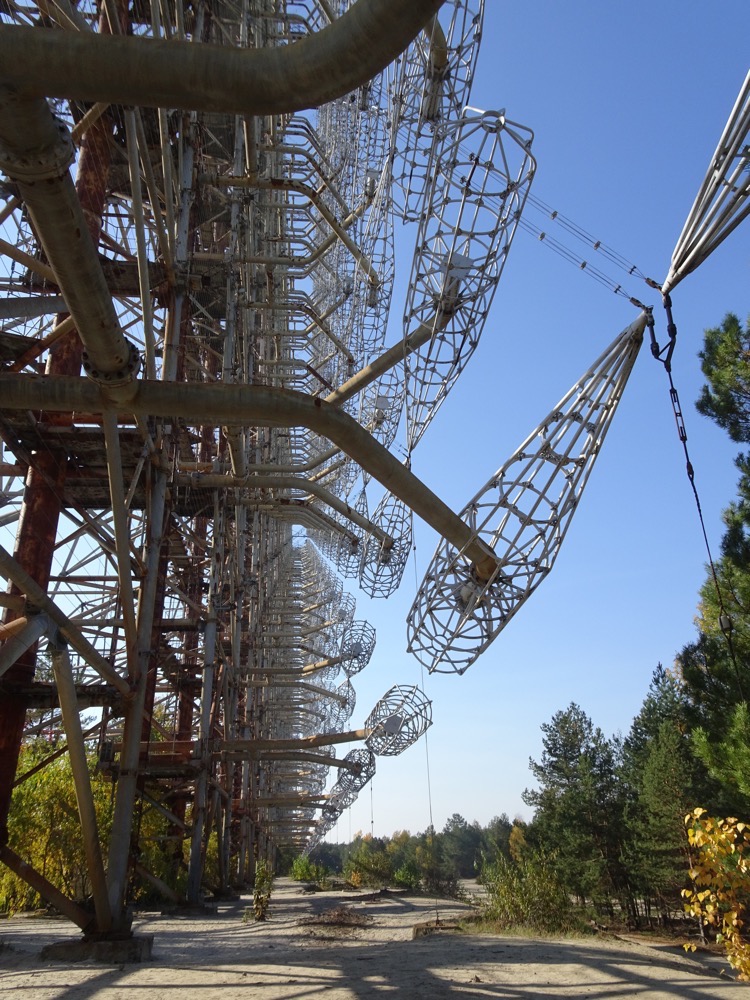 Turns out the radar system was not particularly efficient, it was only operable during the day and depended on the weather, clouds, sun flares and all sorts of shit to be reliable. Local radio operators could hear serious interference from the radar and were constantly complaining to the government about a ‘doof, doof, doof’ helicopter sounding noises that it was emitting, to which the Soviet Government would respond, we don’t have an antenna out here’. When challenged with satellite images they would claim the enormous radar installation was a weather station – ‘It is a big country and we need big weather stations’.
Turns out the radar system was not particularly efficient, it was only operable during the day and depended on the weather, clouds, sun flares and all sorts of shit to be reliable. Local radio operators could hear serious interference from the radar and were constantly complaining to the government about a ‘doof, doof, doof’ helicopter sounding noises that it was emitting, to which the Soviet Government would respond, we don’t have an antenna out here’. When challenged with satellite images they would claim the enormous radar installation was a weather station – ‘It is a big country and we need big weather stations’.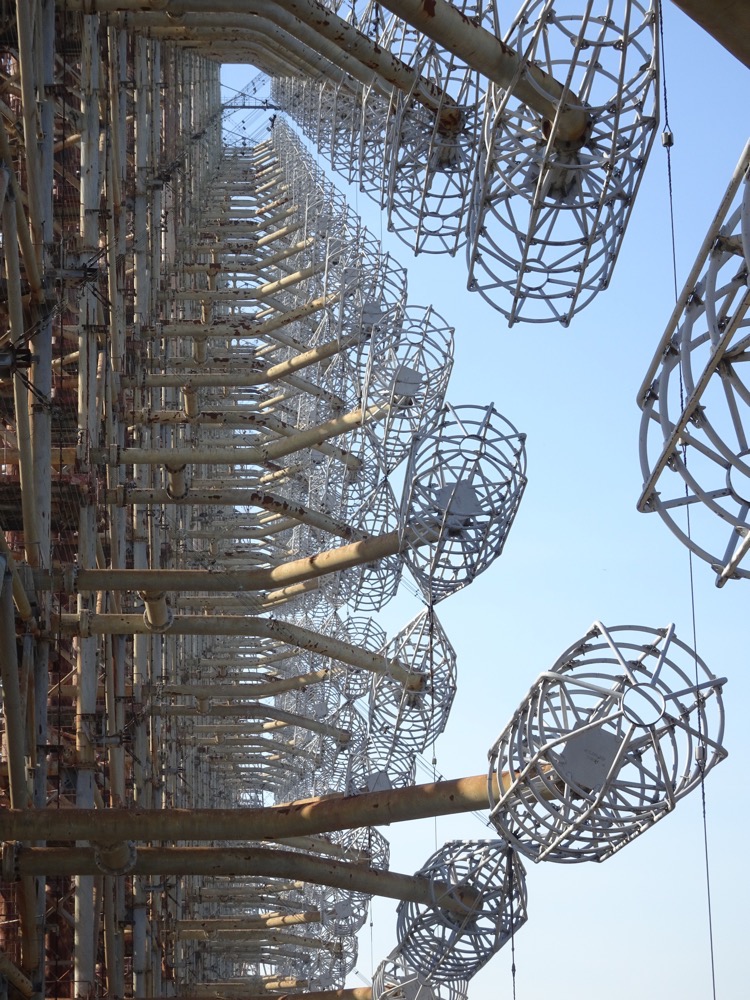 When the Chernobyl nuclear disaster occurred in 1986, the military personnel maintaining and monitoring the site were evacuated – meaning the entire network of radar sites became pretty much towers of expensive useless as the radars had to work together to be effective.
When the Chernobyl nuclear disaster occurred in 1986, the military personnel maintaining and monitoring the site were evacuated – meaning the entire network of radar sites became pretty much towers of expensive useless as the radars had to work together to be effective. 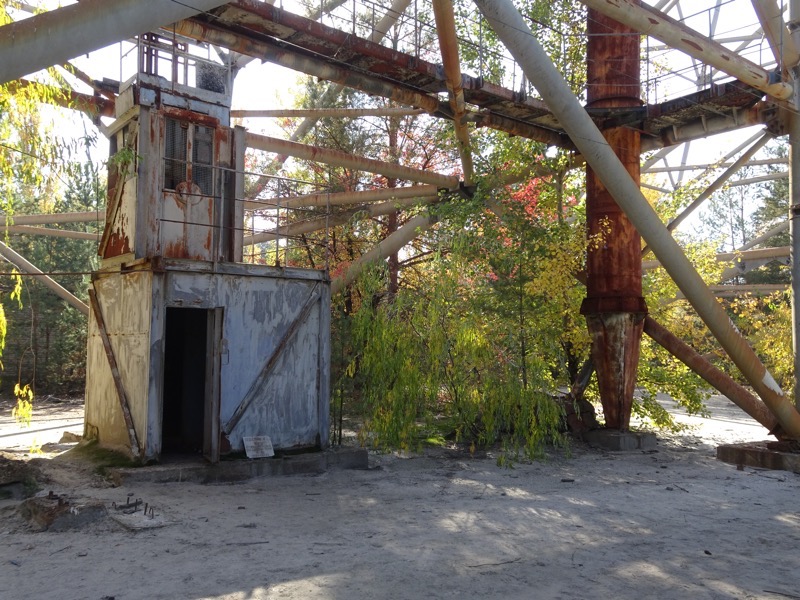
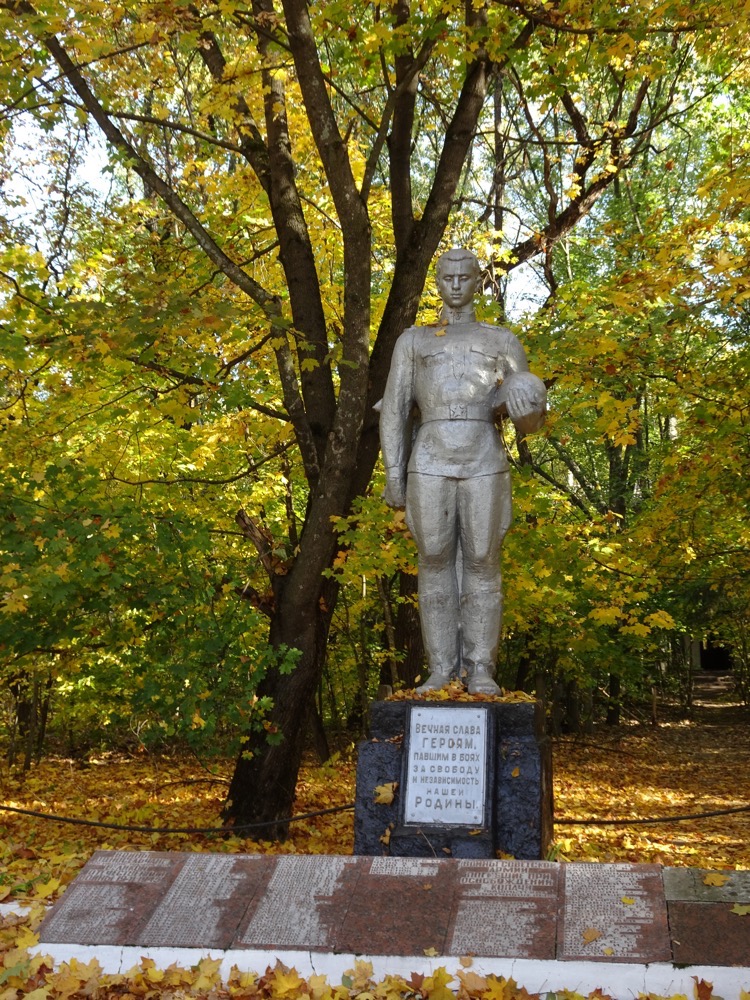 The area is full of ‘hot spots’. As we moved about the Geiger counter alarms were starting to go off all the time, and several people in our groups were checking the ground looking for the highest readings they could find – it was a bit like some sort of grotesque grown-up version of the “Hot or Cold” we used to play as kids.
The area is full of ‘hot spots’. As we moved about the Geiger counter alarms were starting to go off all the time, and several people in our groups were checking the ground looking for the highest readings they could find – it was a bit like some sort of grotesque grown-up version of the “Hot or Cold” we used to play as kids.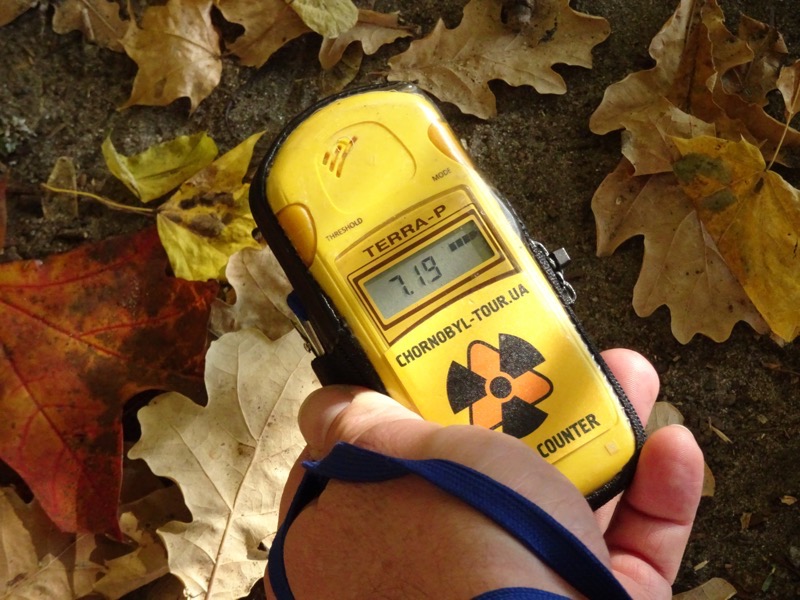
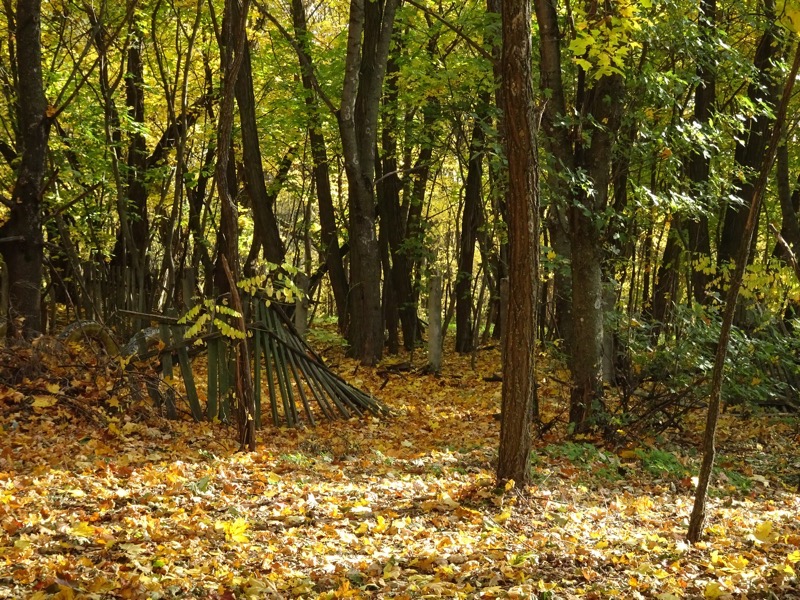 Outside the kindergarten… there are man objects laying around that look like they have been just in situ for many years. But I imagine most of them were placed by avid photographers over the years. I didn’t touch or move anything… as ‘found object’ photography sites go, this place is crazy.
Outside the kindergarten… there are man objects laying around that look like they have been just in situ for many years. But I imagine most of them were placed by avid photographers over the years. I didn’t touch or move anything… as ‘found object’ photography sites go, this place is crazy.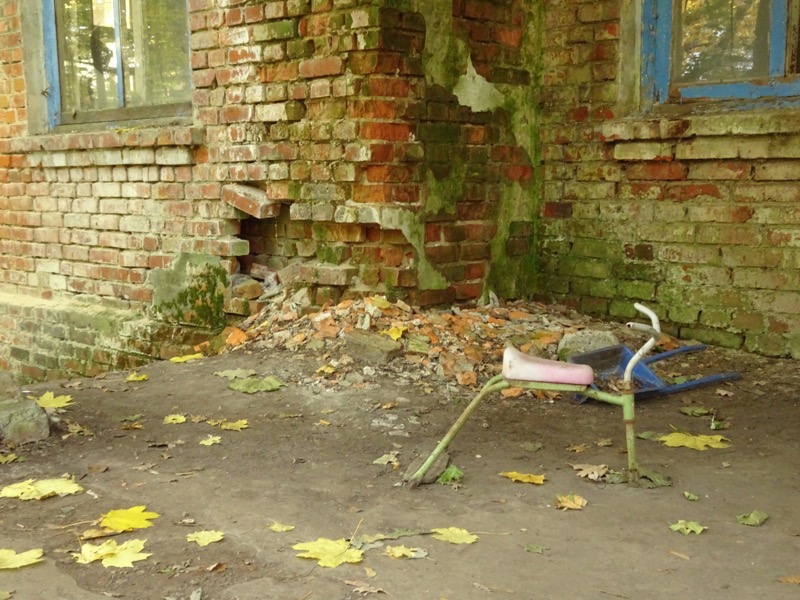
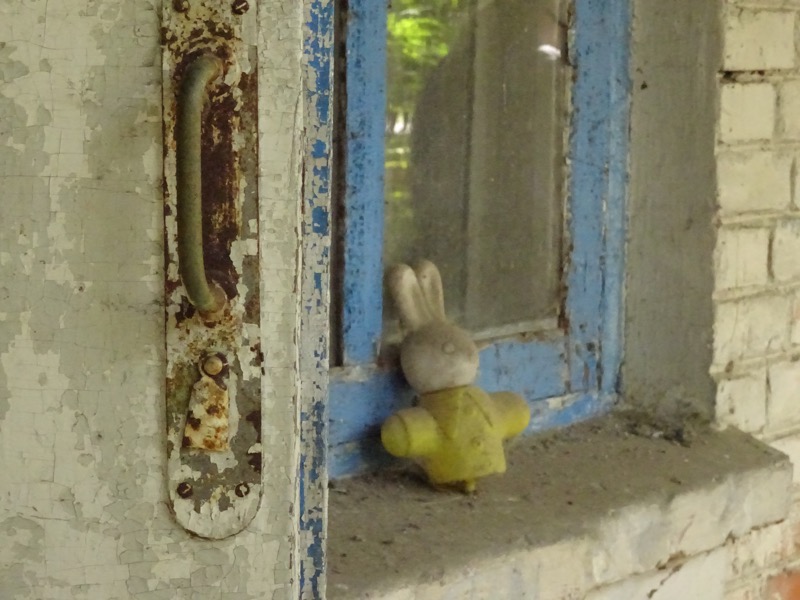
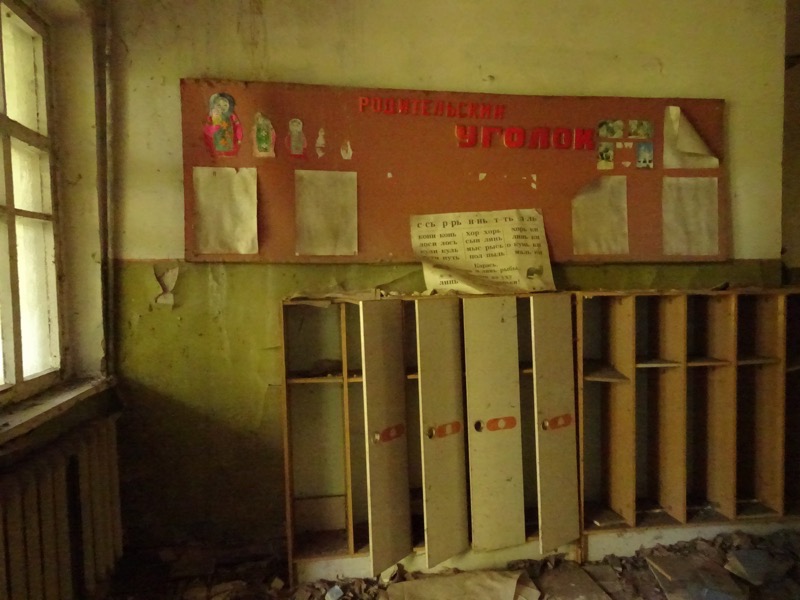
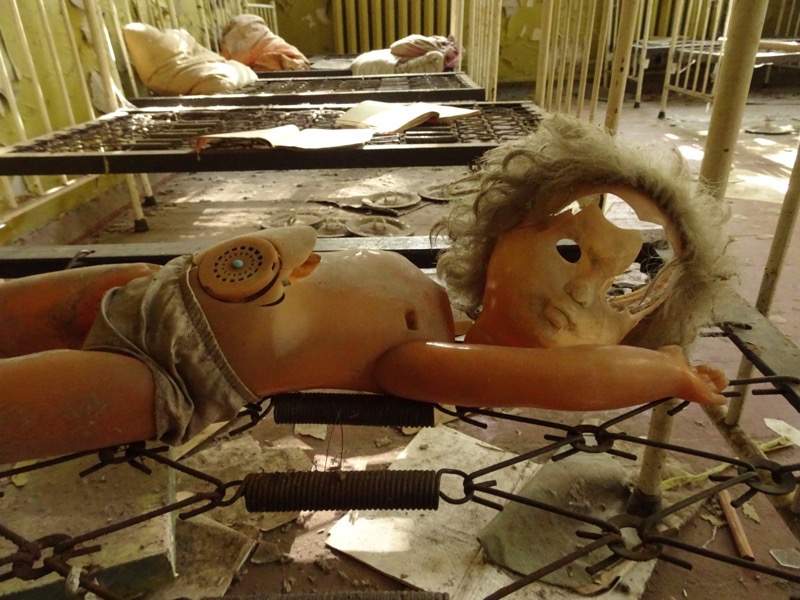
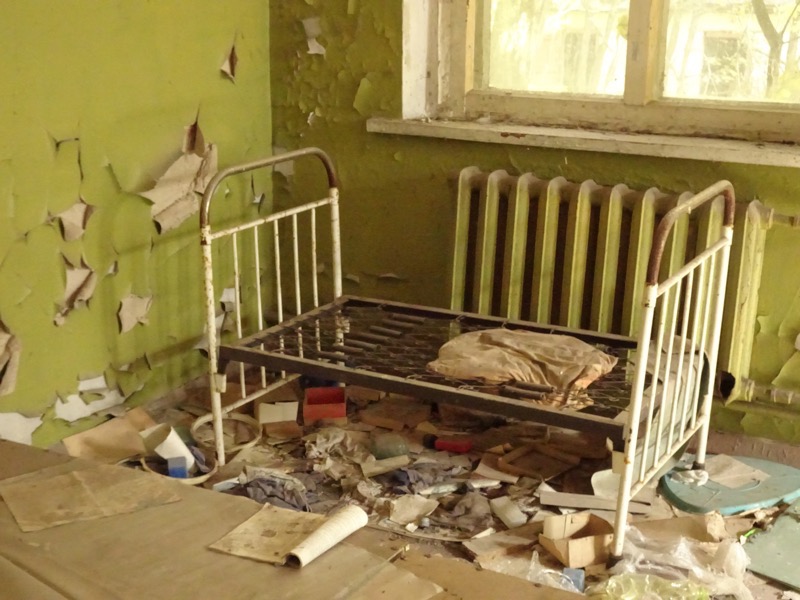
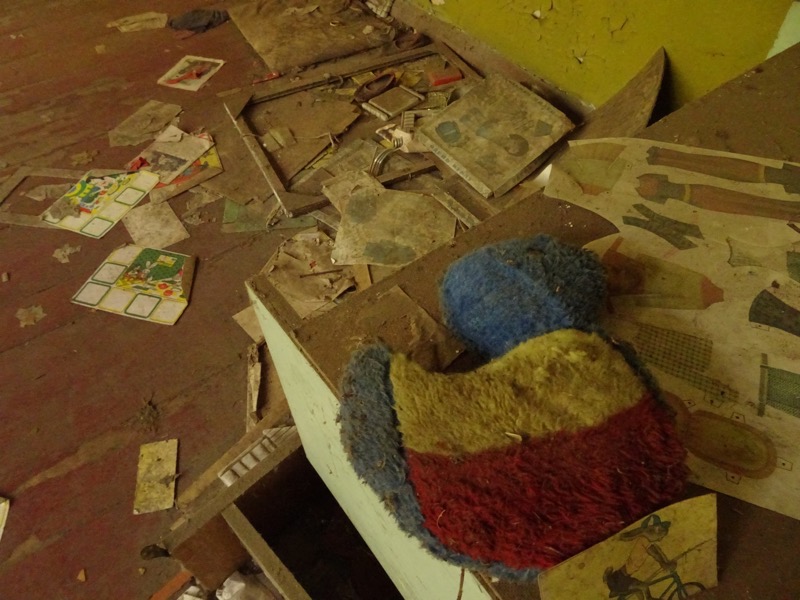
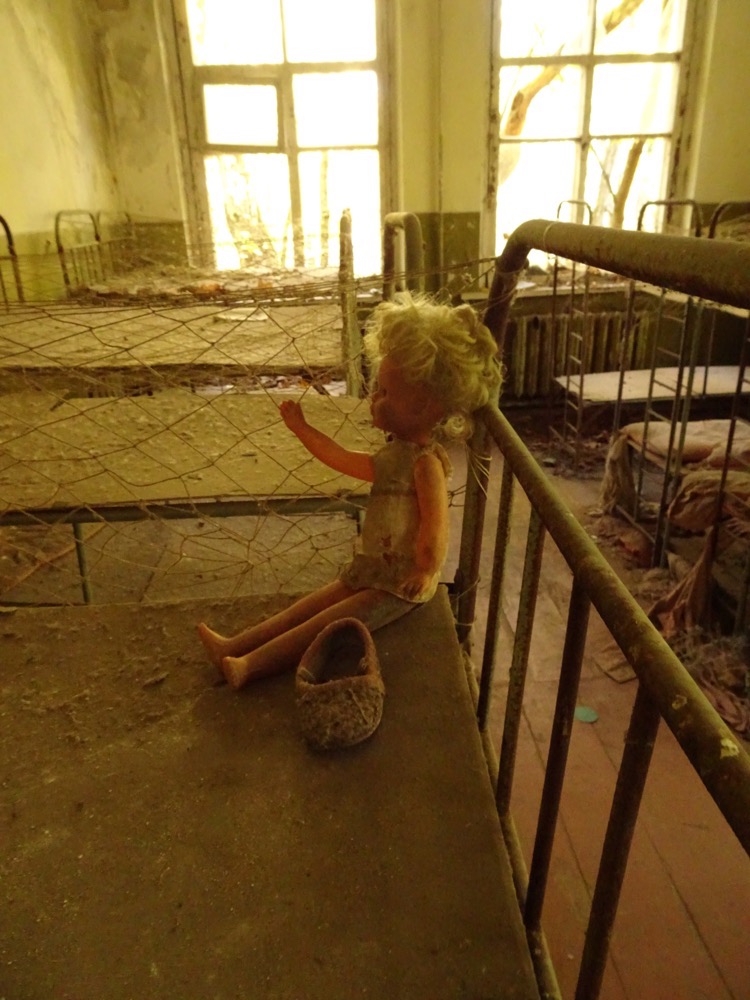
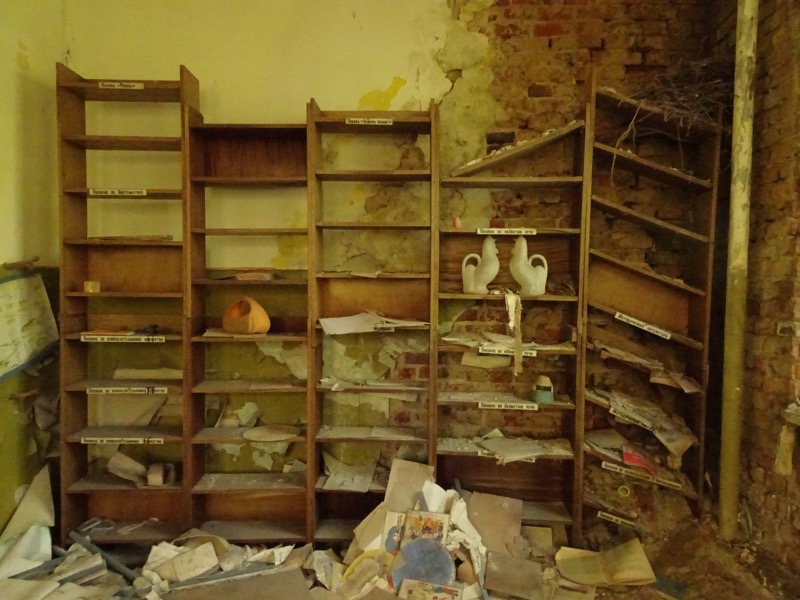
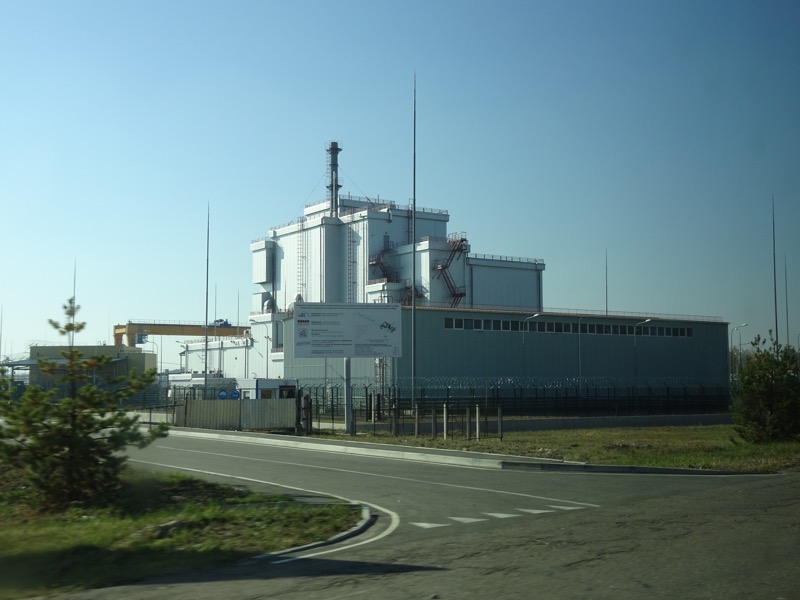 We also went past a concrete factor that was purpose-built after The Incident because so much concrete was needed to built the original Sarcophagus that covered the Number 4 reactor in 1986, that logistically it was more sensible to build a concrete factory rather than ship concrete in.
We also went past a concrete factor that was purpose-built after The Incident because so much concrete was needed to built the original Sarcophagus that covered the Number 4 reactor in 1986, that logistically it was more sensible to build a concrete factory rather than ship concrete in.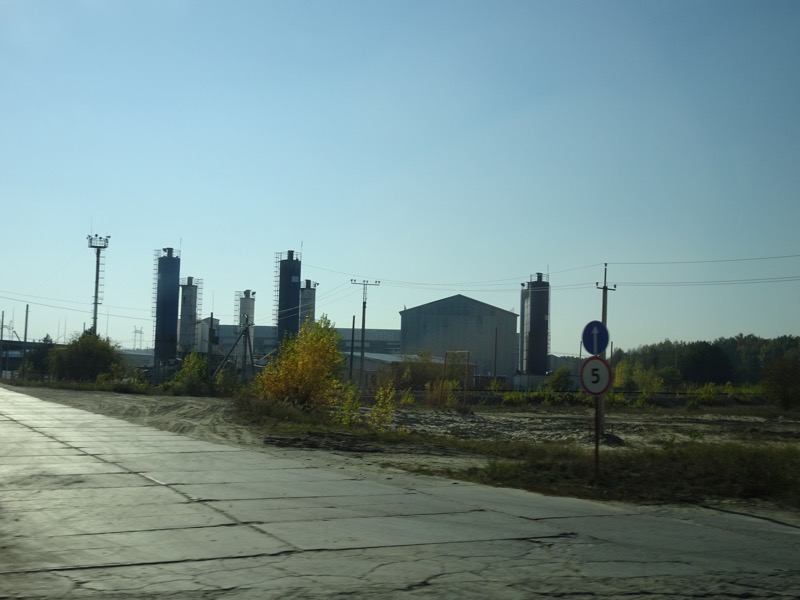
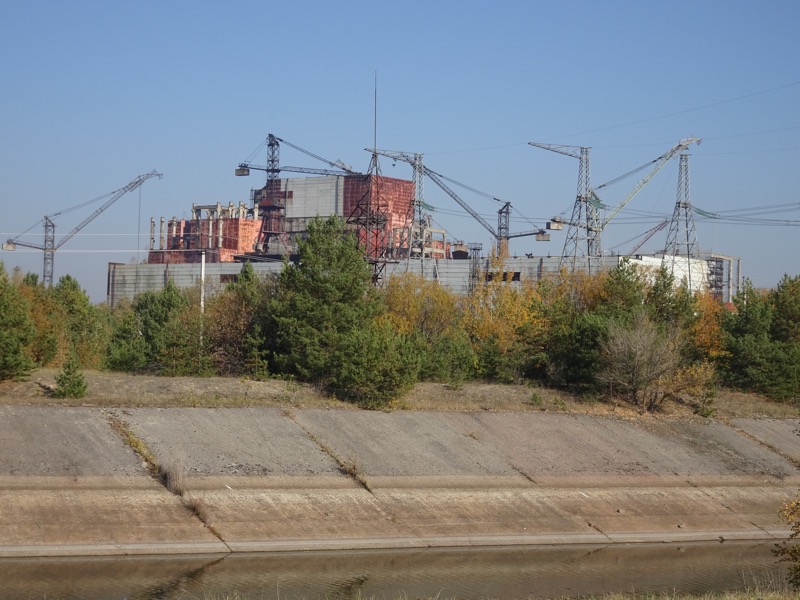
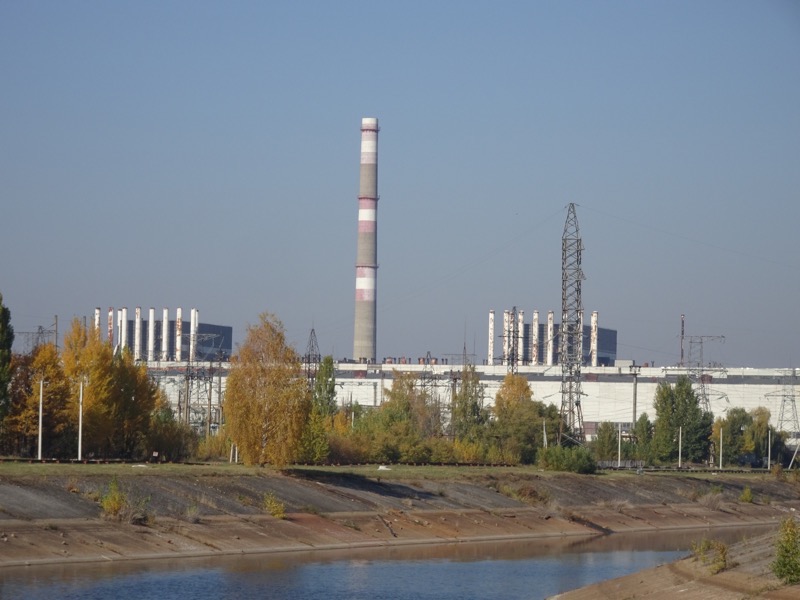 We were going for an ‘ecologically-clean dinner in a Chernobyl state canteen’ that was purpose-built for the Exclusion zone workers, or as Vicky kept referring to it: Atomic Lunch. To enter the canteen, we all had to pass through a decontamination frame to make sure we had no radioactive material on our person or on our belongings. The food is all shipped safely in from Kiev and none of it is sourced locally.
We were going for an ‘ecologically-clean dinner in a Chernobyl state canteen’ that was purpose-built for the Exclusion zone workers, or as Vicky kept referring to it: Atomic Lunch. To enter the canteen, we all had to pass through a decontamination frame to make sure we had no radioactive material on our person or on our belongings. The food is all shipped safely in from Kiev and none of it is sourced locally.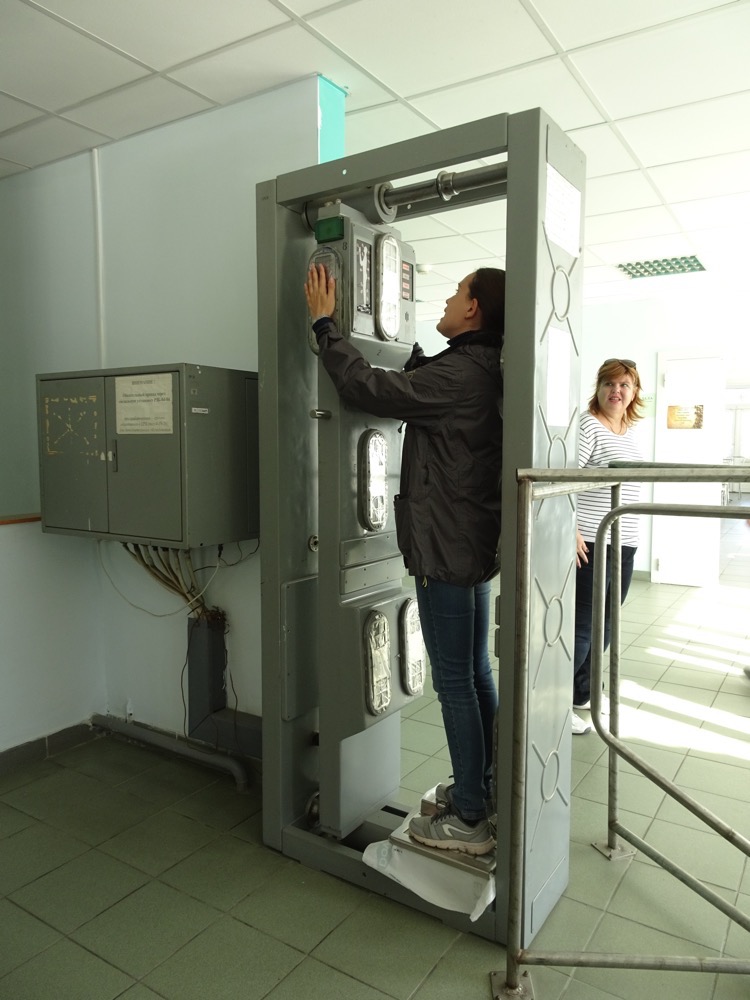 The industrial canteen had quite the set up an din a huge hall. Staffed by stern Ukranian women, lunch was whatever they put on your tray (vegetarian option available).
The industrial canteen had quite the set up an din a huge hall. Staffed by stern Ukranian women, lunch was whatever they put on your tray (vegetarian option available).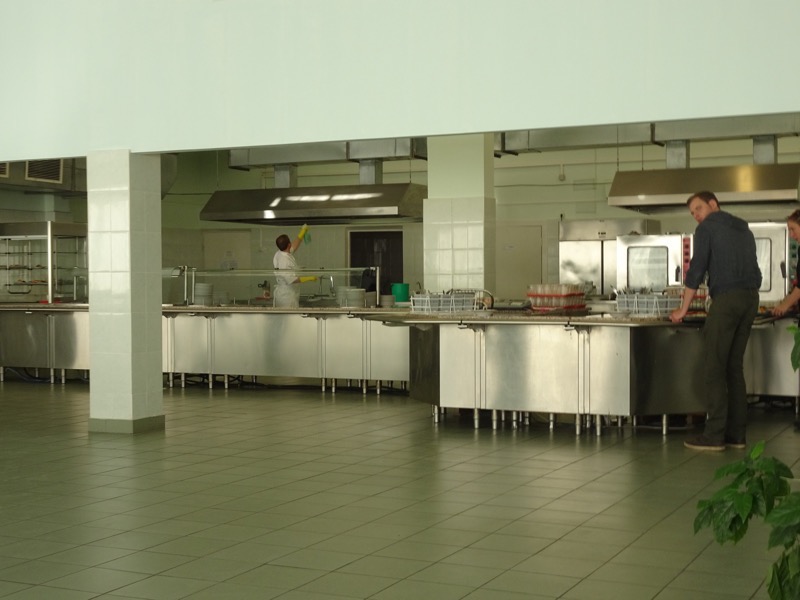
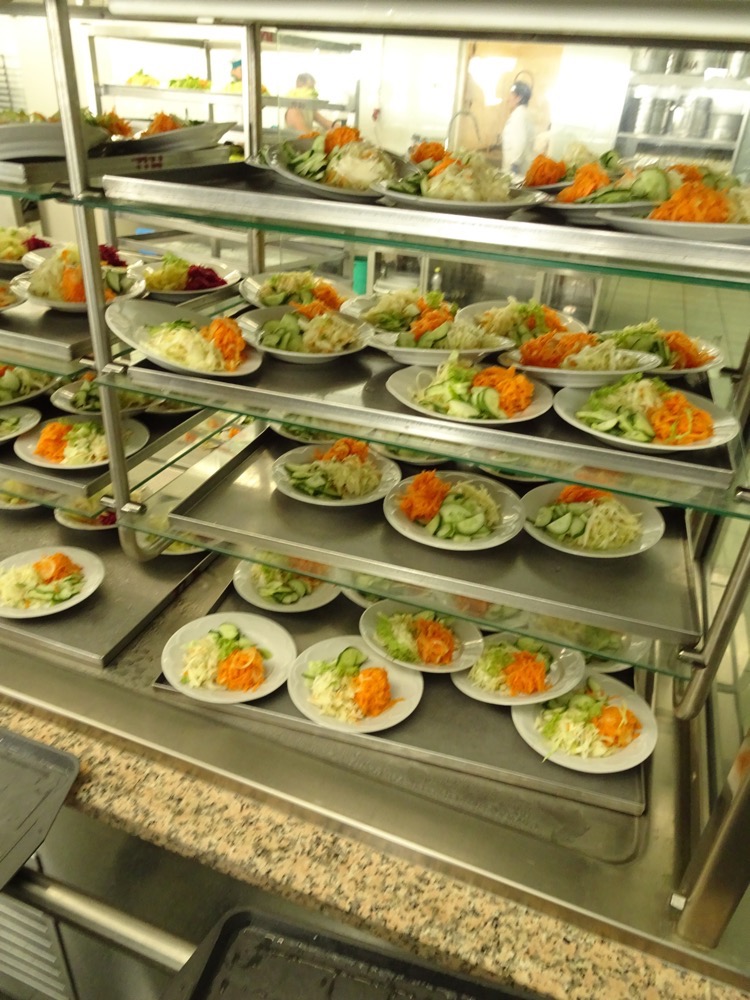 Cabbage, carrots and beetroot. Some sort of potato soup. A weird battered and panfried mystery meat thing on rice. Bread. A sweet bun and rhubarb juice.
Cabbage, carrots and beetroot. Some sort of potato soup. A weird battered and panfried mystery meat thing on rice. Bread. A sweet bun and rhubarb juice.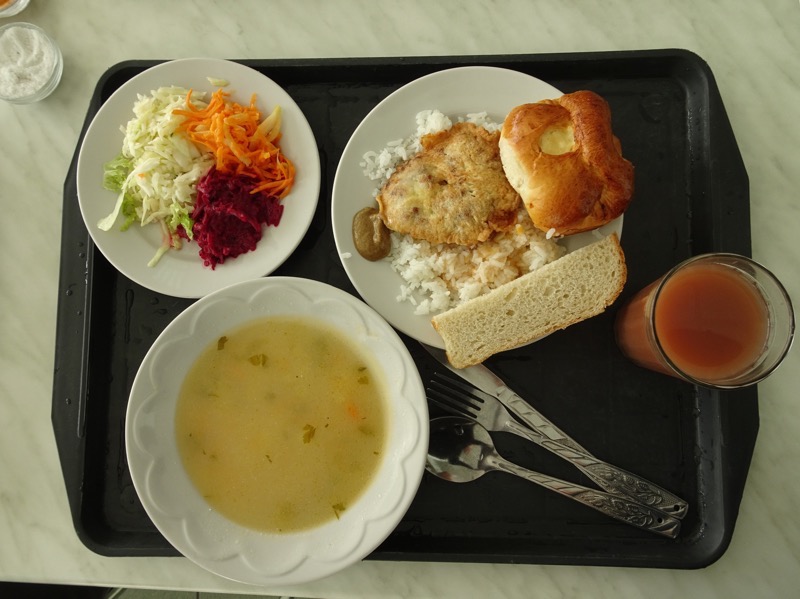 Outside was this mysterious piece of art that was commissioned by a local artist to adorn the city of Pripyat prior to the 1986 nuclear disaster. Apparently, after the disaster occurred, no one was interested in the artwork anymore and so the artist never got paid for this work. It is supposed to be a dove, looking back and holding a flower and represent a conjoining of nations or something to do with the Soviet Union being a singular cohesive state. Who knows? #modernart
Outside was this mysterious piece of art that was commissioned by a local artist to adorn the city of Pripyat prior to the 1986 nuclear disaster. Apparently, after the disaster occurred, no one was interested in the artwork anymore and so the artist never got paid for this work. It is supposed to be a dove, looking back and holding a flower and represent a conjoining of nations or something to do with the Soviet Union being a singular cohesive state. Who knows? #modernart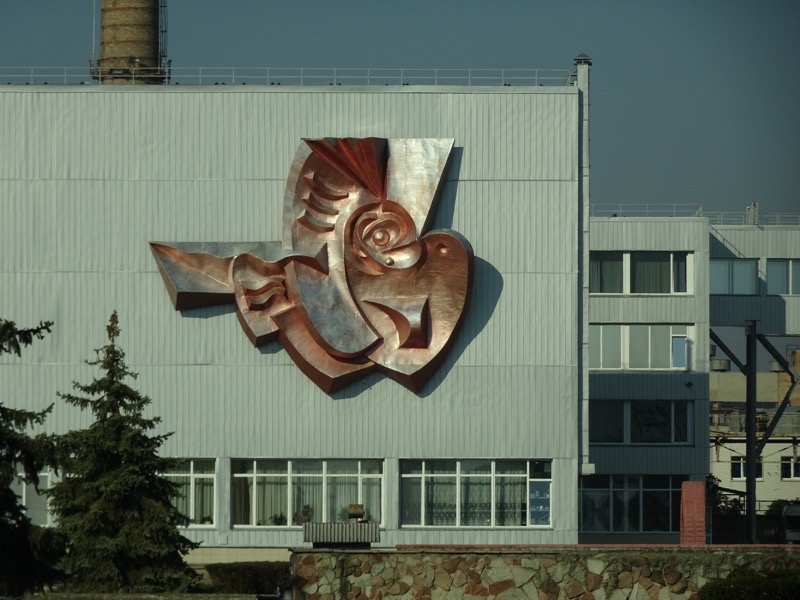 The statue of Prometheus that used to be in the middle of Pripyat, but has been moved here to ChNNP to keep it safe from Stalkers.
The statue of Prometheus that used to be in the middle of Pripyat, but has been moved here to ChNNP to keep it safe from Stalkers.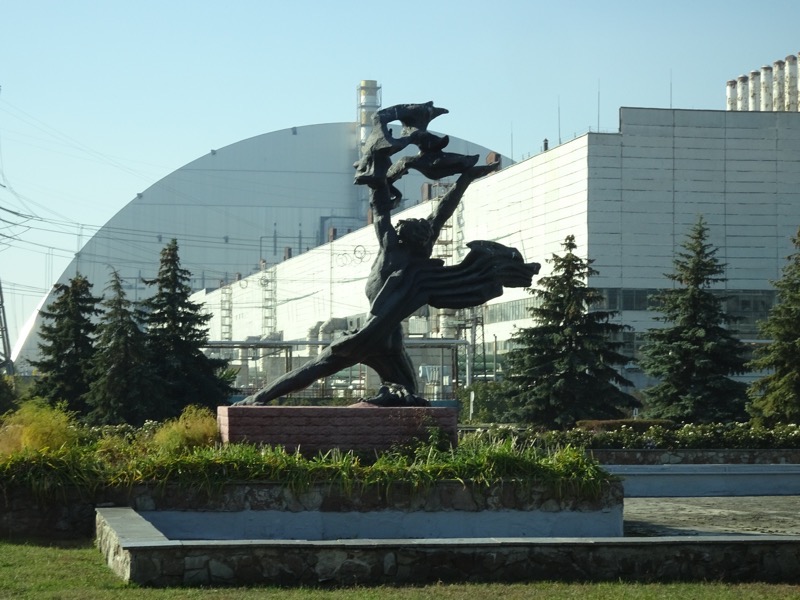
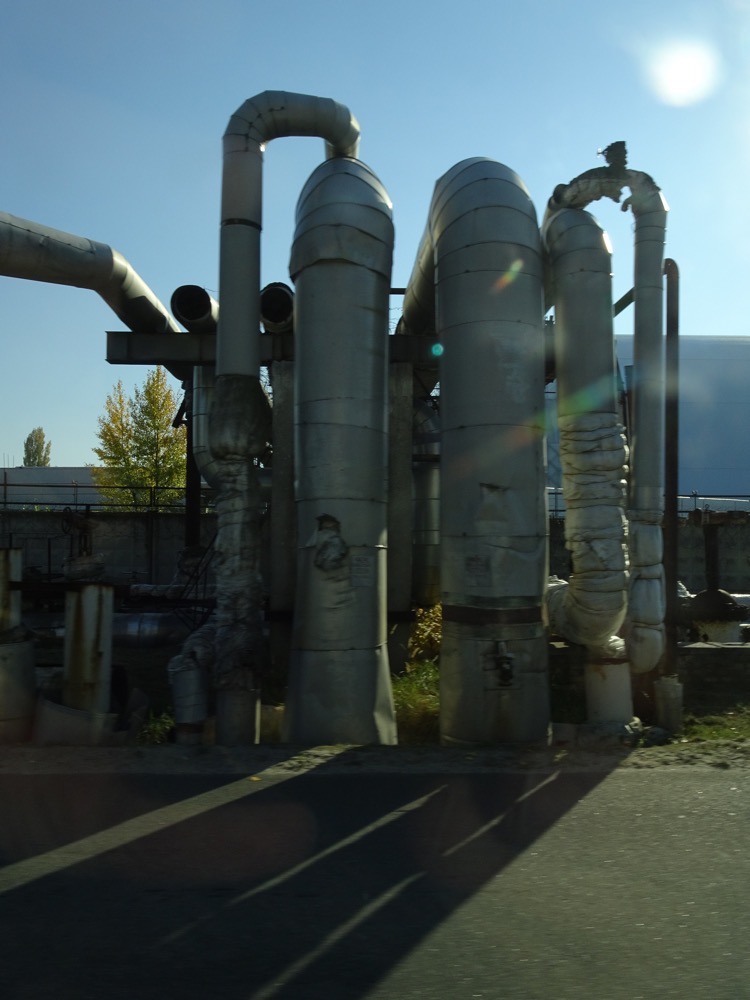 So now we are finally arriving at Chernobyl NPP, the site of the late-night safety test which failed spectacularly on so many levels as leave the world with the word ‘Chernobyl’ being synonymous with ‘catastrophic disaster on an unimaginable scale’. The test was to simulate a situation where the station had a blackout power-failure. In the course of tests, various safety systems were deliberately turned off. From here, a combination of inherent reactor design flaws and human errors in the form of reactor operators arranging the nuclear core in a manner that was somewhat contrary to the actual checklist for the testing eventually resulted in an uncontrolled reaction condition (read: monumental cluster fuck). Water used to cool the reactions flashed into steam which generated a massive steam explosion that blew the 1,200-tonne concrete roof off the reactor, which led to an open-air, extremely radioactive, graphite fire. This fire was spewing radioactive material as much as 1km into the atmosphere and produced considerable updrafts for about nine days. Nine days during which none of the people surrounding the reactor were evacuated. These plumes of fission materials that were being spewed into the atmosphere. During the fire that burned for days, they estimated that approximately the same amount of airborne fission material was released continuously as was released on the initial explosion. The radioactive material blew and landed according to prevailing winds in two directions to the west and then to the north, before finally precipitation onto large areas of Western Russia and central Europe… during which time, the Soviet Government was busy assuring everyone, that everything was fine.
So now we are finally arriving at Chernobyl NPP, the site of the late-night safety test which failed spectacularly on so many levels as leave the world with the word ‘Chernobyl’ being synonymous with ‘catastrophic disaster on an unimaginable scale’. The test was to simulate a situation where the station had a blackout power-failure. In the course of tests, various safety systems were deliberately turned off. From here, a combination of inherent reactor design flaws and human errors in the form of reactor operators arranging the nuclear core in a manner that was somewhat contrary to the actual checklist for the testing eventually resulted in an uncontrolled reaction condition (read: monumental cluster fuck). Water used to cool the reactions flashed into steam which generated a massive steam explosion that blew the 1,200-tonne concrete roof off the reactor, which led to an open-air, extremely radioactive, graphite fire. This fire was spewing radioactive material as much as 1km into the atmosphere and produced considerable updrafts for about nine days. Nine days during which none of the people surrounding the reactor were evacuated. These plumes of fission materials that were being spewed into the atmosphere. During the fire that burned for days, they estimated that approximately the same amount of airborne fission material was released continuously as was released on the initial explosion. The radioactive material blew and landed according to prevailing winds in two directions to the west and then to the north, before finally precipitation onto large areas of Western Russia and central Europe… during which time, the Soviet Government was busy assuring everyone, that everything was fine.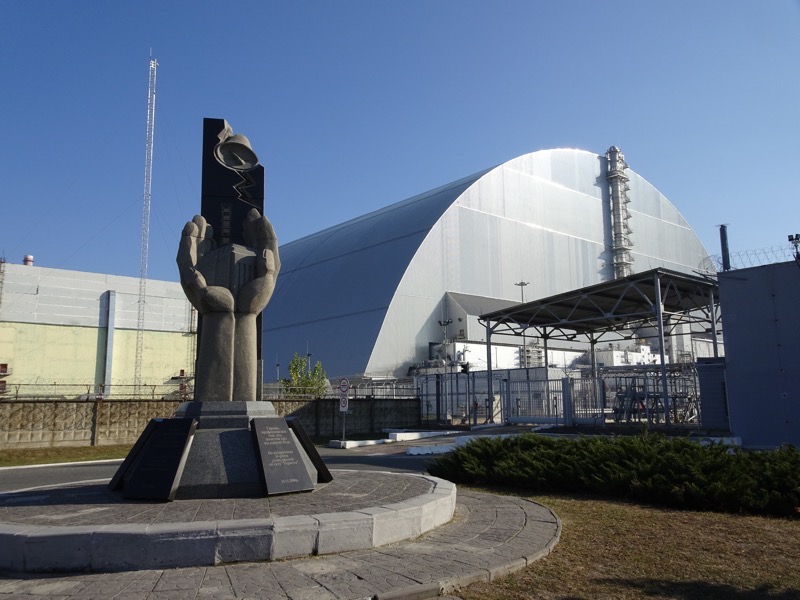
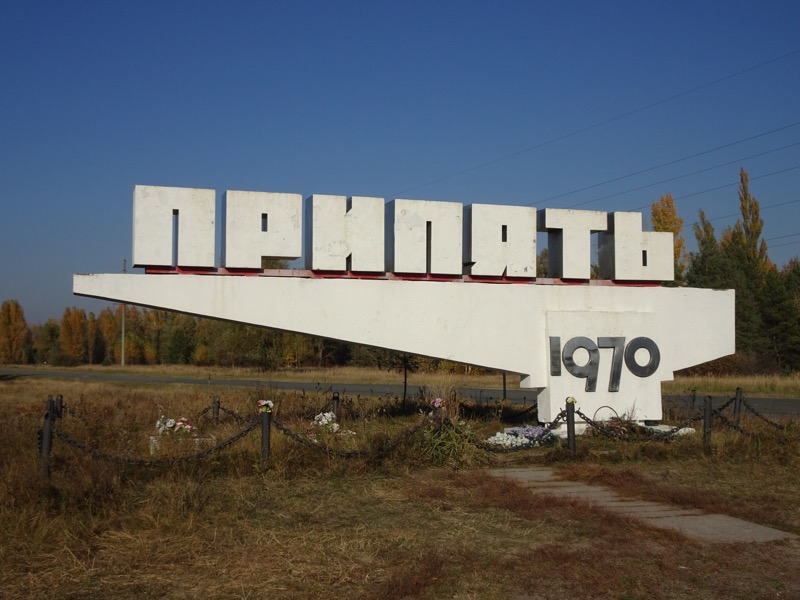 Before the evacuation, Pripyat was a thriving modern Ukranian metropolis with 50,000 people most of whom worked at the power plants. They were on better than average salaries and the city provided all the modern conveniences that a semi-Soviet city would expect. A beautiful river port, Hospital, five kindergartens, ten schools, two swimming pools, cafes, restaurants, two stadiums, an ‘Energetic Palace of Culture’ cultural centre, youth clubs, amusement park and all sort.
Before the evacuation, Pripyat was a thriving modern Ukranian metropolis with 50,000 people most of whom worked at the power plants. They were on better than average salaries and the city provided all the modern conveniences that a semi-Soviet city would expect. A beautiful river port, Hospital, five kindergartens, ten schools, two swimming pools, cafes, restaurants, two stadiums, an ‘Energetic Palace of Culture’ cultural centre, youth clubs, amusement park and all sort.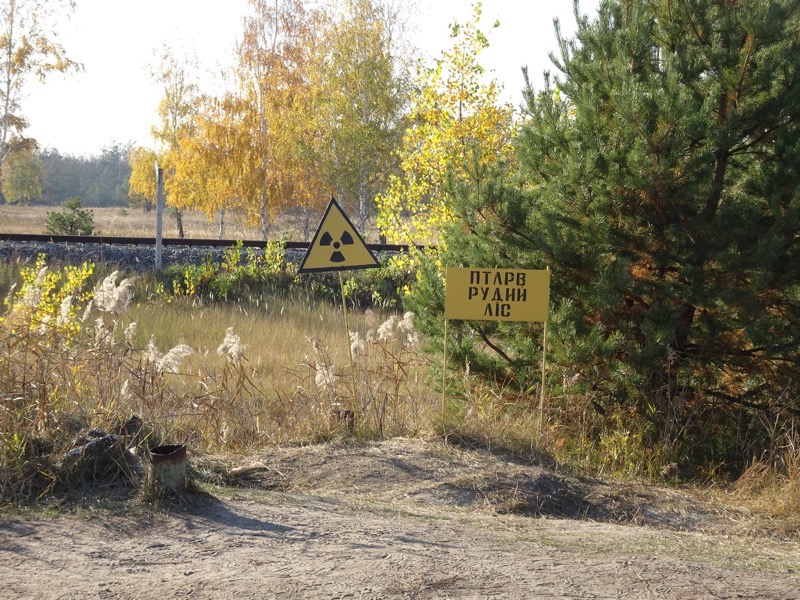
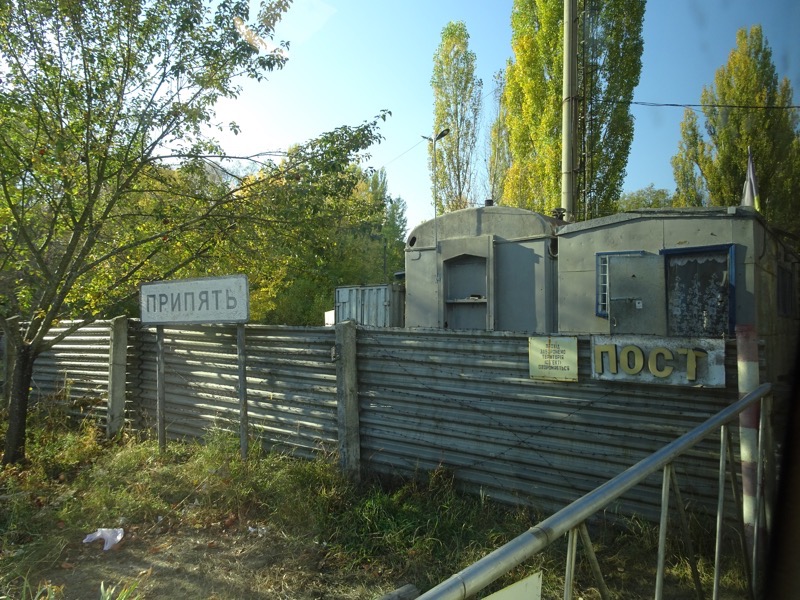
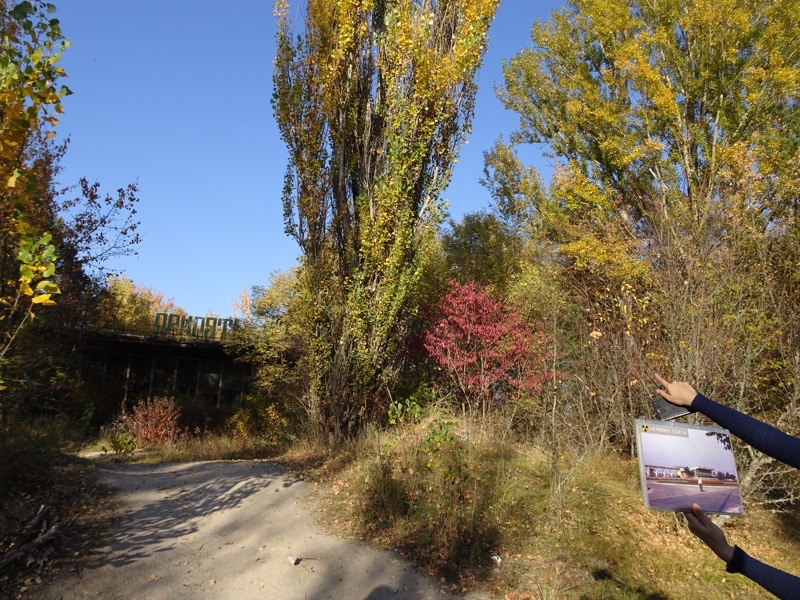
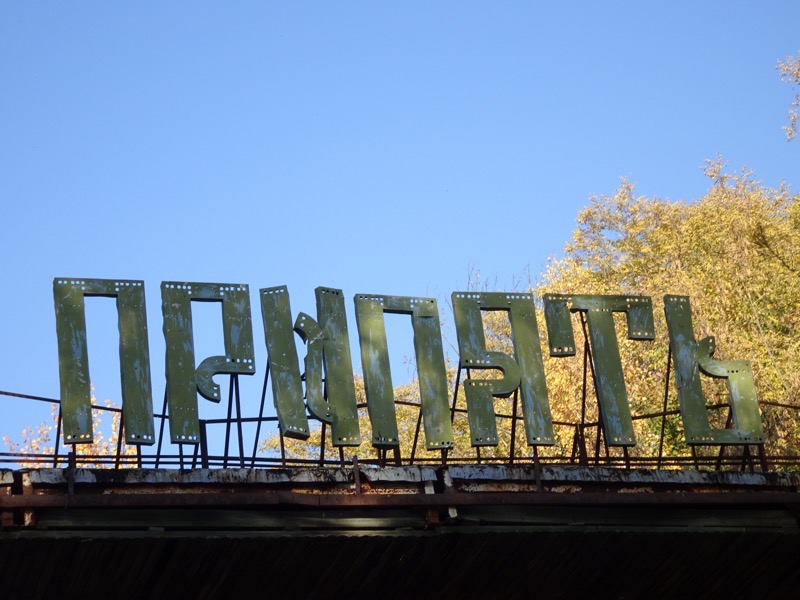 The prestigious Pripyat cafe near the embankment of the river port.
The prestigious Pripyat cafe near the embankment of the river port.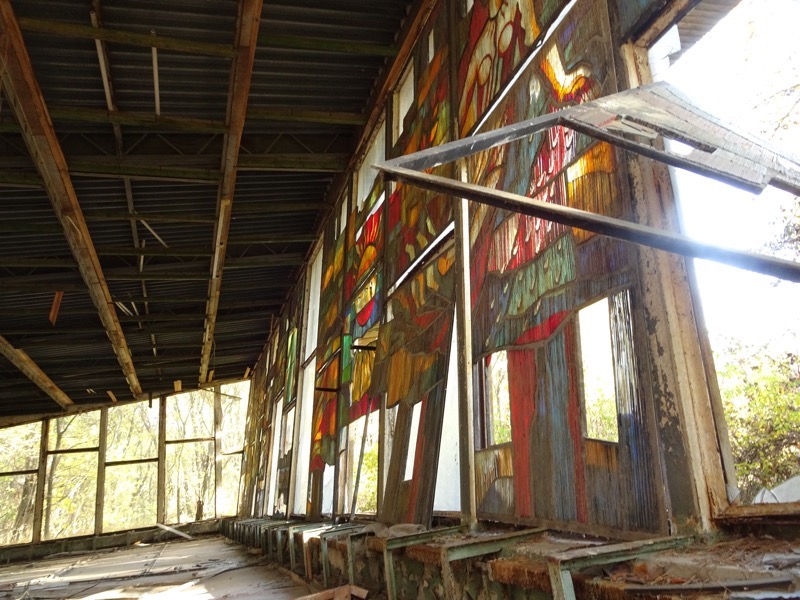
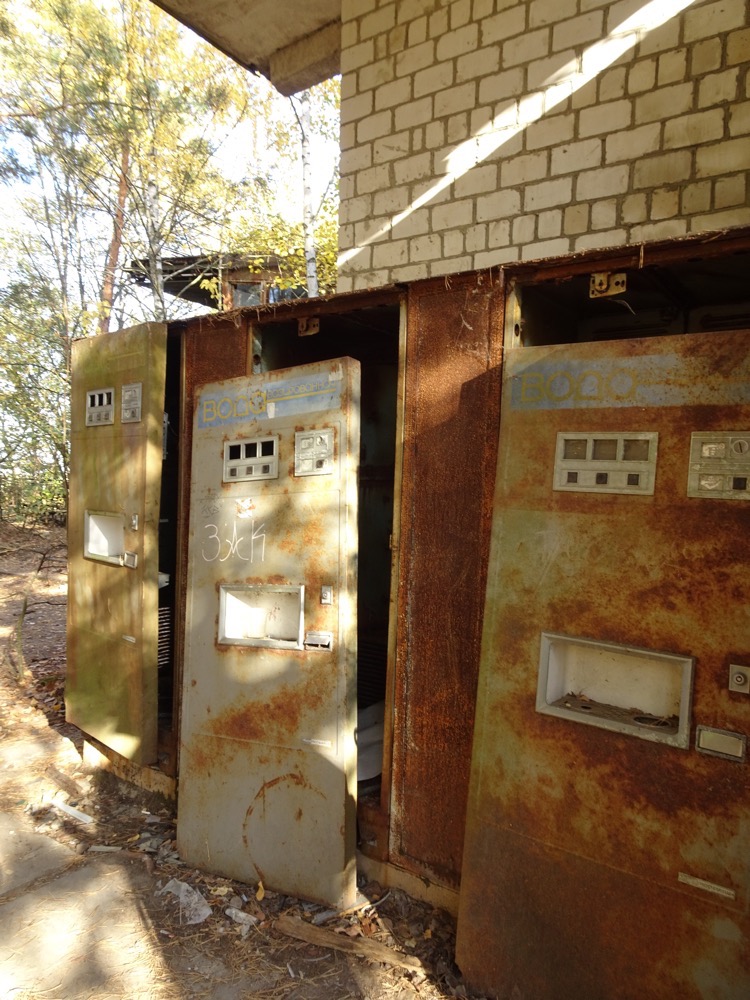
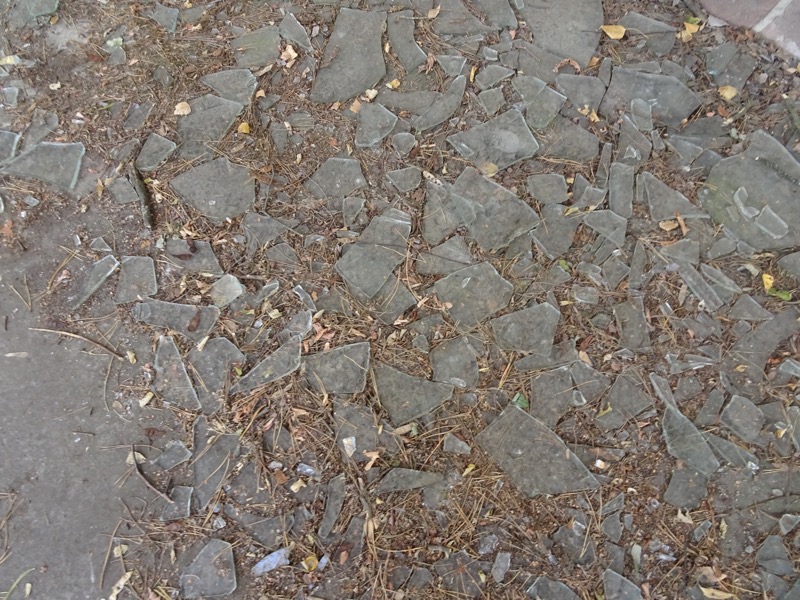
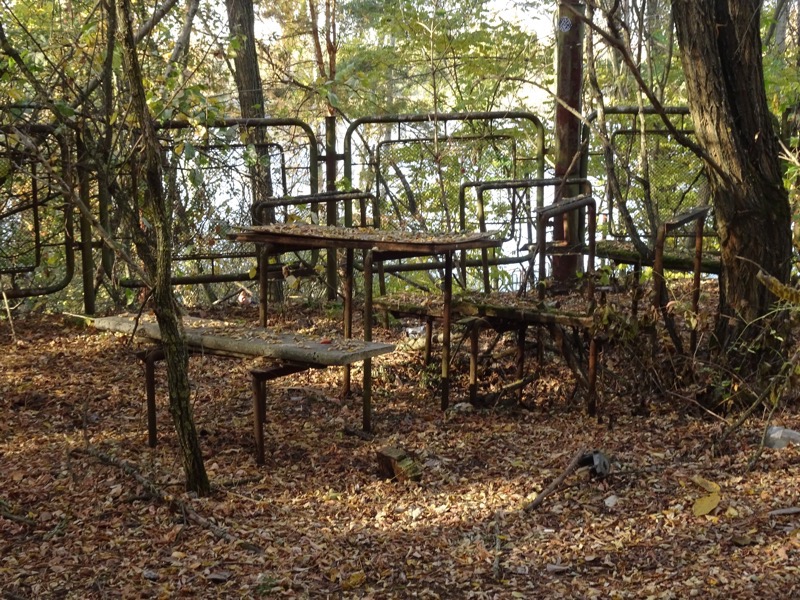
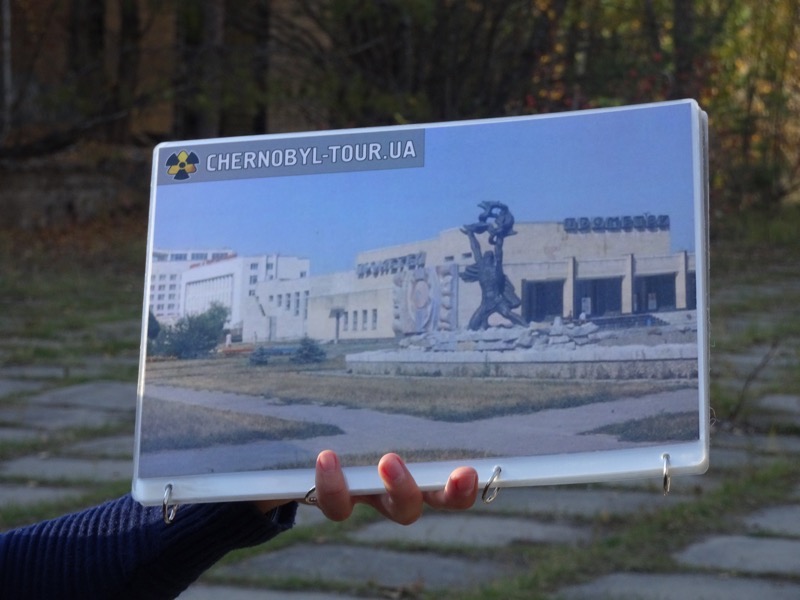 Before and after – the local cinema with the statue of Prometheus that is now situated at ChNNP.
Before and after – the local cinema with the statue of Prometheus that is now situated at ChNNP.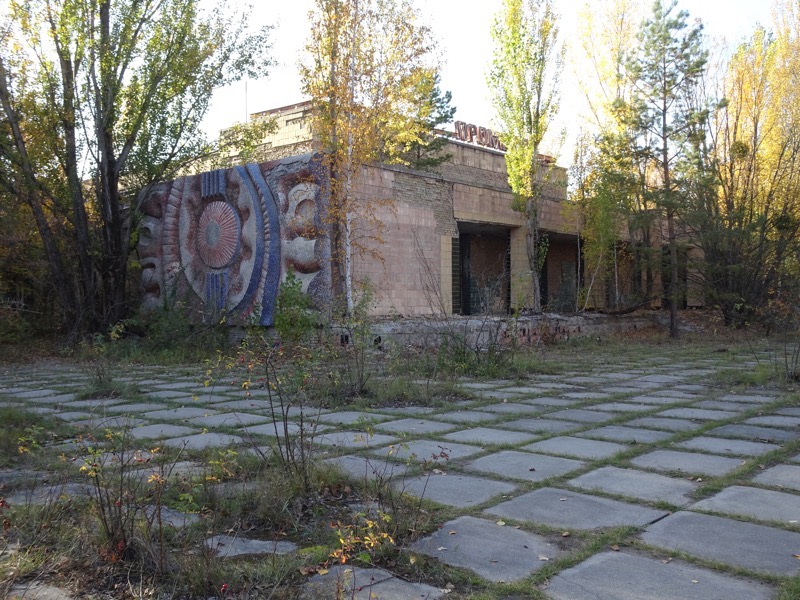 The local cultural centre – known as the ‘Energetic Palace of Culture’ for conventions, weddings,etc.
The local cultural centre – known as the ‘Energetic Palace of Culture’ for conventions, weddings,etc.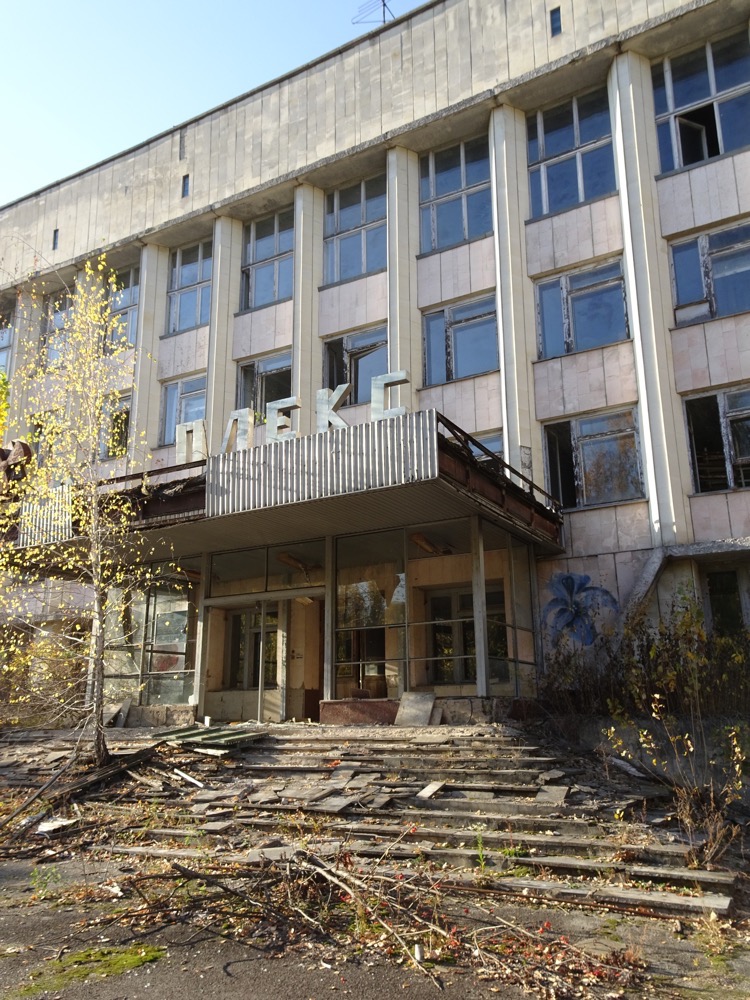
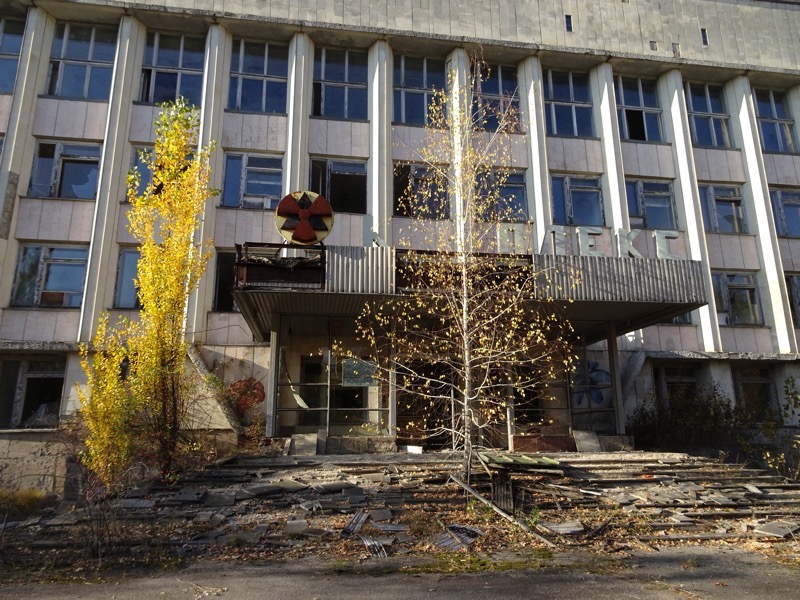
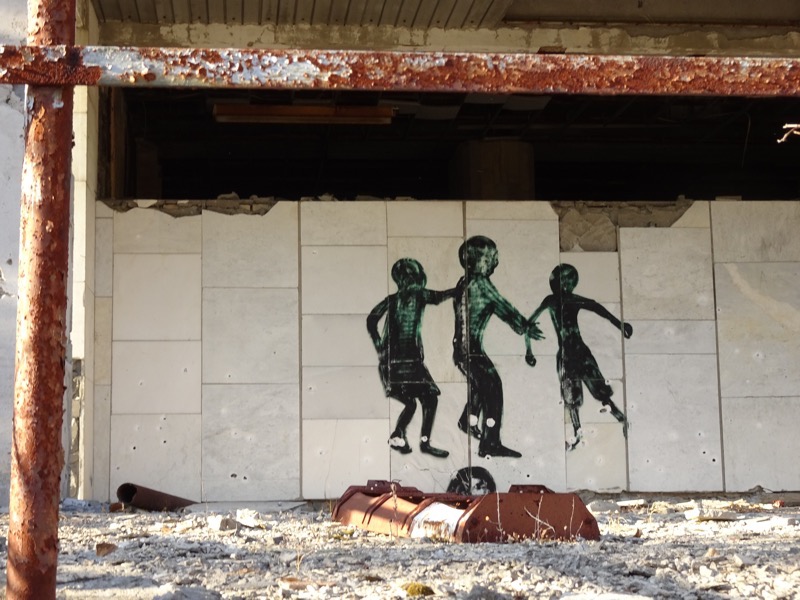
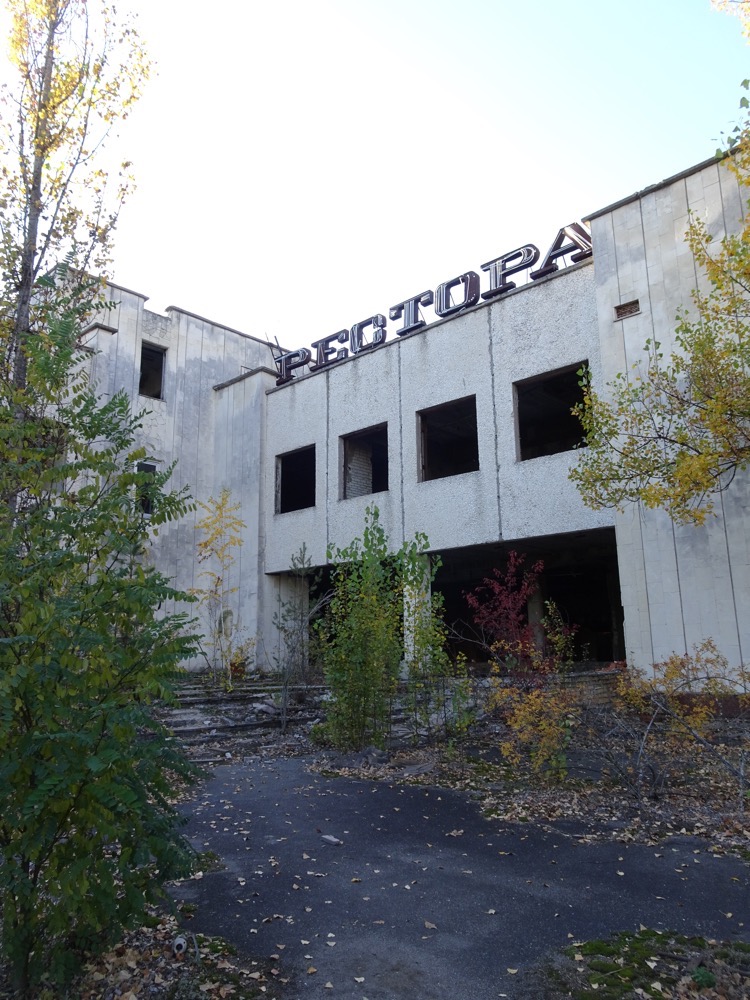 Evidence is everywhere of Stalkers:
Evidence is everywhere of Stalkers: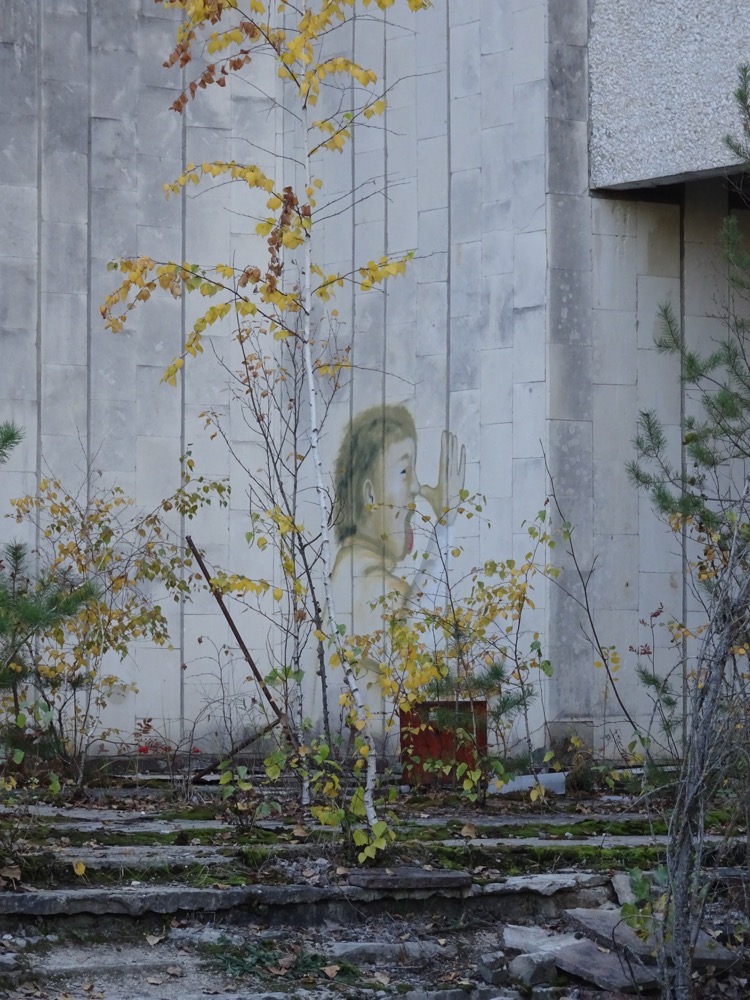
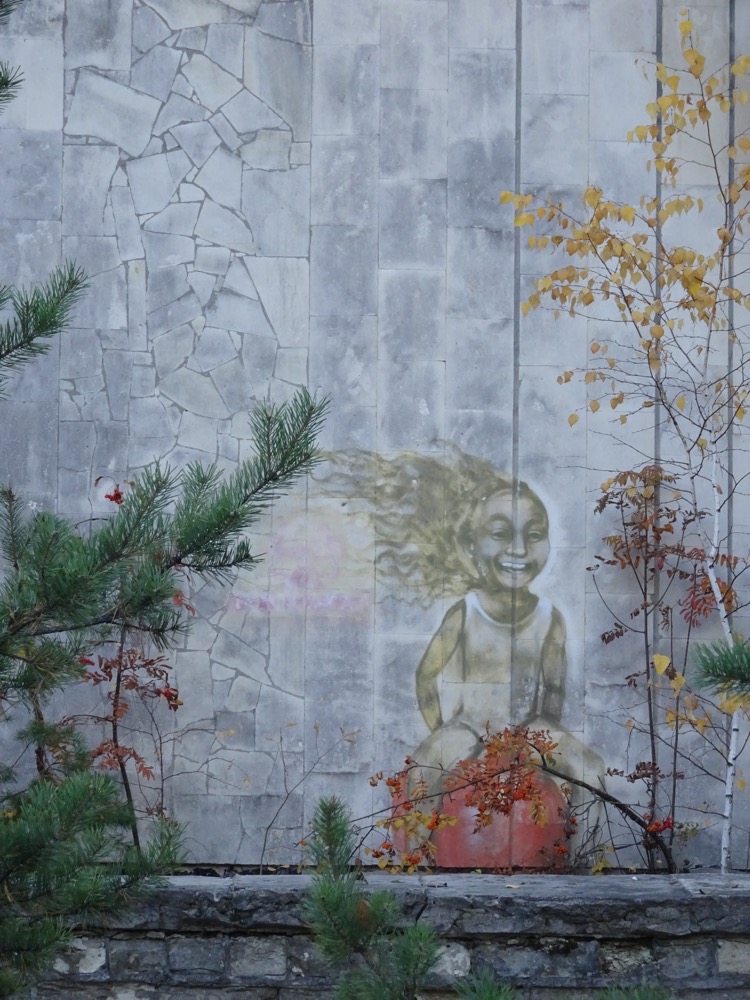
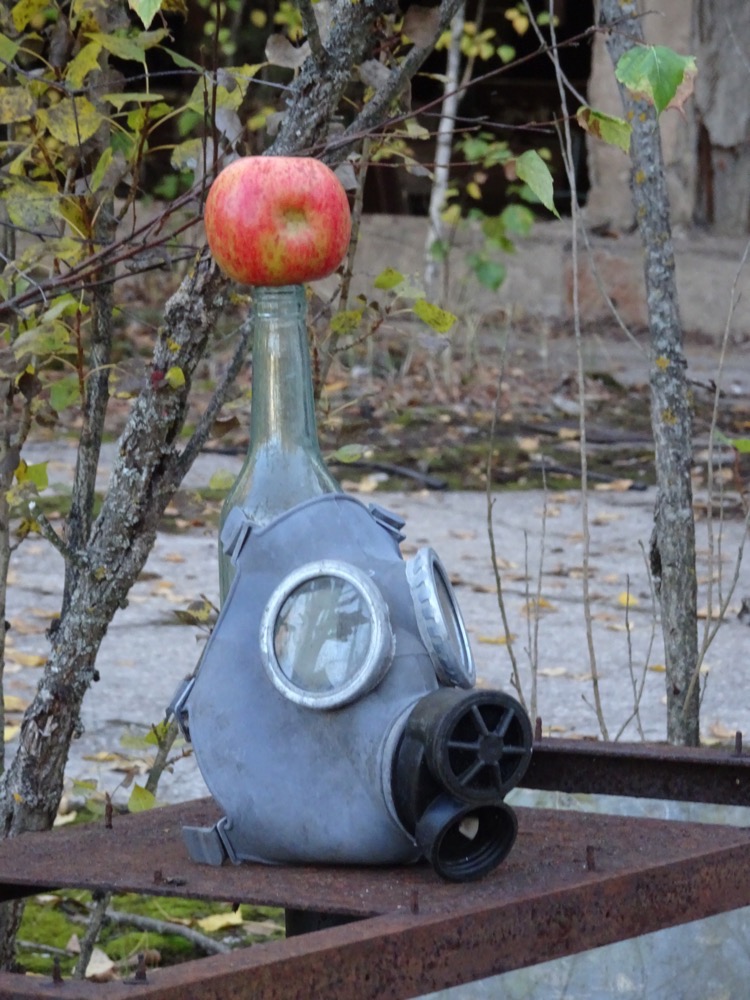 Inside a local market:
Inside a local market: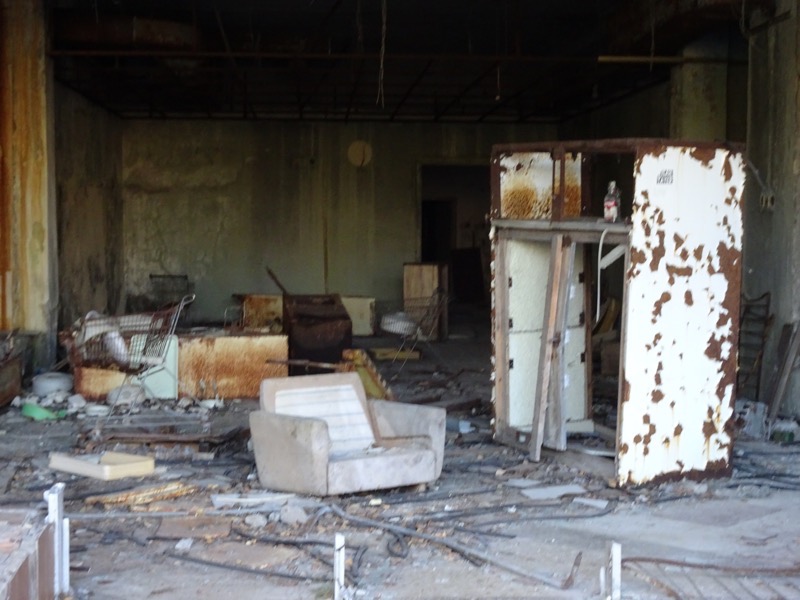
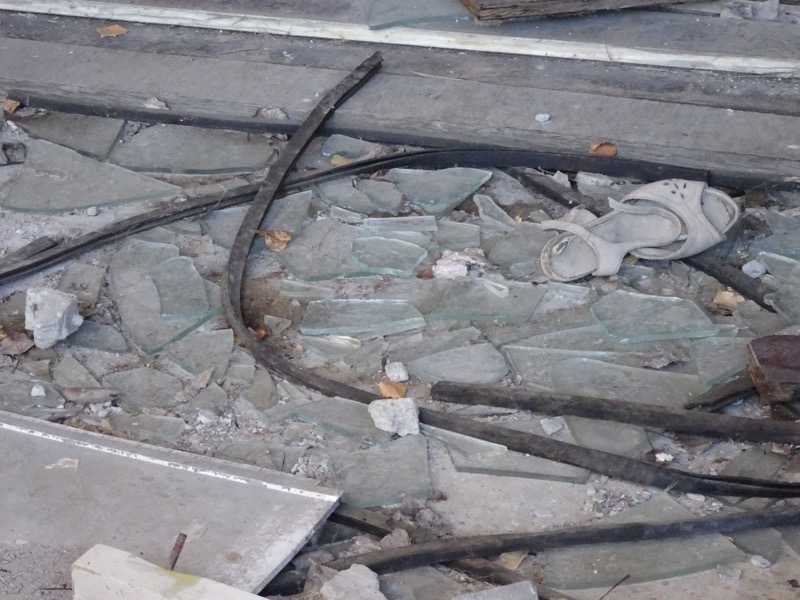
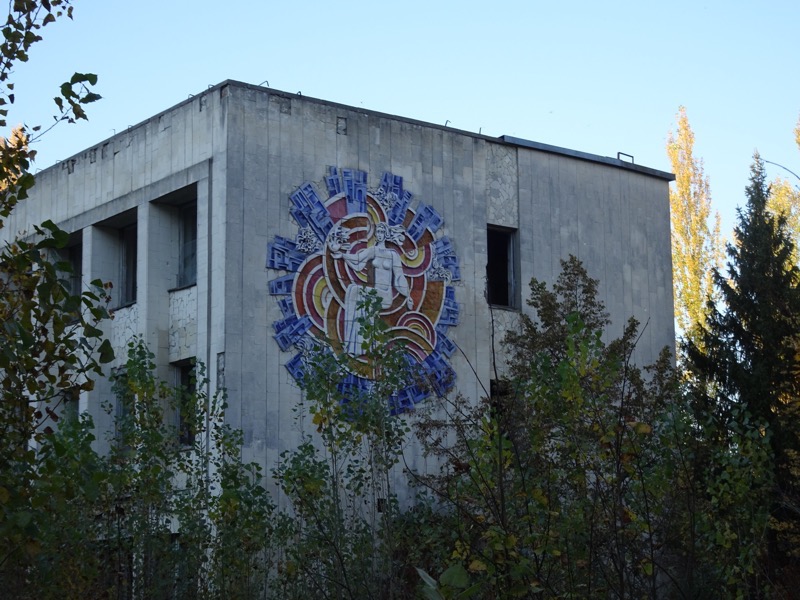
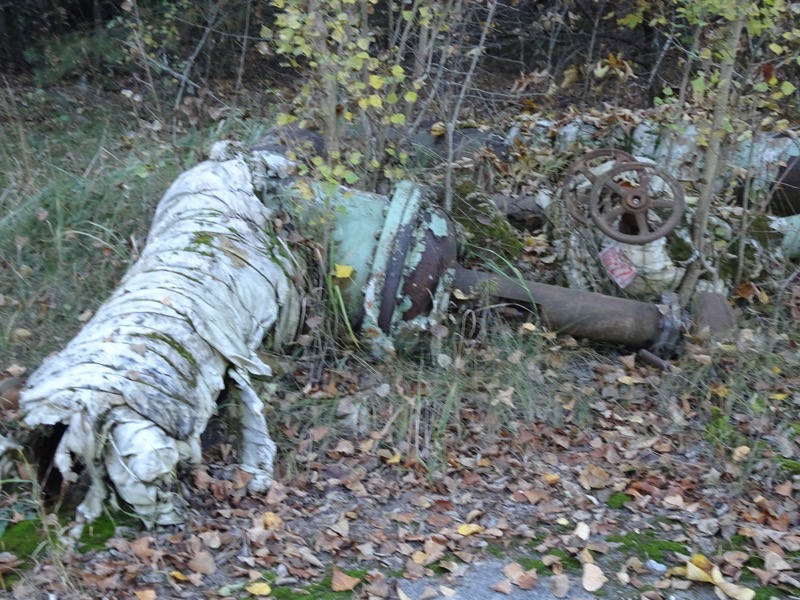
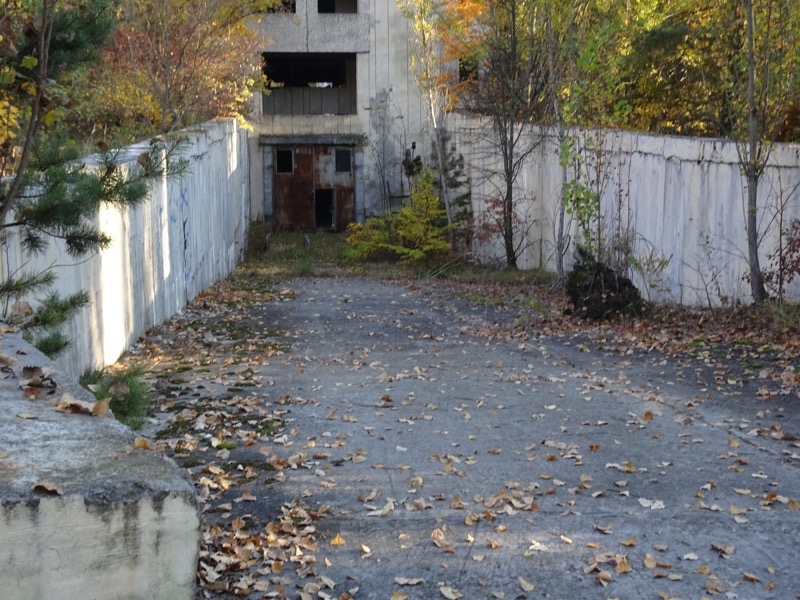
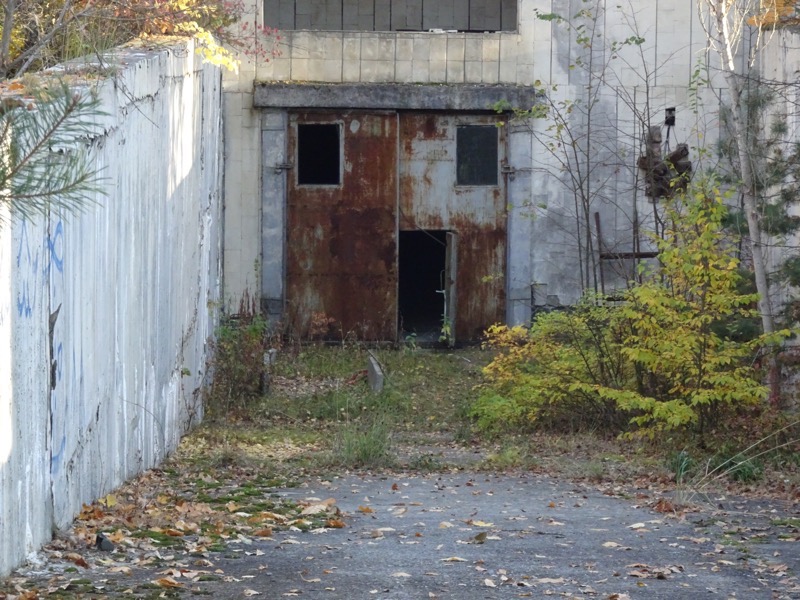
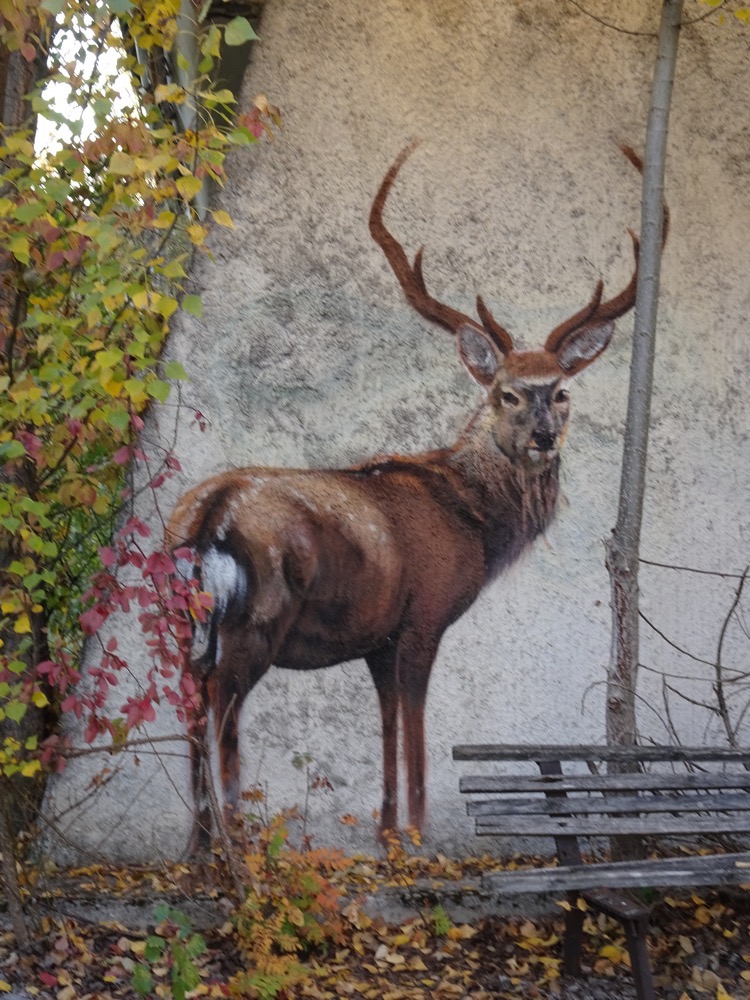 The amusement park:
The amusement park: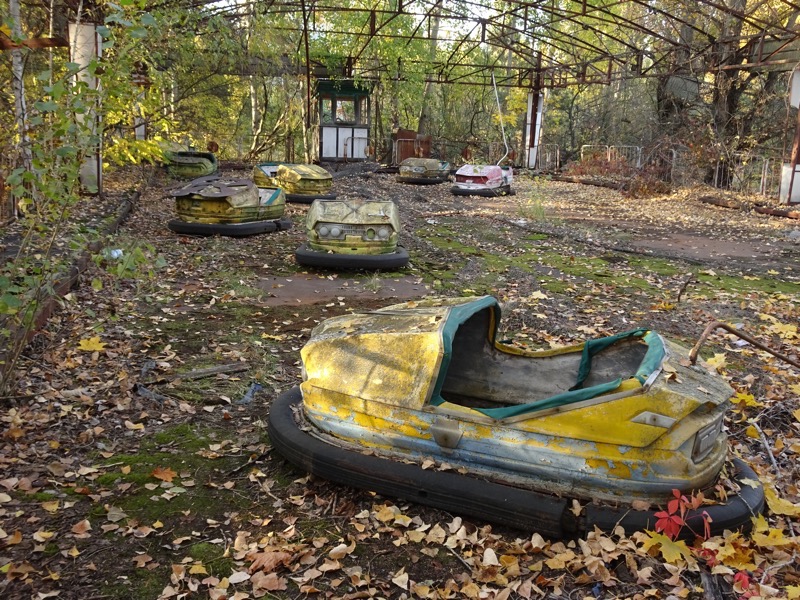
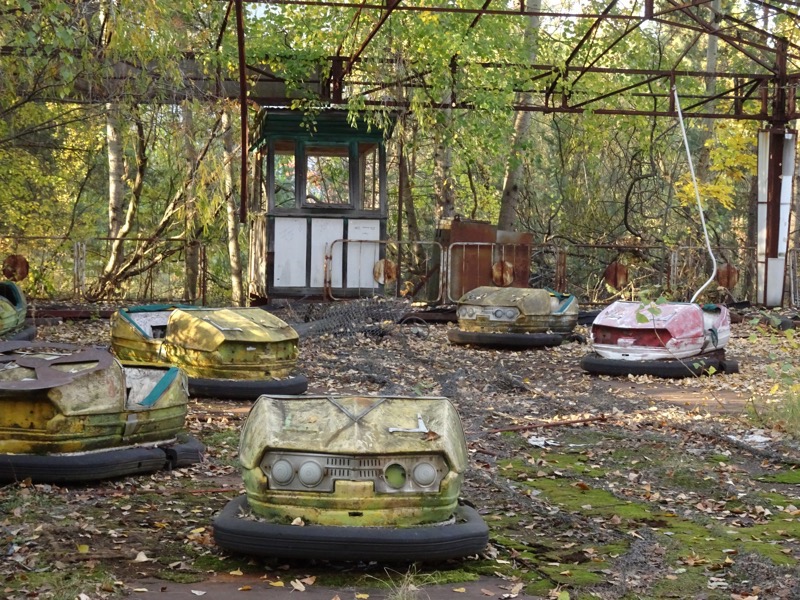
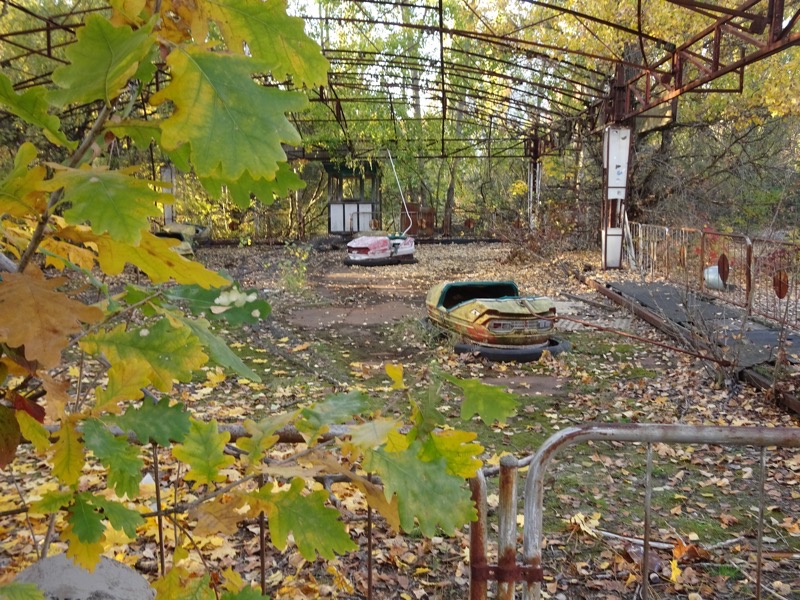
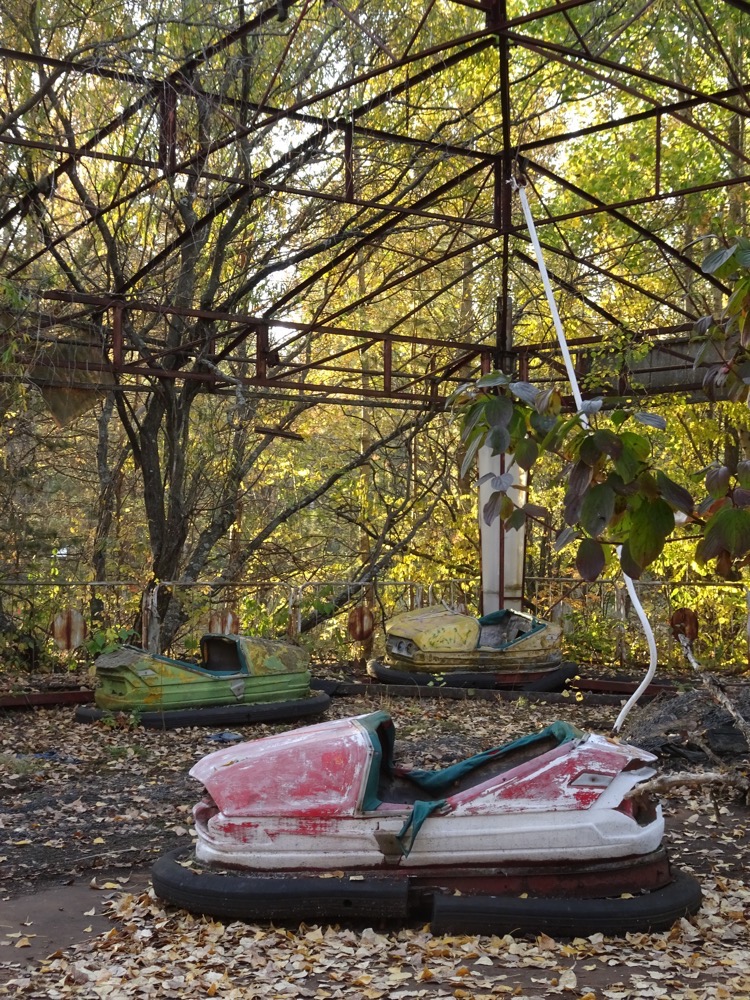
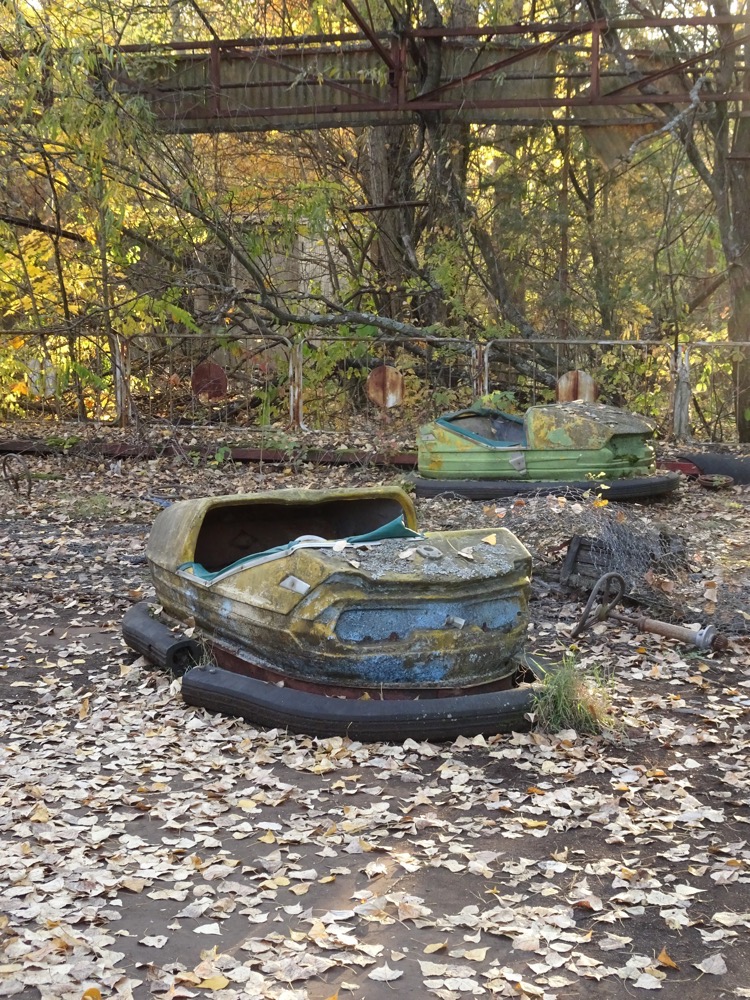
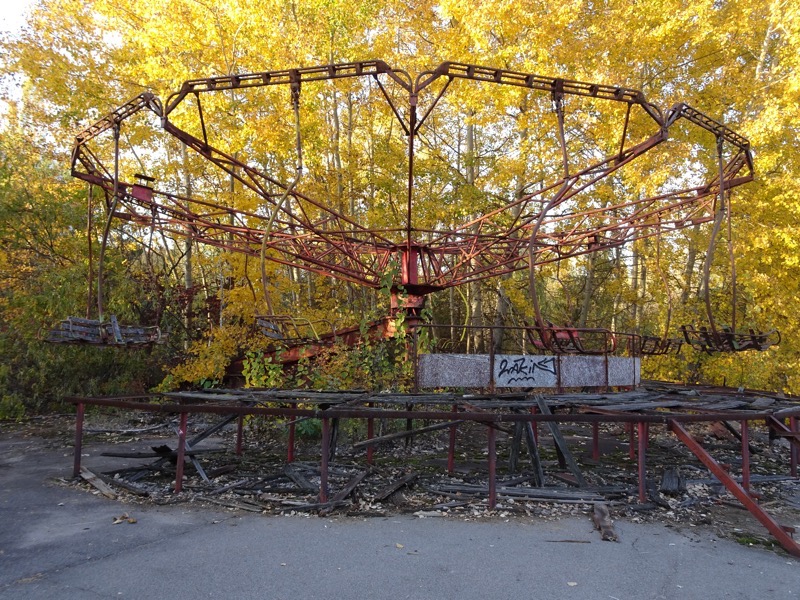
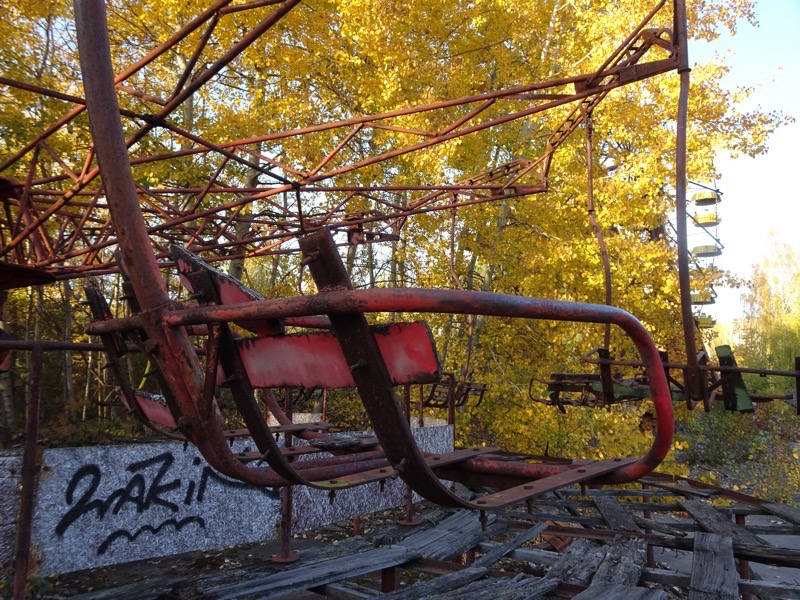
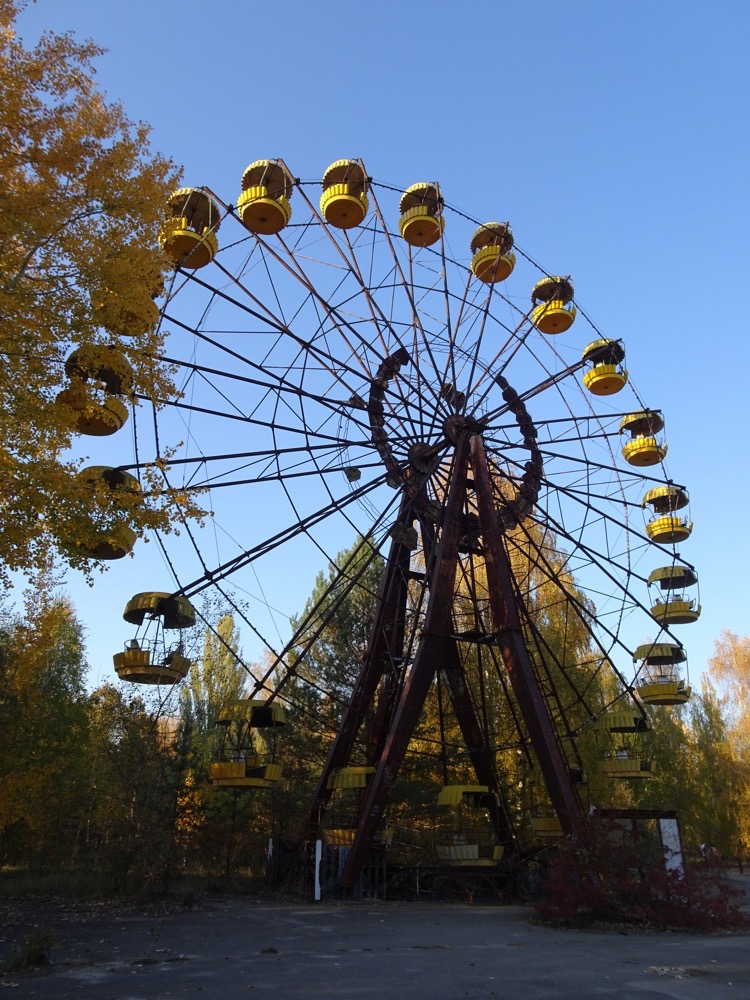
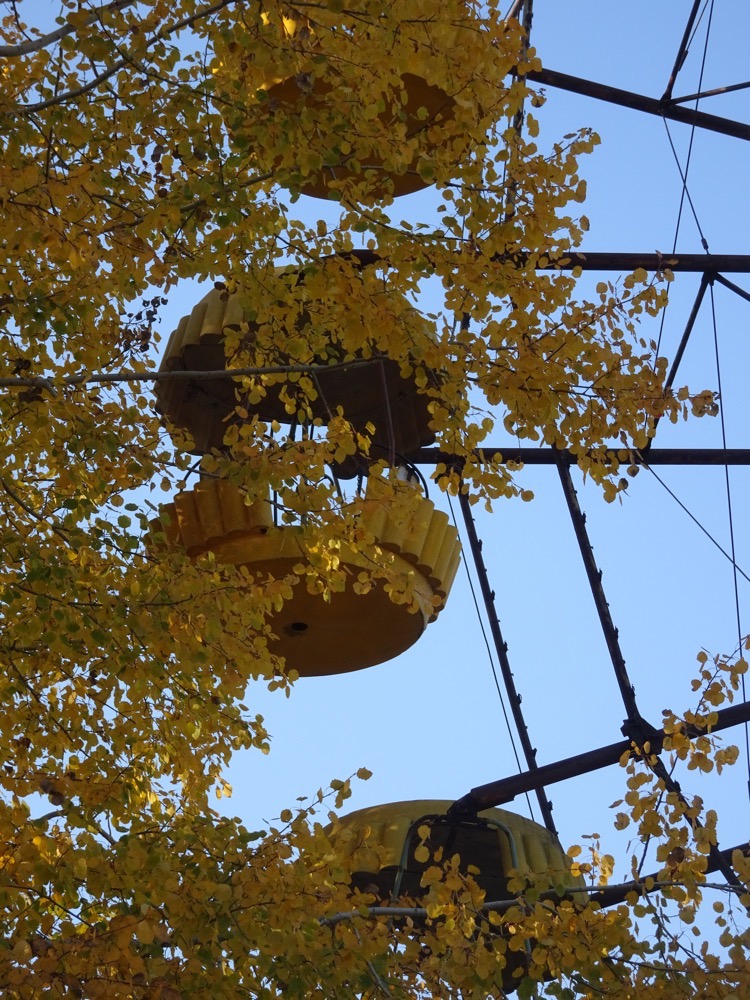
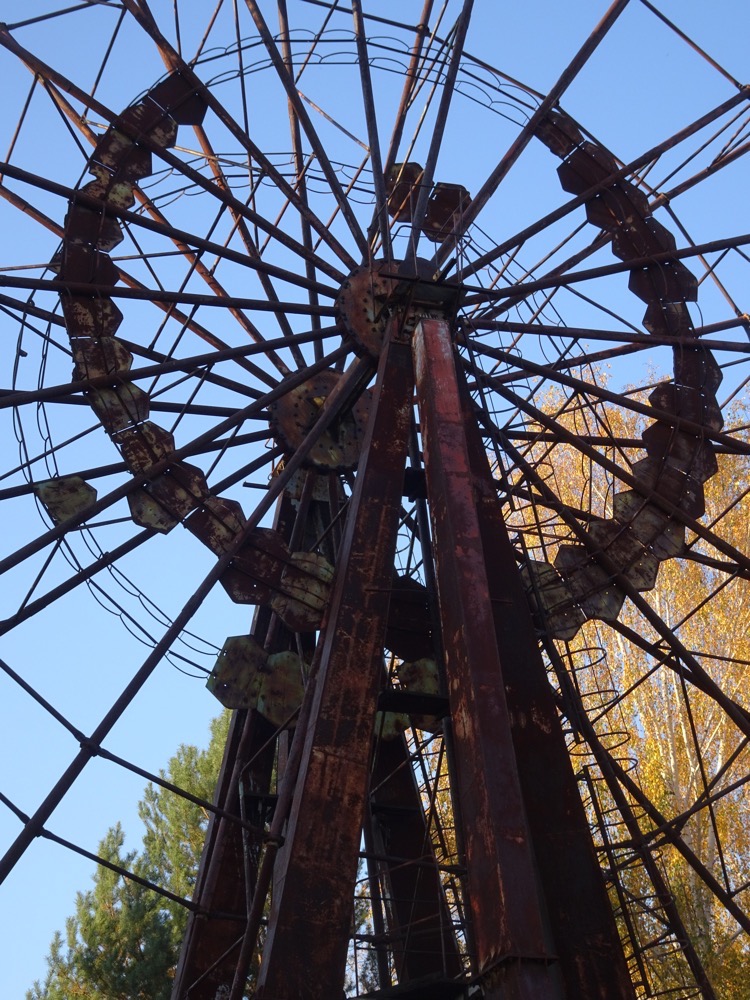
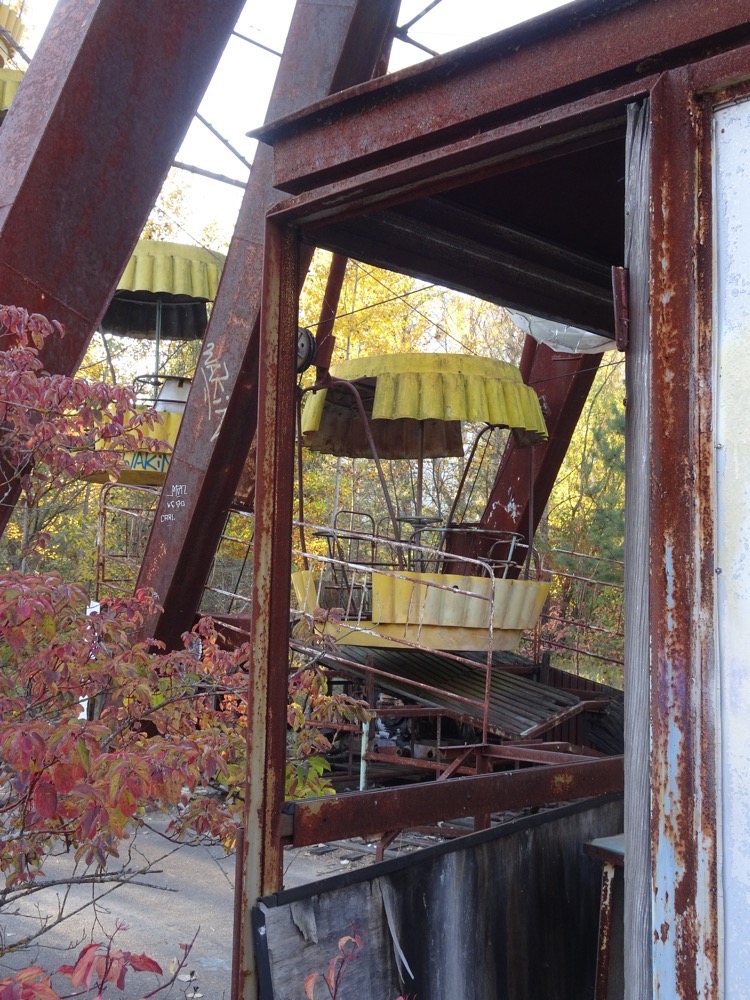
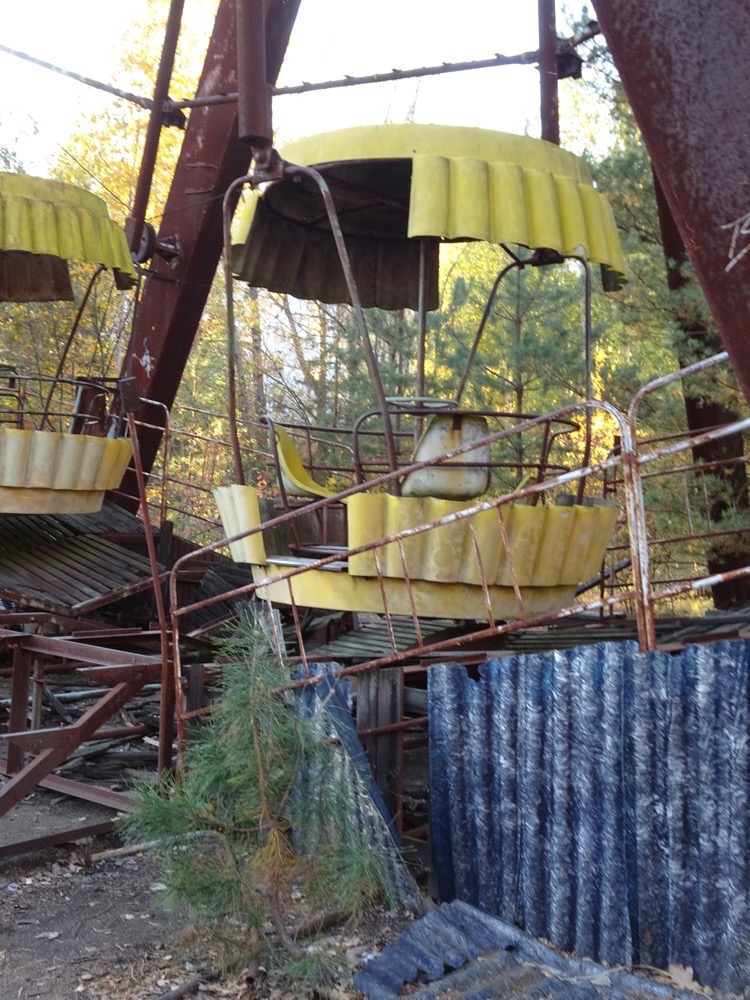 Nicky pointed out a hotspot on the bottom of this Ferris wheel carriage – readings over 100 were taken here. Possibly debris particles landed here directly or an accumulation of radioactive particles caused by rain.
Nicky pointed out a hotspot on the bottom of this Ferris wheel carriage – readings over 100 were taken here. Possibly debris particles landed here directly or an accumulation of radioactive particles caused by rain. 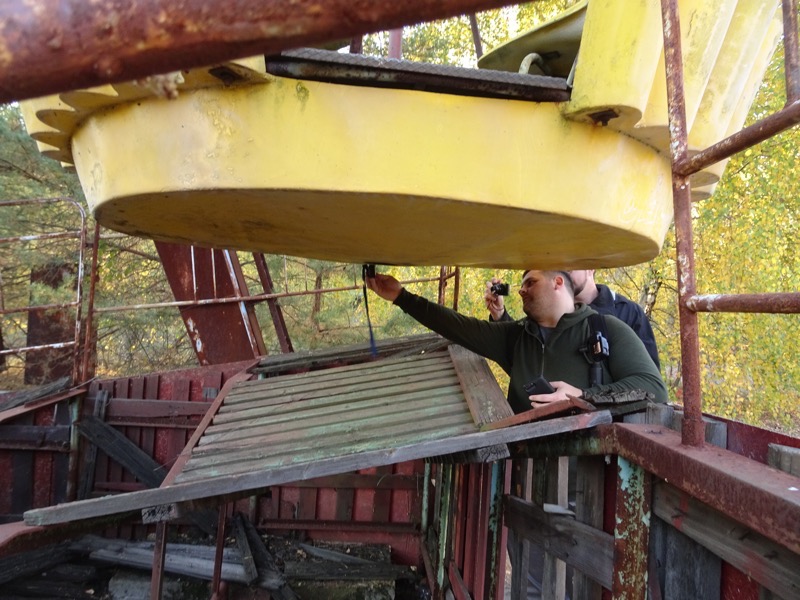 Nature reclaiming the stadium fencing.
Nature reclaiming the stadium fencing.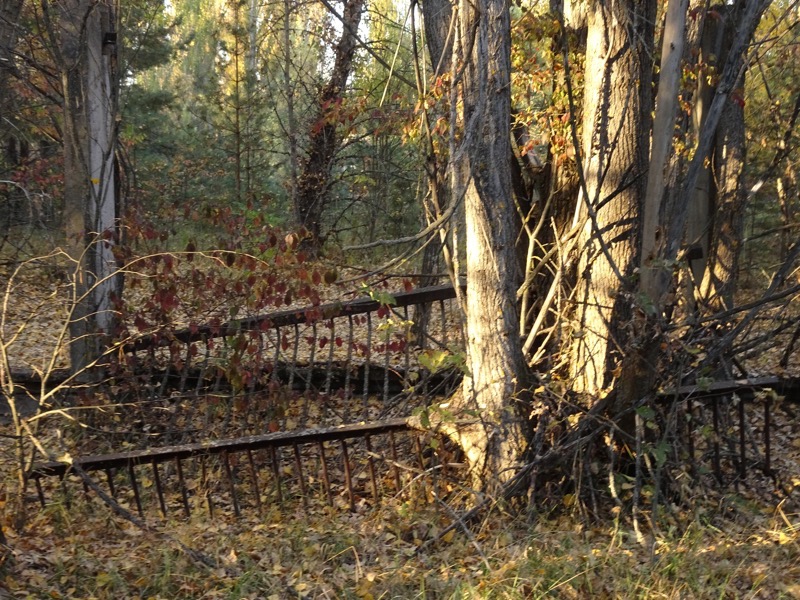 The fancy new Pripyat Stadium that was built in 1986 – right before the explosion. On the night of the on disaster April 26 1986, a team of local footballers were practising at the brand new stadium getting ready for the Grand Opening which was to happen on May 3 1986. They were told that due to the accident there were to be no games held that weekend and within days it was decided to evacuated Pripyat so that no games were ever held at this brand new stadium – bad timing!
The fancy new Pripyat Stadium that was built in 1986 – right before the explosion. On the night of the on disaster April 26 1986, a team of local footballers were practising at the brand new stadium getting ready for the Grand Opening which was to happen on May 3 1986. They were told that due to the accident there were to be no games held that weekend and within days it was decided to evacuated Pripyat so that no games were ever held at this brand new stadium – bad timing!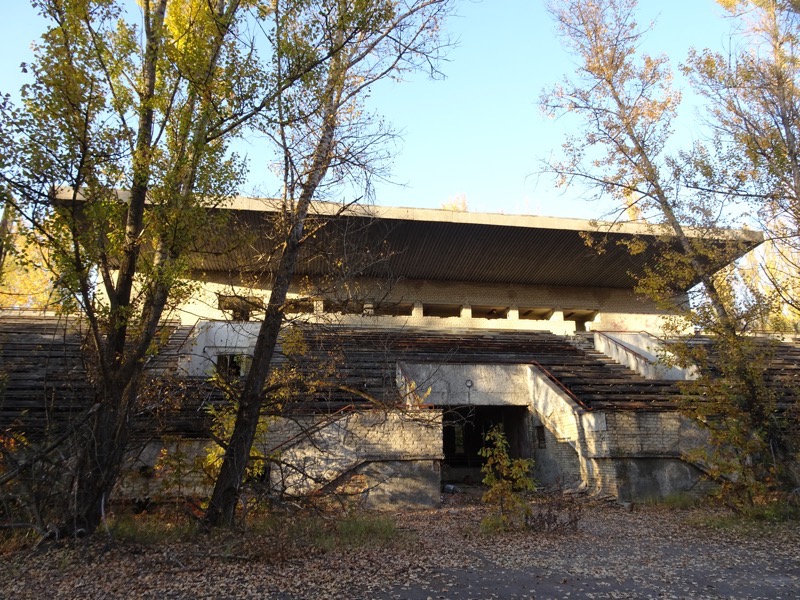
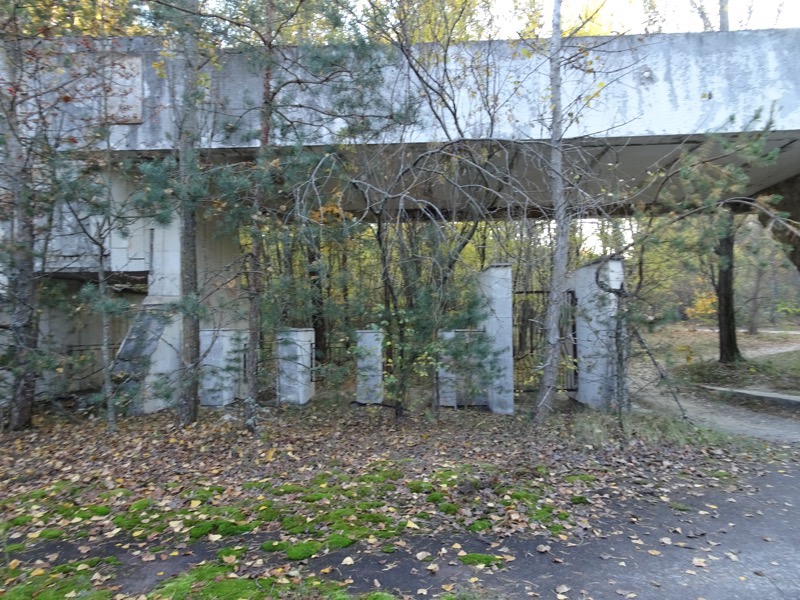
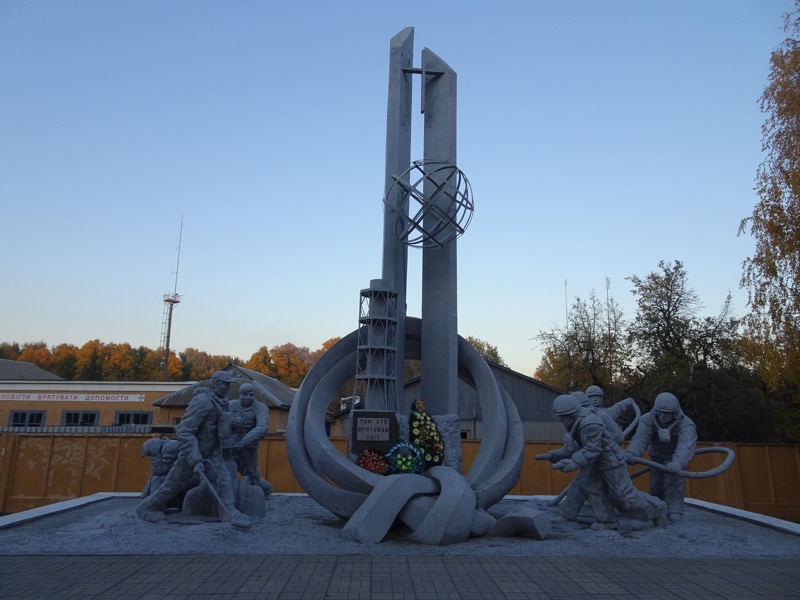
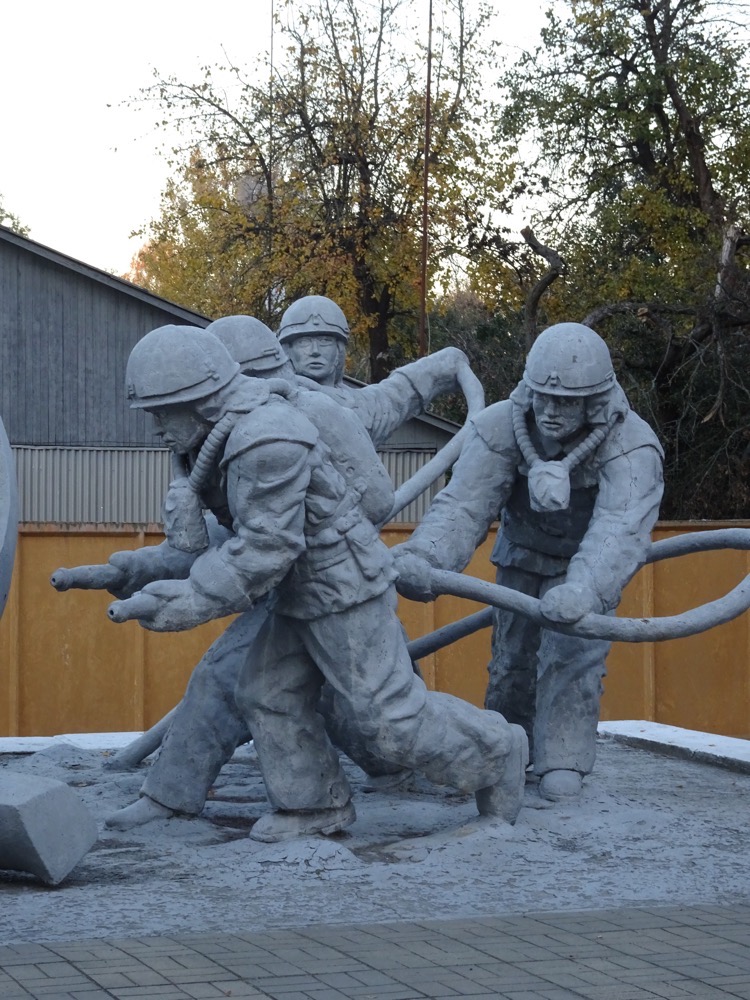
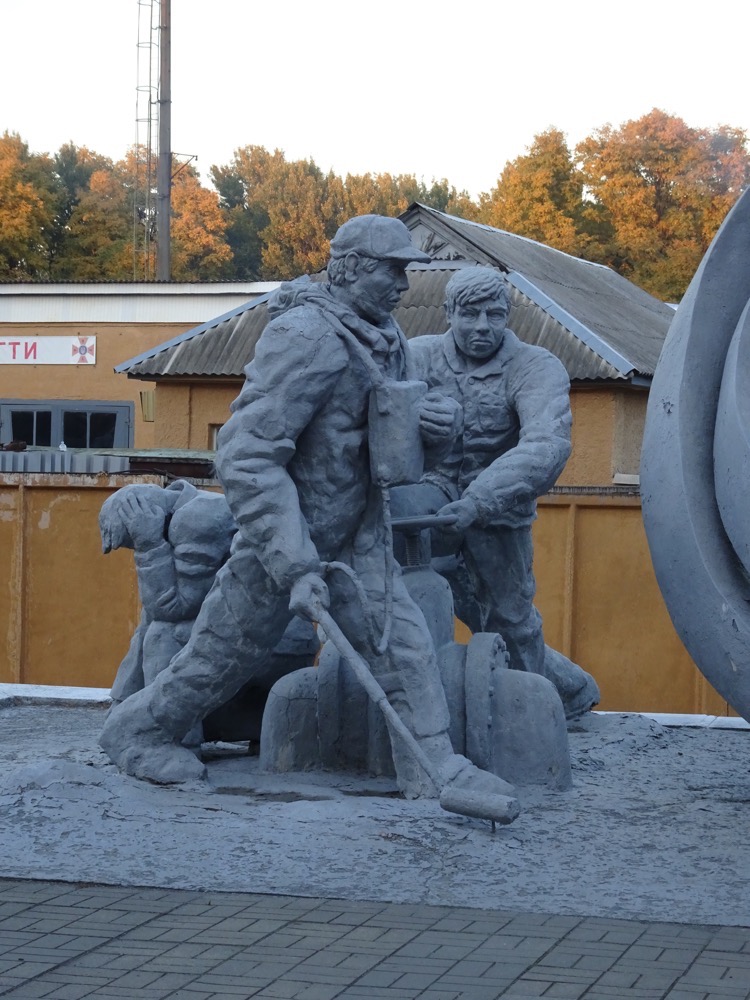 Farewell to the Exclusion Zone – ‘Have good roads’
Farewell to the Exclusion Zone – ‘Have good roads’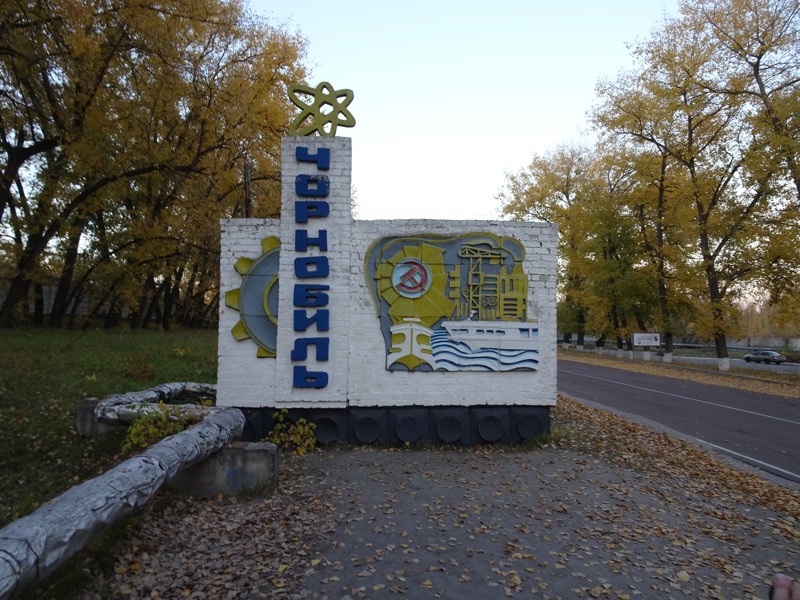
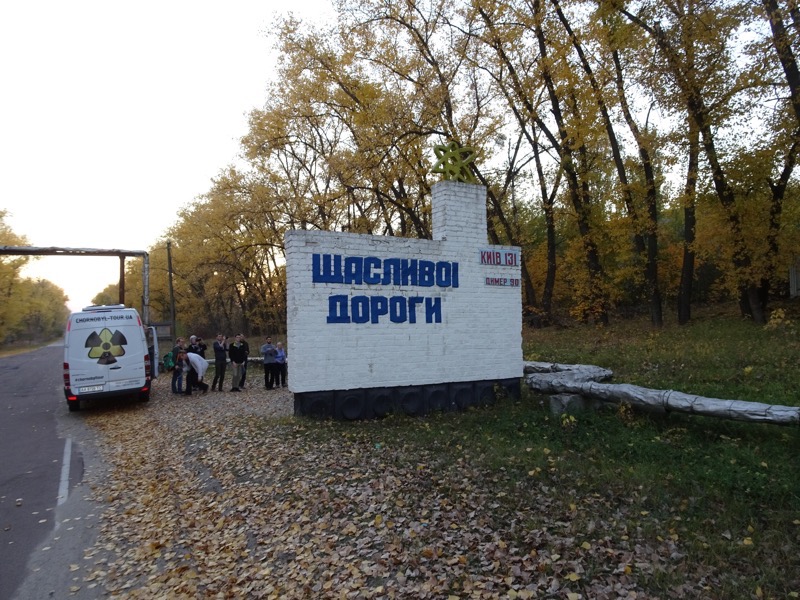
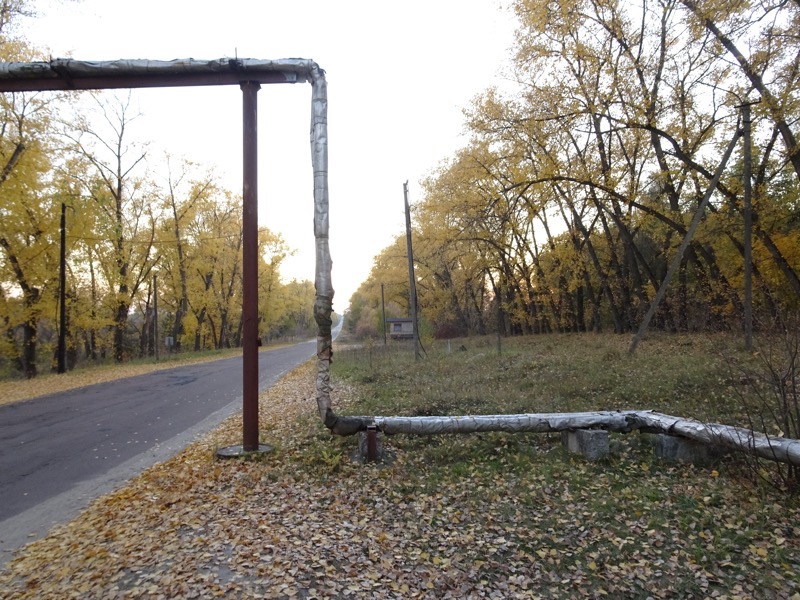
 As far as the cost and the casualties are concerned, the Chernobyl accident is considered to be the most disastrous nuclear power plant accident in history with over 500,000 workers affected and an estimated cost of approximately 18 billion rubles. According to the IAEA – International Atomic Energy Agency – the official death toll is around 4,000 people as a result of the accident. The truth of the matter is that the real toll will never be known. The Soviets did not research and follow people who suffered considerable exposure and who were moved out of the zone never to return. Thyroid cancers have been known to have spiked as well as other cancers, and children have been born with many deformities – but no official figures exist on the extent of the damage.
As far as the cost and the casualties are concerned, the Chernobyl accident is considered to be the most disastrous nuclear power plant accident in history with over 500,000 workers affected and an estimated cost of approximately 18 billion rubles. According to the IAEA – International Atomic Energy Agency – the official death toll is around 4,000 people as a result of the accident. The truth of the matter is that the real toll will never be known. The Soviets did not research and follow people who suffered considerable exposure and who were moved out of the zone never to return. Thyroid cancers have been known to have spiked as well as other cancers, and children have been born with many deformities – but no official figures exist on the extent of the damage.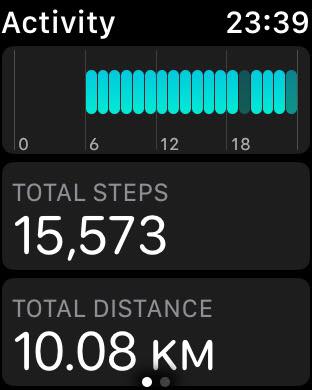 We got back to Kiev late – around 9pm, whereupon we had to go find somewhere to have dinner. I was absolutely Fucked with a capital F, but out we went. We found a restaurant and had a quick dinner… and then trudged back up a steep hill to the hotel. By the time I got back up here, I lost it and there was pain and tears and mess. If you ever needed proof of how stubborn I can be – here it is. Every step and every breath causing acute exacerbation of pain.
We got back to Kiev late – around 9pm, whereupon we had to go find somewhere to have dinner. I was absolutely Fucked with a capital F, but out we went. We found a restaurant and had a quick dinner… and then trudged back up a steep hill to the hotel. By the time I got back up here, I lost it and there was pain and tears and mess. If you ever needed proof of how stubborn I can be – here it is. Every step and every breath causing acute exacerbation of pain.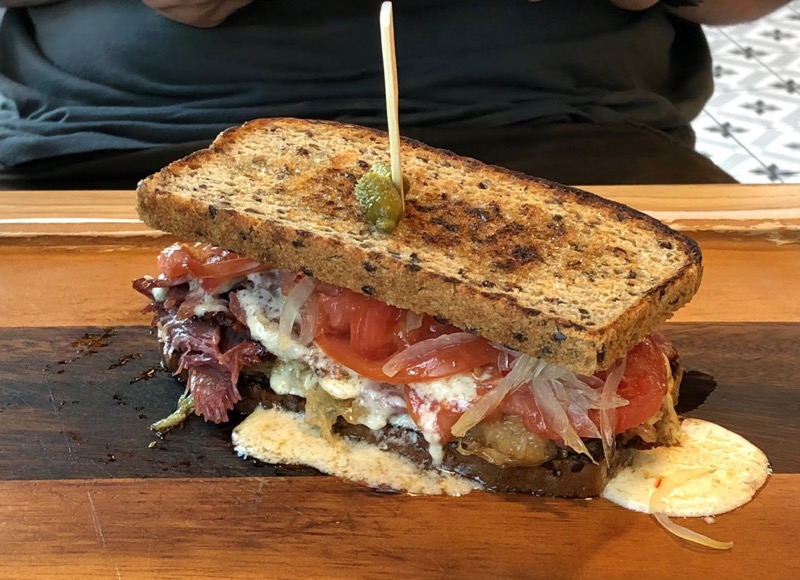 The Warsaw opera house that was built in1825 to 1833, is known as the Grand Theatre in Warsaw or Teatr Wielki w Warszawieis. It is actually a large theatre complex consisting of spaces for the national opera company and the Polish National Ballet. It is one of the largest theatres in Europe can seat over 2000 people.
The Warsaw opera house that was built in1825 to 1833, is known as the Grand Theatre in Warsaw or Teatr Wielki w Warszawieis. It is actually a large theatre complex consisting of spaces for the national opera company and the Polish National Ballet. It is one of the largest theatres in Europe can seat over 2000 people. 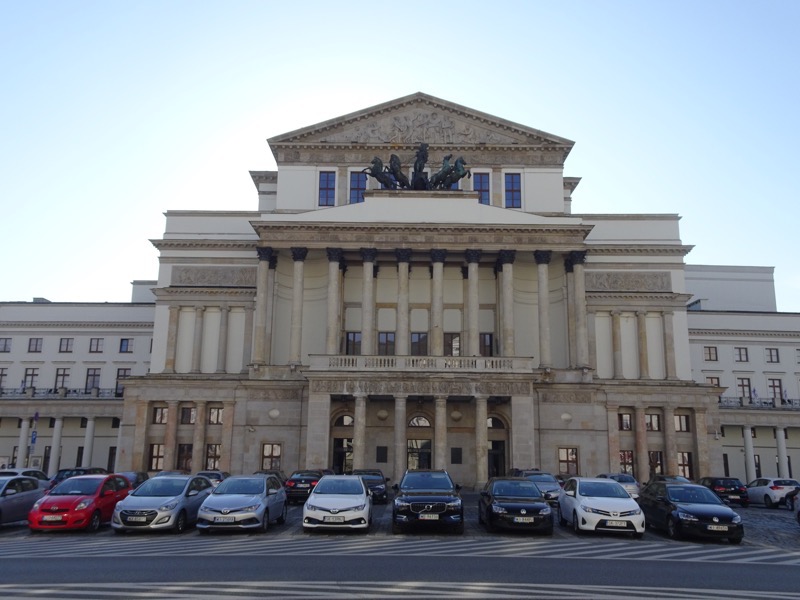 Warsaw’s Castle Square, Zamkowy w Warszawie, is located in front of the Royal Castle and a seriously picturesque and popular spot. It’s surrounded by historic townhouses and cute little cafes.
Warsaw’s Castle Square, Zamkowy w Warszawie, is located in front of the Royal Castle and a seriously picturesque and popular spot. It’s surrounded by historic townhouses and cute little cafes.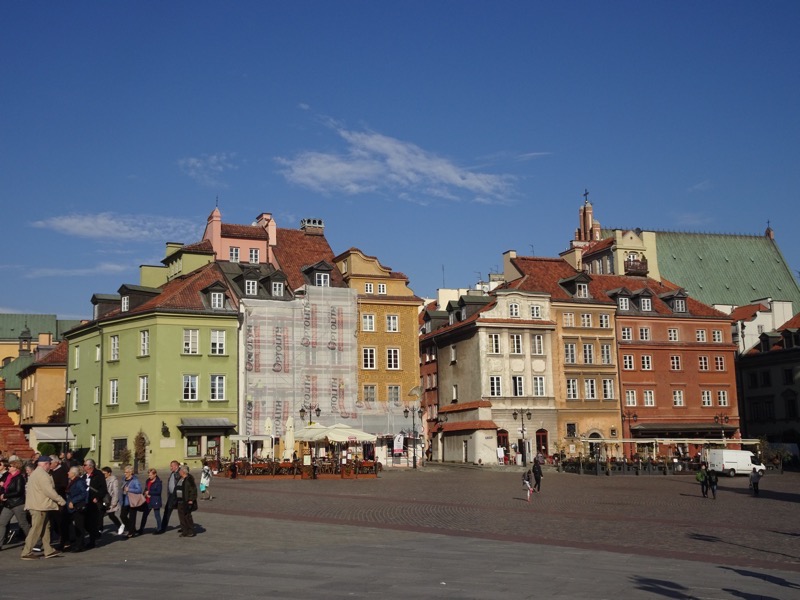
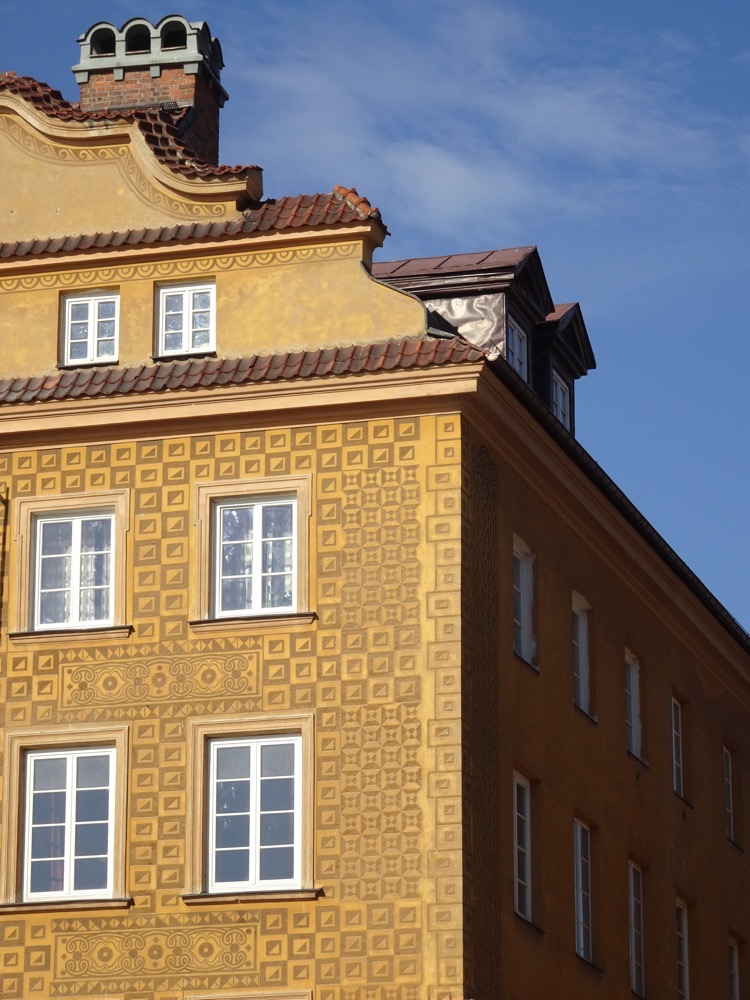
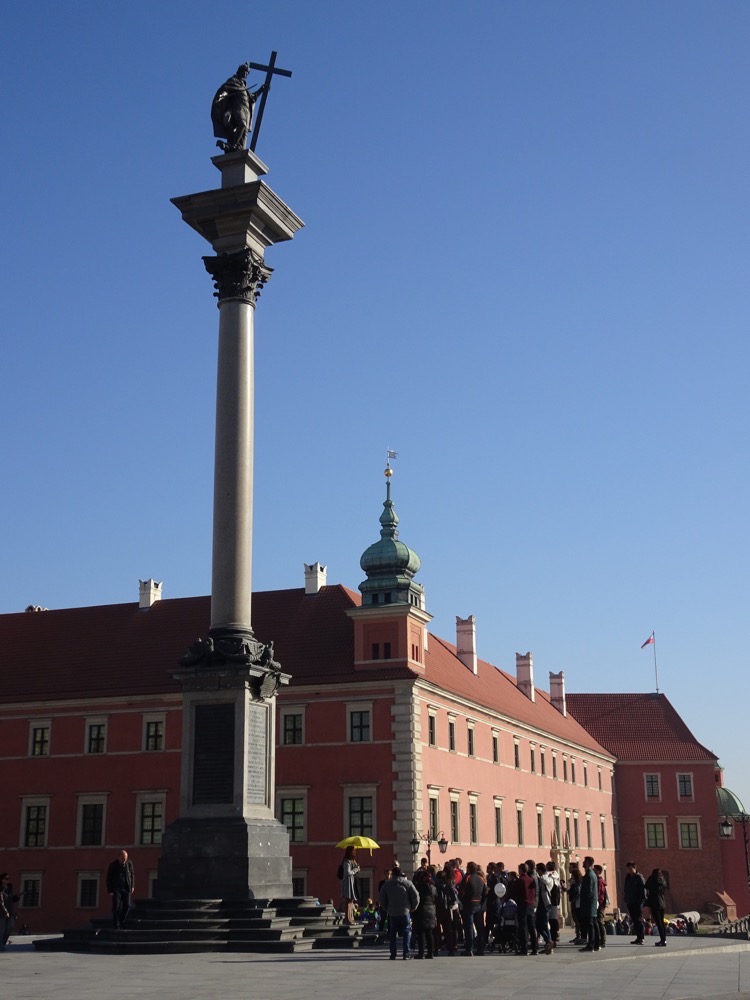 The Royal Castle in Warsaw, or Zamek Królewski w Warszawie, is a castle residency that formerly served for several centuries as the official residence of the Polish monarchs, including Tsar Nicolas of Russia when Poland became part of Russia after the Napoleonic wars.
The Royal Castle in Warsaw, or Zamek Królewski w Warszawie, is a castle residency that formerly served for several centuries as the official residence of the Polish monarchs, including Tsar Nicolas of Russia when Poland became part of Russia after the Napoleonic wars.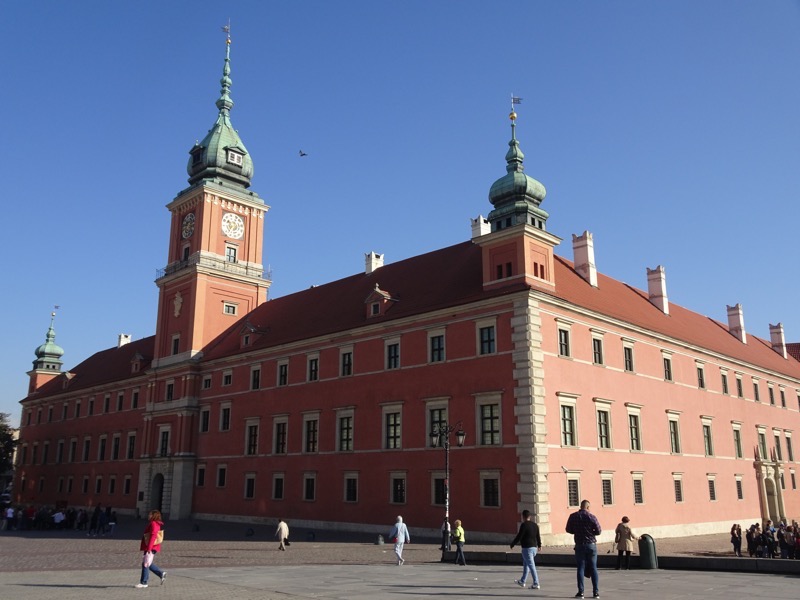 The complex has been the primary residence of the Dukes of Masovia since the 16th century and has been the seat of the Polish-Lithuanian Commonwealth, being for the King and for the Parliament, with fancy Chambers for the Deputies and Senate. In its long history, the Warsaw Royal Castle was repeatedly looted and devastated by the invading Swedish, Brandenburgian, Prussian and Tsarist armies. Seems everyone wanted a piece of this Castle at some point.
The complex has been the primary residence of the Dukes of Masovia since the 16th century and has been the seat of the Polish-Lithuanian Commonwealth, being for the King and for the Parliament, with fancy Chambers for the Deputies and Senate. In its long history, the Warsaw Royal Castle was repeatedly looted and devastated by the invading Swedish, Brandenburgian, Prussian and Tsarist armies. Seems everyone wanted a piece of this Castle at some point.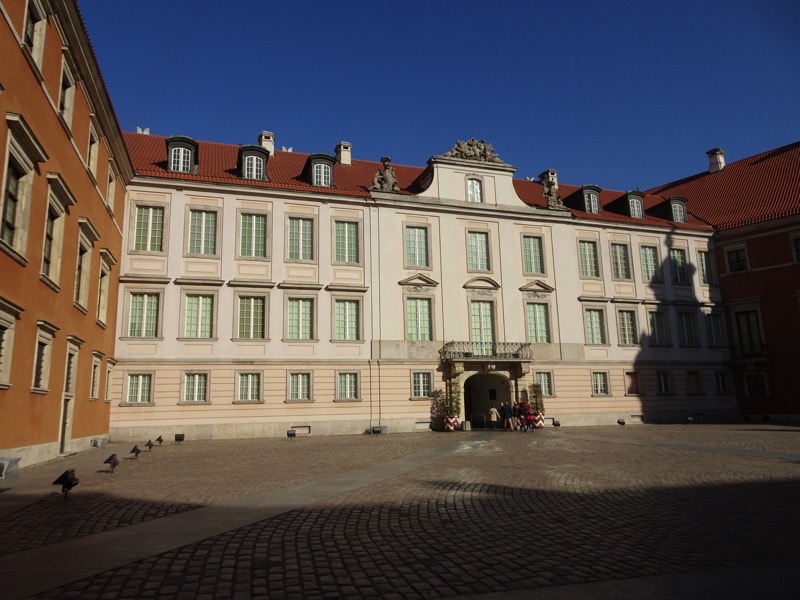
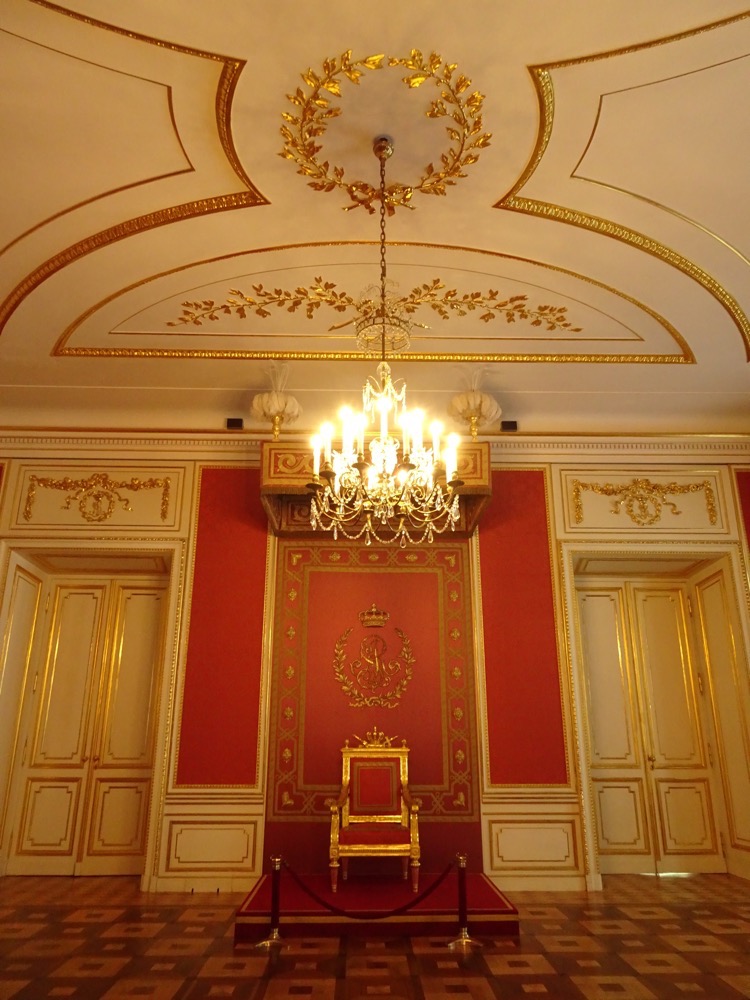
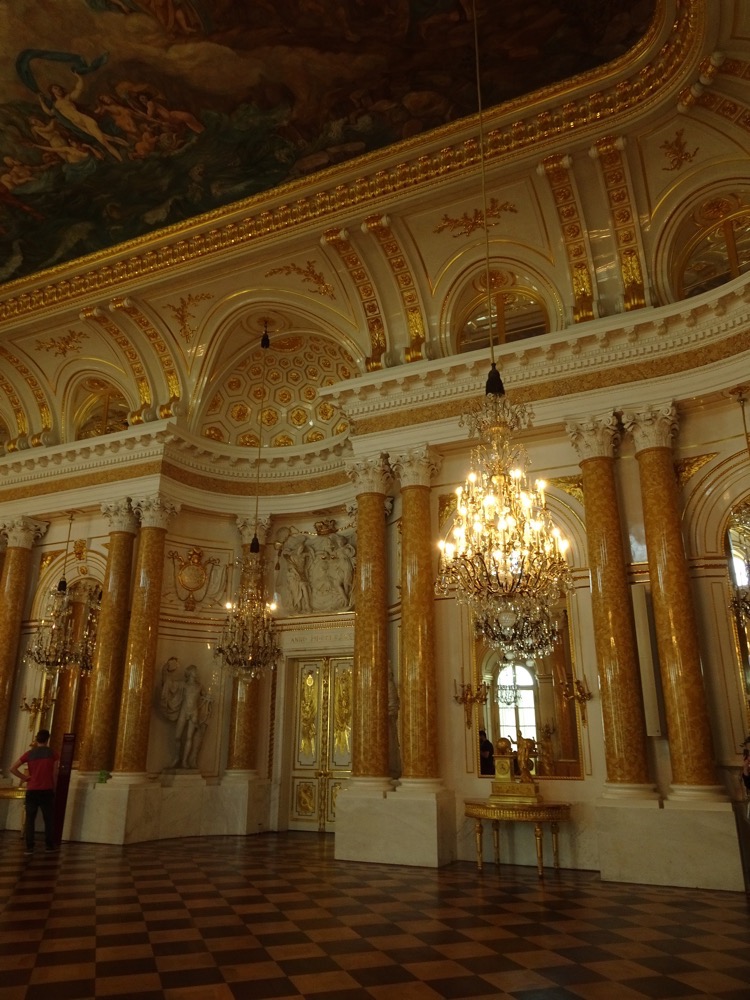
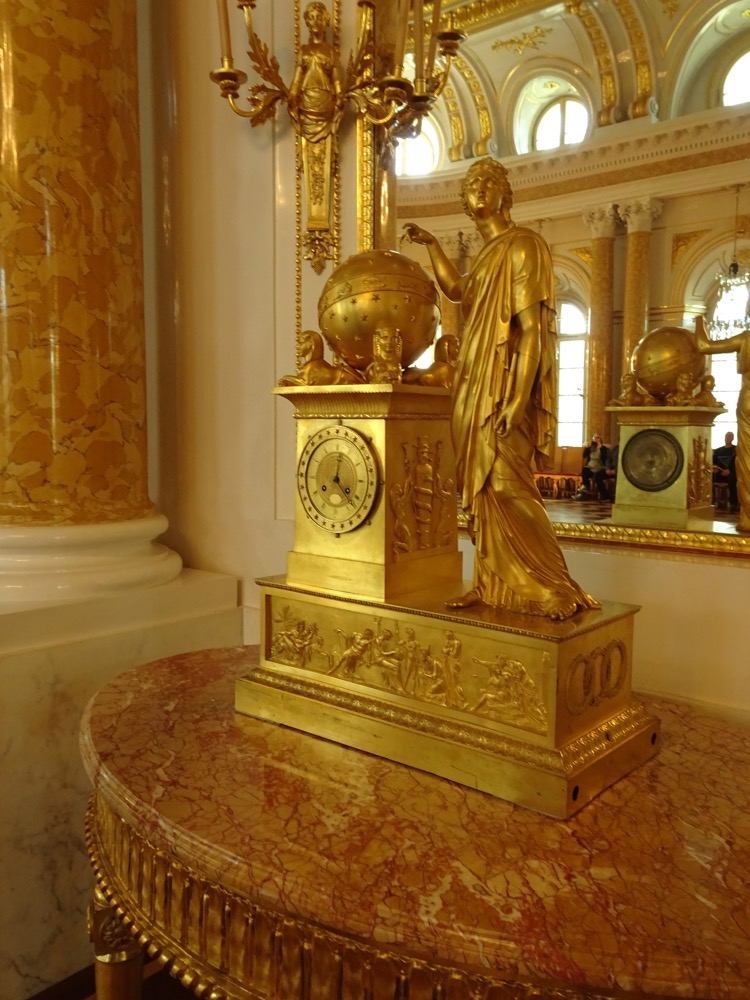
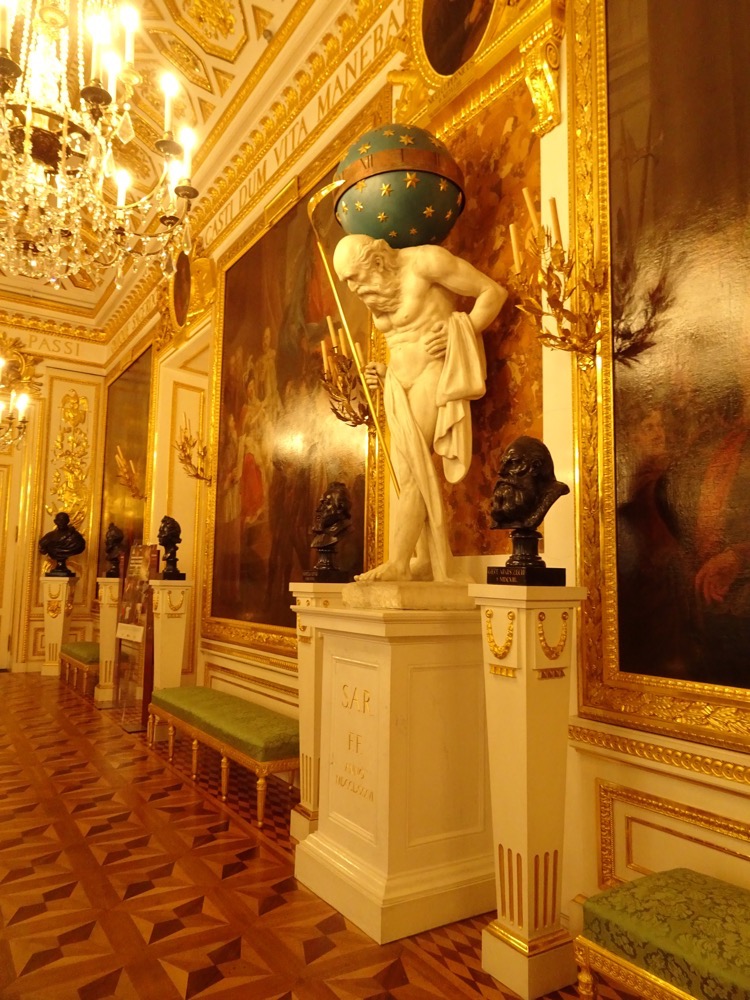 The Great Assembly hall is the biggest and grandest room in the Castle. This is where royal audiences, state banquets, ball and concerts were held.
The Great Assembly hall is the biggest and grandest room in the Castle. This is where royal audiences, state banquets, ball and concerts were held. 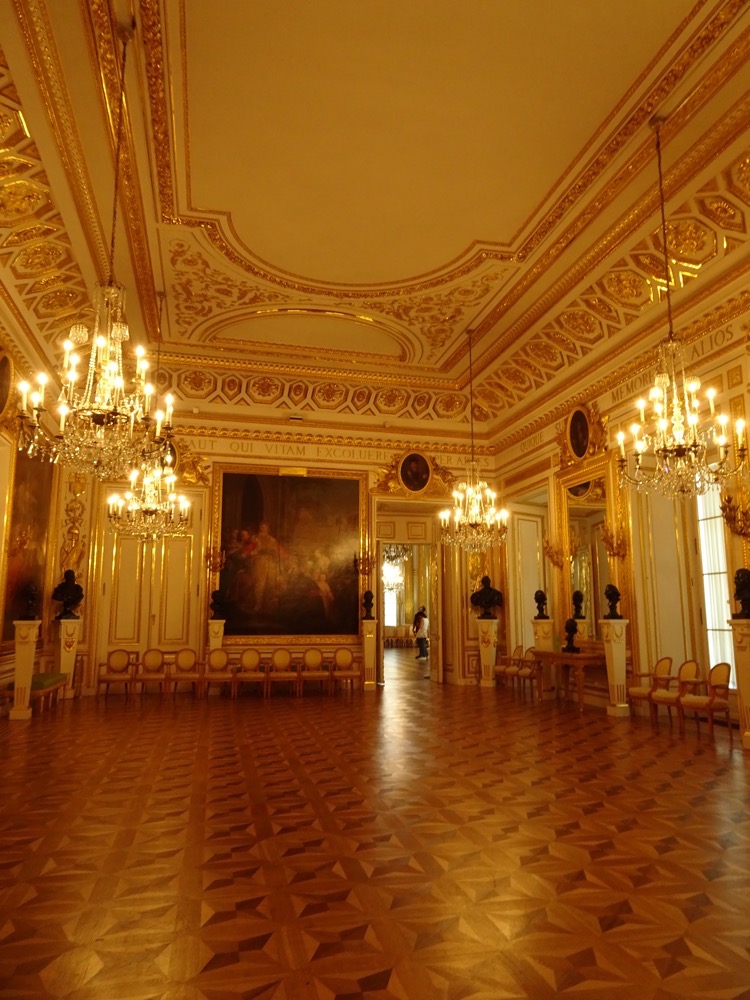 Audience chamber where the most important visitors were granted an audience with King Stanislaw August, including foreign ambassadors, papal legates etc. The Throne Room has been restored with much of its original decorations and furnishings, including doors, furniture and wooden panelling. The Polish eagles in hand embroidered silver bullion over the back of the throne’s canopy were all ripped off the original embroidery by Nazi officers in October 1939. The 86 copies here were modelled on one of these original eagles that was retrieved from the US in 1991.
Audience chamber where the most important visitors were granted an audience with King Stanislaw August, including foreign ambassadors, papal legates etc. The Throne Room has been restored with much of its original decorations and furnishings, including doors, furniture and wooden panelling. The Polish eagles in hand embroidered silver bullion over the back of the throne’s canopy were all ripped off the original embroidery by Nazi officers in October 1939. The 86 copies here were modelled on one of these original eagles that was retrieved from the US in 1991.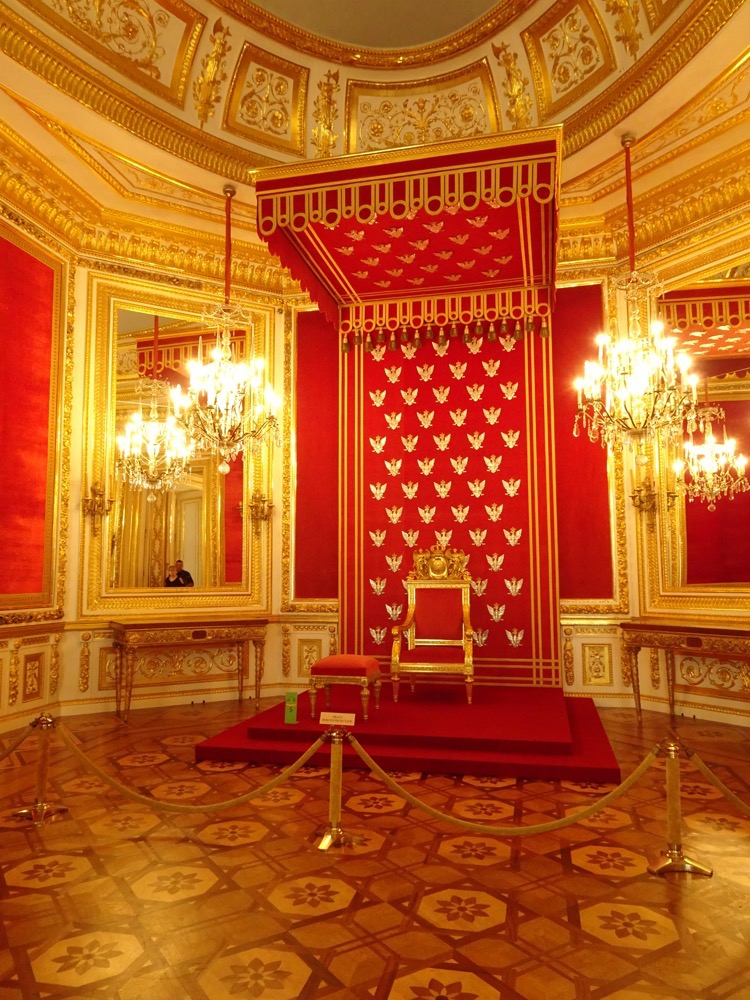 Beside the Throne Room is the Conference Room or Monarchs’ Portrait Room, which was used as a parade chamber. Dedicated to the seven monarchs of Europe at the time, it is decorated with portraits that were commissioned of their likenesses. The portraits were painted by Jan Bogumil Plersch between 1983 and 1786. The parquetry is amazing!
Beside the Throne Room is the Conference Room or Monarchs’ Portrait Room, which was used as a parade chamber. Dedicated to the seven monarchs of Europe at the time, it is decorated with portraits that were commissioned of their likenesses. The portraits were painted by Jan Bogumil Plersch between 1983 and 1786. The parquetry is amazing!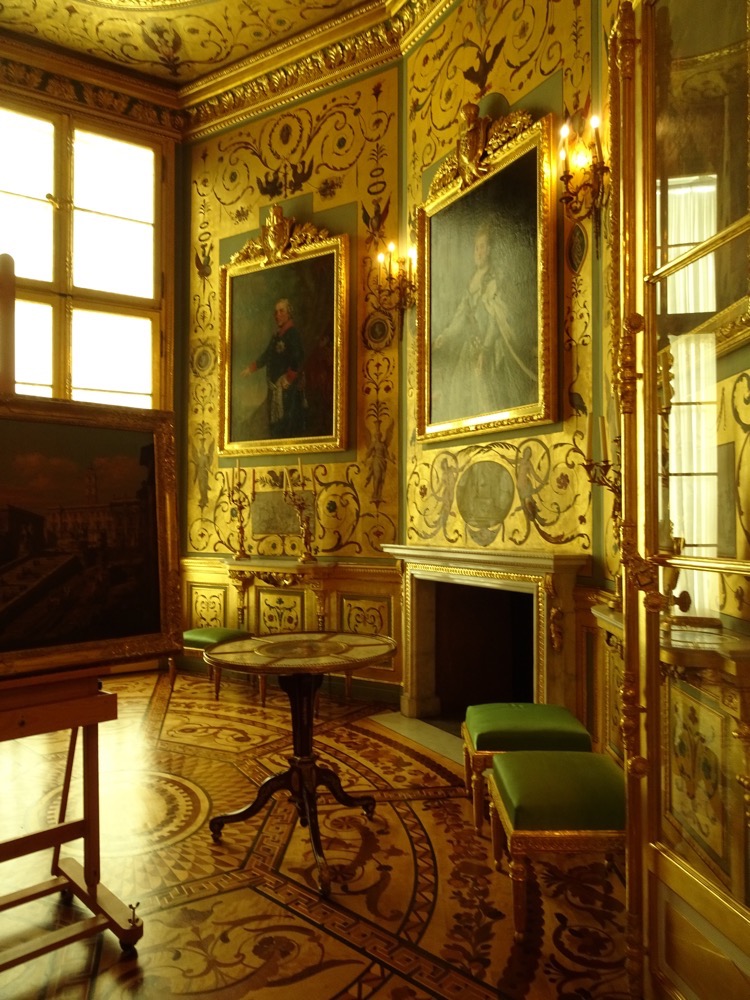 The King’s bedroom as part of the residential King’s Apartment. Some pieces of the room were preserved before the Nazi destruction allowing the room to be recreated accurately.
The King’s bedroom as part of the residential King’s Apartment. Some pieces of the room were preserved before the Nazi destruction allowing the room to be recreated accurately.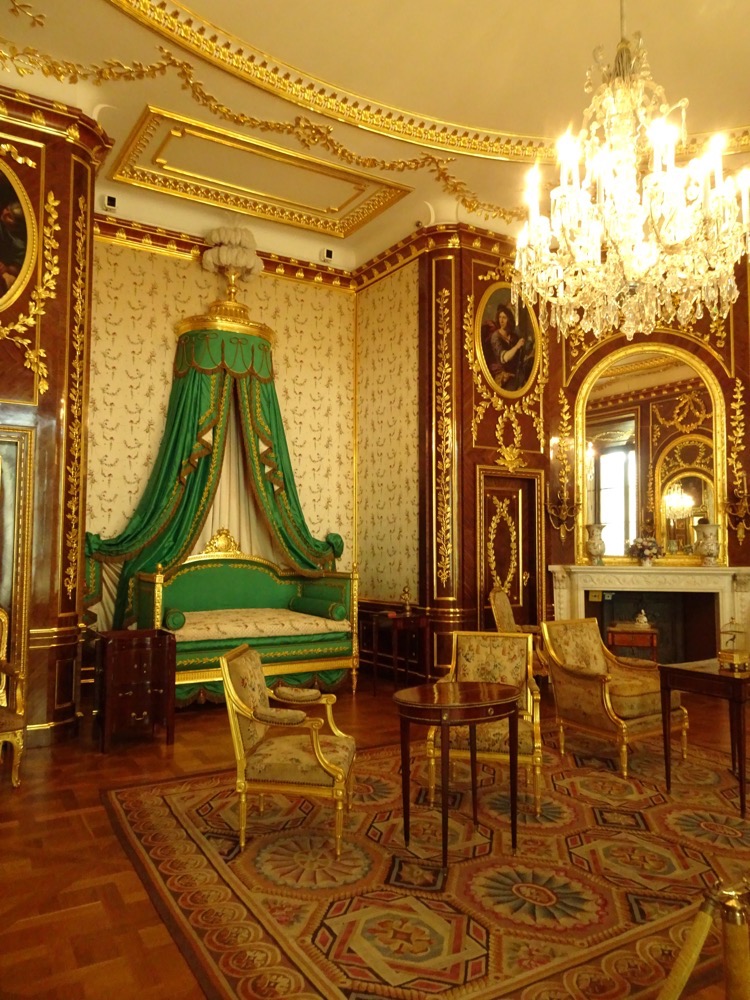 Ceremonial sword of state late 1700s.
Ceremonial sword of state late 1700s.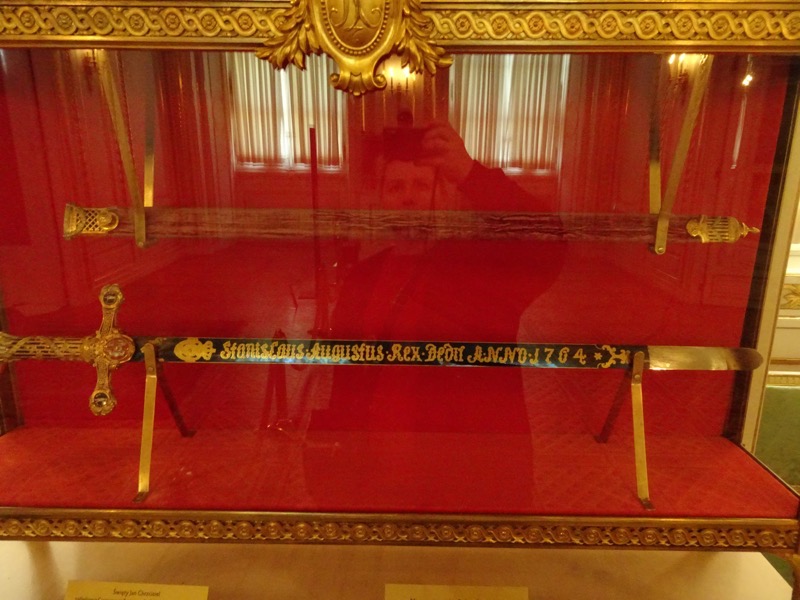
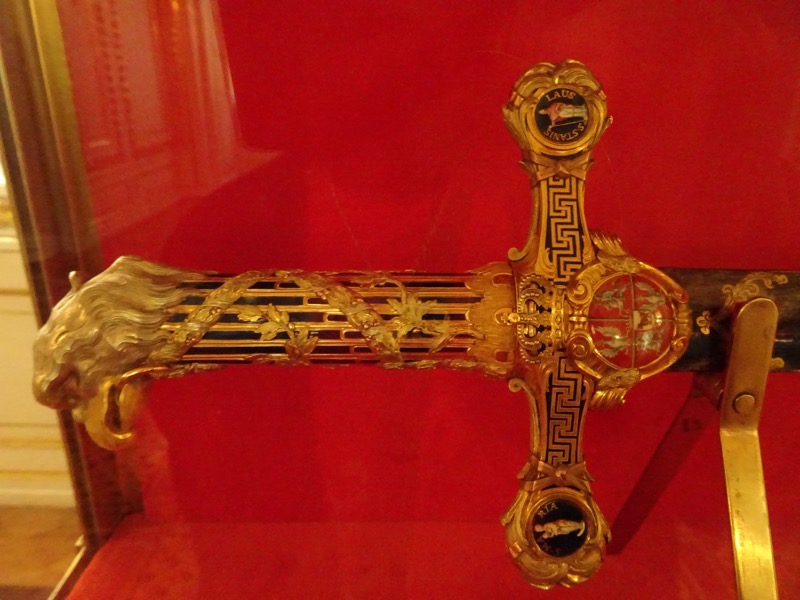 The Small Private Chapel off the Kings Audience Chamber.
The Small Private Chapel off the Kings Audience Chamber.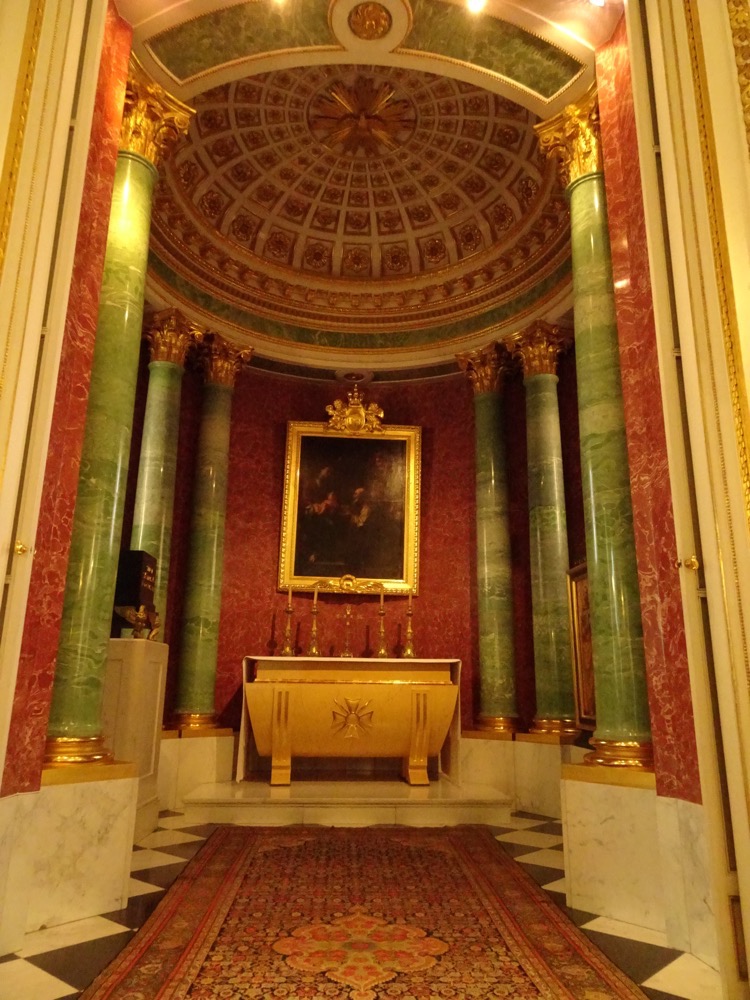
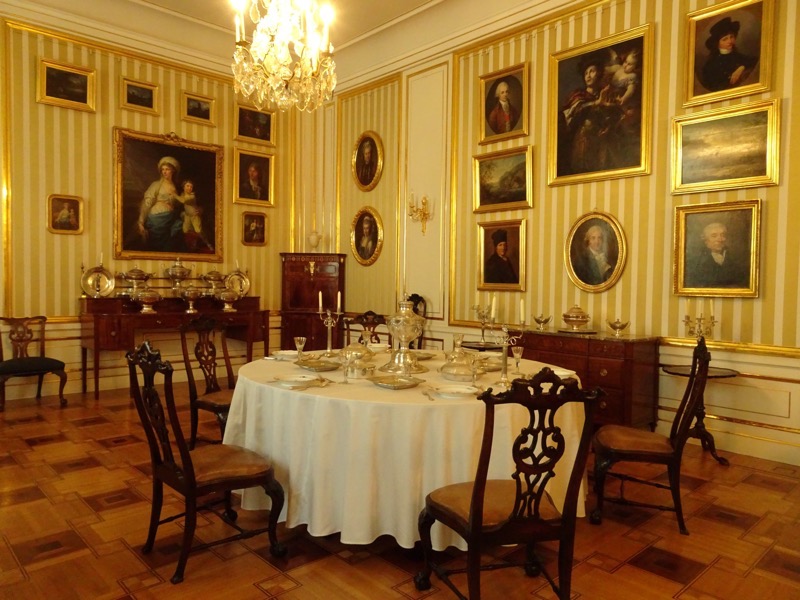 The Marble Room was designed in 1640-1642 during the reign of King Wladyslaw IV and was little used until King Stanislaw August commissioned it’s restoration to famous architect, Jakub Fontana. It served as a second antechamber to the Throne Room. Thankfully most of the painting in this room were removed before the Castle was bombed in September 1939, and saved from the great fires that followed.
The Marble Room was designed in 1640-1642 during the reign of King Wladyslaw IV and was little used until King Stanislaw August commissioned it’s restoration to famous architect, Jakub Fontana. It served as a second antechamber to the Throne Room. Thankfully most of the painting in this room were removed before the Castle was bombed in September 1939, and saved from the great fires that followed.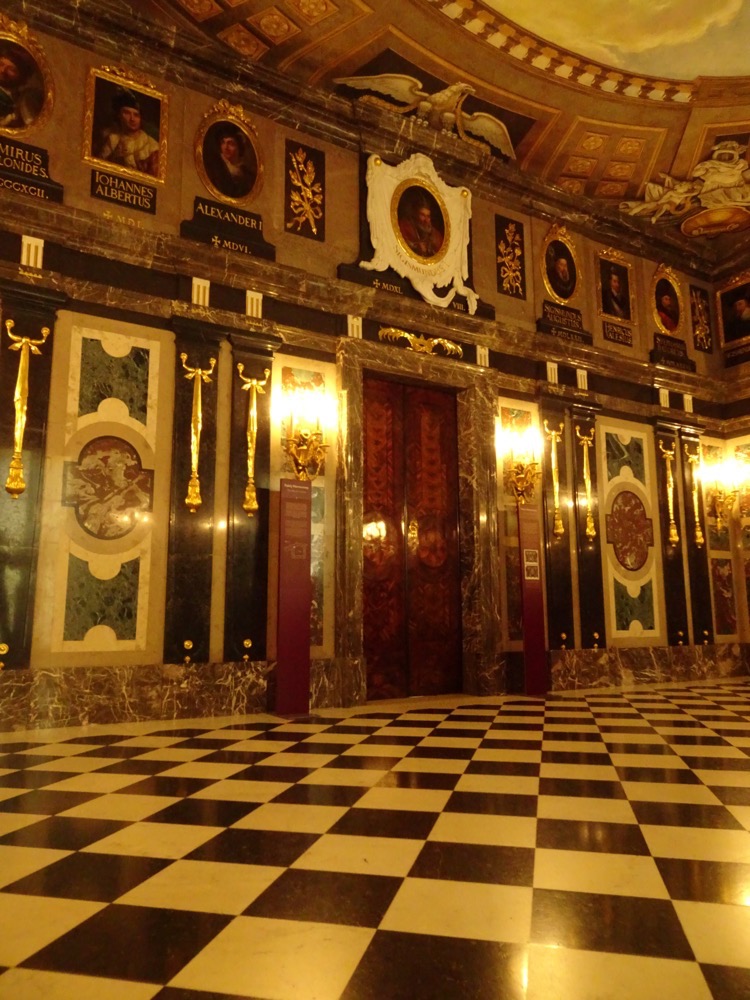
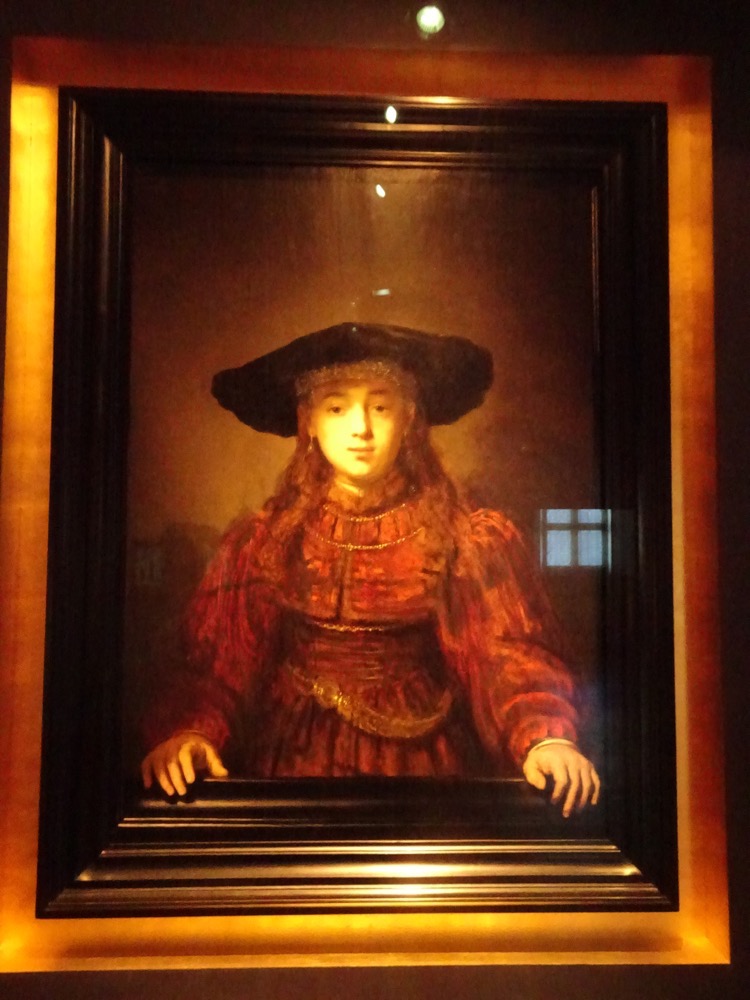 ‘Girl in a picture frame’, Rembrandt, 1641 (and detail below).
‘Girl in a picture frame’, Rembrandt, 1641 (and detail below).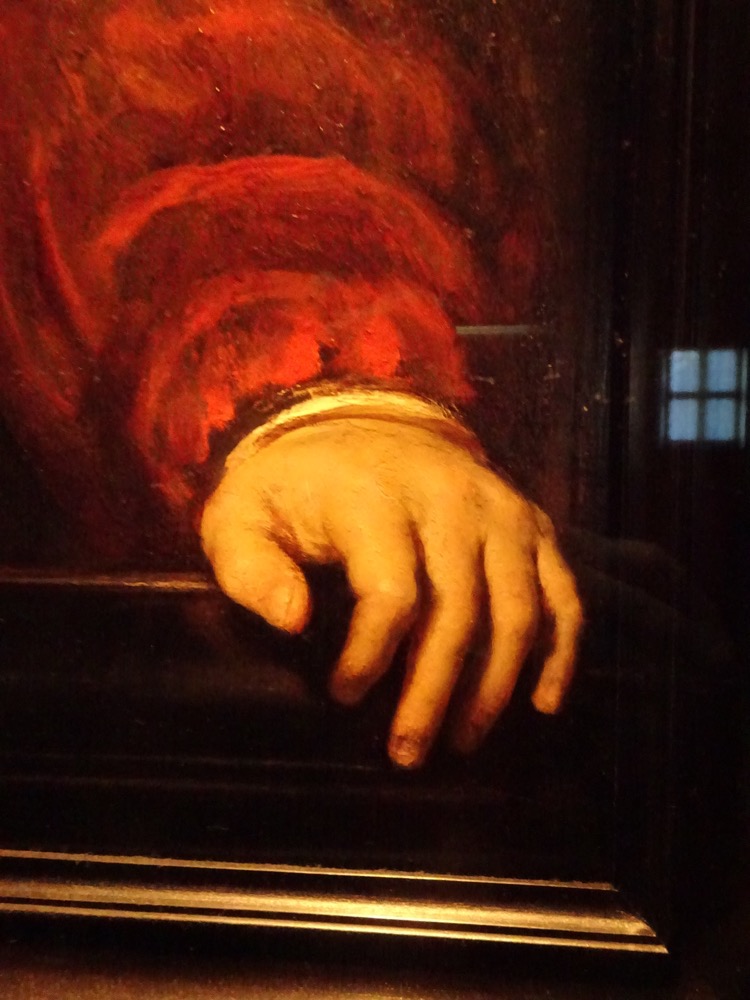
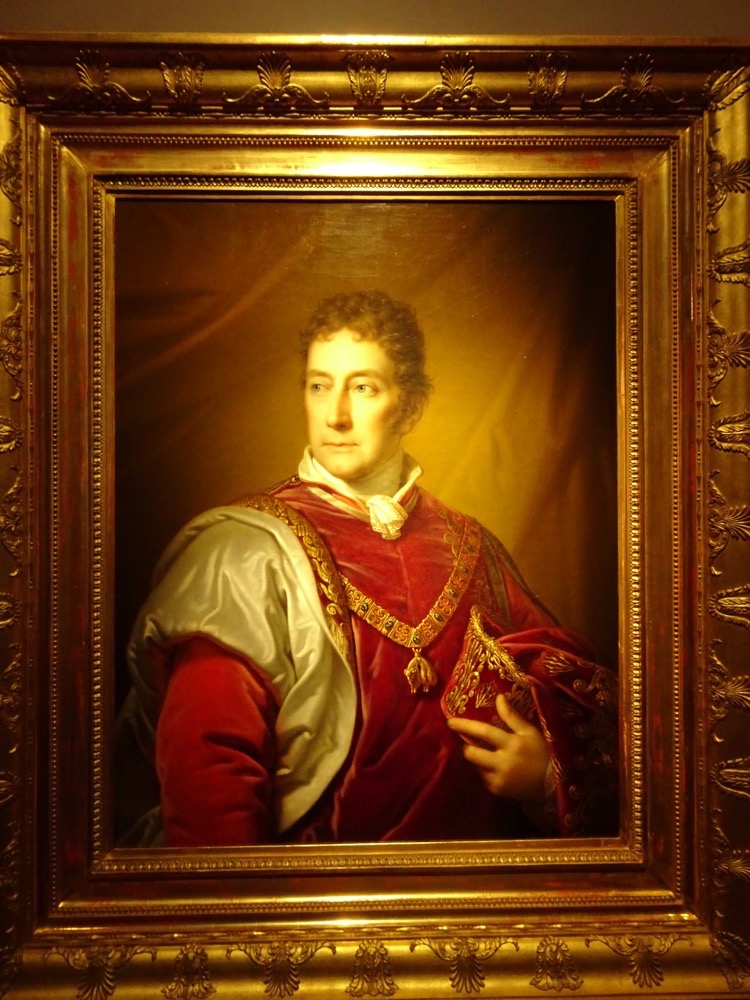 ‘Johann Baptist Lampi the Younger’, Antoni Jozef Lanckoronski, 1817 (and detail below).
‘Johann Baptist Lampi the Younger’, Antoni Jozef Lanckoronski, 1817 (and detail below).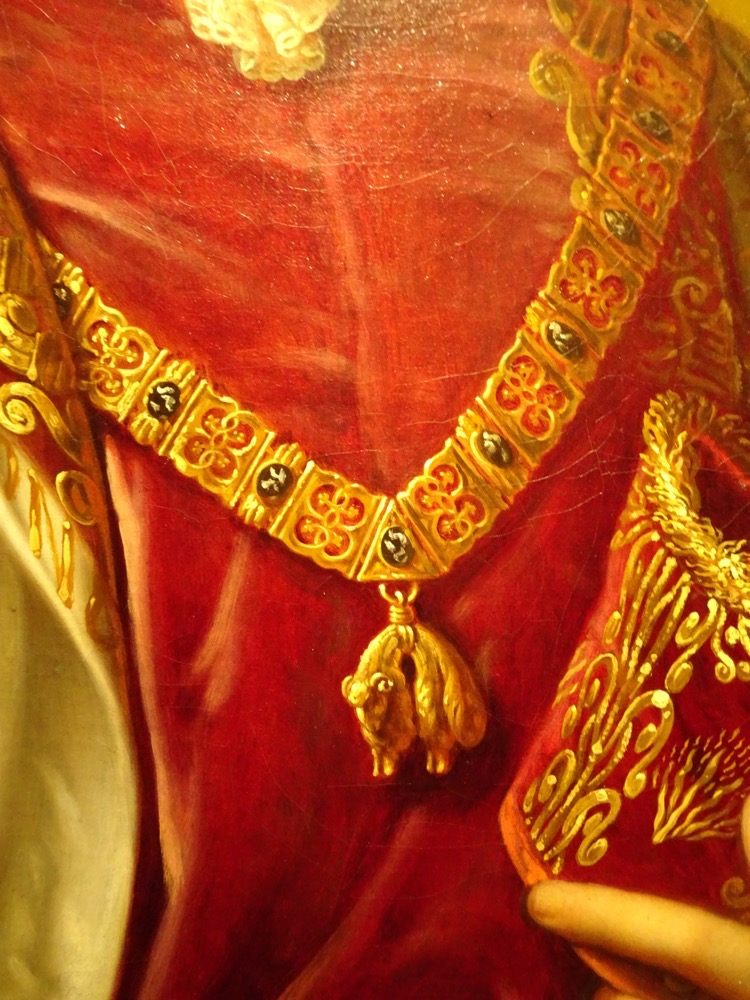
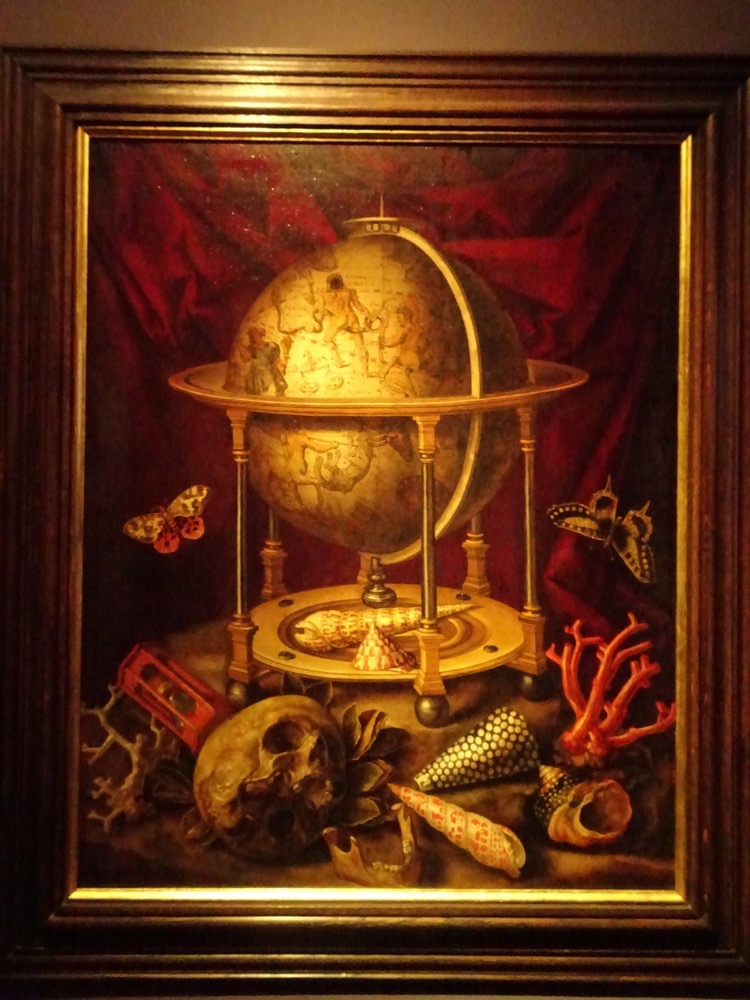 ‘Still Life with a Celestial Globe’, Carstian Luyckx, 1660s (and detail below).
‘Still Life with a Celestial Globe’, Carstian Luyckx, 1660s (and detail below).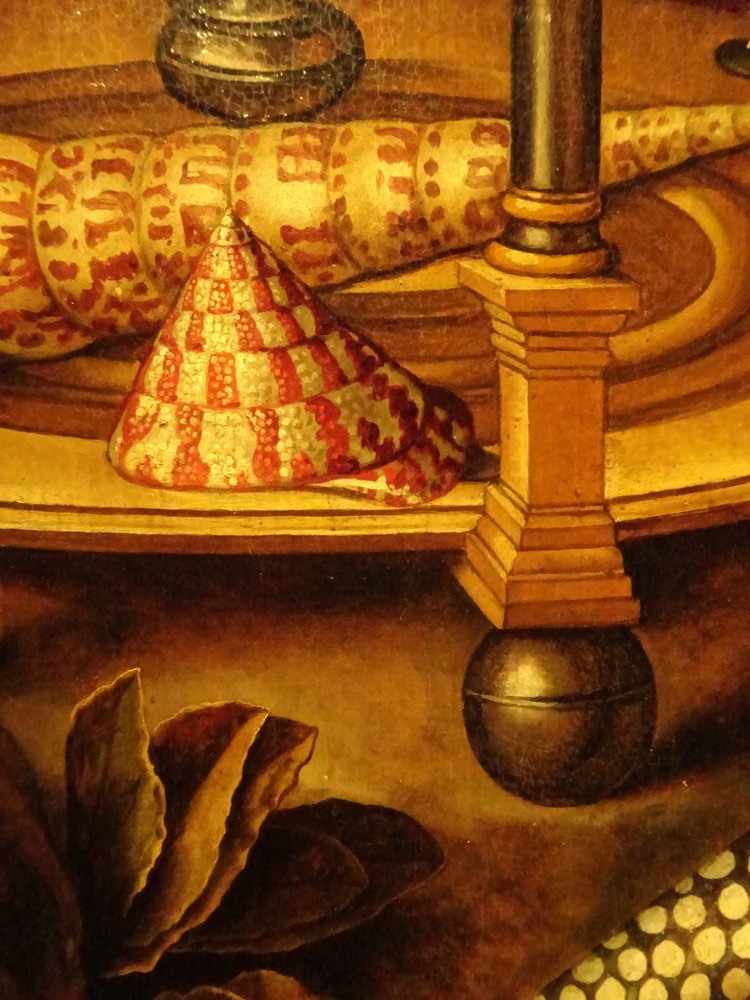
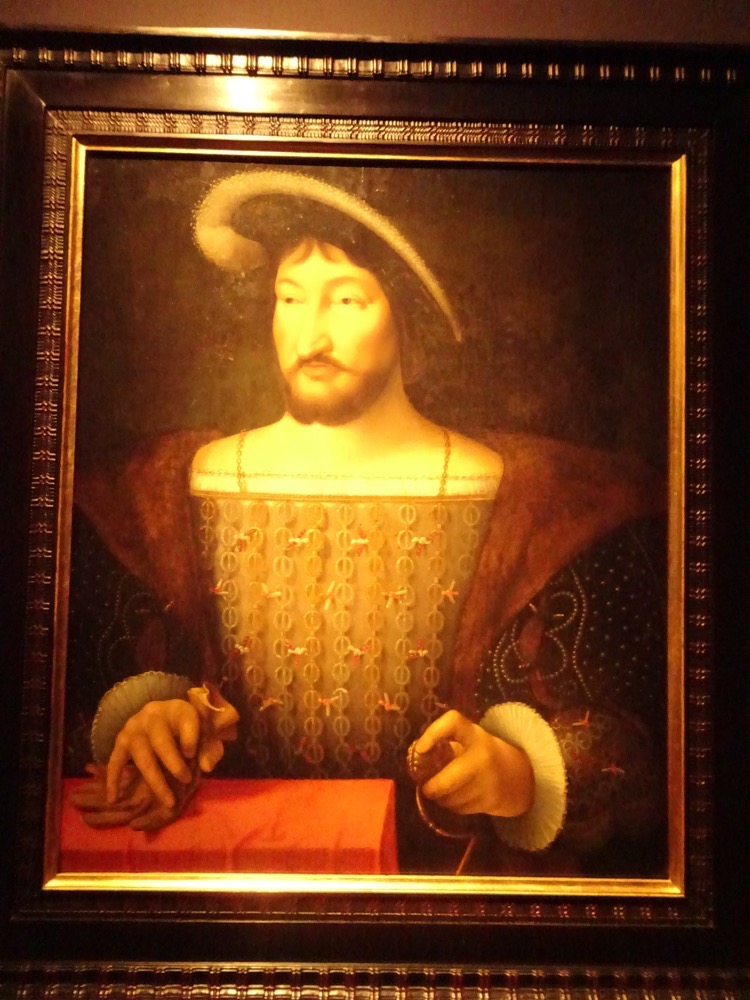 ‘Francis I, King of France since 1515’, from the workshop of Joos van Cleve, ca 1530 (and detail below).
‘Francis I, King of France since 1515’, from the workshop of Joos van Cleve, ca 1530 (and detail below).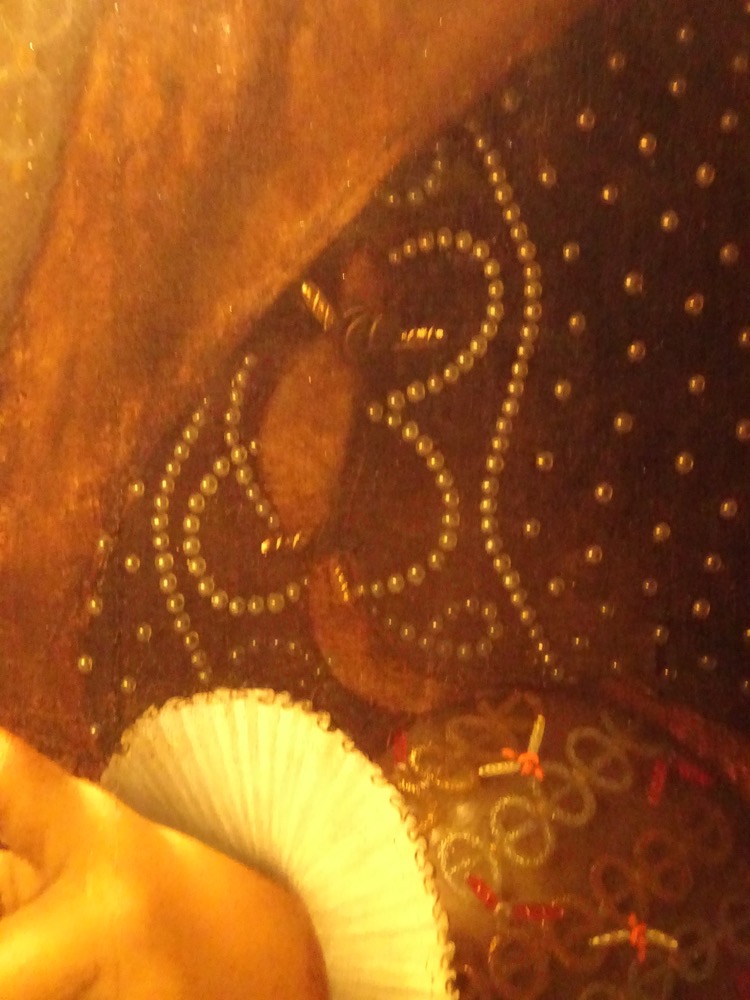 ‘Adam and Eve’, Lucas Cranach the Elder, 1520-1525.
‘Adam and Eve’, Lucas Cranach the Elder, 1520-1525.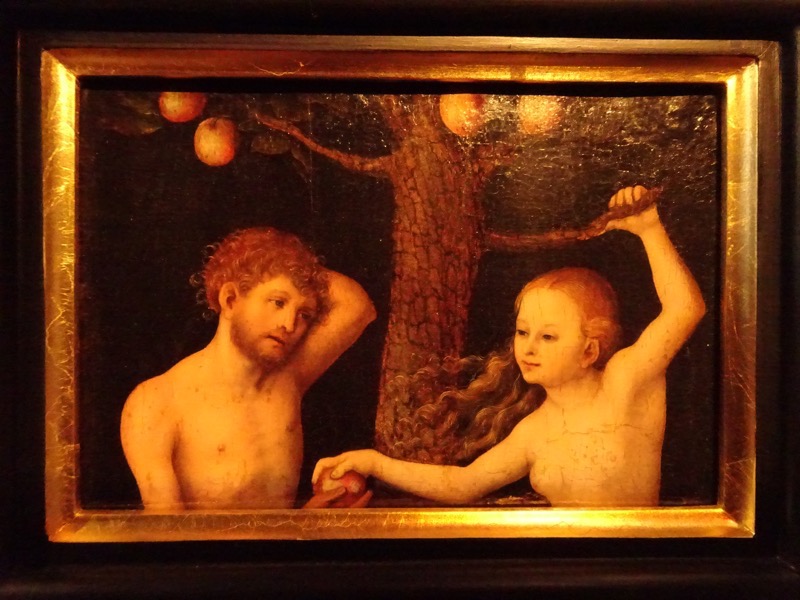
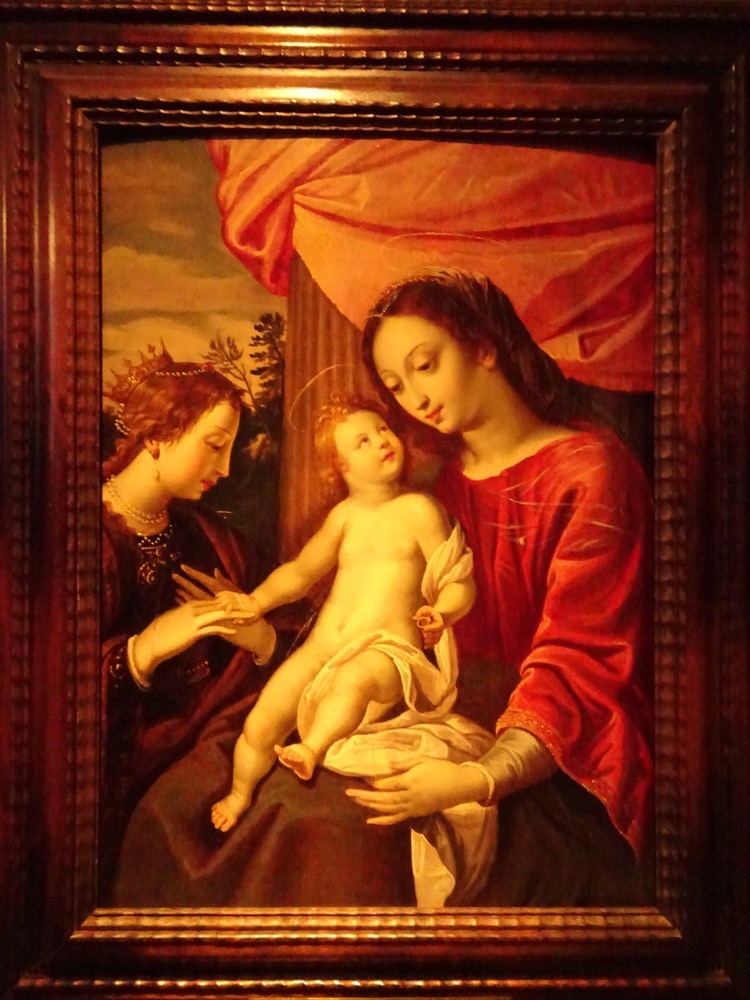 ‘Mystic Marriage of St Catherine of Alexandria’, Flemish School, c.1605. (and detail below)
‘Mystic Marriage of St Catherine of Alexandria’, Flemish School, c.1605. (and detail below)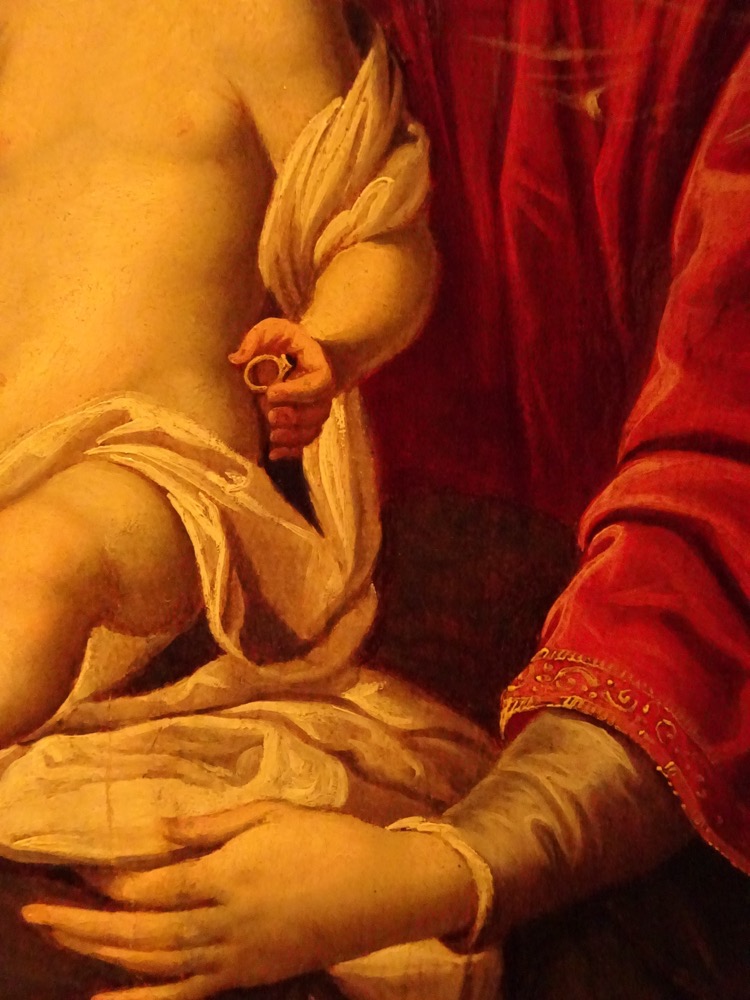
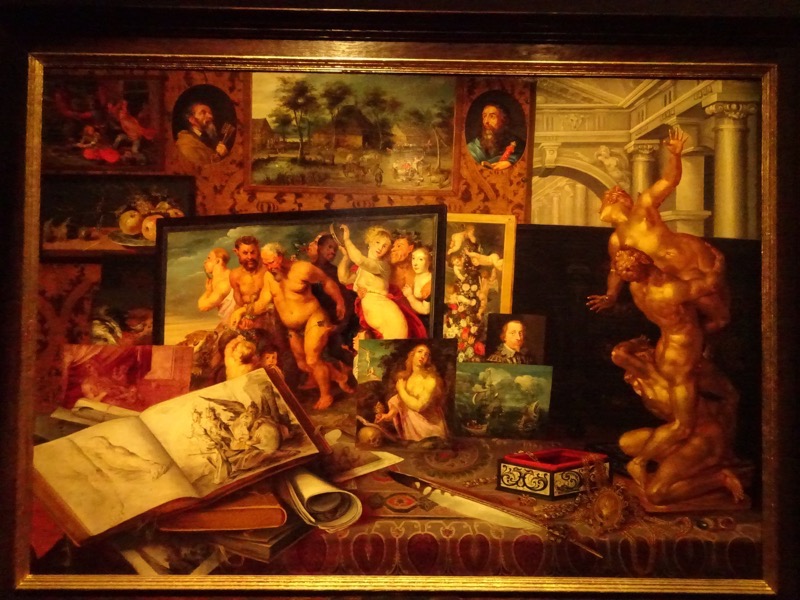 ‘Prince Wladyslaw Zygmunt Vasa’s Kunstkammer’, Antwerp School, 1626 (and detail below).
‘Prince Wladyslaw Zygmunt Vasa’s Kunstkammer’, Antwerp School, 1626 (and detail below).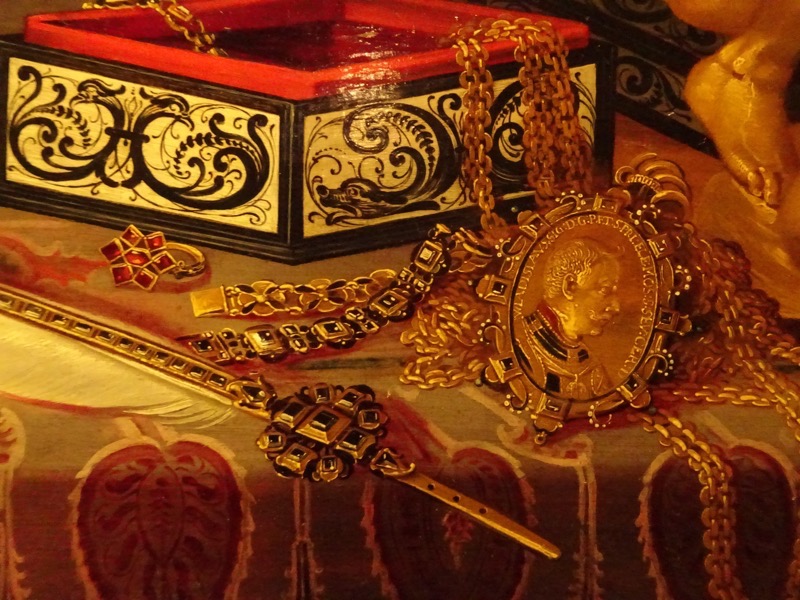 Polish Organ c. 1640.
Polish Organ c. 1640.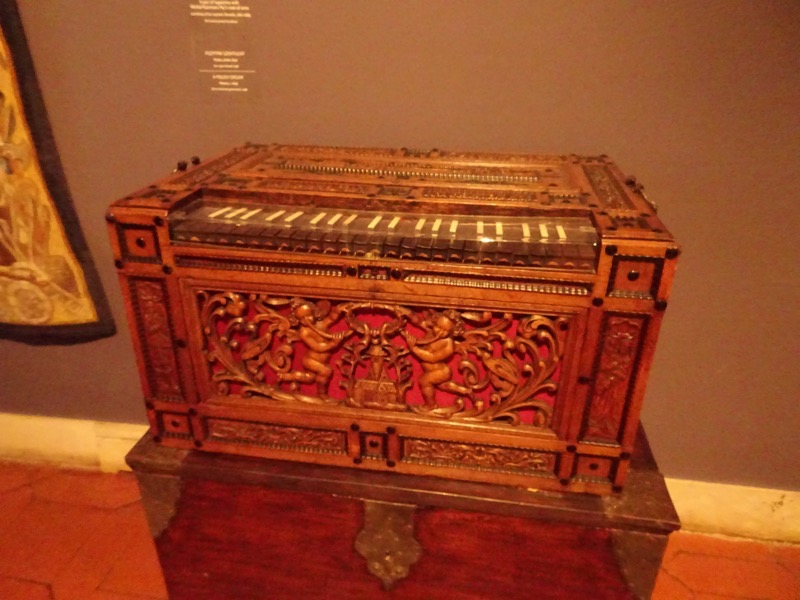
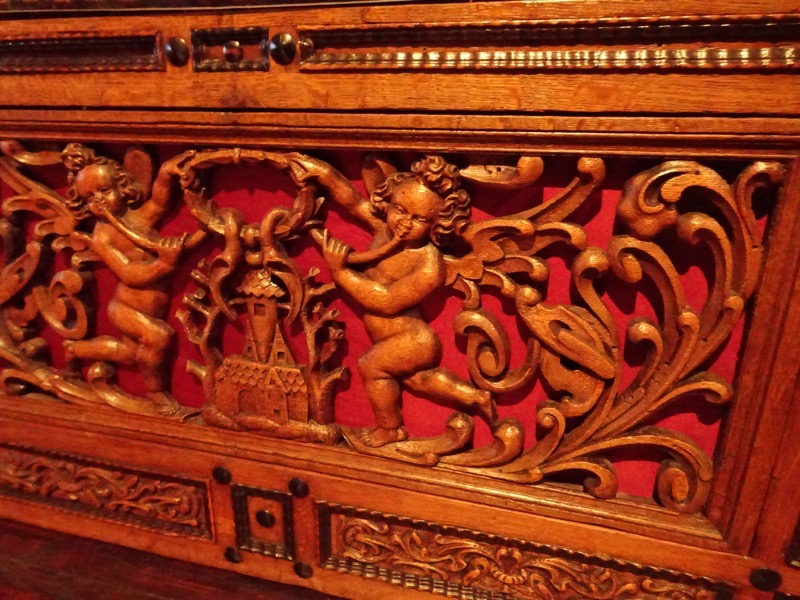
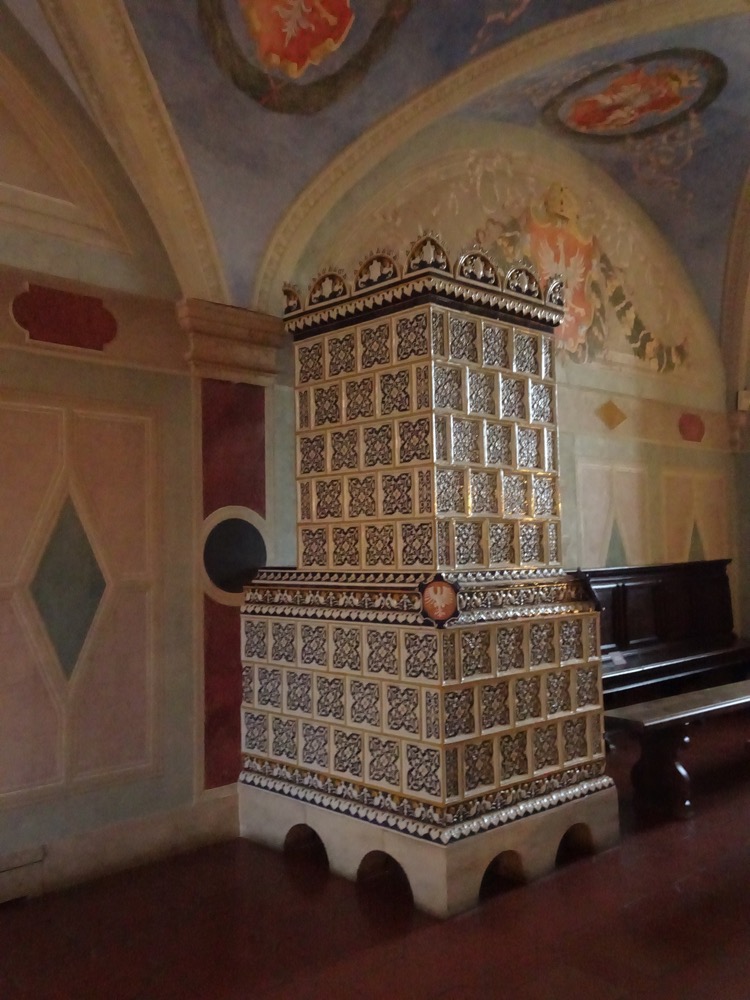 All up we had a much more positive experience at Warsaw Castle than we did at Krakow Castle – no restrictive timed ticketing, more than one person actually selling tickets, staff were helpful and interested in making sure visitors found their way around okay and even pointed out seats to us in dimly lit rooms. They allowed us to take photography AND they had exceptional books in their gift shops. Bonus.
All up we had a much more positive experience at Warsaw Castle than we did at Krakow Castle – no restrictive timed ticketing, more than one person actually selling tickets, staff were helpful and interested in making sure visitors found their way around okay and even pointed out seats to us in dimly lit rooms. They allowed us to take photography AND they had exceptional books in their gift shops. Bonus.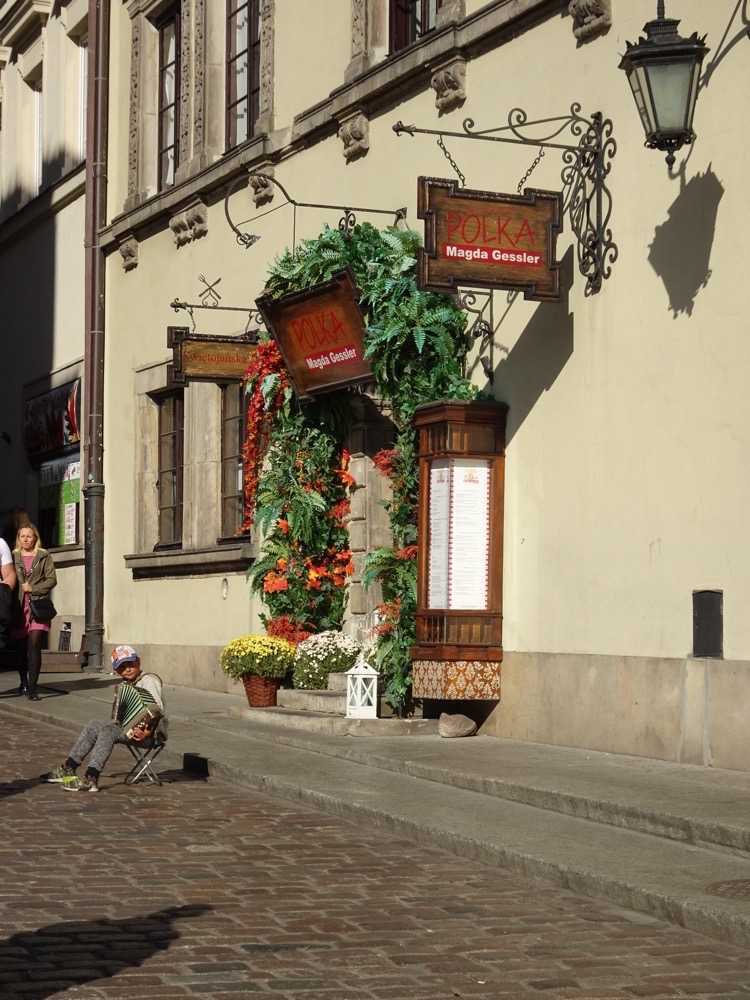
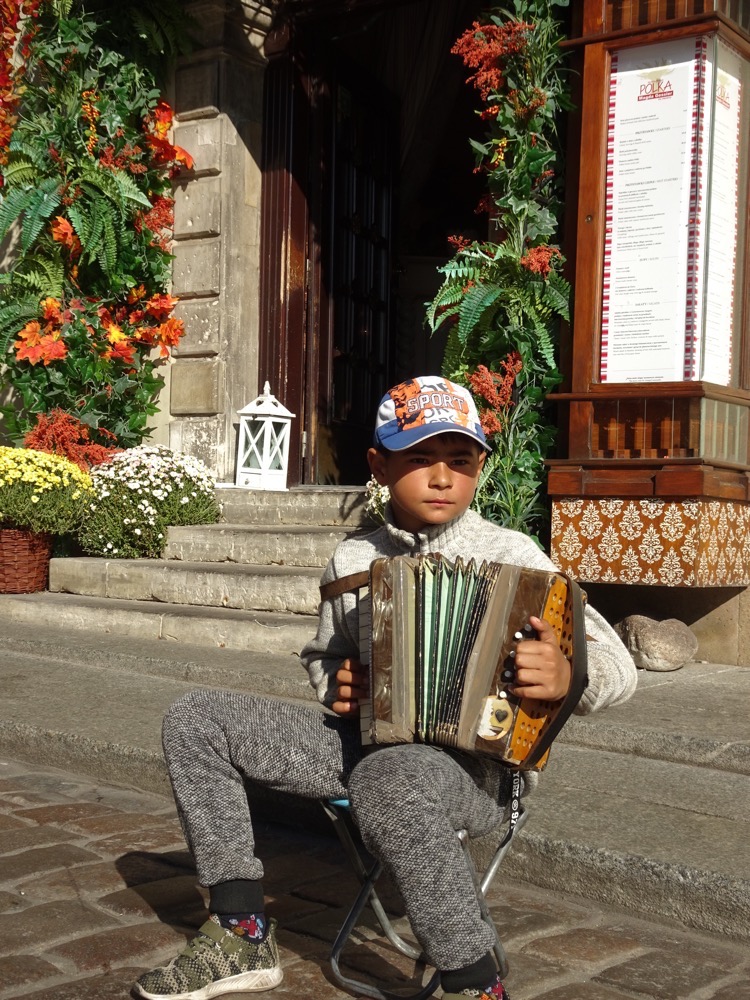 The Old Town and Castle Square is just gorgeous little area to stroll around. But alas, we had places to go and borders to cross!
The Old Town and Castle Square is just gorgeous little area to stroll around. But alas, we had places to go and borders to cross!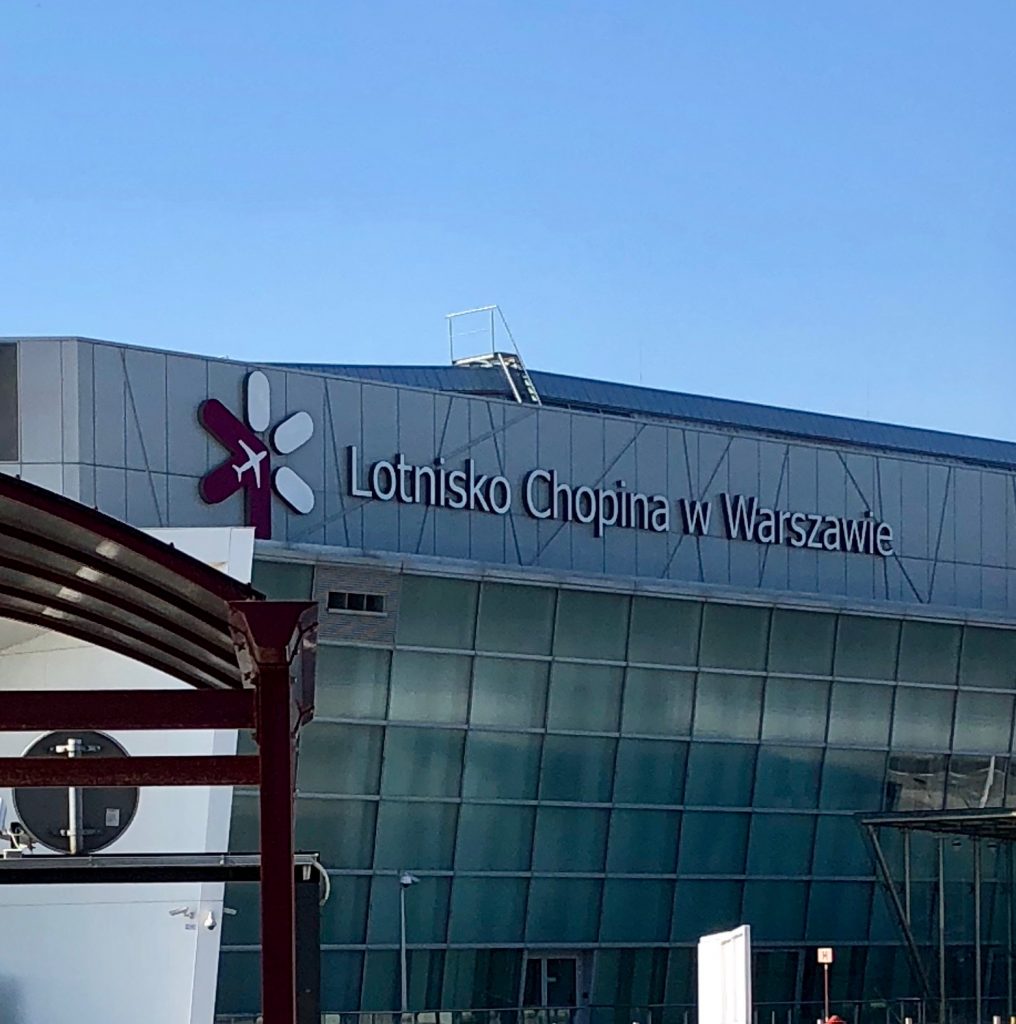 Flight was uneventful. People cheered when we landed, and some were doing that Chinese thing where you run down the aisle before the seatbelt sign was off to try and get off the plane first, only to be told they had to wait for a bus to take us off the tarmac. yale looked quite confused, he’d never seen that before. Then when they did get us all packed into a standing only space bus, someone had left their passport back on the plane so we all had to wait another 10 minutes.
Flight was uneventful. People cheered when we landed, and some were doing that Chinese thing where you run down the aisle before the seatbelt sign was off to try and get off the plane first, only to be told they had to wait for a bus to take us off the tarmac. yale looked quite confused, he’d never seen that before. Then when they did get us all packed into a standing only space bus, someone had left their passport back on the plane so we all had to wait another 10 minutes.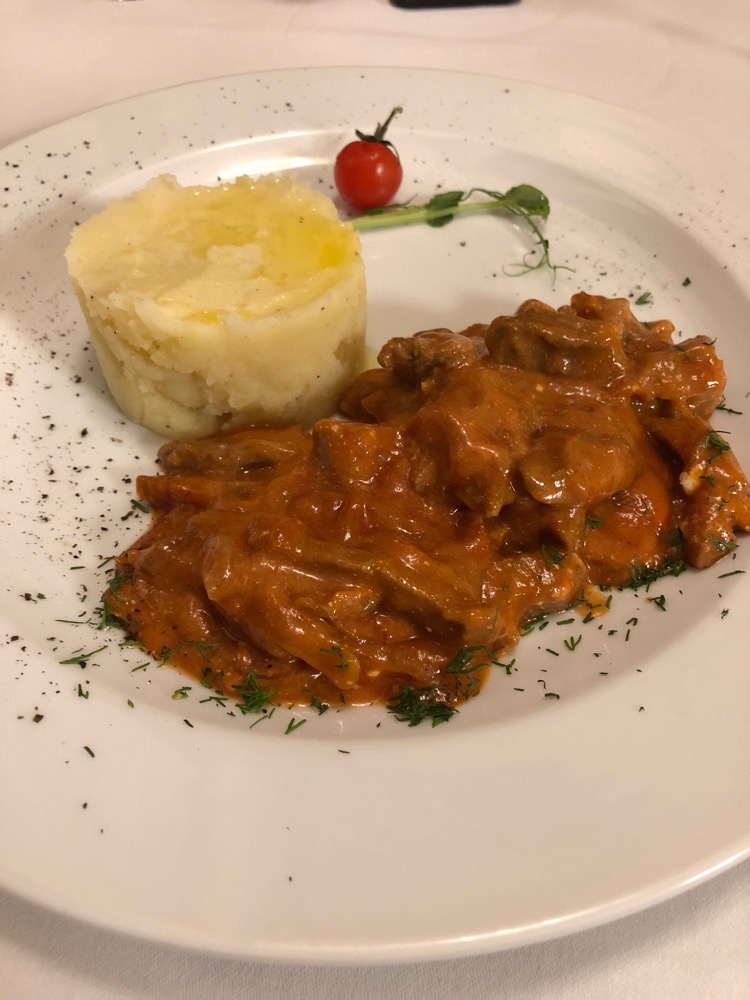
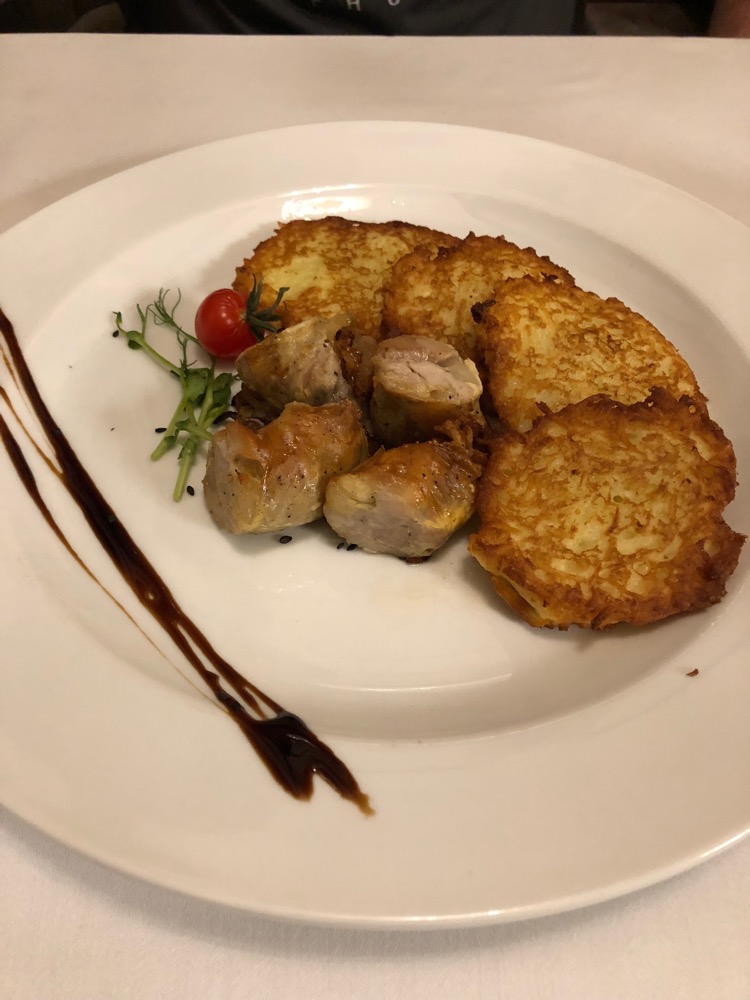
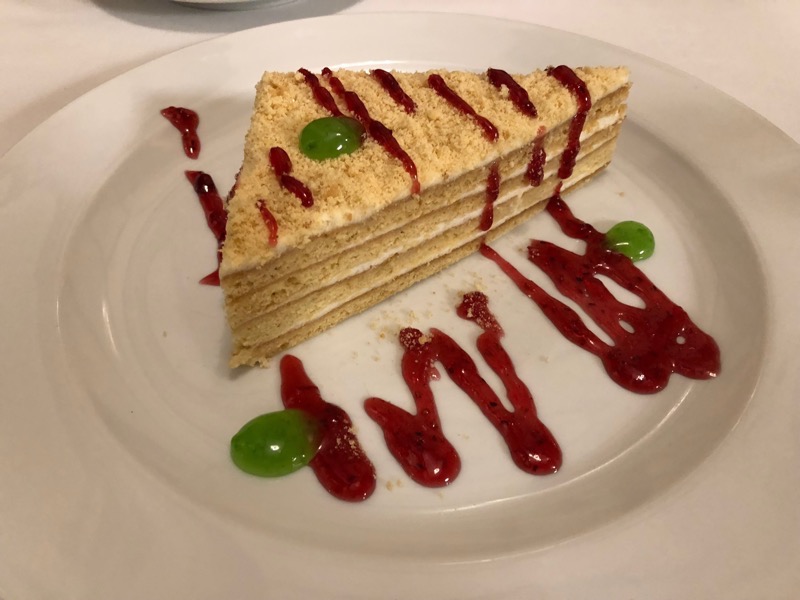
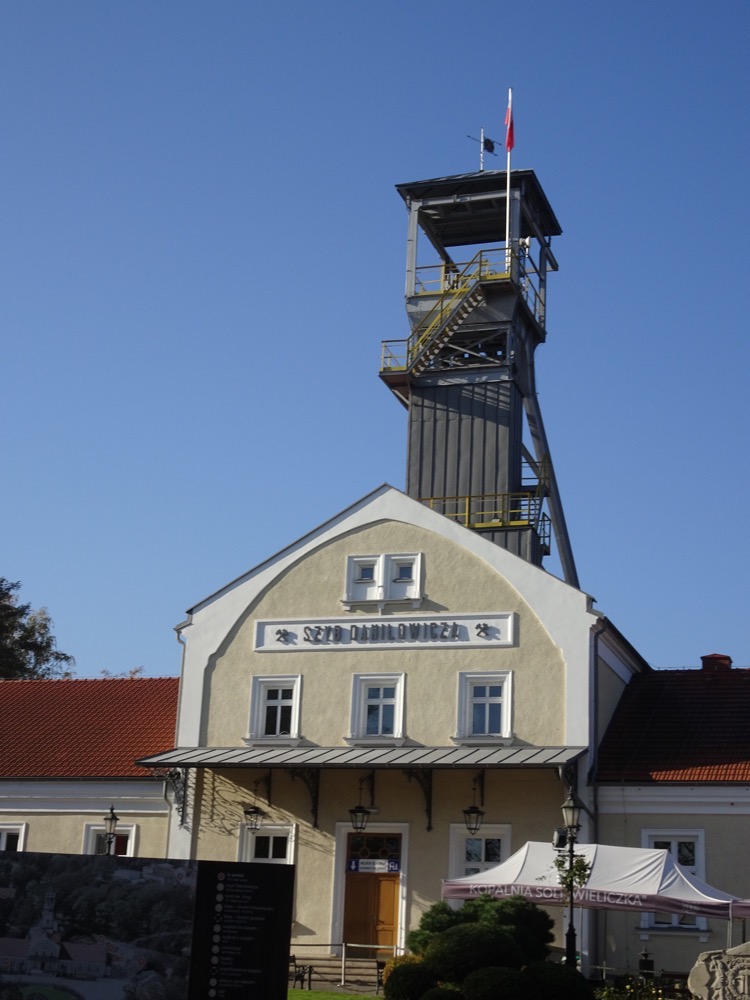
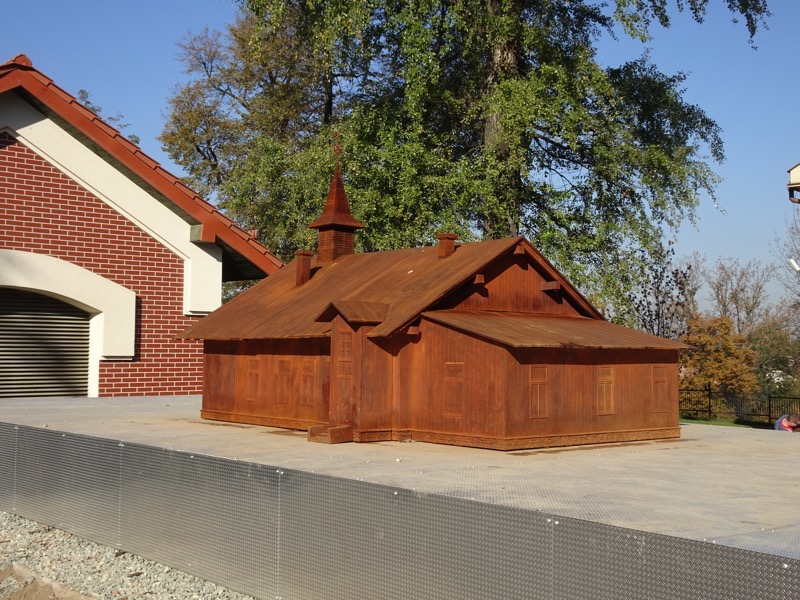
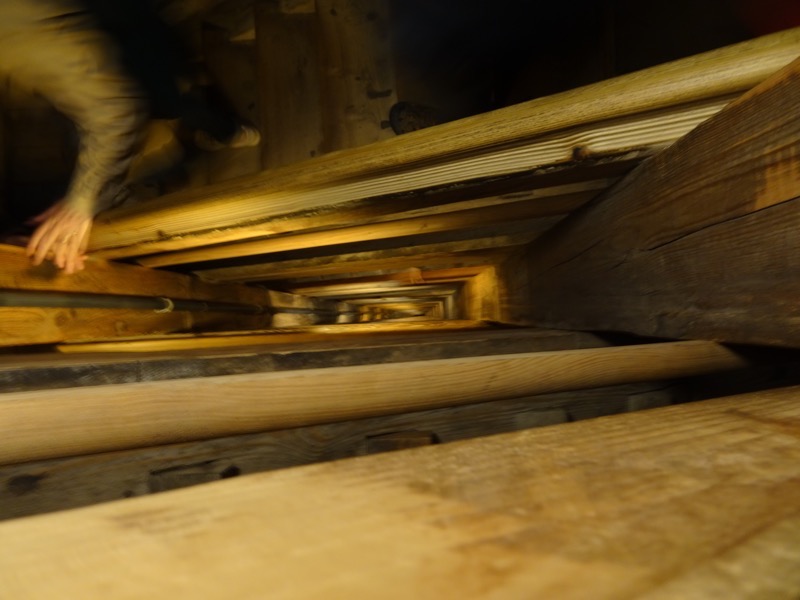 The Wieliczka salt mine reaches a total depth of 327 meters and is over 287 kilometres long. Since the mined ceased commercial operations it has become a major tourist attraction – there are underground chapels and an enormous reception room that is used for private functions, including weddings, loads of statues and some underground brine lakes. The tourist route goes only 135m underground (which is plenty, trust me!) and follows a 3 km guided tour. To initially get down to the first levels of the tours, visitors need to go down 64m via a timber spiral staircase of some 380 steps – which, given the low ceilings and tight space is a bit like walking down a 40 storey building fire escape stairwell. There are many more sets of wooden steps so that visitors end up on the third level down at 135m and a total of approximately 800 steps down to get to that level.
The Wieliczka salt mine reaches a total depth of 327 meters and is over 287 kilometres long. Since the mined ceased commercial operations it has become a major tourist attraction – there are underground chapels and an enormous reception room that is used for private functions, including weddings, loads of statues and some underground brine lakes. The tourist route goes only 135m underground (which is plenty, trust me!) and follows a 3 km guided tour. To initially get down to the first levels of the tours, visitors need to go down 64m via a timber spiral staircase of some 380 steps – which, given the low ceilings and tight space is a bit like walking down a 40 storey building fire escape stairwell. There are many more sets of wooden steps so that visitors end up on the third level down at 135m and a total of approximately 800 steps down to get to that level.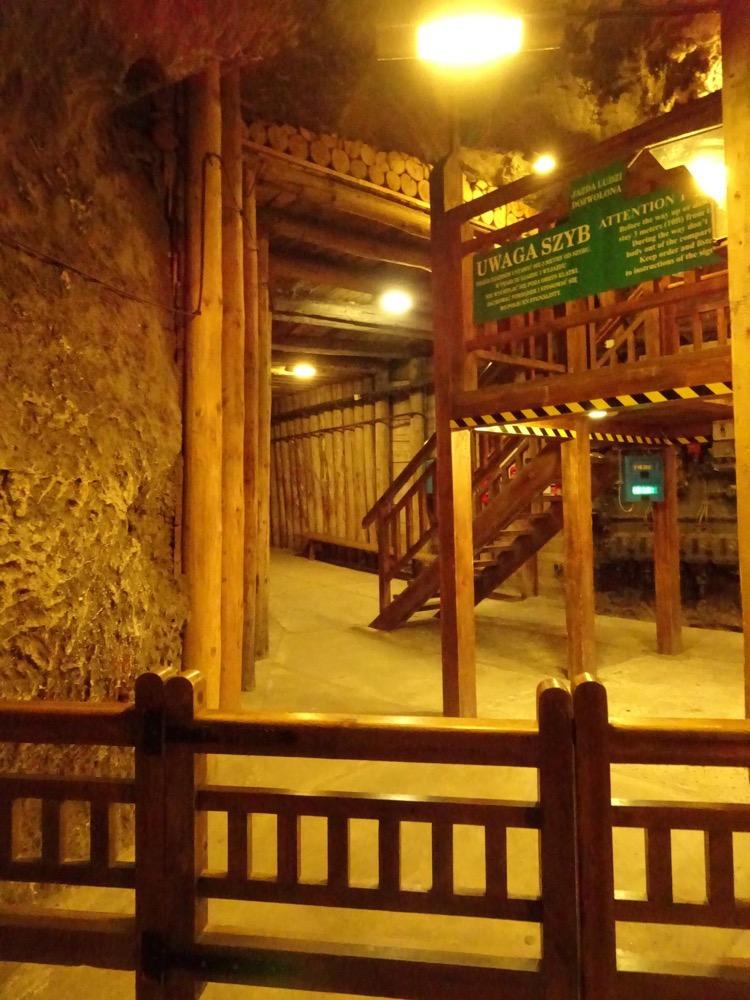 Everywhere we look is salt. Salt walls, salt floors, salt ledges, nooks and crannies. The rock salt naturally occurs in various shades of grey and looks more like unpolished granite.
Everywhere we look is salt. Salt walls, salt floors, salt ledges, nooks and crannies. The rock salt naturally occurs in various shades of grey and looks more like unpolished granite.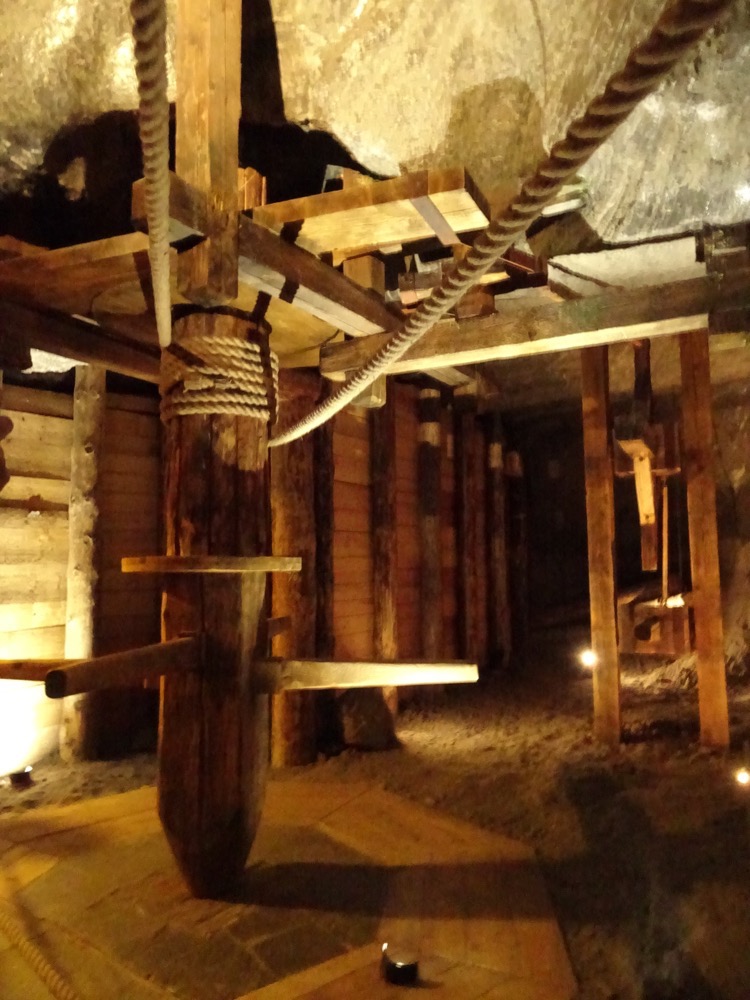 There are many pully systems and horse treadmills throughout the mine to assist miners in moving large amounts of the heavy product to the surface.
There are many pully systems and horse treadmills throughout the mine to assist miners in moving large amounts of the heavy product to the surface.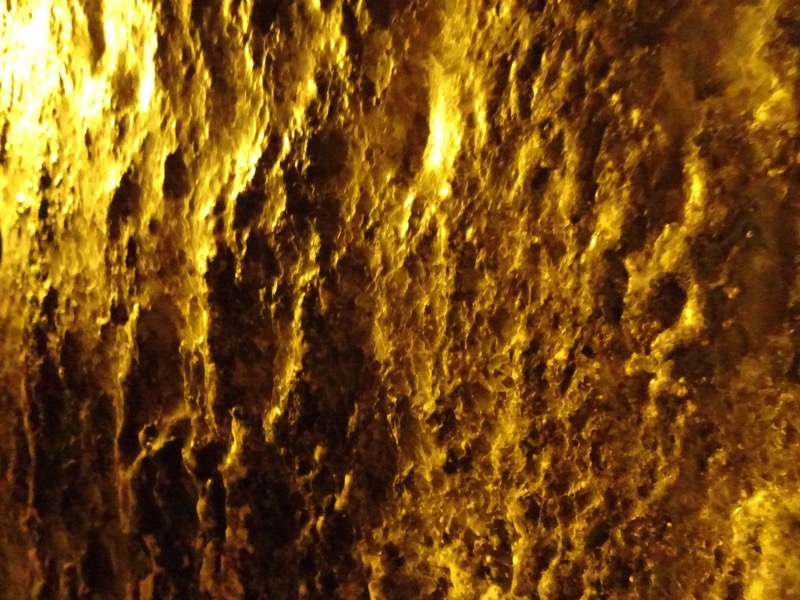 Throughout the mine, there are many statues carved out of salt. Some, more contemporary artworks have been carved by modern sculptors, but many have been carved by amateurs – gifted miners who worked on these sculptures during their own time.
Throughout the mine, there are many statues carved out of salt. Some, more contemporary artworks have been carved by modern sculptors, but many have been carved by amateurs – gifted miners who worked on these sculptures during their own time.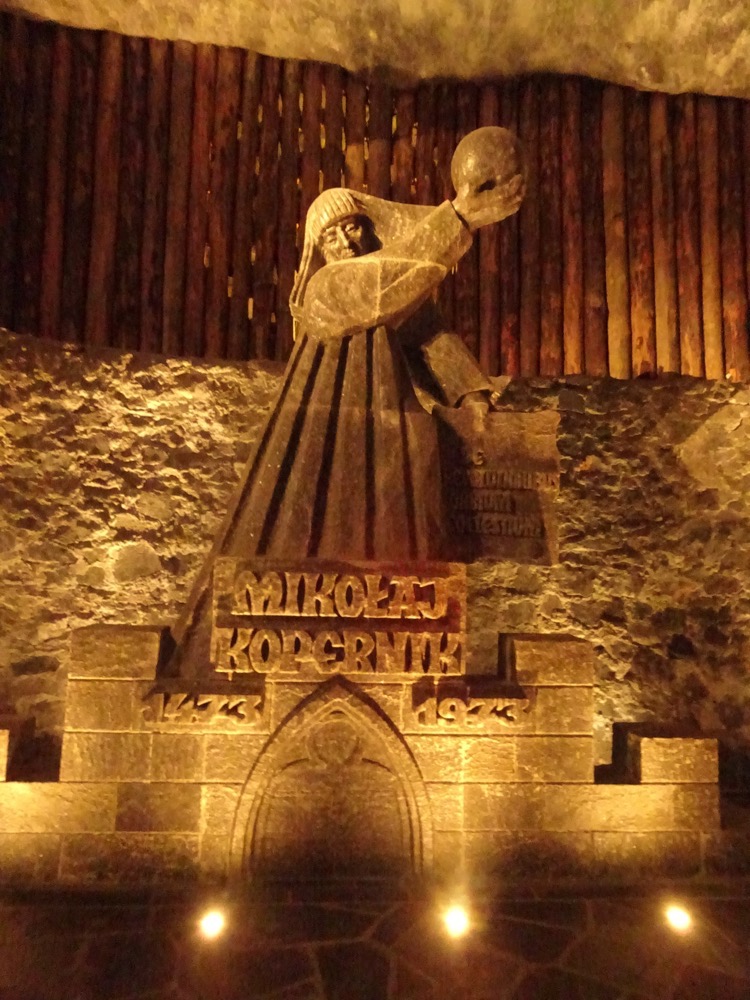
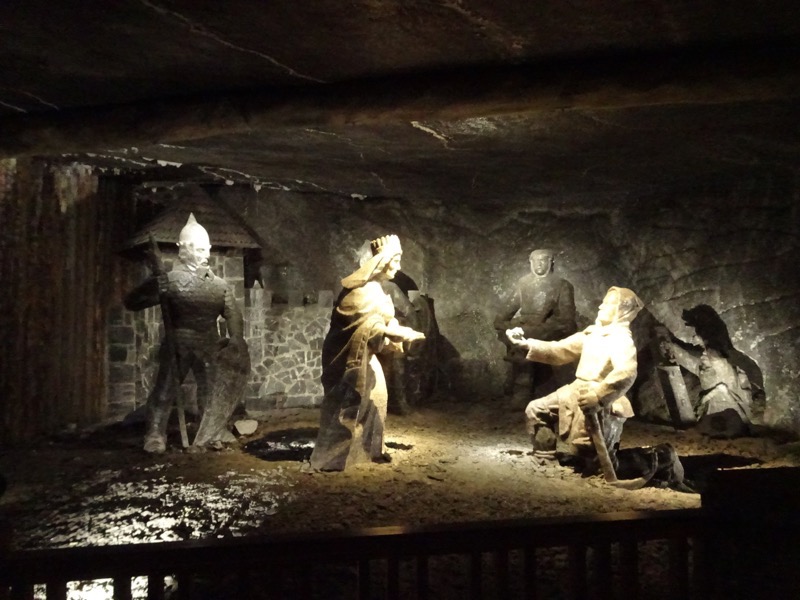 And the scene depicted is a diorama carved of salt.
And the scene depicted is a diorama carved of salt.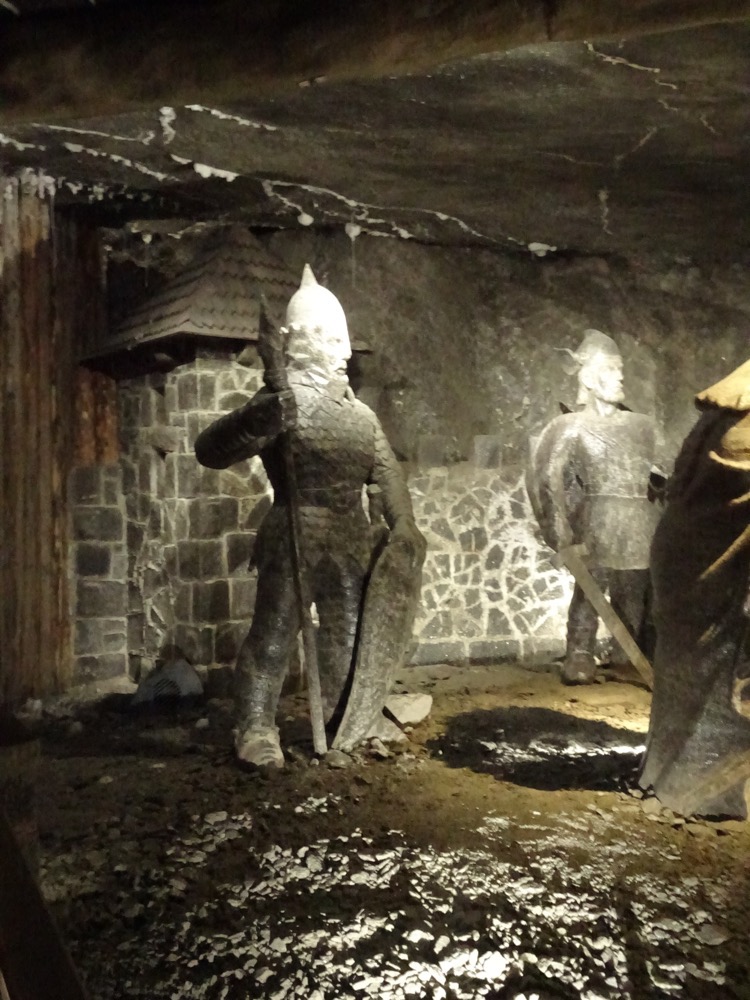 The St Anthony’s Chapel.
The St Anthony’s Chapel.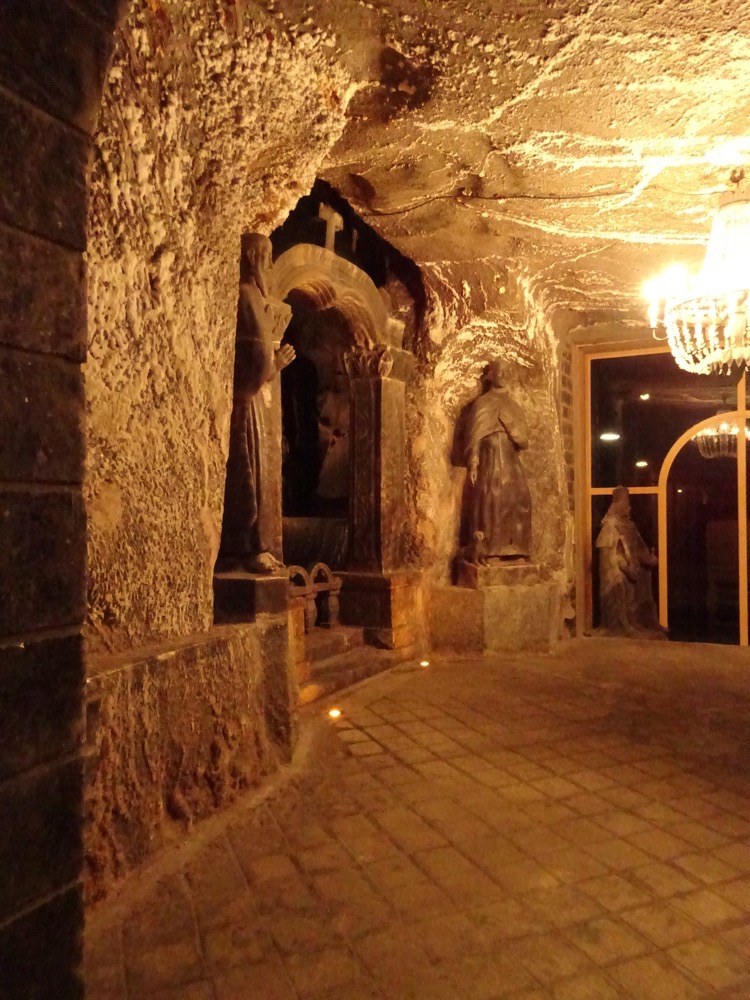
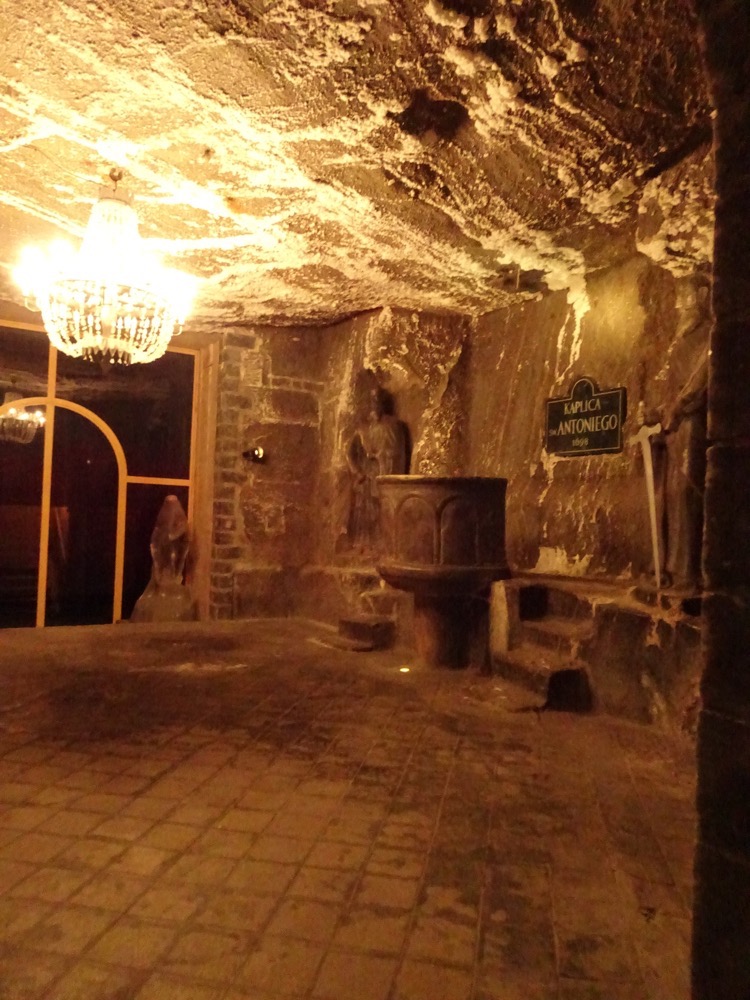 Secondary crystalised salt forms on the walls and ceiling of the mine as water seeps through the rock above.
Secondary crystalised salt forms on the walls and ceiling of the mine as water seeps through the rock above.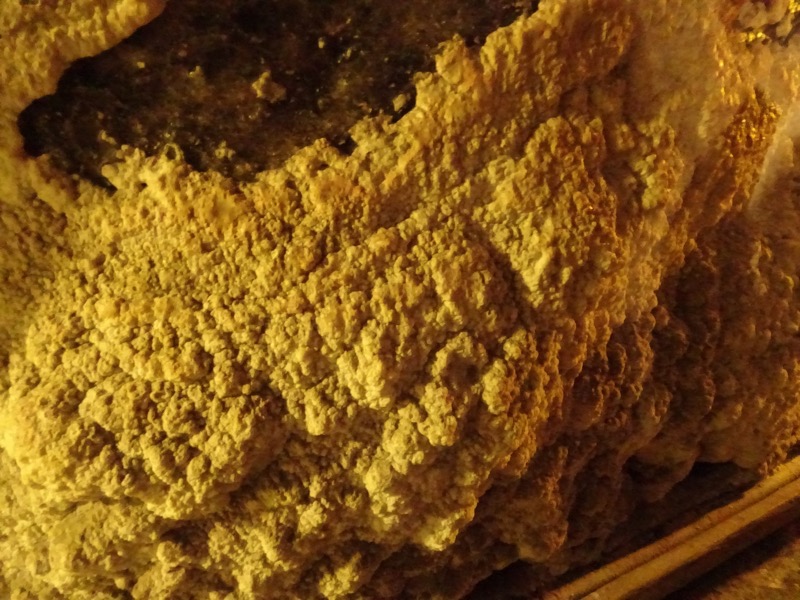
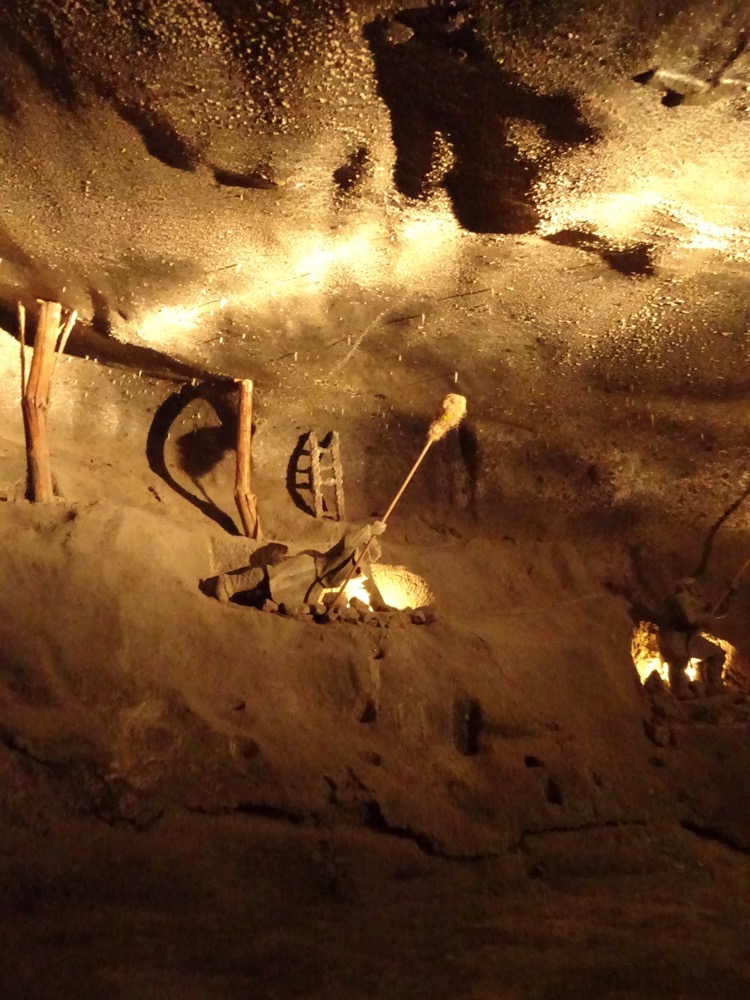 One of the most dangerous things about mining salt (indeed about mining anything this far underground) is the risk of fire. The salt mines were particularly prone to fires from gas escaping as new veins of salt were mine. Therefore one of the most dangerous jobs down the mine was to crawl down the newly created tunnels with a long flaming torch literally burning out pockets of colourless gas, which could cause explosions if the gas deposits were large enough. It was a very dangerous job but apparetly very well paid work.
One of the most dangerous things about mining salt (indeed about mining anything this far underground) is the risk of fire. The salt mines were particularly prone to fires from gas escaping as new veins of salt were mine. Therefore one of the most dangerous jobs down the mine was to crawl down the newly created tunnels with a long flaming torch literally burning out pockets of colourless gas, which could cause explosions if the gas deposits were large enough. It was a very dangerous job but apparetly very well paid work.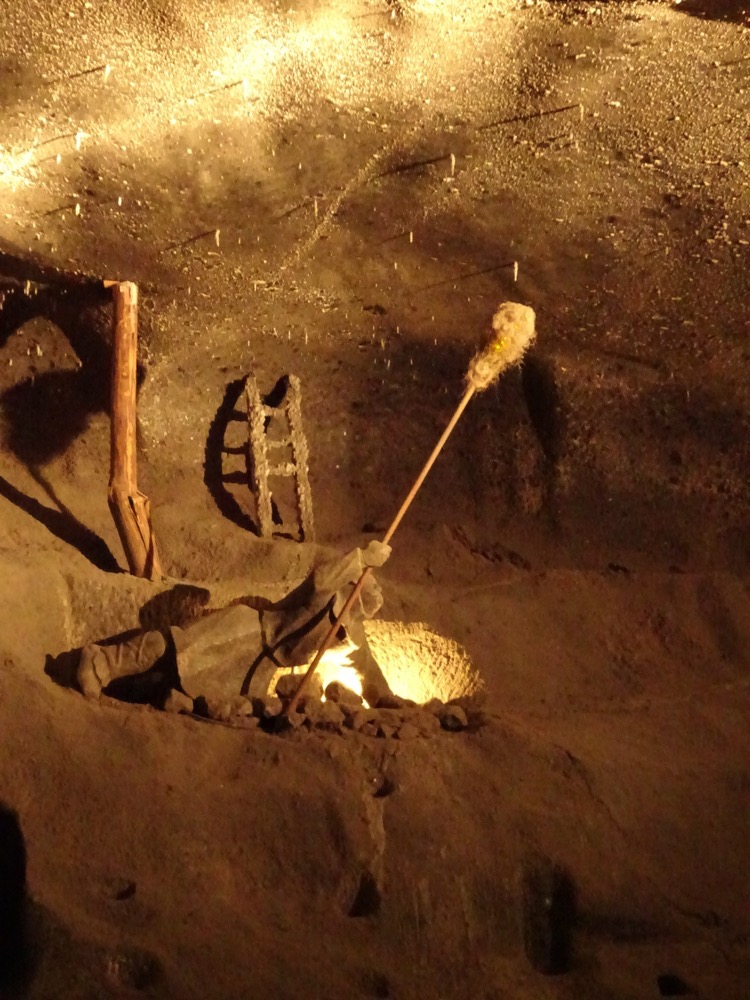 The visible patterns and designs have been hand cut into the walls and floors.
The visible patterns and designs have been hand cut into the walls and floors.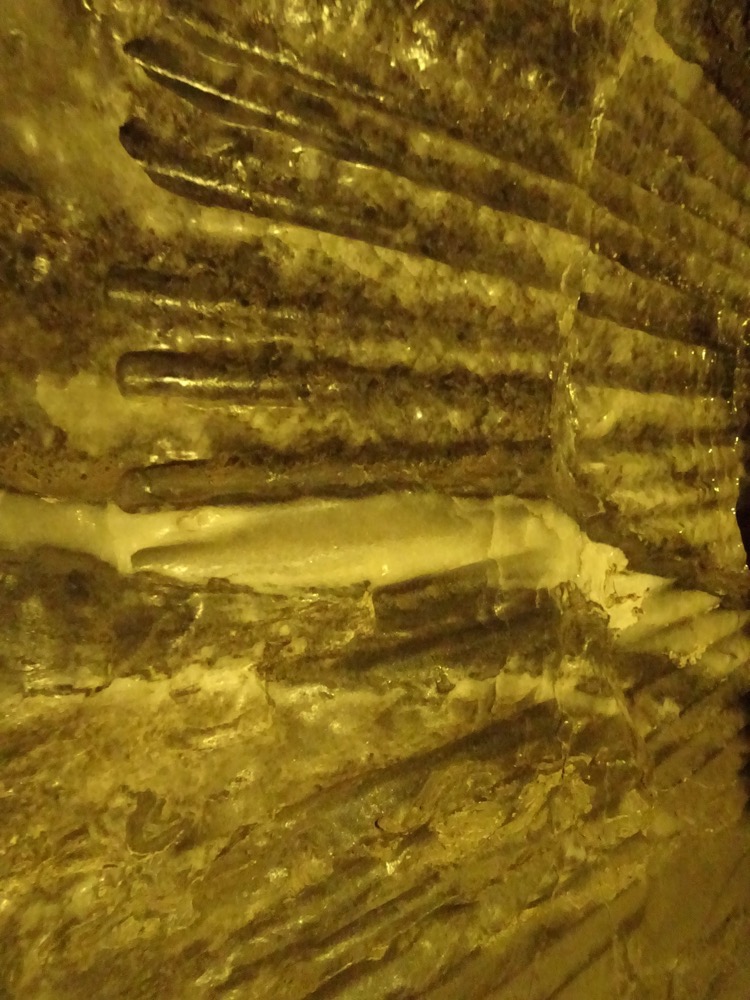 There were many workhorses used in the salt mines – once down the mine, they spent their entire lives down there as it was difficult to get them in or out. So naturally, they needed stables, with feed storage and all sorts. Hay stocks would bring mice, which meant they eventually brought down cats and the whole place sounded like a bit of a menagerie.
There were many workhorses used in the salt mines – once down the mine, they spent their entire lives down there as it was difficult to get them in or out. So naturally, they needed stables, with feed storage and all sorts. Hay stocks would bring mice, which meant they eventually brought down cats and the whole place sounded like a bit of a menagerie. 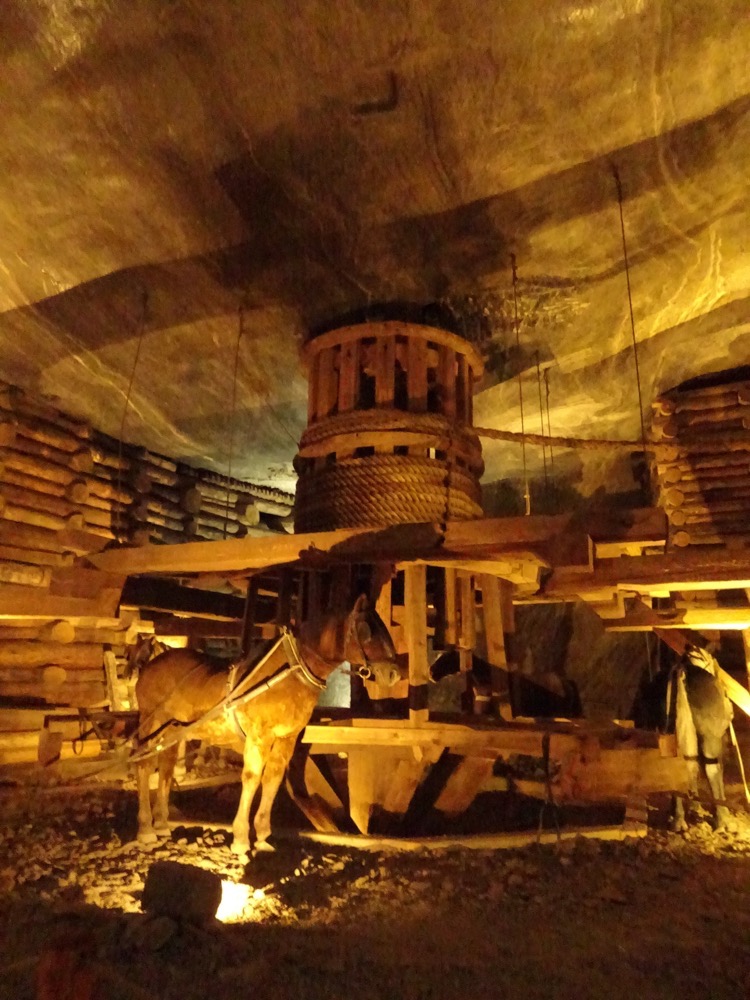
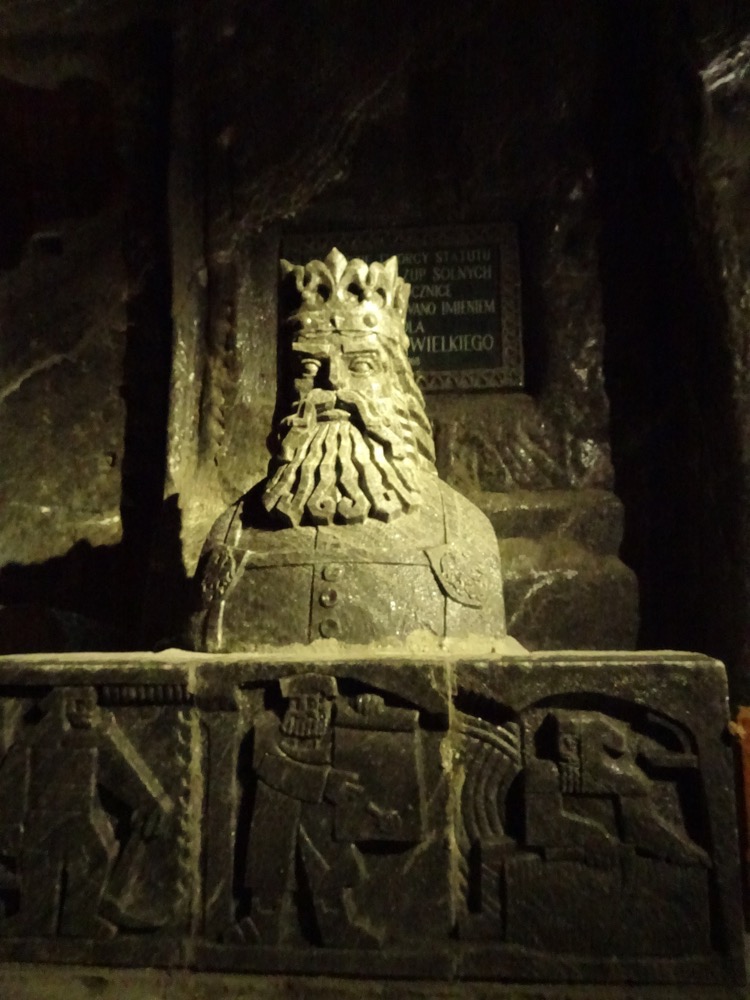 An old winch system:
An old winch system: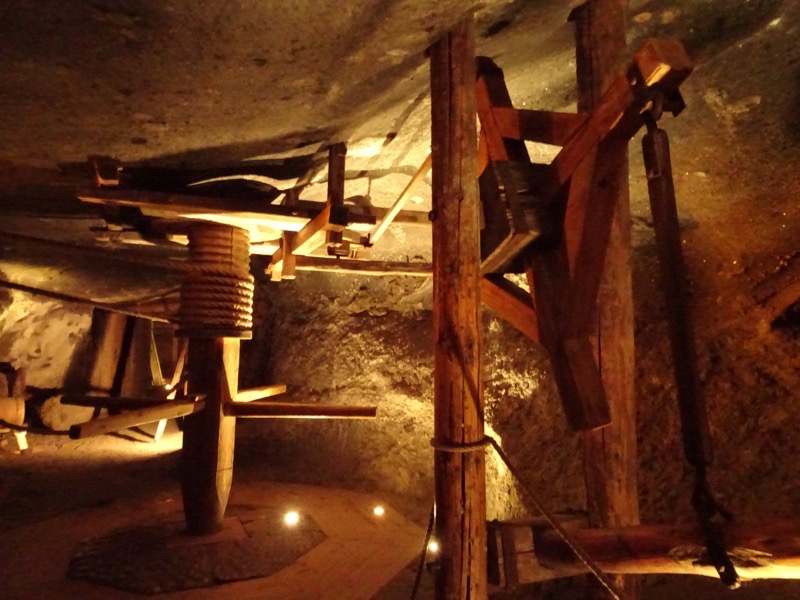 This photo is unfortunately not very clear, but these were 14th century stairs that miners would use to descend the mine, carved into the salt.
This photo is unfortunately not very clear, but these were 14th century stairs that miners would use to descend the mine, carved into the salt.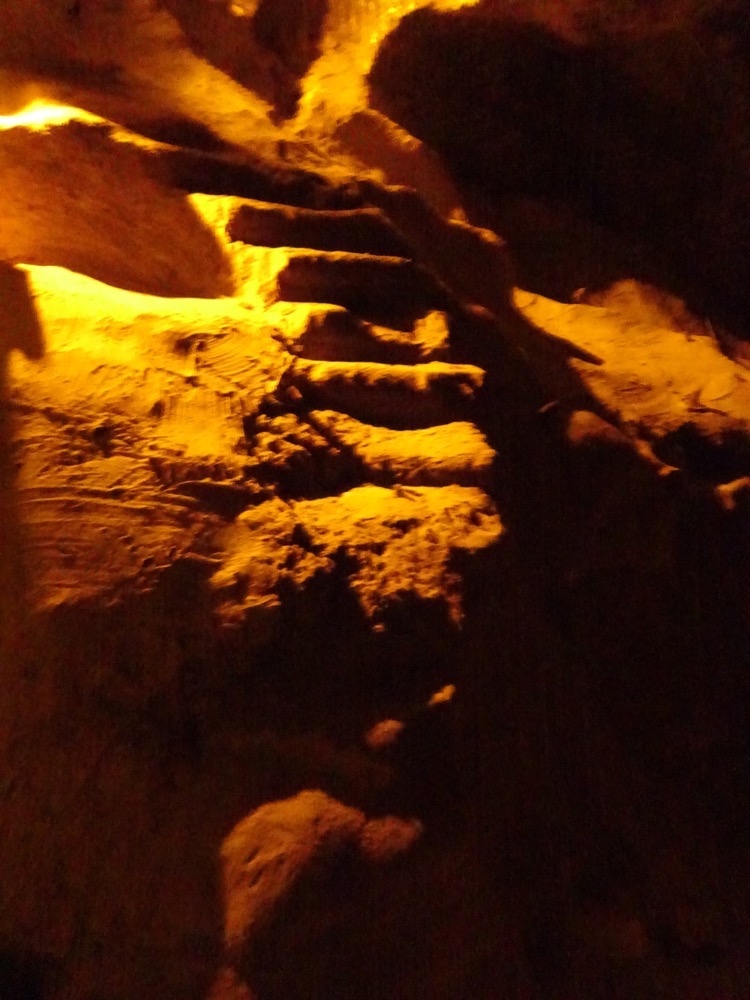 Looking down to the second level:
Looking down to the second level: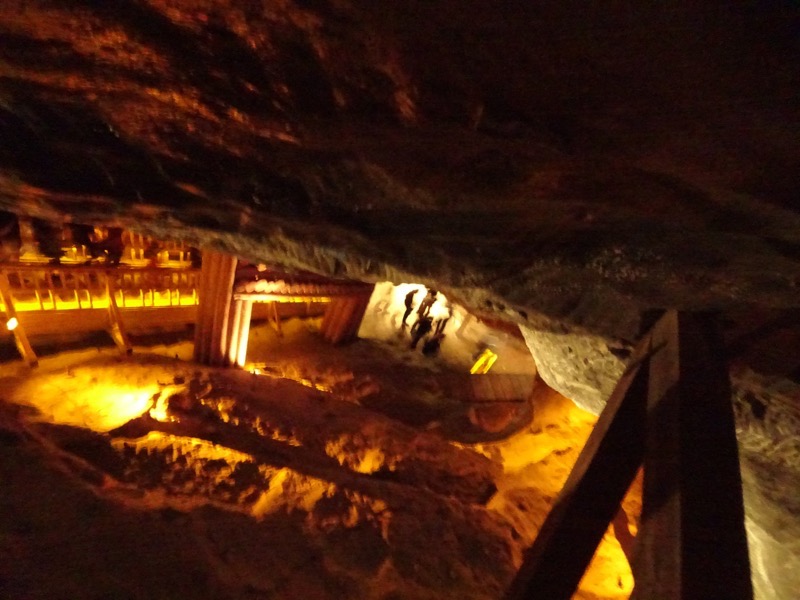 Gnomes start to appear dotted around the place, carved out of very clear white rock salt.
Gnomes start to appear dotted around the place, carved out of very clear white rock salt.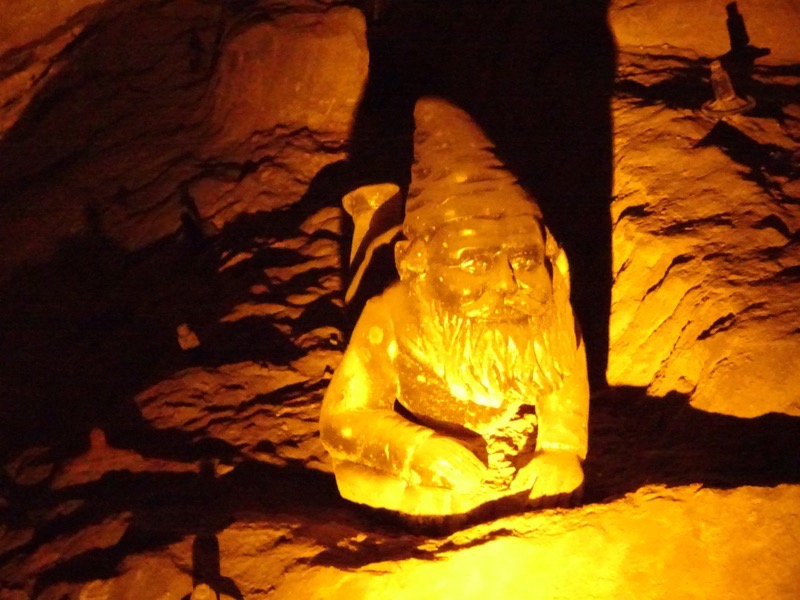 Where we just came from:
Where we just came from: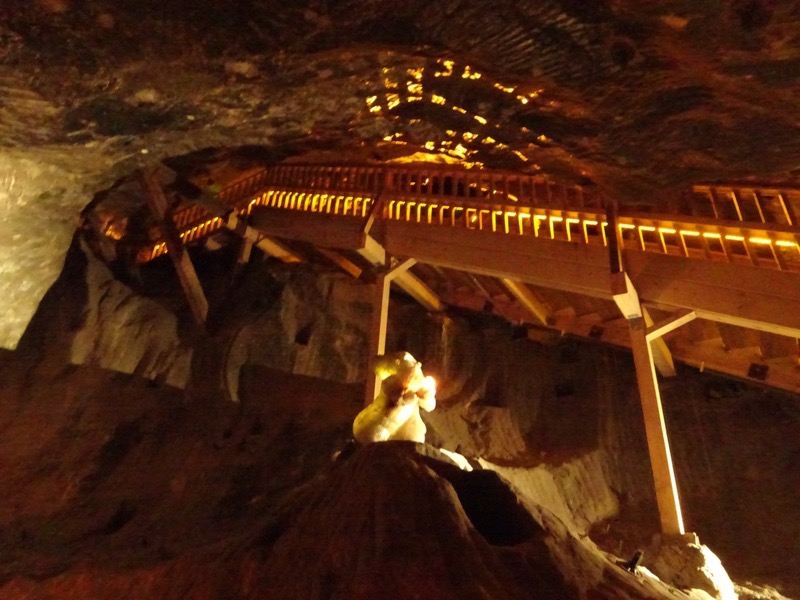 A brine creek directed to a bowl. Our guide kept telling us to lick the walls or taste the water – it’s so salty that no bacteria can survive on the surface, and even though the mine has over 1.2 million visitors a year, she assures us that no one ever gets sick from licking the walls. I kinda believe her, but didn’t feel the need to try it. The water however was extremely salty.
A brine creek directed to a bowl. Our guide kept telling us to lick the walls or taste the water – it’s so salty that no bacteria can survive on the surface, and even though the mine has over 1.2 million visitors a year, she assures us that no one ever gets sick from licking the walls. I kinda believe her, but didn’t feel the need to try it. The water however was extremely salty.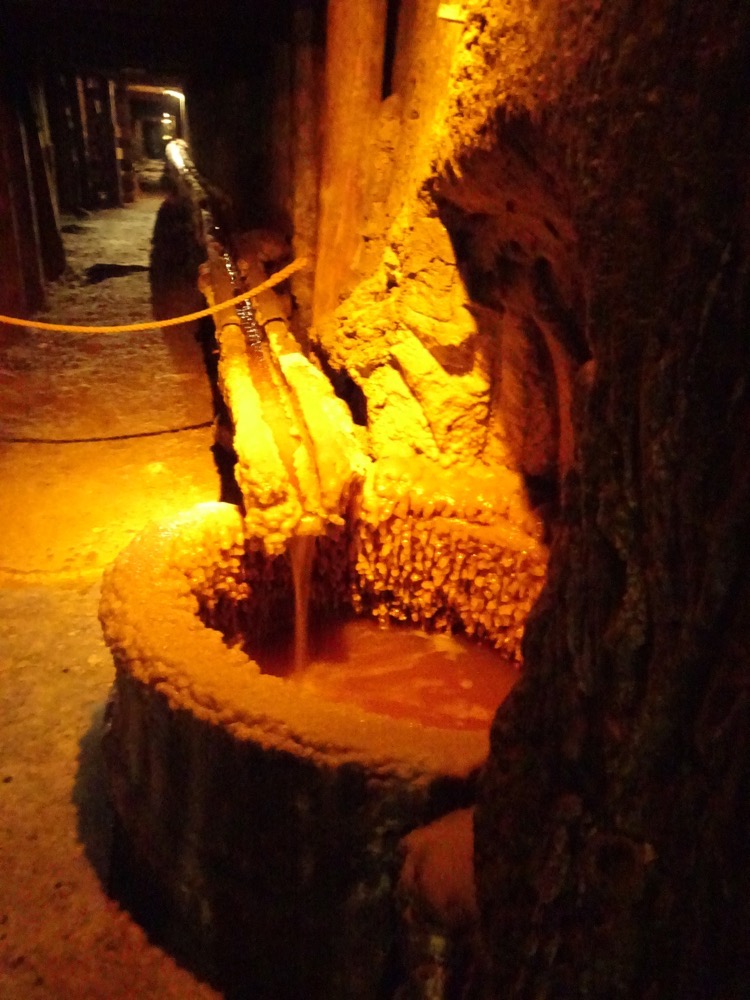
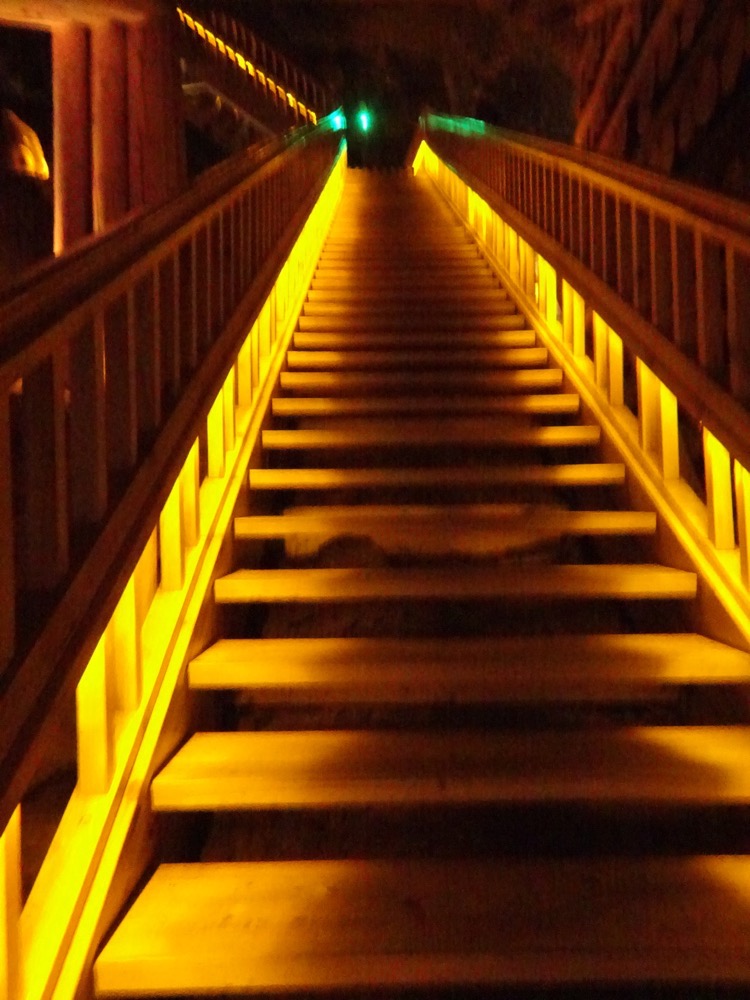 A recreated foreman’s office off a mine tunnel:
A recreated foreman’s office off a mine tunnel: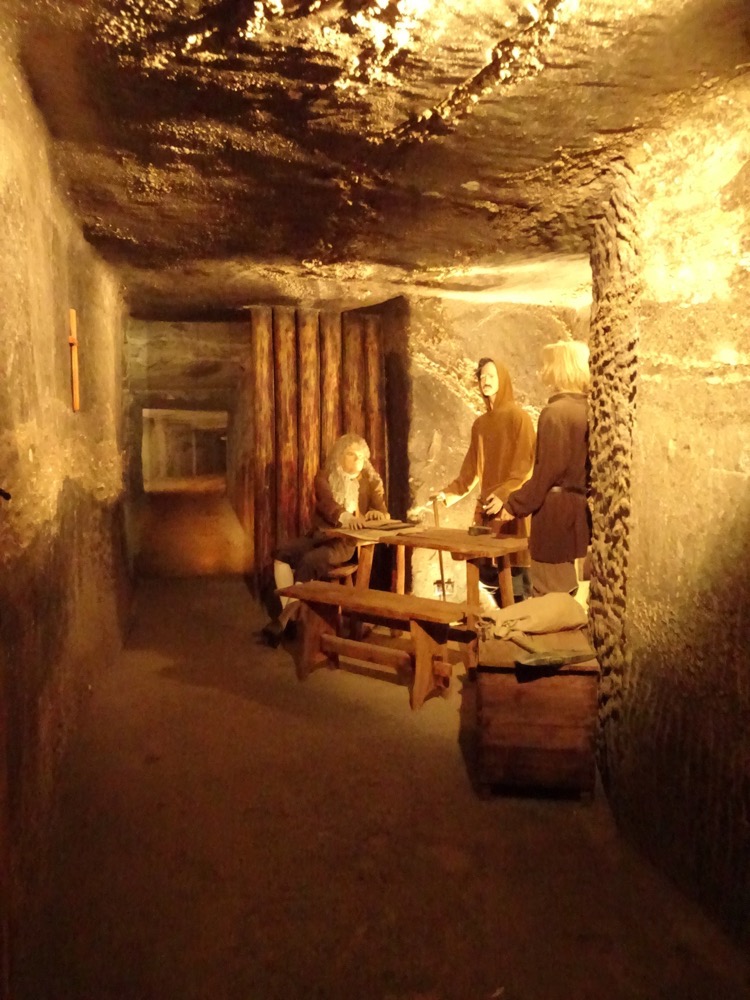 A vignette of many gnomes doing various mine jobs:
A vignette of many gnomes doing various mine jobs: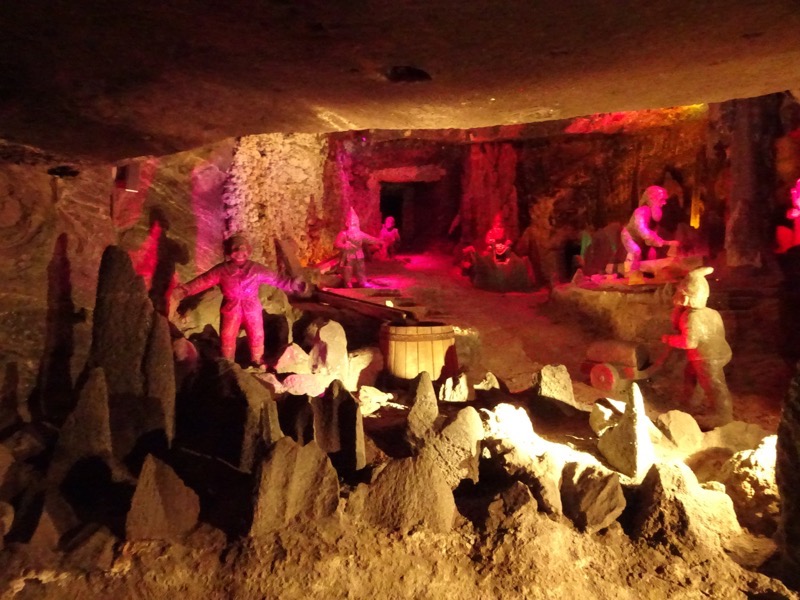 Another small chapel space to the virgin Mary:
Another small chapel space to the virgin Mary: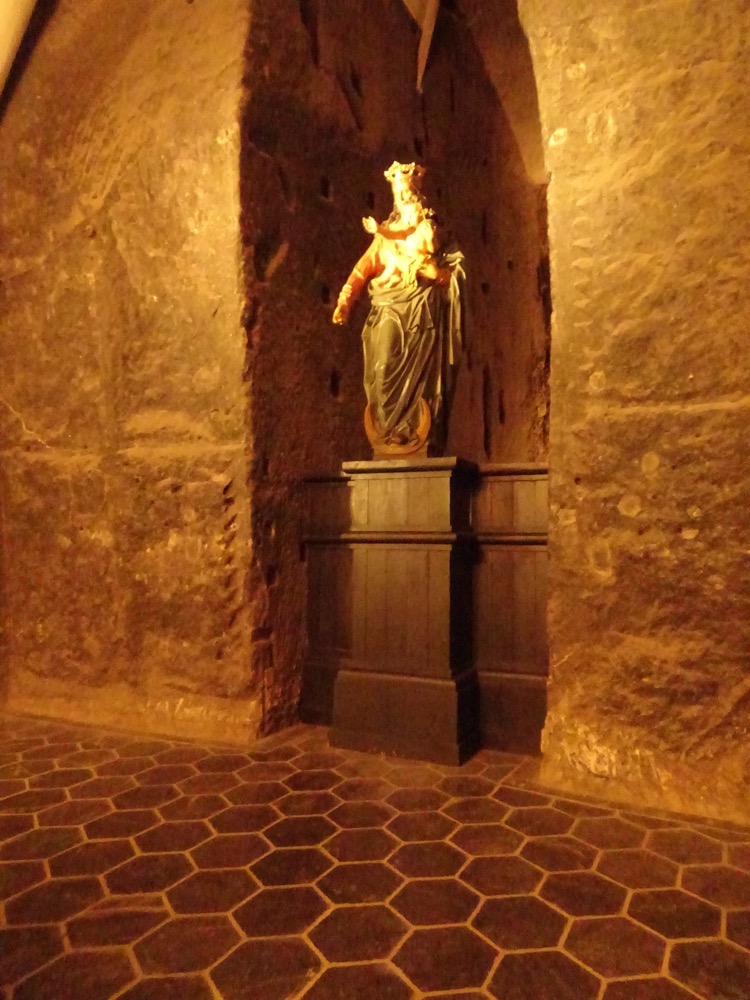 Some of the chambers have been reinforced with timber, which miners kept painted white. They had no electric lighting down here and had small tallow lamps or torches only. The white allowed for the light to be reflected around more easily and create better lit conditions.
Some of the chambers have been reinforced with timber, which miners kept painted white. They had no electric lighting down here and had small tallow lamps or torches only. The white allowed for the light to be reflected around more easily and create better lit conditions.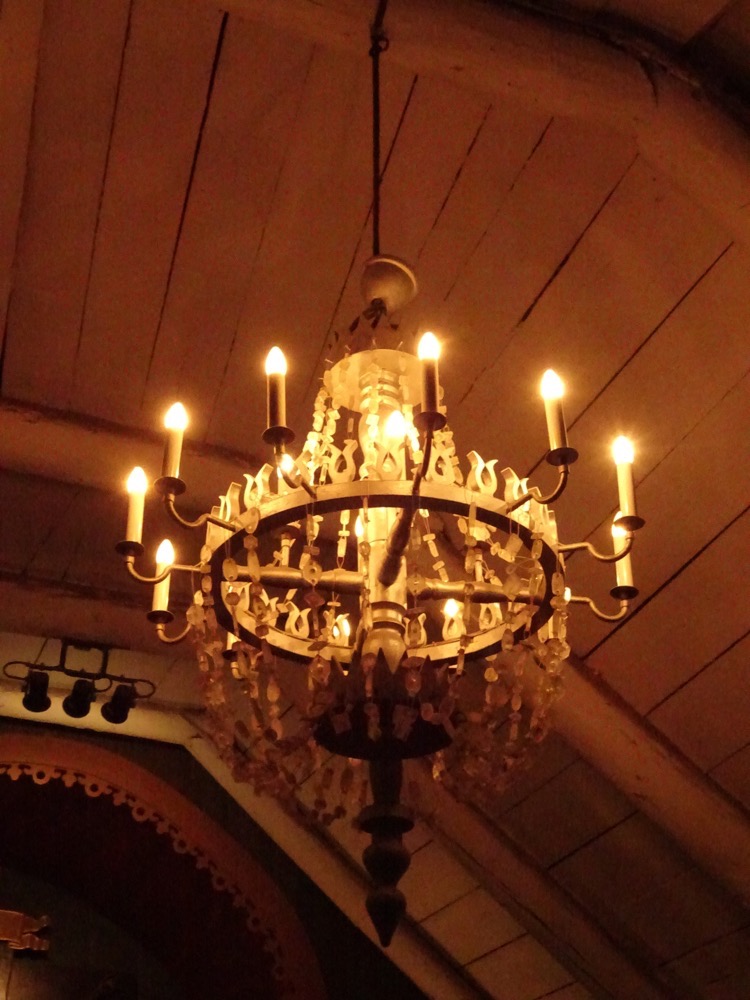 Another small chapel. Mining is serious business that needs a lot of praying.
Another small chapel. Mining is serious business that needs a lot of praying.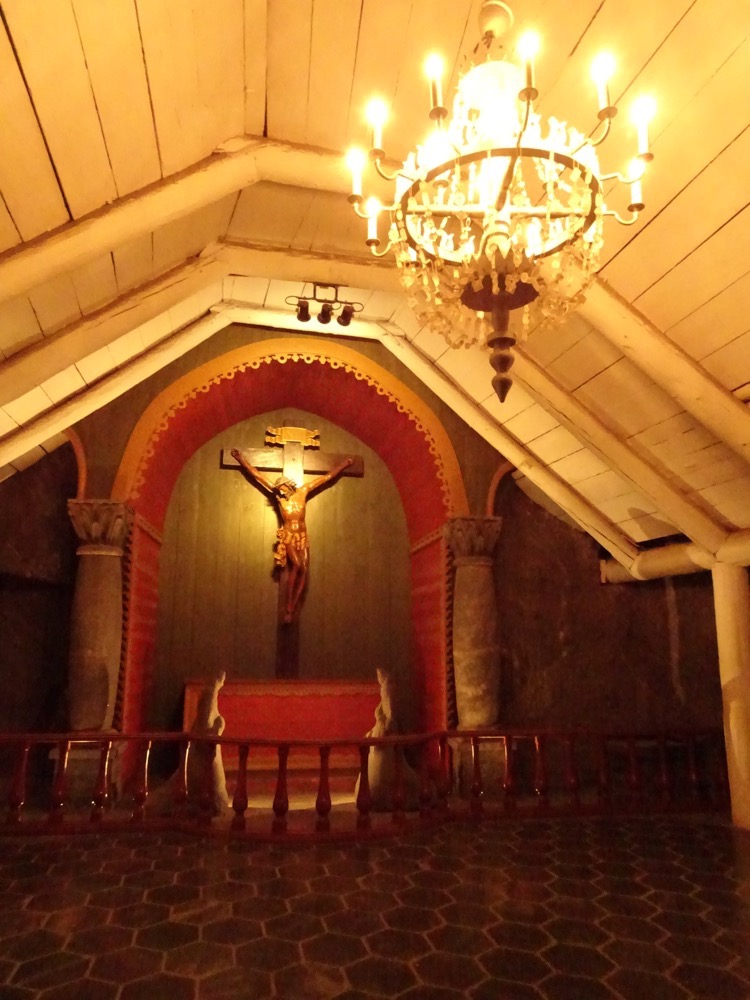 So then we enter the King’s Chapel – a chamber which has the world’s largest underground church.
So then we enter the King’s Chapel – a chamber which has the world’s largest underground church. 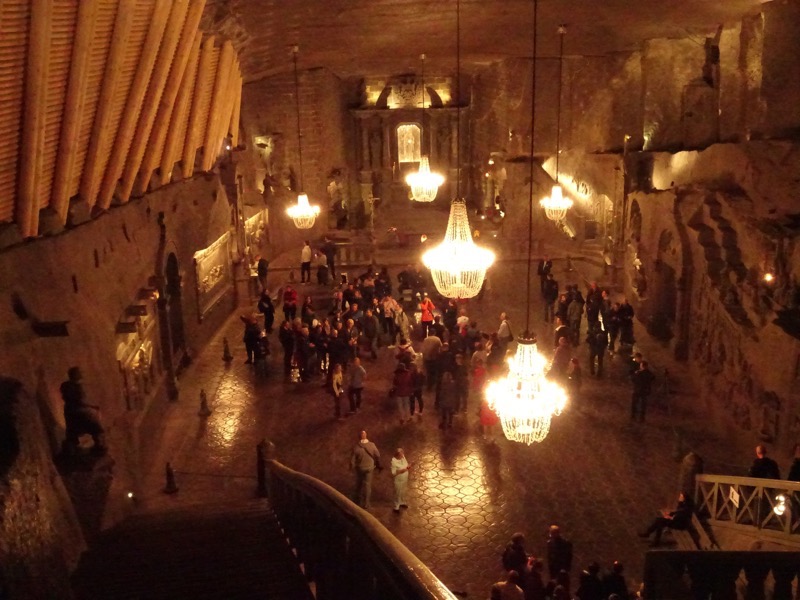 Lit by five enormous rock salt chandeliers, a huge wooden staircase bring visitors to the salt floor which is 64m underground now.
Lit by five enormous rock salt chandeliers, a huge wooden staircase bring visitors to the salt floor which is 64m underground now.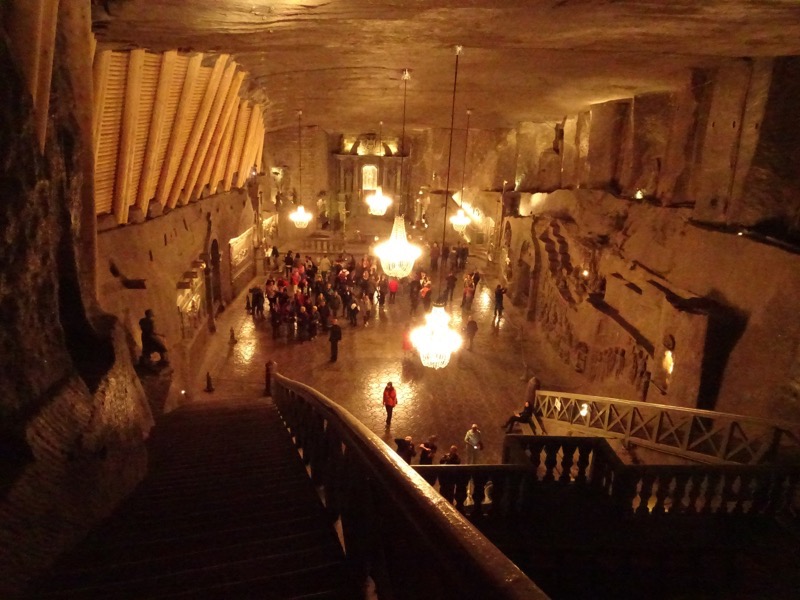 Lining the walls are carvings of various artistic execution done by miners:
Lining the walls are carvings of various artistic execution done by miners: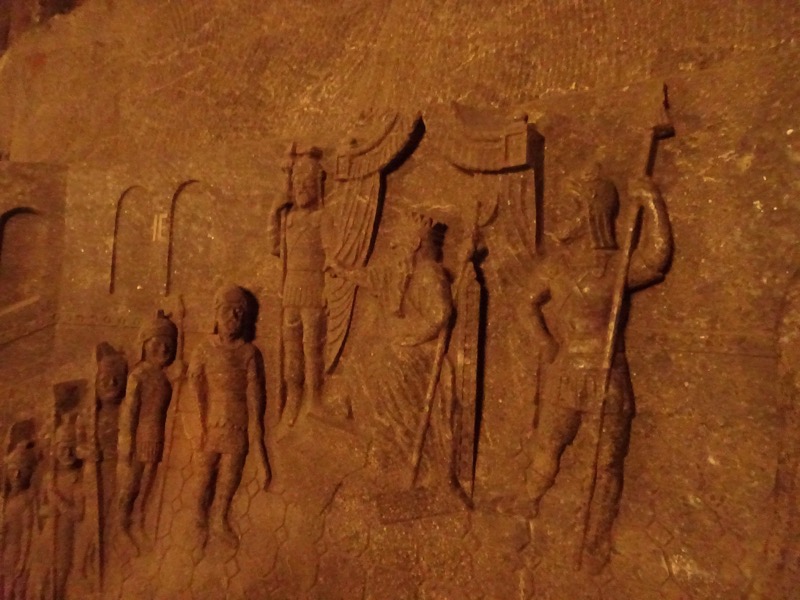 I love the floor!
I love the floor!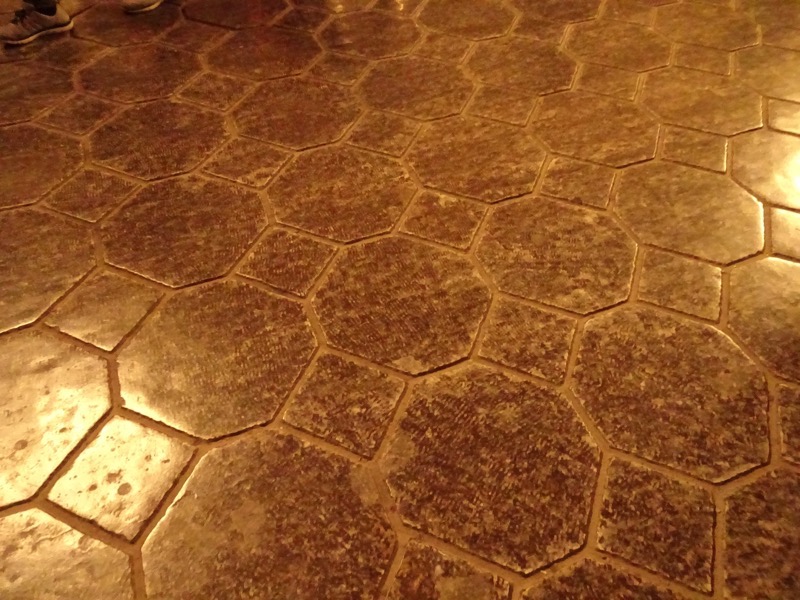
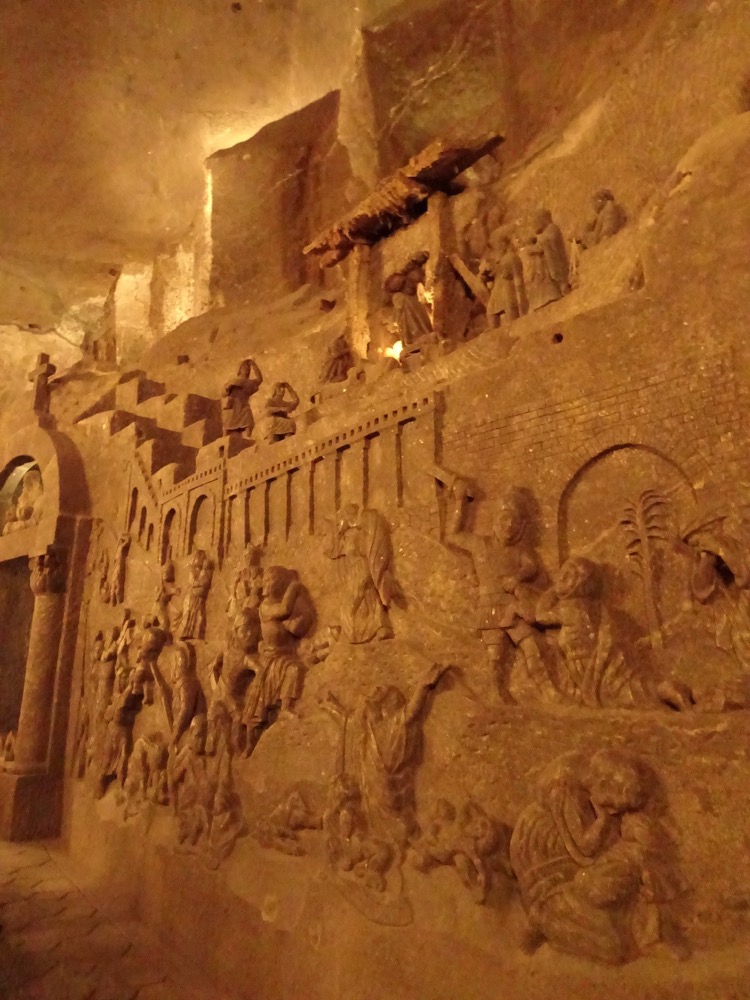 The salt rock crystal chandeliers are over two meters in drop:
The salt rock crystal chandeliers are over two meters in drop: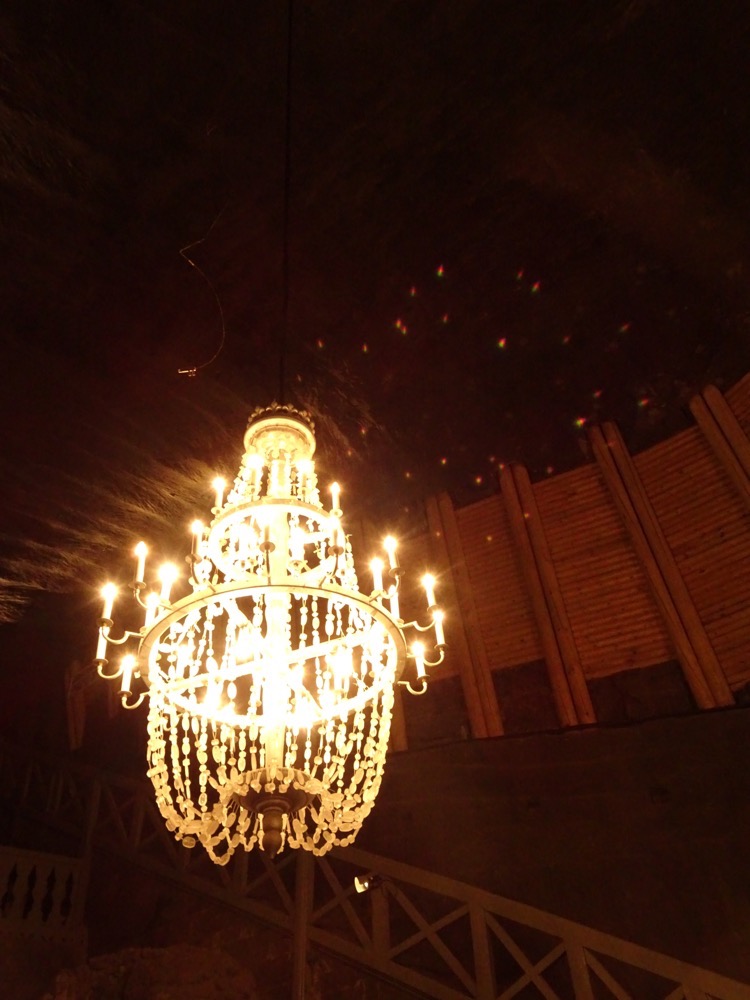 The King’s Chapel.
The King’s Chapel.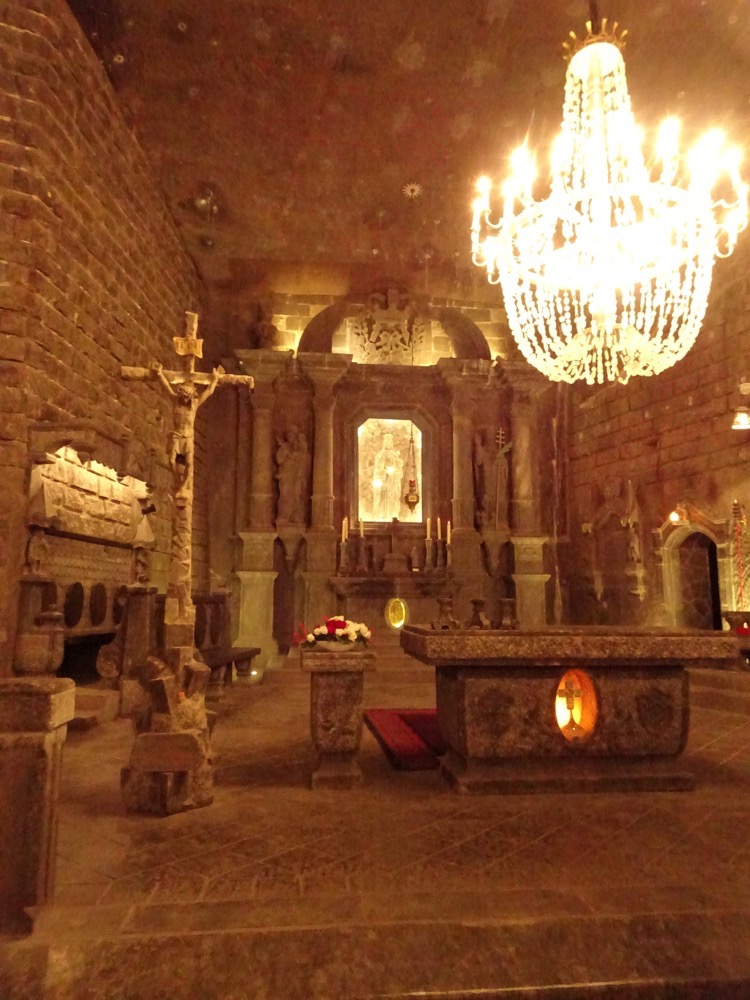
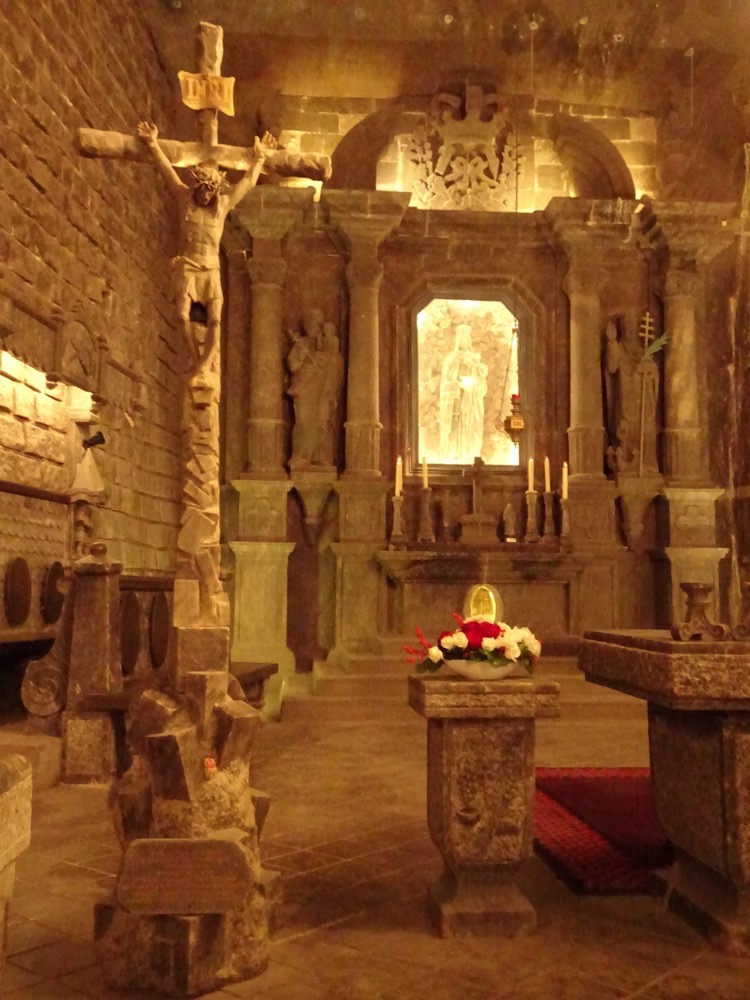 Salt rock statues, salt rock columns, salt rock candlesticks, salt rock altar, salt rock kneelers, pews, salt rock tabernacle…
Salt rock statues, salt rock columns, salt rock candlesticks, salt rock altar, salt rock kneelers, pews, salt rock tabernacle…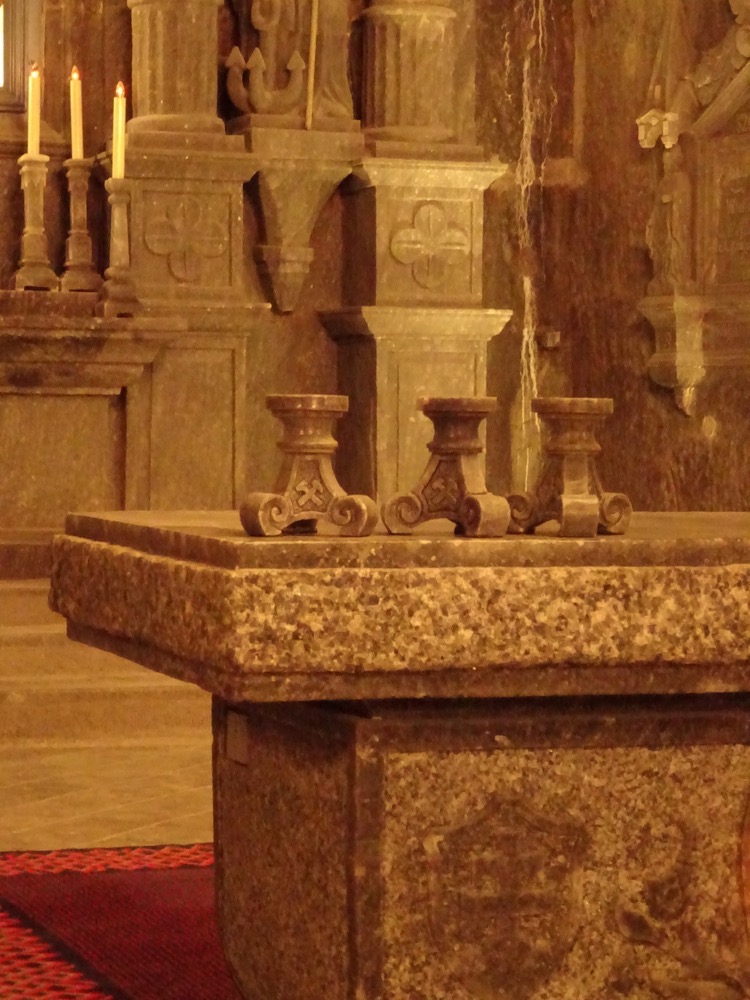 Even the bollards to keep the tourists in line are carved out of salt.
Even the bollards to keep the tourists in line are carved out of salt.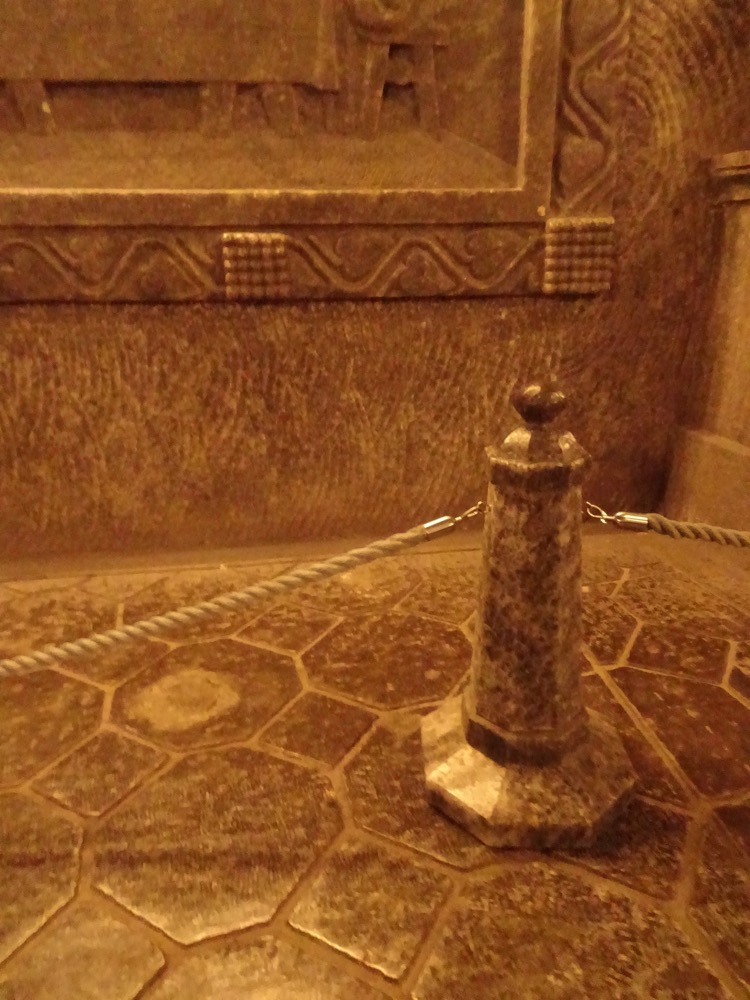
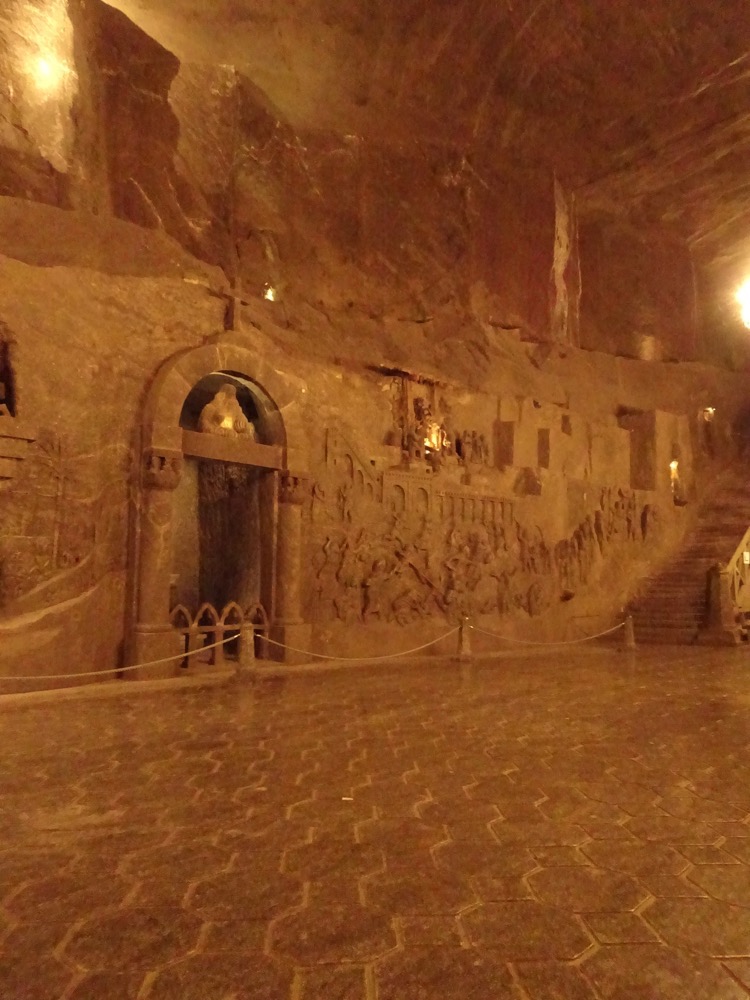 Further down the mine there are some enormous salt water lakes.
Further down the mine there are some enormous salt water lakes. 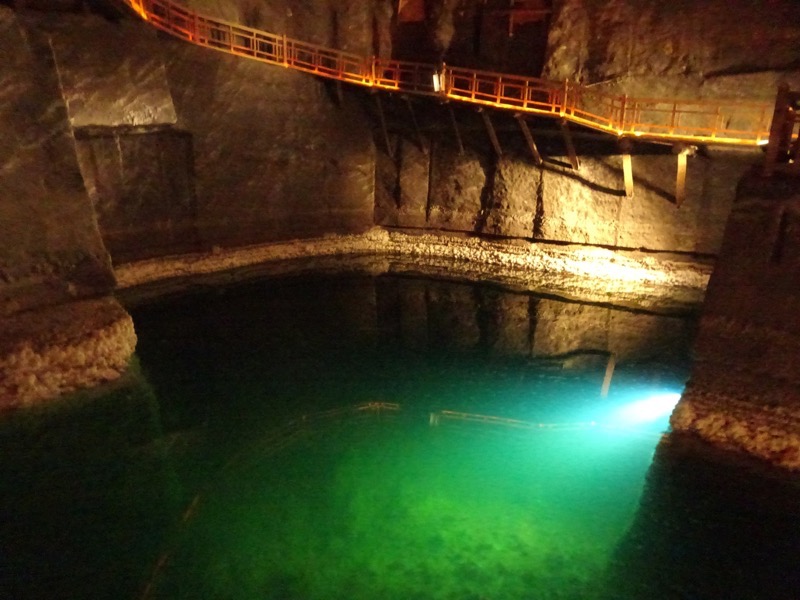
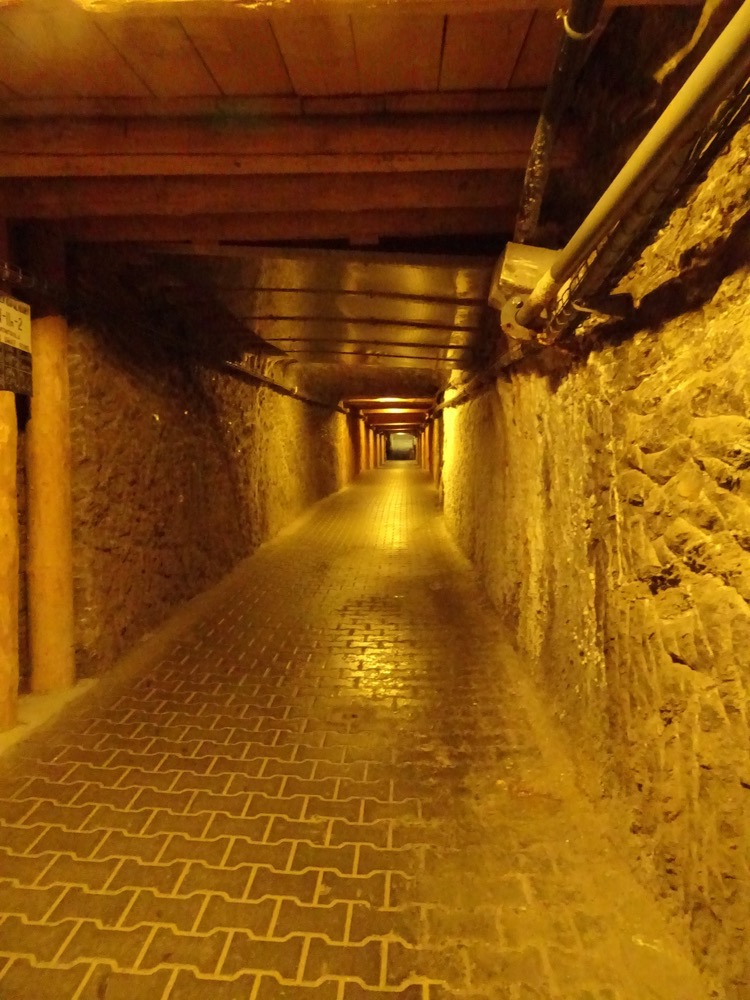
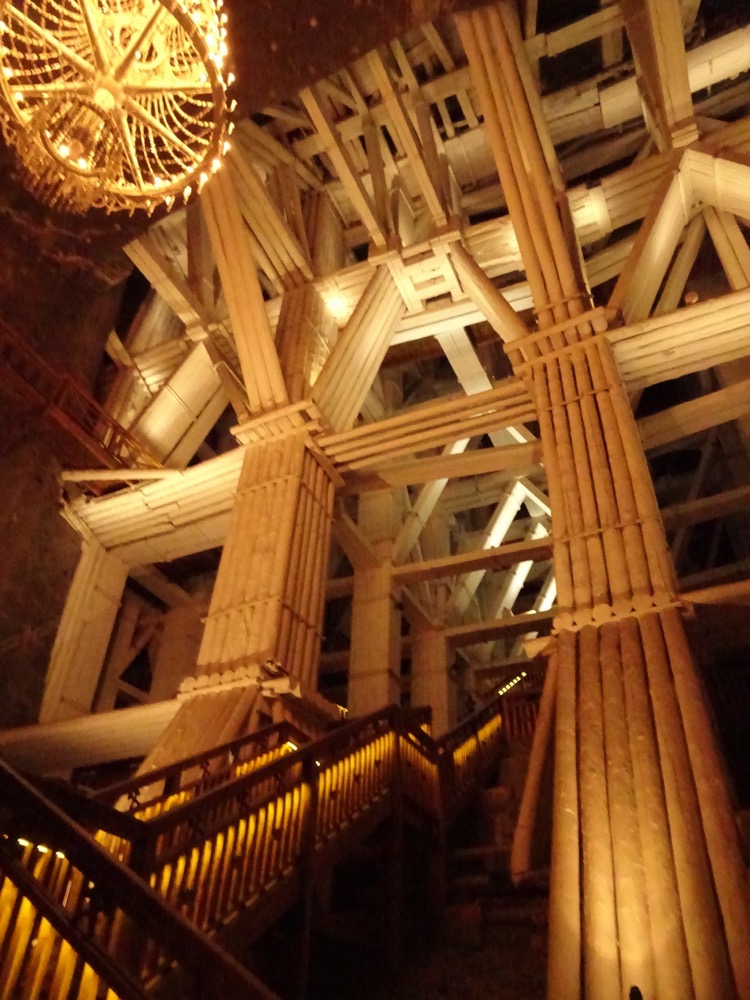
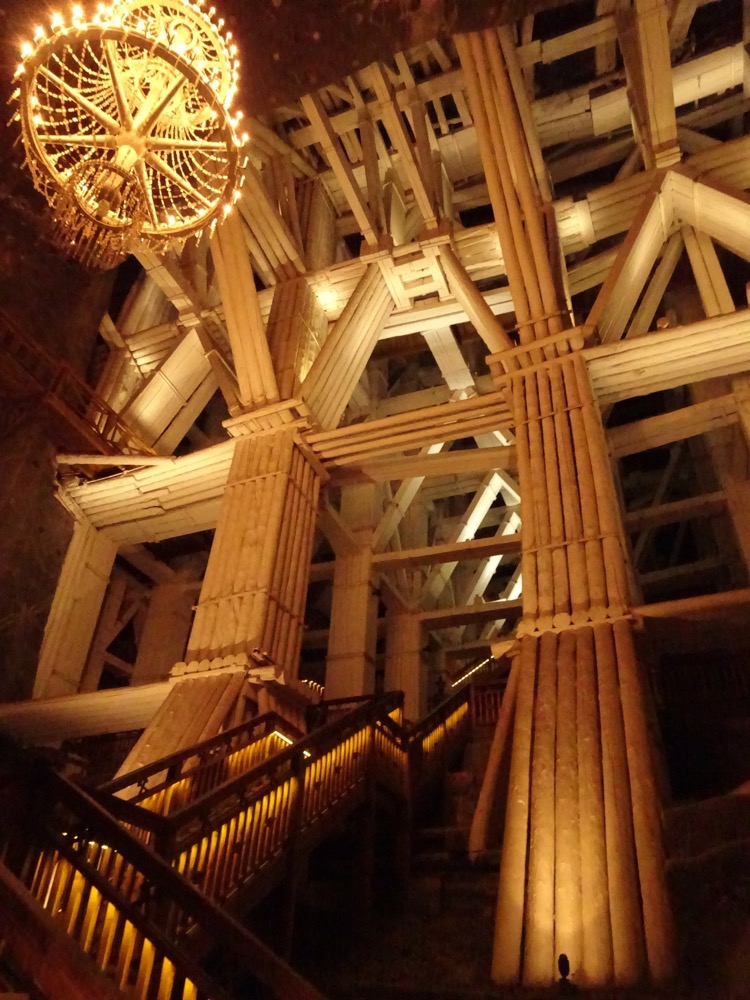
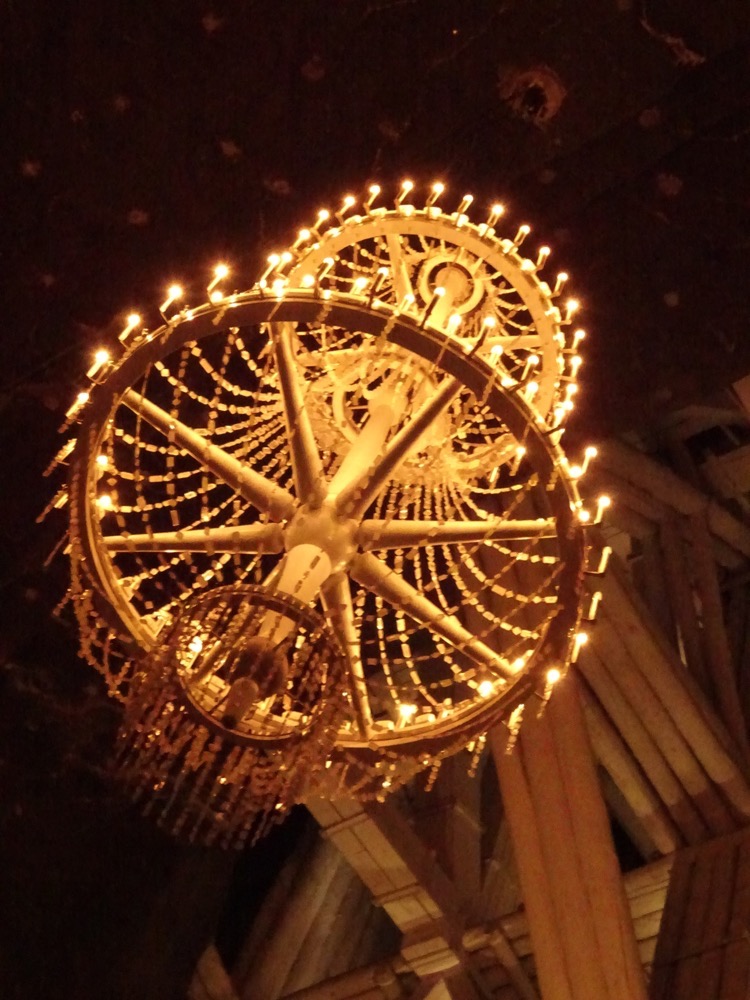
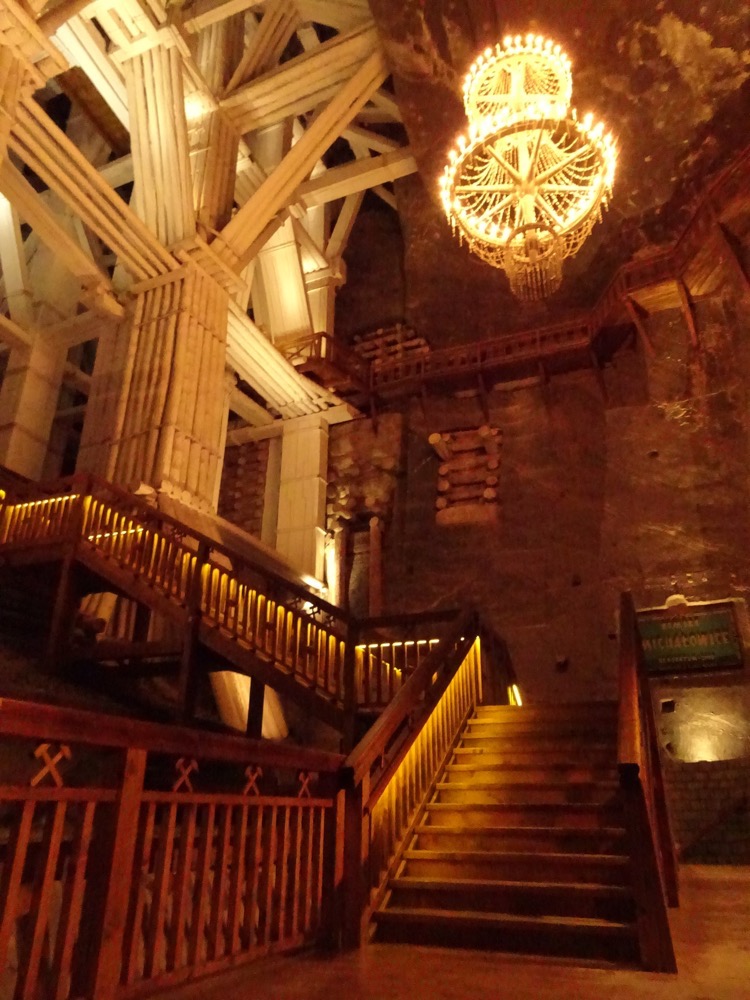 Goethe:
Goethe: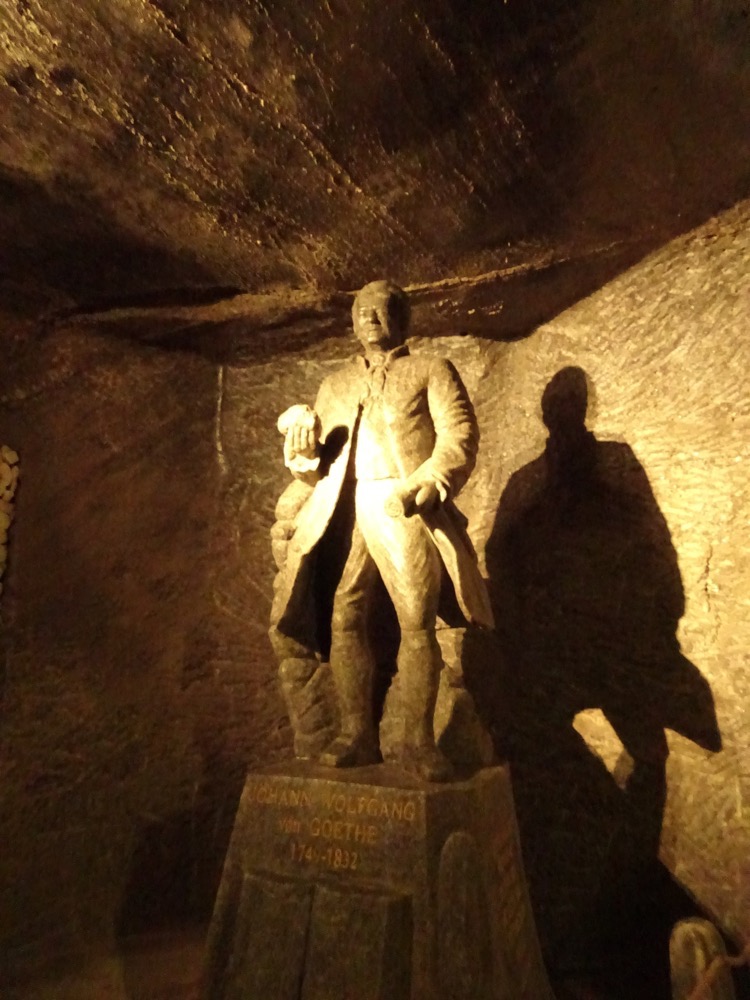
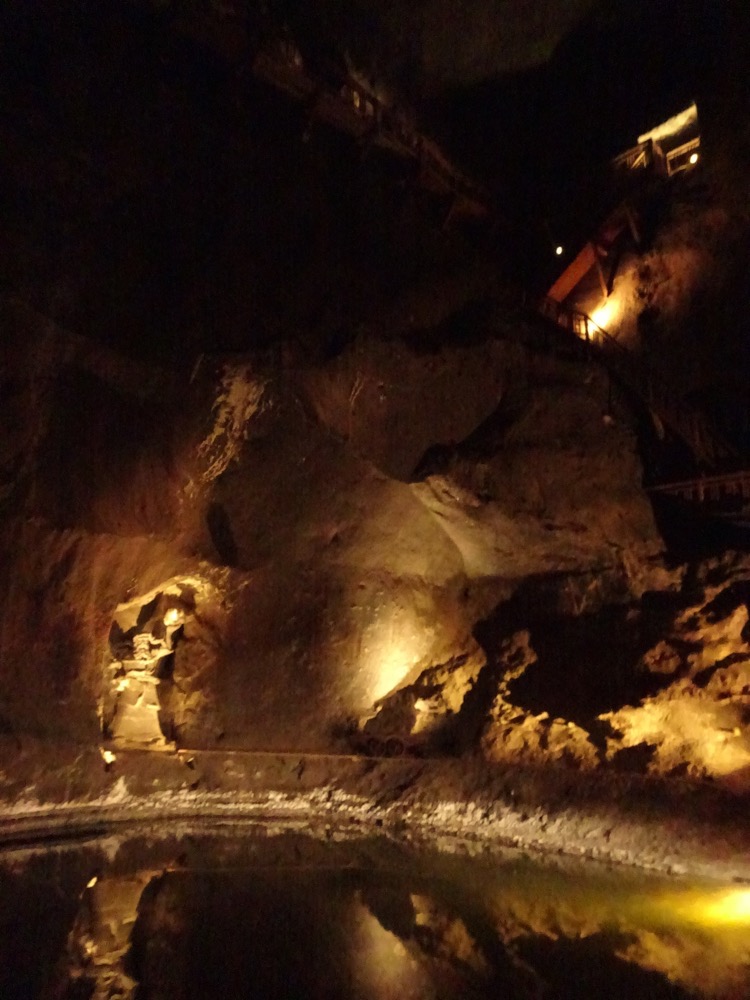 Looking down towars the third level of the tourist route:
Looking down towars the third level of the tourist route: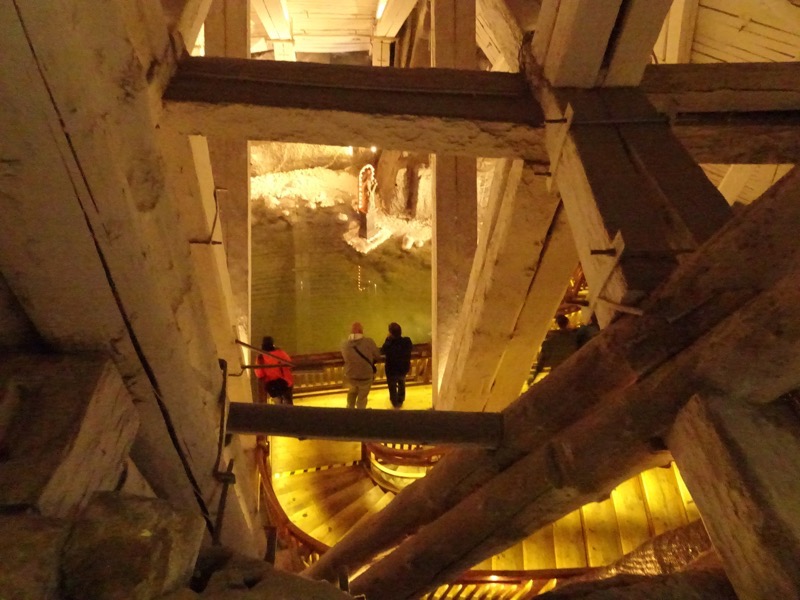 Apparently tourists used to be moved about using ferry boat rides here through some of the smaller tunnels of the mine until a tragic drowning incident occurred in the Jozef Pilsudski Chamber.
Apparently tourists used to be moved about using ferry boat rides here through some of the smaller tunnels of the mine until a tragic drowning incident occurred in the Jozef Pilsudski Chamber.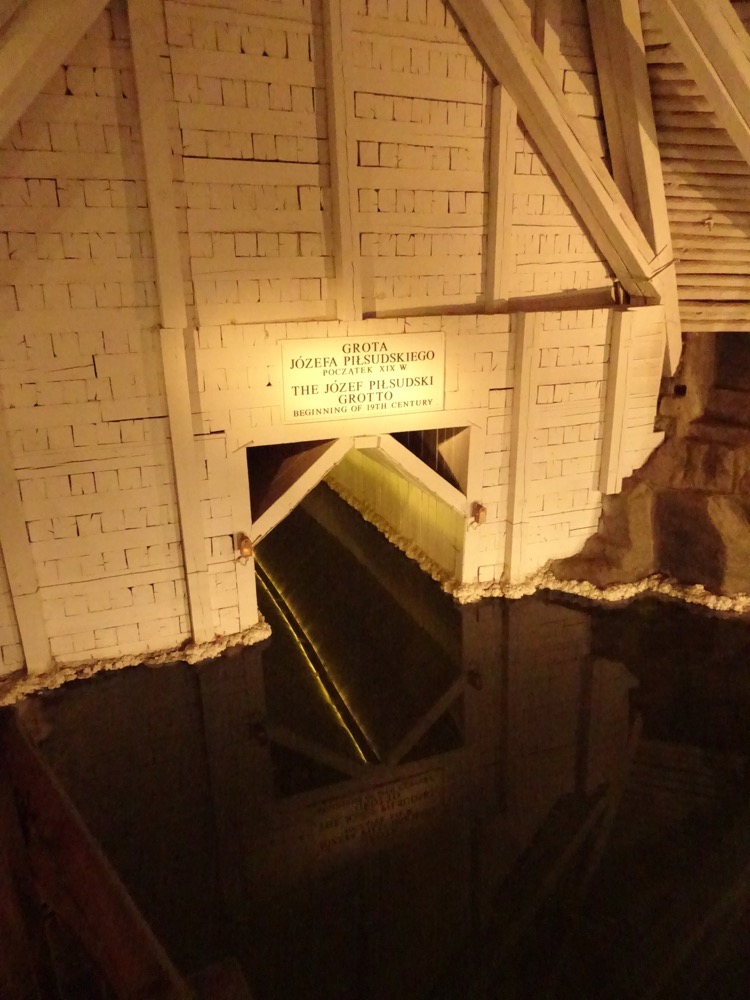 A ferry boat capsized and five people were trapped underneath it. In theory it should be impossible to drown in water this salty as everyone is so bouyant, but the boat was so heavy that the people couldn’t get out from under it, so they suffocated. That is why there is now a statue of St. John Nepomuk, the patron saint of the drowning.
A ferry boat capsized and five people were trapped underneath it. In theory it should be impossible to drown in water this salty as everyone is so bouyant, but the boat was so heavy that the people couldn’t get out from under it, so they suffocated. That is why there is now a statue of St. John Nepomuk, the patron saint of the drowning.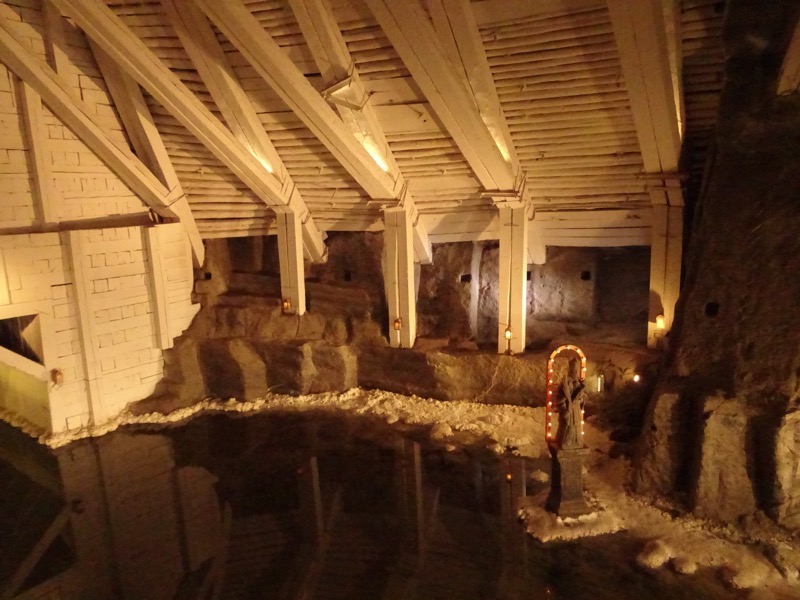 This is the tallest chamber in the tourist route – at 36m high. It is also the location of the World Record Deepest Underground Bungee jump.
This is the tallest chamber in the tourist route – at 36m high. It is also the location of the World Record Deepest Underground Bungee jump. 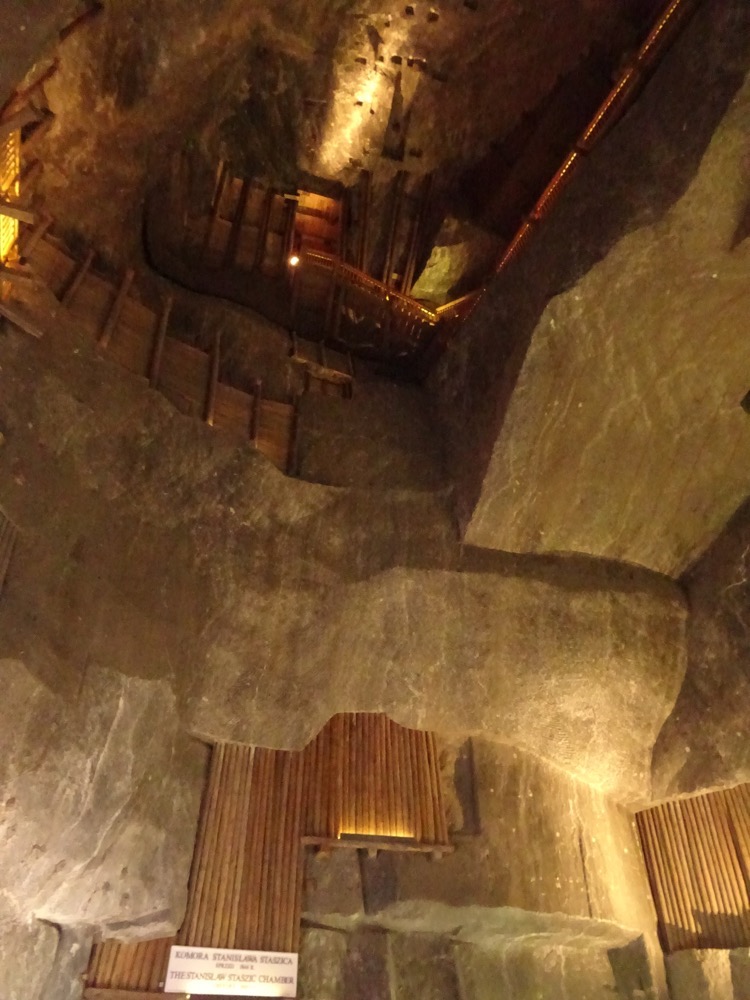
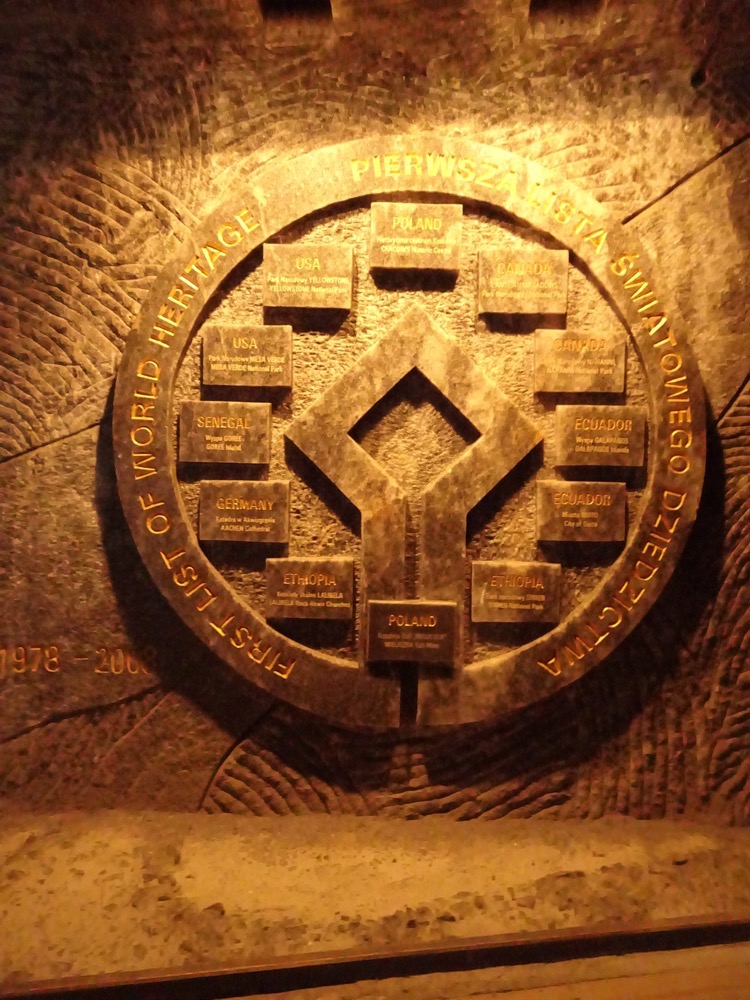
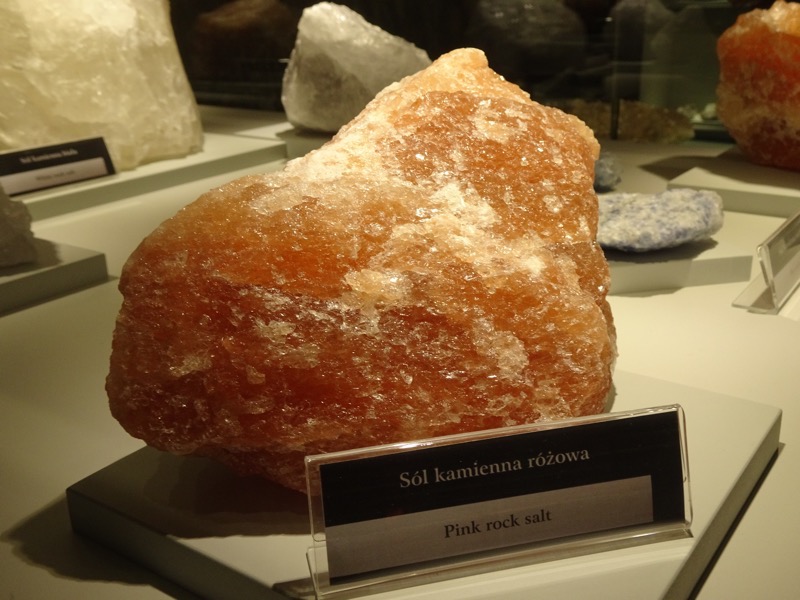
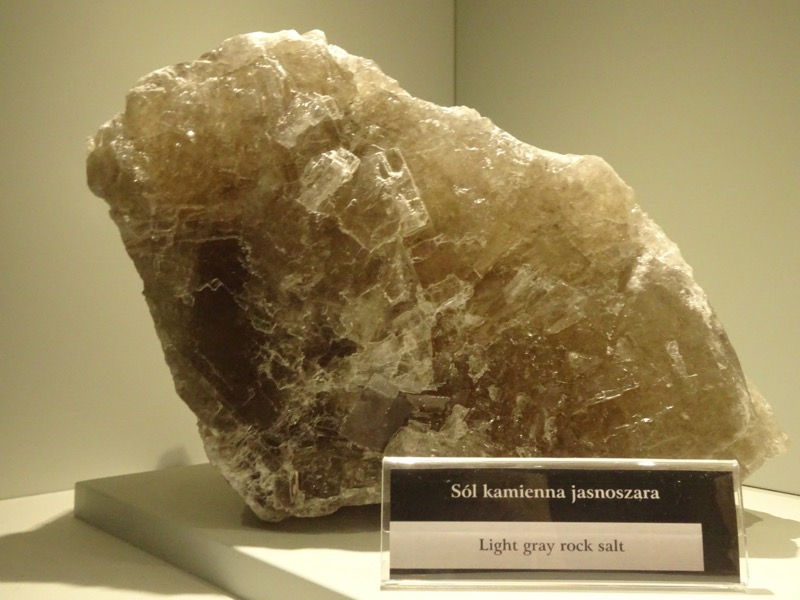 Reception centre for weddings etc.
Reception centre for weddings etc.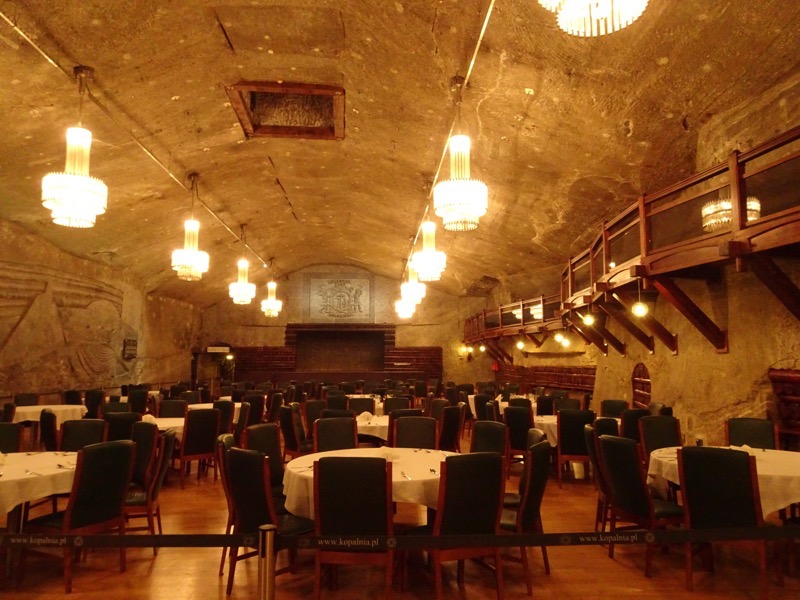
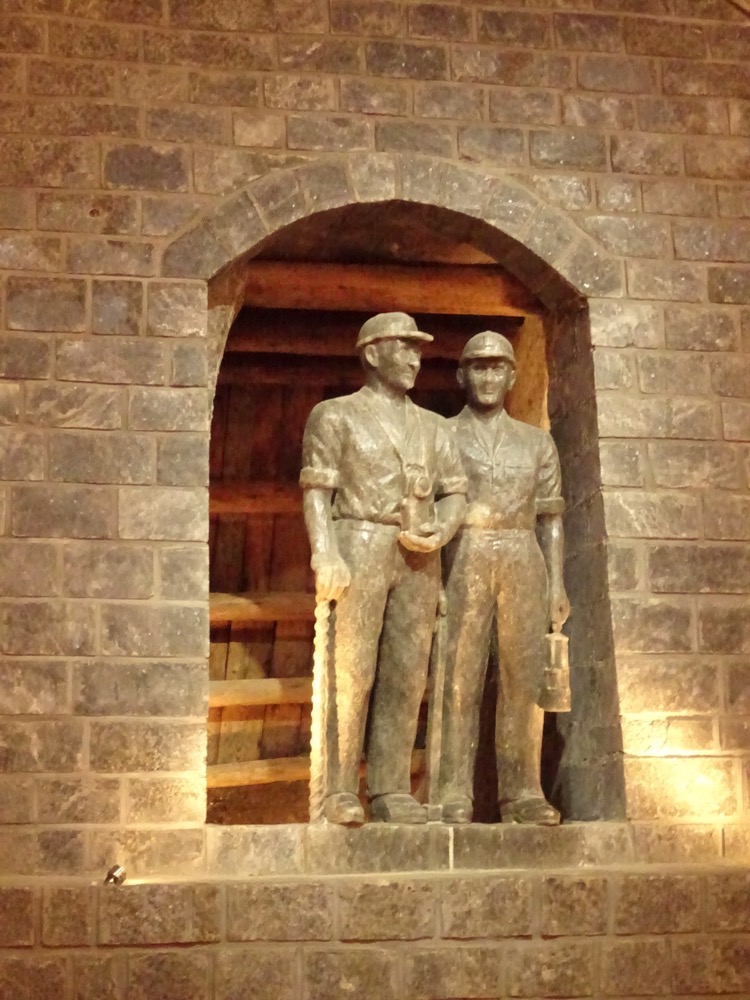 There are multiple gift shops mostly selling gifts made from – you guessed it – salt. None of which would last very long in a humid tropical environment like Brisbane.
There are multiple gift shops mostly selling gifts made from – you guessed it – salt. None of which would last very long in a humid tropical environment like Brisbane. 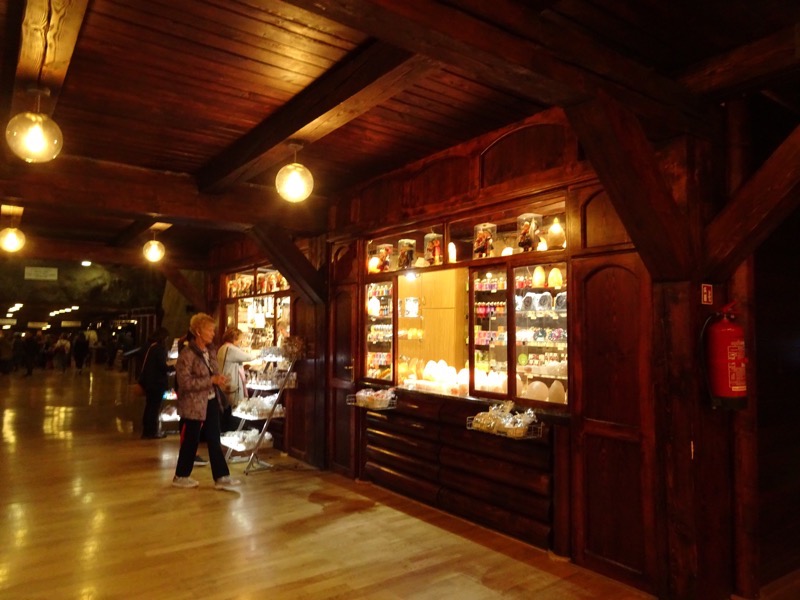 Another small chapel on the way out of the mine.
Another small chapel on the way out of the mine.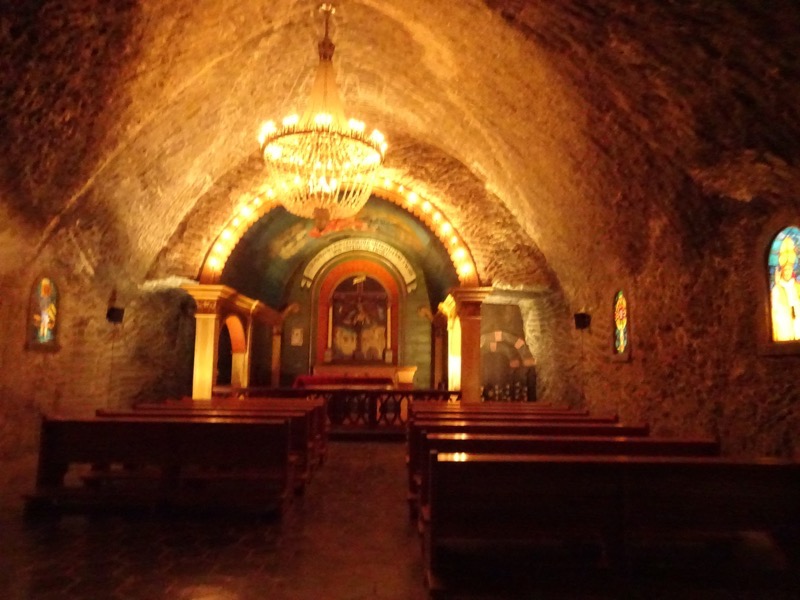 All up it was a very slick tourist operation that takes you on a visit through the mine. Our guide was interesting and informative and she only made one joke about us being nice to her because she was the only person in the group who knew the way out. It is a veritable labyrinth of tunnels and chambers and you could see how easily you could get lost.
All up it was a very slick tourist operation that takes you on a visit through the mine. Our guide was interesting and informative and she only made one joke about us being nice to her because she was the only person in the group who knew the way out. It is a veritable labyrinth of tunnels and chambers and you could see how easily you could get lost. Amazingly dodgy servo lunch:
Amazingly dodgy servo lunch: High speed landscape photography of the Polish countryside.
High speed landscape photography of the Polish countryside. Beautiful though 🙂
Beautiful though 🙂 
 We arrived in Warsaw and went to the place that Booking.com said our accommodation was booked at – only to be met in a carpark by a woman who led us to a different location about two blocks away, and to what appeared to be a private apartment. I was seriously unimpressed to discover the apartment (while having all the amenities of what we had booked) was nothing like what we had actually booked… for a start, we could not get our luggage all the way to the apartment without taking a very dodgy old lift up 15 stories and then going up through a maze of not very well kept corridors and two flights of stairs.
We arrived in Warsaw and went to the place that Booking.com said our accommodation was booked at – only to be met in a carpark by a woman who led us to a different location about two blocks away, and to what appeared to be a private apartment. I was seriously unimpressed to discover the apartment (while having all the amenities of what we had booked) was nothing like what we had actually booked… for a start, we could not get our luggage all the way to the apartment without taking a very dodgy old lift up 15 stories and then going up through a maze of not very well kept corridors and two flights of stairs. I was not actually sure the owner/designer had ever been to Brooklyn or to a bar in Brooklyn in the last decade – but the food was mostly edible, the loud hip-hop was totally dreadful, but the cheap shots of vodka made the whole thing bearable.
I was not actually sure the owner/designer had ever been to Brooklyn or to a bar in Brooklyn in the last decade – but the food was mostly edible, the loud hip-hop was totally dreadful, but the cheap shots of vodka made the whole thing bearable. Back to the apartment and yale carried everything up the flights of stairs after taking the scary antique lift to the 15ht floor.
Back to the apartment and yale carried everything up the flights of stairs after taking the scary antique lift to the 15ht floor.  Back in the apartment – bedroom is up a flight of narrow twisty stairs to a low ceilinged loft, that I was going to have to navigate coming down first thing in the morning when my back is at it’s absolute worst and walking is sometimes problematic let alone weird odd height staircases. I mean, it was a nice enough space, but I would not have booked it had these been the pictures on the booking website.
Back in the apartment – bedroom is up a flight of narrow twisty stairs to a low ceilinged loft, that I was going to have to navigate coming down first thing in the morning when my back is at it’s absolute worst and walking is sometimes problematic let alone weird odd height staircases. I mean, it was a nice enough space, but I would not have booked it had these been the pictures on the booking website.
 Oh well, we are supposed to be staying here again in a few days time – but have decided to cancel and find something that 1) has no stairs to bed and 2) has a decent chance of a shower that yale can fit it! Another interesting review coming up for these guys too!
Oh well, we are supposed to be staying here again in a few days time – but have decided to cancel and find something that 1) has no stairs to bed and 2) has a decent chance of a shower that yale can fit it! Another interesting review coming up for these guys too!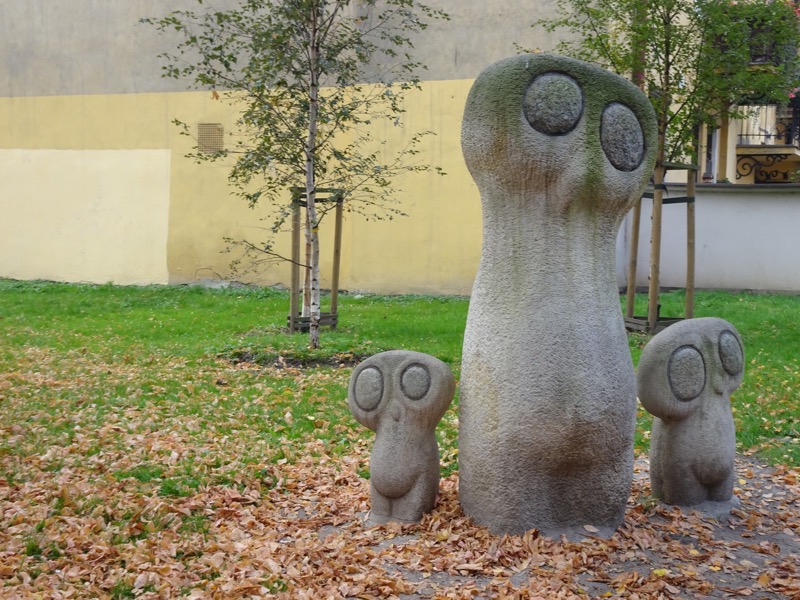 Walking up to Wawel Castle…
Walking up to Wawel Castle…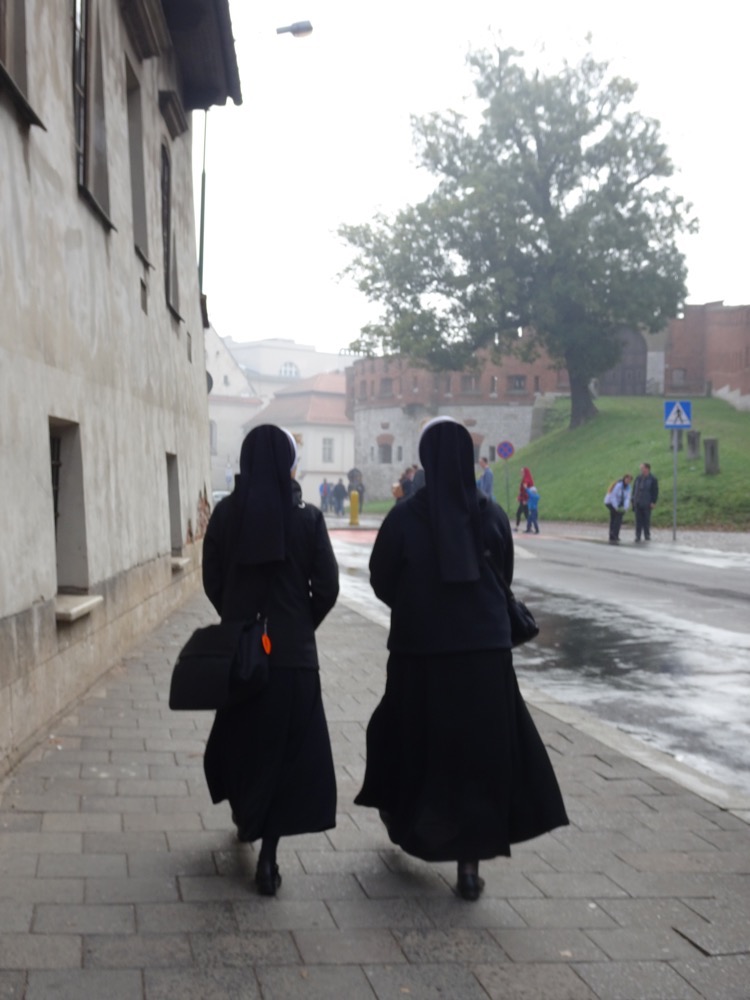 We were planning on visiting the historic district of Wawel Castle just for the morning. It is located pretty much in the centre of Kraków and was built by King Kazimierz III, also known as Casimir III the Great, in the 13th and 14th centuries. The castle is actually a large complex made up of a number of Medieval/Renaissance/ Baroque buildings around a very large Italian style courtyard making it one of the largest in Poland. Most of the Wawel Royal Castle and the Wawel Hill area are considered the most culturally/historically significant areas in the entire country. Sometimes I feel like I am travelling the world ticking off UNESCO World Heritage Sites, as this is another one of them
We were planning on visiting the historic district of Wawel Castle just for the morning. It is located pretty much in the centre of Kraków and was built by King Kazimierz III, also known as Casimir III the Great, in the 13th and 14th centuries. The castle is actually a large complex made up of a number of Medieval/Renaissance/ Baroque buildings around a very large Italian style courtyard making it one of the largest in Poland. Most of the Wawel Royal Castle and the Wawel Hill area are considered the most culturally/historically significant areas in the entire country. Sometimes I feel like I am travelling the world ticking off UNESCO World Heritage Sites, as this is another one of them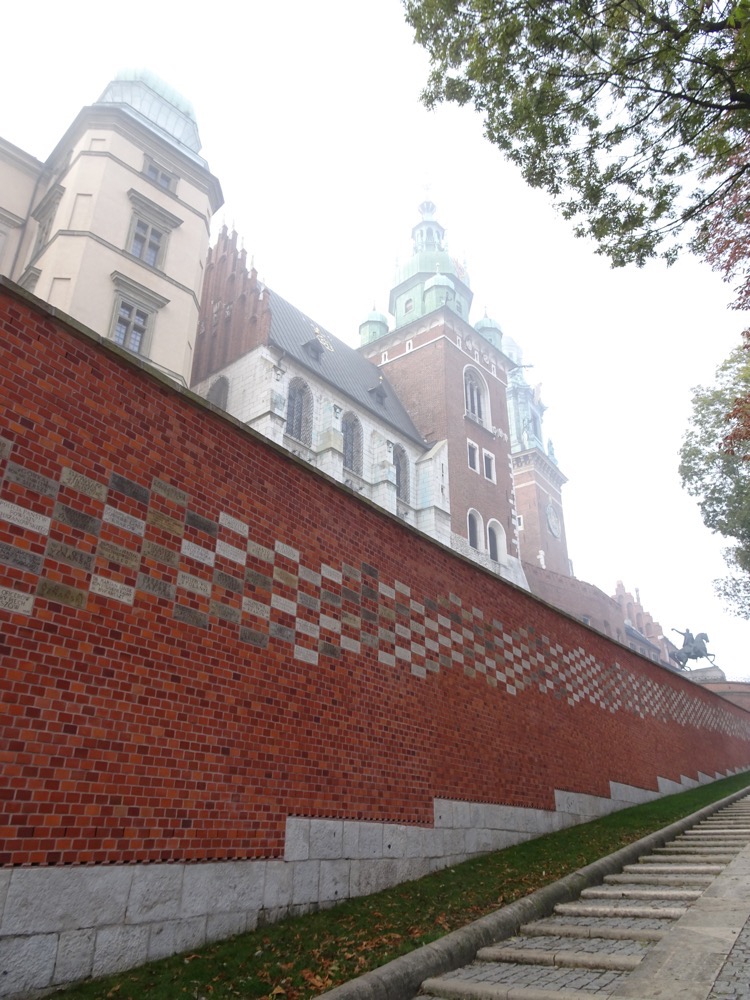
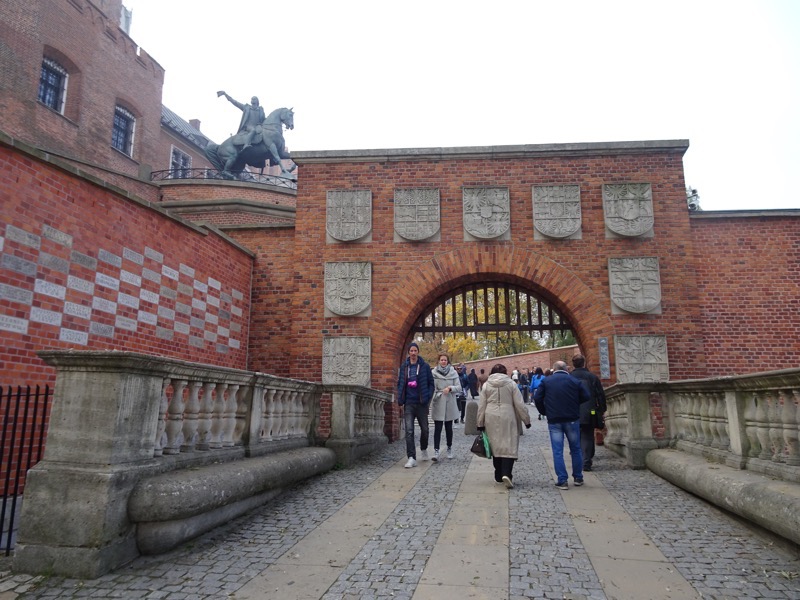 Buying tickets proved quite the experience. There was a (thankfully, short) queue of about 20 people waiting to buy tickets to enter the caste. We couldn’t figure out why the line was moving so slowly. Turns out you don’t just buy a ticket to the Castle and wander on it following a structured flow through the museum, but rather you choose which sections of the castle you wish to see and then are told when you can go see them.
Buying tickets proved quite the experience. There was a (thankfully, short) queue of about 20 people waiting to buy tickets to enter the caste. We couldn’t figure out why the line was moving so slowly. Turns out you don’t just buy a ticket to the Castle and wander on it following a structured flow through the museum, but rather you choose which sections of the castle you wish to see and then are told when you can go see them.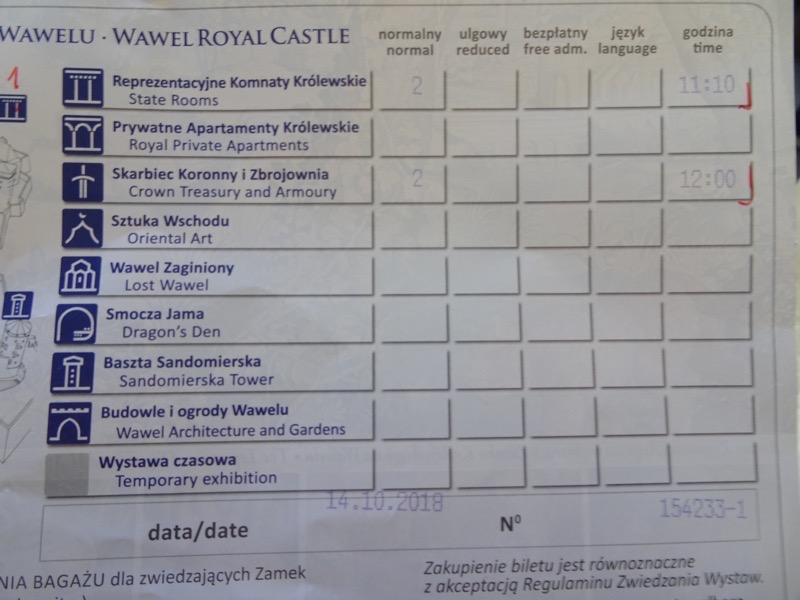 So we arrive around 10:00, go wait in line for a rather complex ticketing system and find ourselves unable to enter anywhere for another 20 minutes. :/ I understand the concept is probably about crowd control during the busiest of summer periods but none of this information is easily available online (it is once you know to look for it), and you can’t buy tickets in advance, and of course, there is only one person serving all the somewhat confused visitors. We were told if we wanted to visit the Royal Apartments we wouldn’t get an entry time until 14:00, and once inside we saw plenty of people loitering around the courtyard waiting for their appointed times to go in.
So we arrive around 10:00, go wait in line for a rather complex ticketing system and find ourselves unable to enter anywhere for another 20 minutes. :/ I understand the concept is probably about crowd control during the busiest of summer periods but none of this information is easily available online (it is once you know to look for it), and you can’t buy tickets in advance, and of course, there is only one person serving all the somewhat confused visitors. We were told if we wanted to visit the Royal Apartments we wouldn’t get an entry time until 14:00, and once inside we saw plenty of people loitering around the courtyard waiting for their appointed times to go in.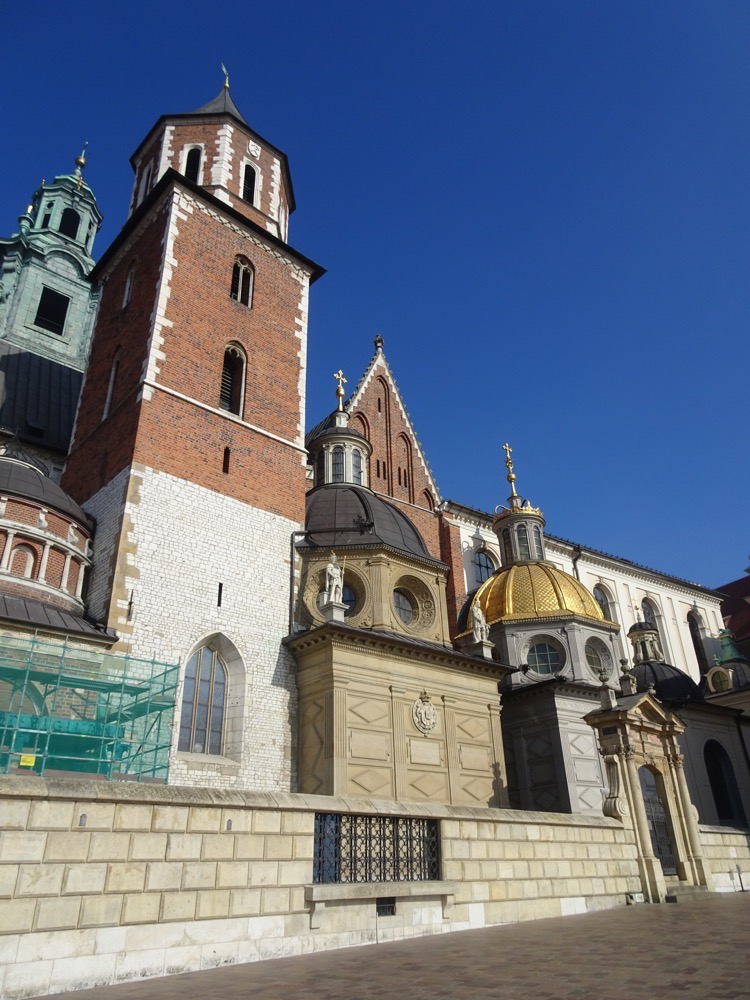 Forecourt:
Forecourt: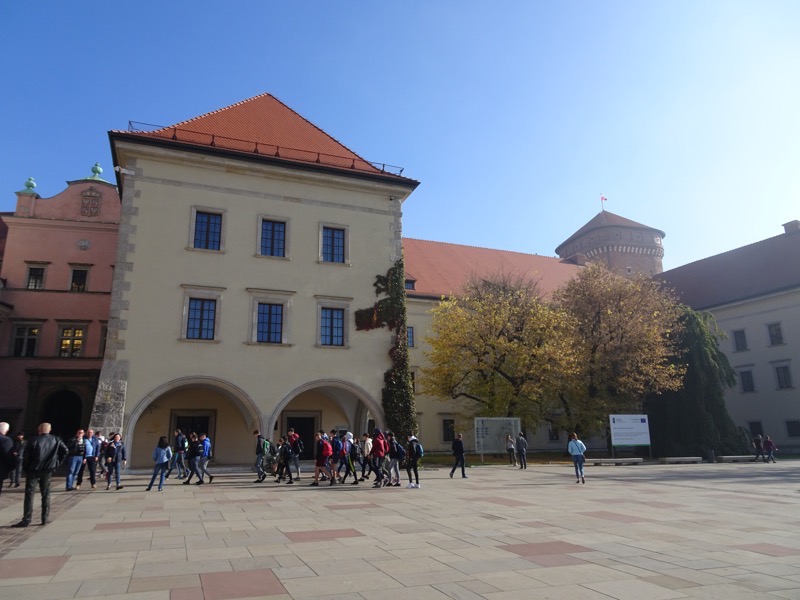
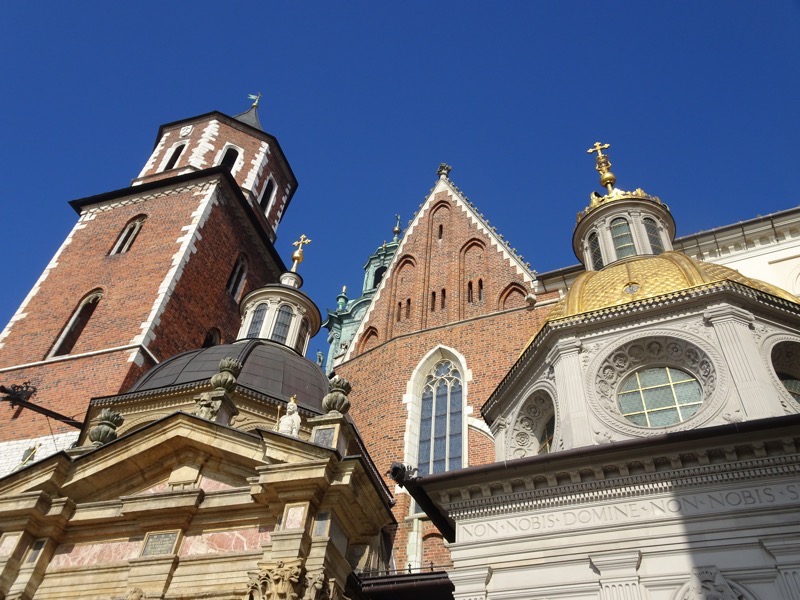
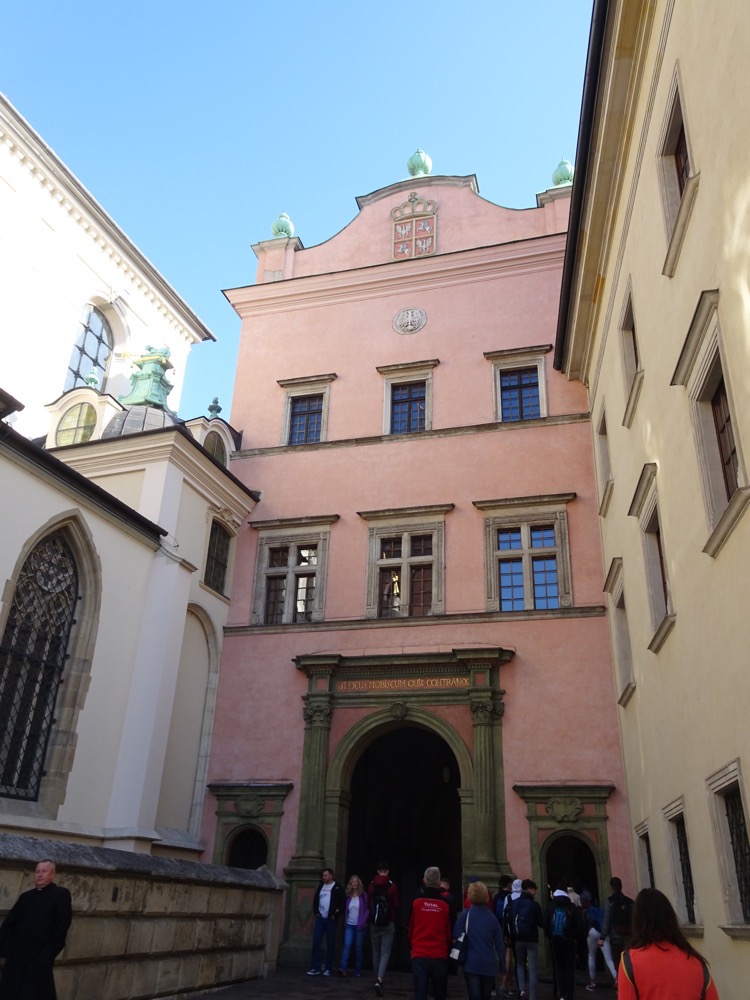 Main courtyard.
Main courtyard.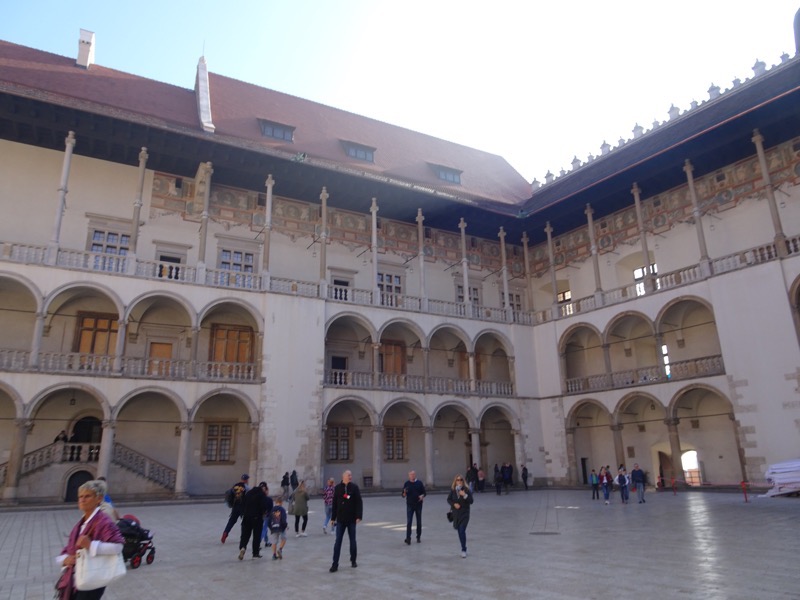 And that, my friends, is pretty much the limit of the photos I was able to take at Wawel Castle. The castle contains an important collection of Renaissance art, some Ghirlandaio, Cranach, at least two Rubens, a Tintoretto, Tiepolo, and a few Dossi among others; lots of famous pieces, but NO PHOTOGRAPHY was allowed:
And that, my friends, is pretty much the limit of the photos I was able to take at Wawel Castle. The castle contains an important collection of Renaissance art, some Ghirlandaio, Cranach, at least two Rubens, a Tintoretto, Tiepolo, and a few Dossi among others; lots of famous pieces, but NO PHOTOGRAPHY was allowed: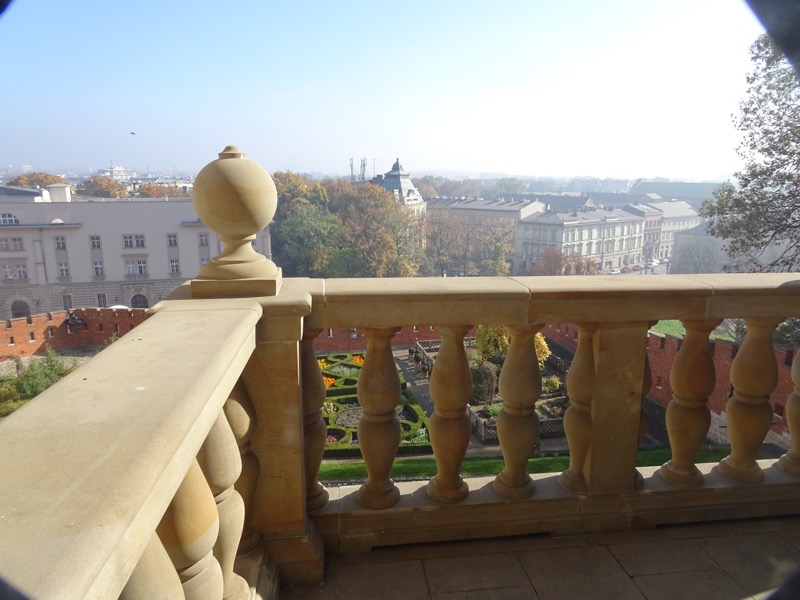
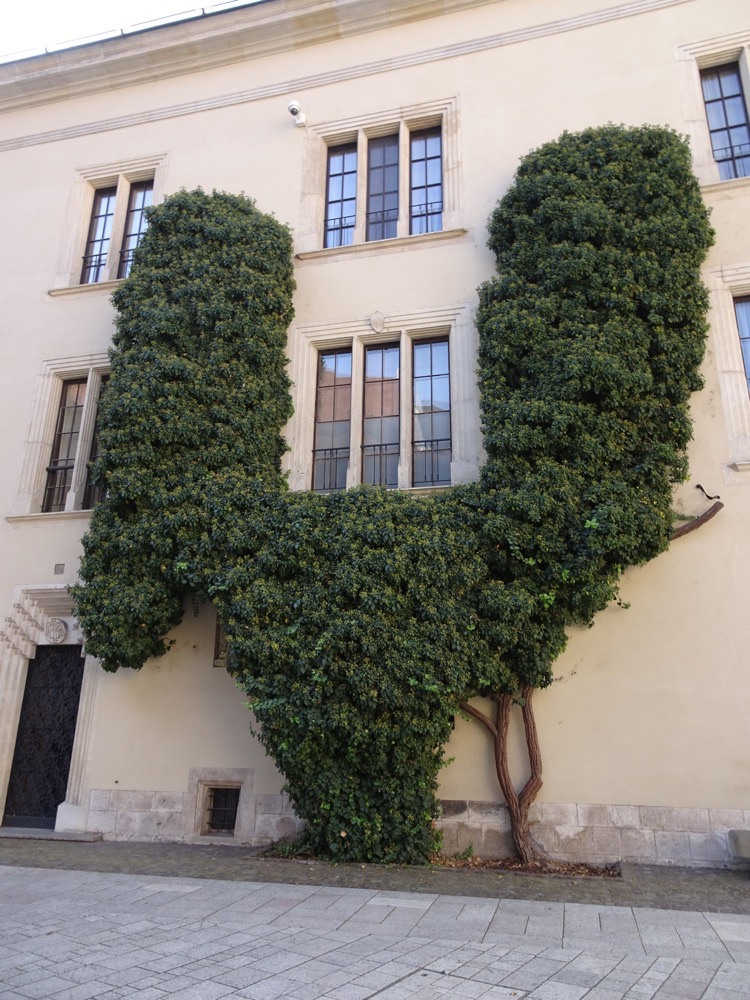 On more than one occasion we saw small groups entering rooms that we weren’t allowed to enter because they were on an organised tour. Museums should not be like this. It is a cluster. My advice for anyone planning on attending Wawel Castle is to set aside the entire day for it so you can visit on their scheduled time slots. I would probably also use a private tour operator to access the ‘non-public’ spaces… and I’d probably anticipate a disappointing visit anyway due to photography not being allowed, and the lack of decent books to make up for the whole photography is not allowed thing. :/
On more than one occasion we saw small groups entering rooms that we weren’t allowed to enter because they were on an organised tour. Museums should not be like this. It is a cluster. My advice for anyone planning on attending Wawel Castle is to set aside the entire day for it so you can visit on their scheduled time slots. I would probably also use a private tour operator to access the ‘non-public’ spaces… and I’d probably anticipate a disappointing visit anyway due to photography not being allowed, and the lack of decent books to make up for the whole photography is not allowed thing. :/ 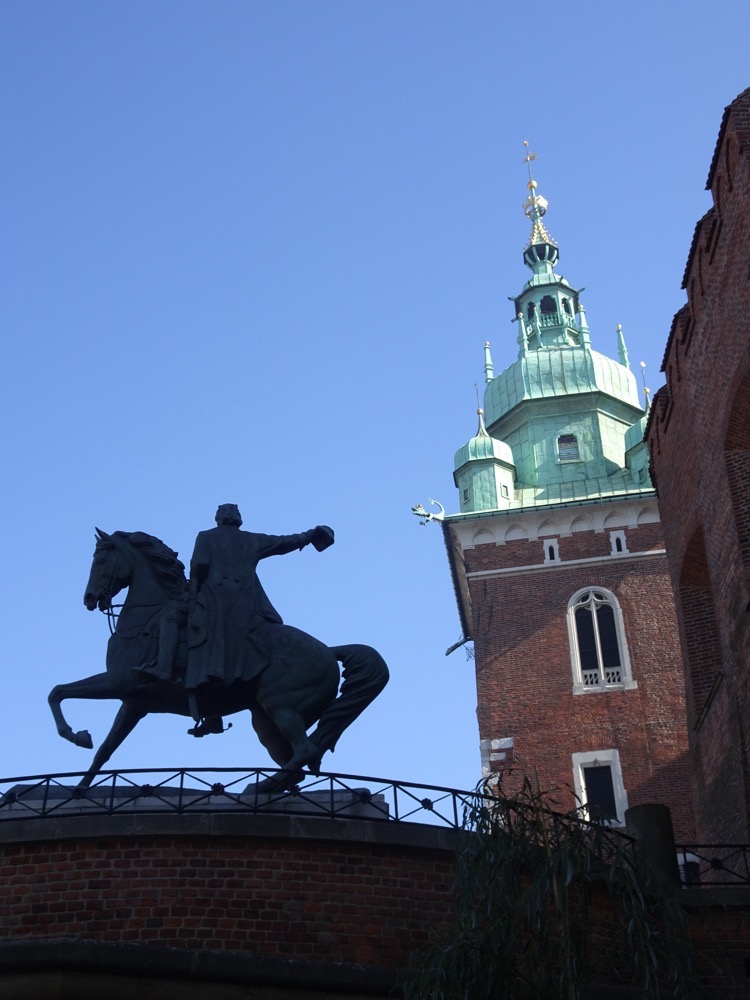
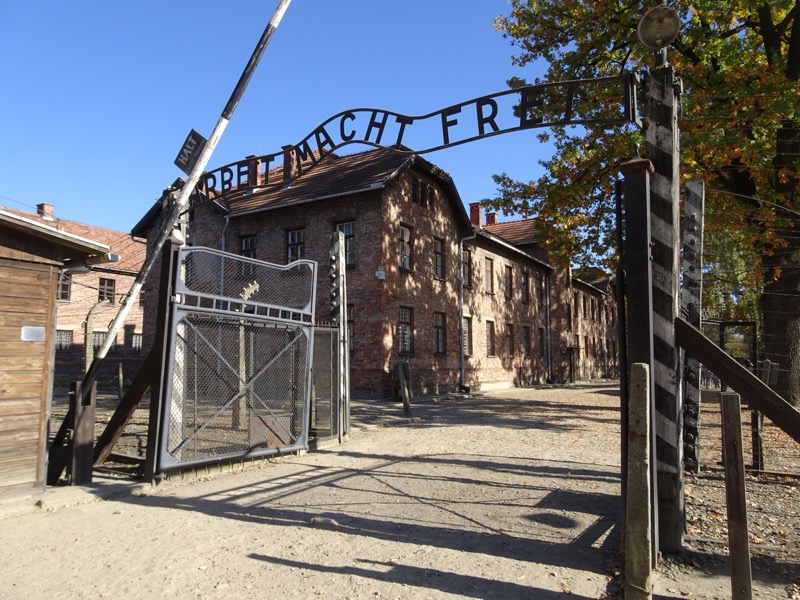 Throughout the world, Auschwitz has become a symbol of terror, genocide and the Holocaust. The German forces occupying Poland during the Second World War established a concentration camp on the outskirts of the town of Oświęcim in 1940. The Germans called the town, ‘Auschwitz’ and that is the name by which the camp was known. Over the next years it was expanded into three main camps: Auschwitz I, Auschwitz II- Birkenau and Auschwitz III- Planowitz with more than 40 subcamps in the area. The first people to be brought to Auschwitz as prisoners and murdered here were Poles. They were soon followed by Soviet prisoners of war, Gypsies, and deportees from other nationalities. Beginning in 1942, however, Auschwitz became the setting of the most massive murder campaign in history, when the Nazis put into operation their plan to destroy the entire Jewish population of Europe. The great majority of Jews who were deported to Auschwitz – men, women and children – were sent immediately upon arrival to deal in the gas chambers of Birkenau.
Throughout the world, Auschwitz has become a symbol of terror, genocide and the Holocaust. The German forces occupying Poland during the Second World War established a concentration camp on the outskirts of the town of Oświęcim in 1940. The Germans called the town, ‘Auschwitz’ and that is the name by which the camp was known. Over the next years it was expanded into three main camps: Auschwitz I, Auschwitz II- Birkenau and Auschwitz III- Planowitz with more than 40 subcamps in the area. The first people to be brought to Auschwitz as prisoners and murdered here were Poles. They were soon followed by Soviet prisoners of war, Gypsies, and deportees from other nationalities. Beginning in 1942, however, Auschwitz became the setting of the most massive murder campaign in history, when the Nazis put into operation their plan to destroy the entire Jewish population of Europe. The great majority of Jews who were deported to Auschwitz – men, women and children – were sent immediately upon arrival to deal in the gas chambers of Birkenau.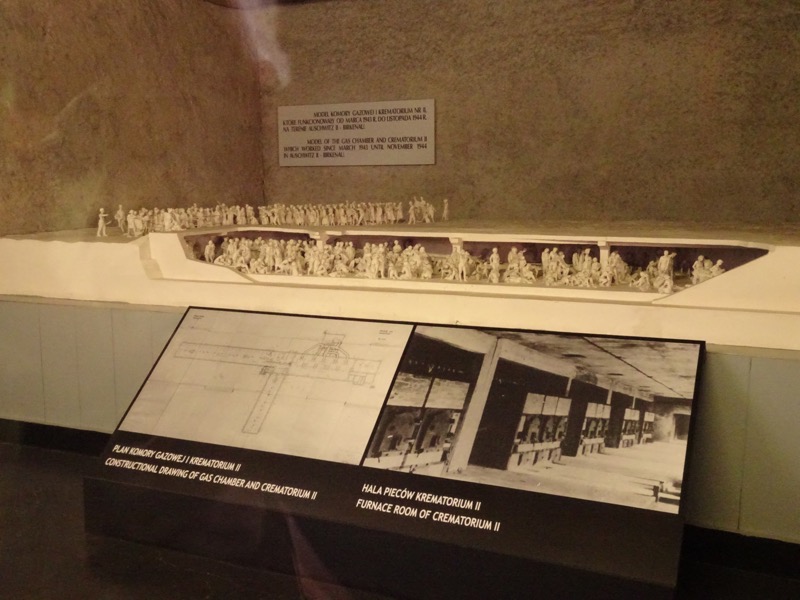
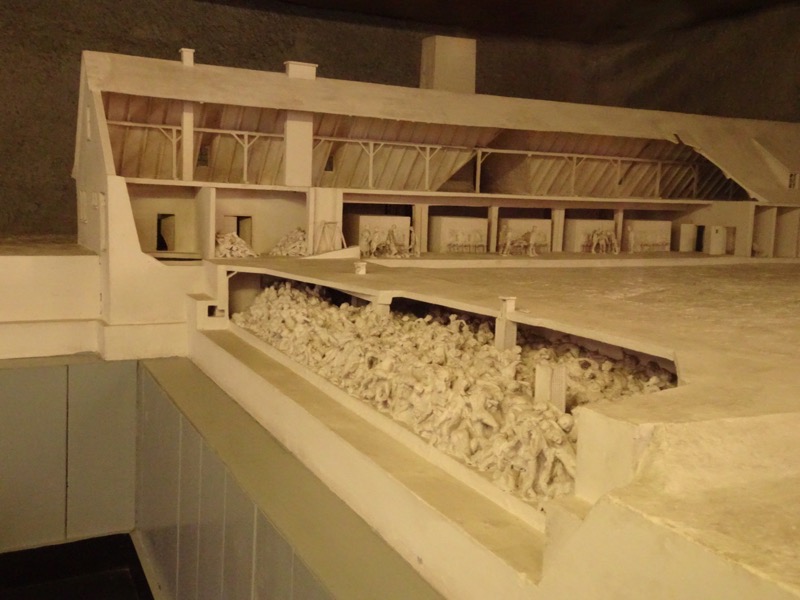
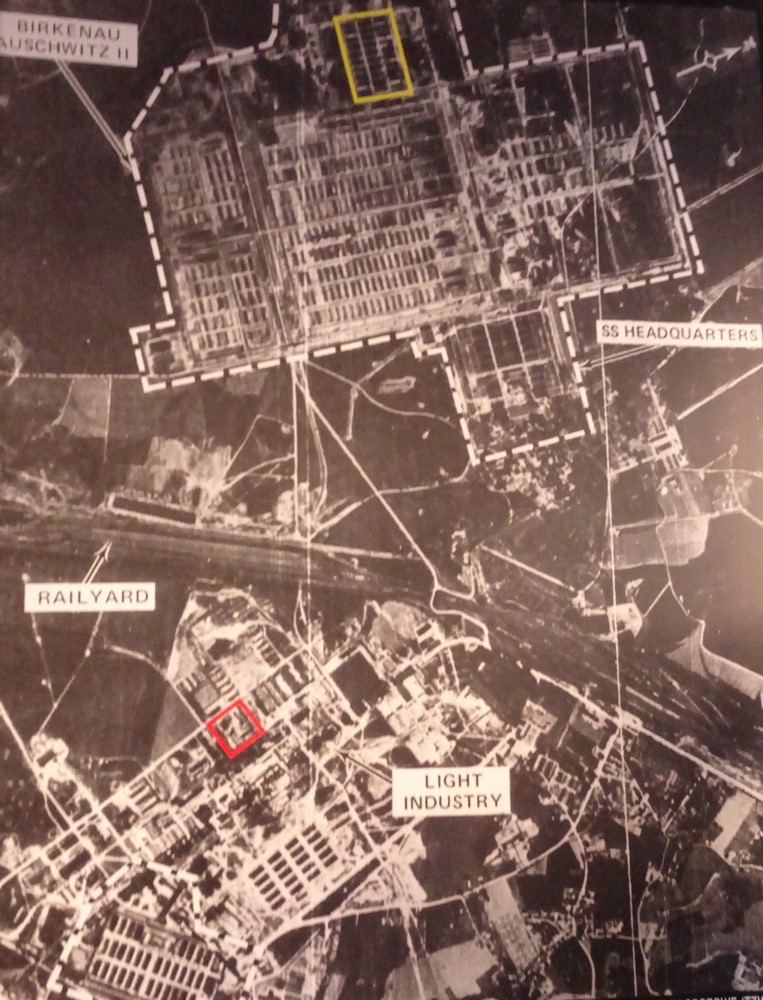 After the selection process on the railway platform, those who were going to be murdered in the gas chambers were assured that they were going to take a shower. They were divided from their belongings and made to strip naked. Fake showerheads were fixed to the ceiling of the gas chambers.
After the selection process on the railway platform, those who were going to be murdered in the gas chambers were assured that they were going to take a shower. They were divided from their belongings and made to strip naked. Fake showerheads were fixed to the ceiling of the gas chambers.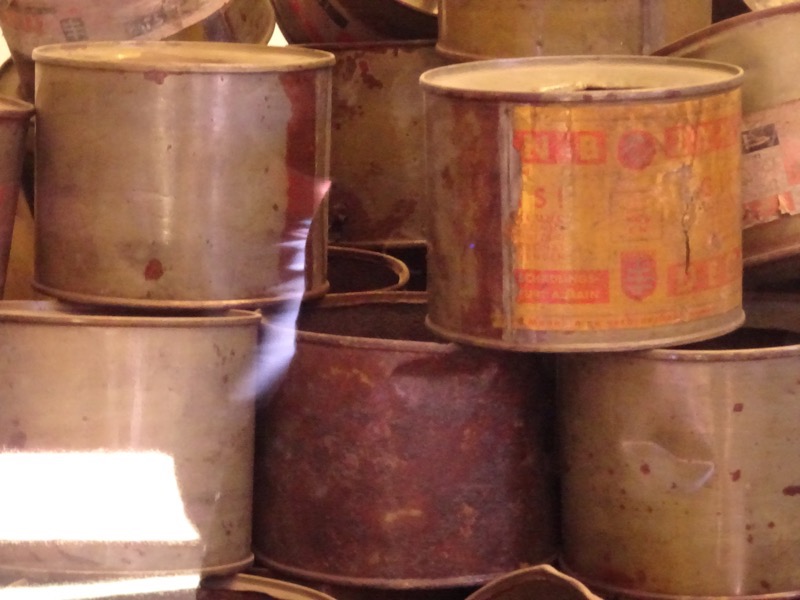
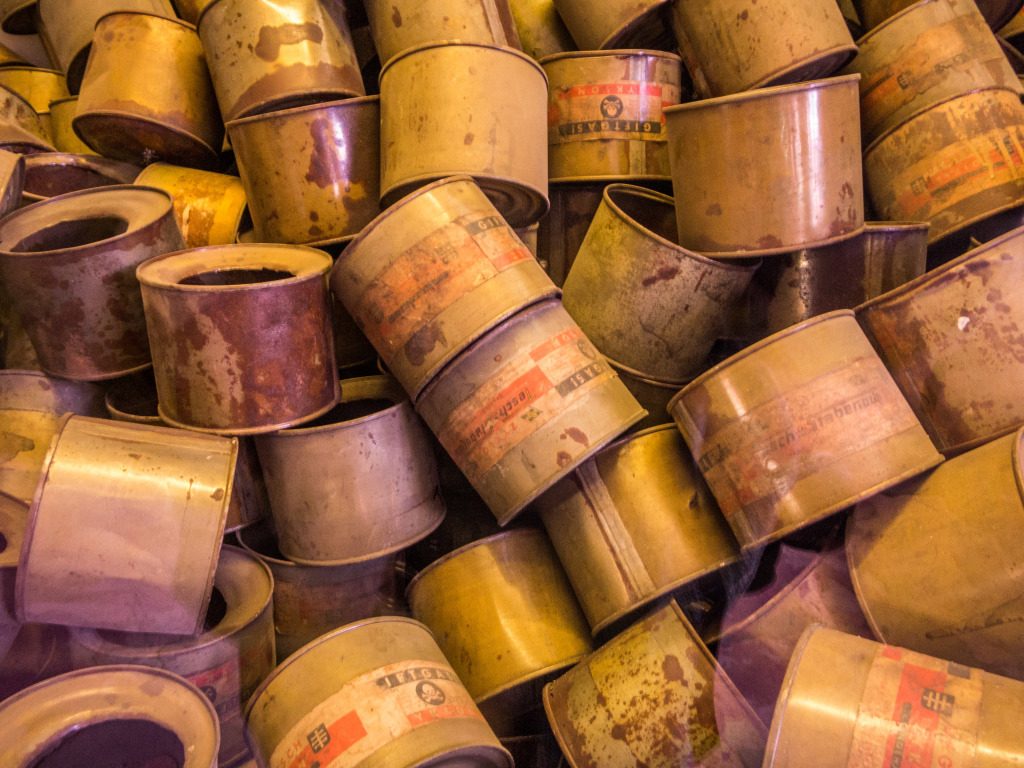 Piles of spectacles removed from deportees who were murdered in the gas chambers.
Piles of spectacles removed from deportees who were murdered in the gas chambers.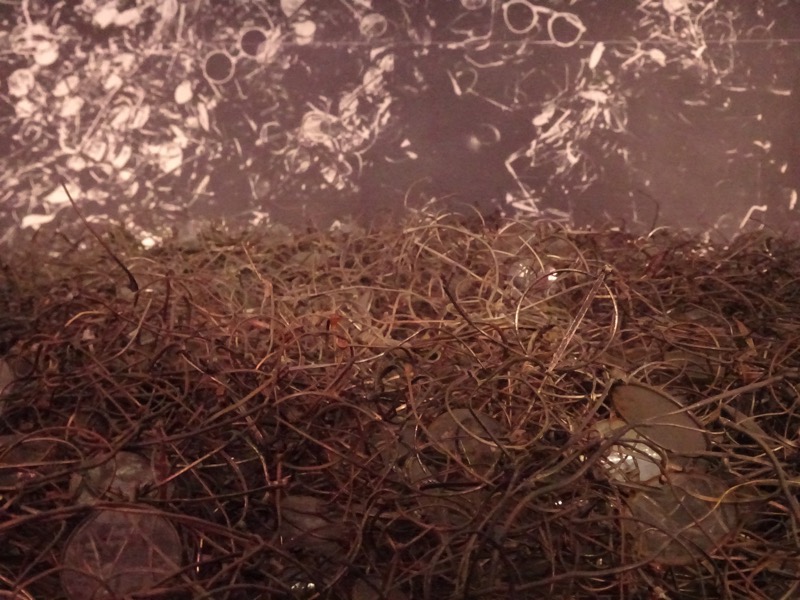
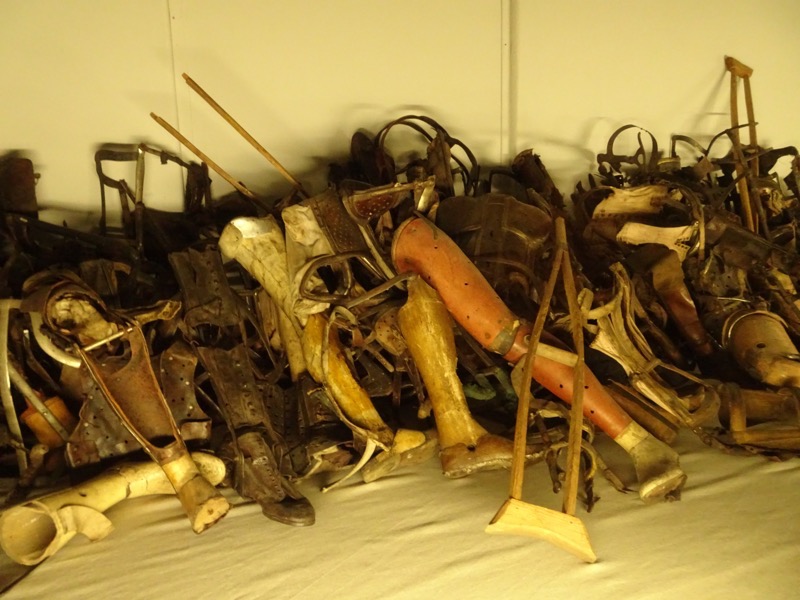
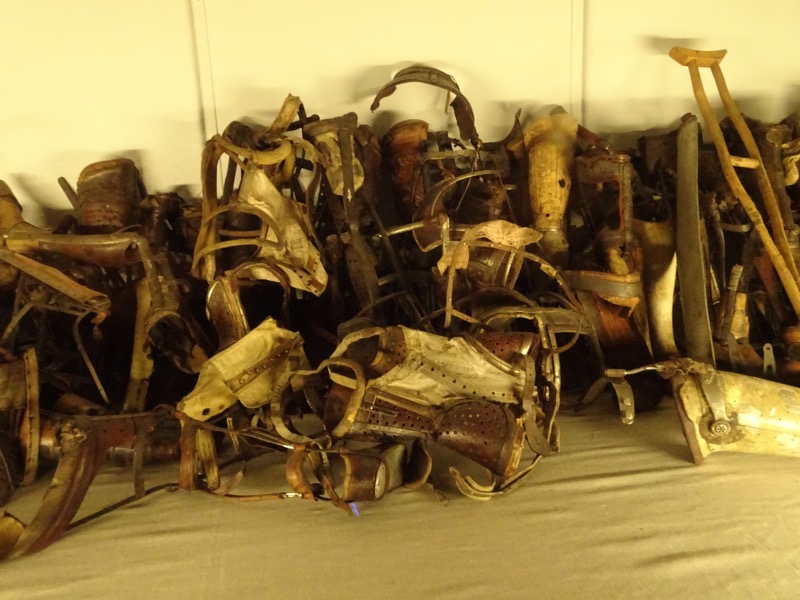 People arriving at the camps had many personal belongings with them that were taken and sorted, including household goods and kitchen items:
People arriving at the camps had many personal belongings with them that were taken and sorted, including household goods and kitchen items: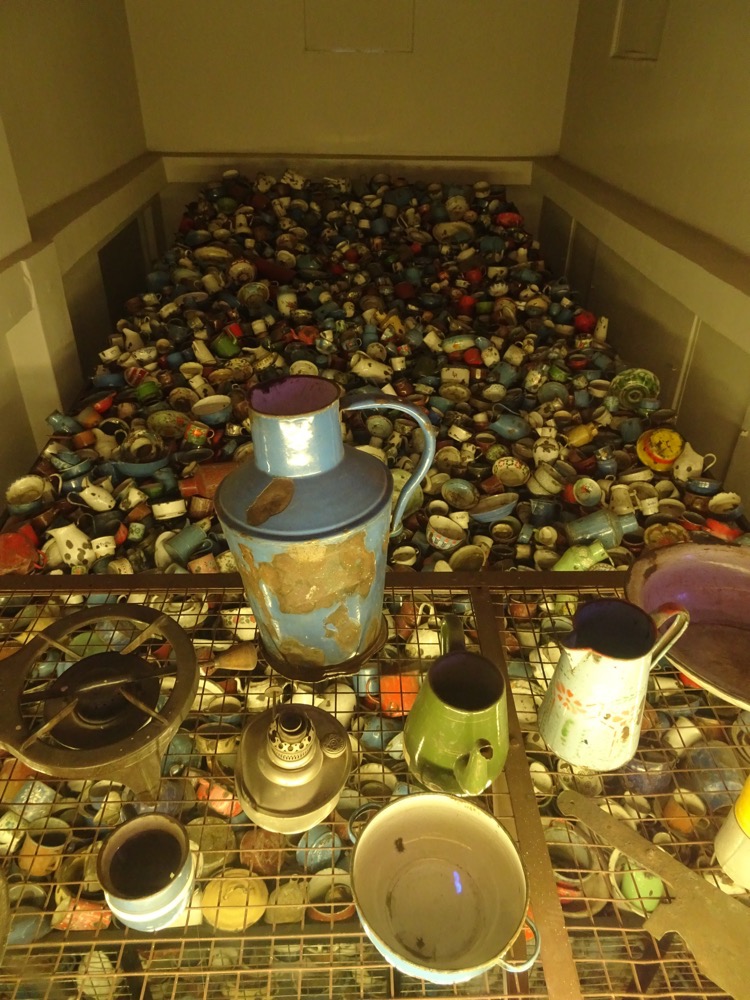 Piles of suitcases each one once carrying the entire worldly goods of a deportee:
Piles of suitcases each one once carrying the entire worldly goods of a deportee: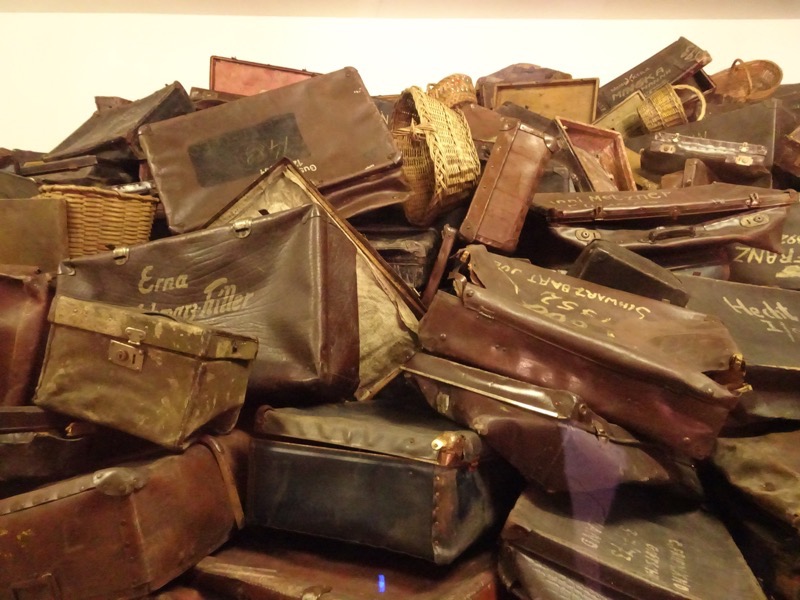
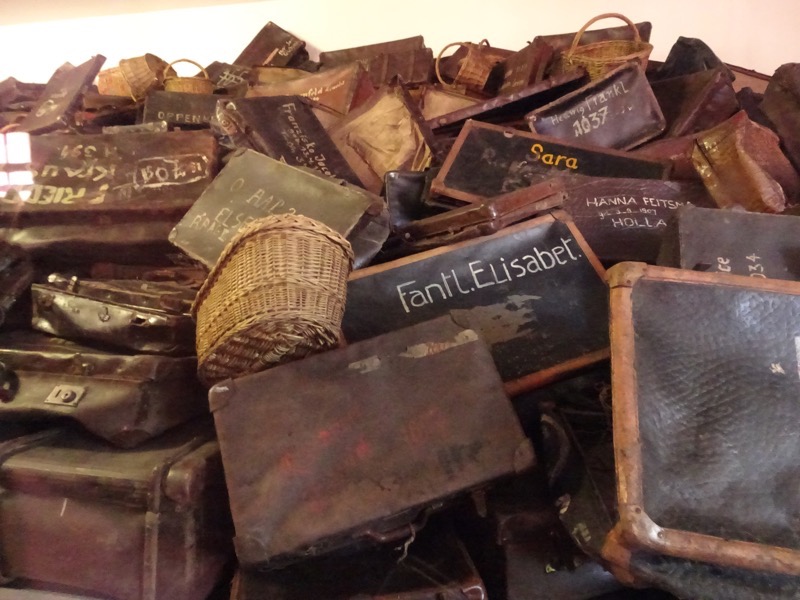 Mountains of shoes taken from the dead or about to be killed:
Mountains of shoes taken from the dead or about to be killed: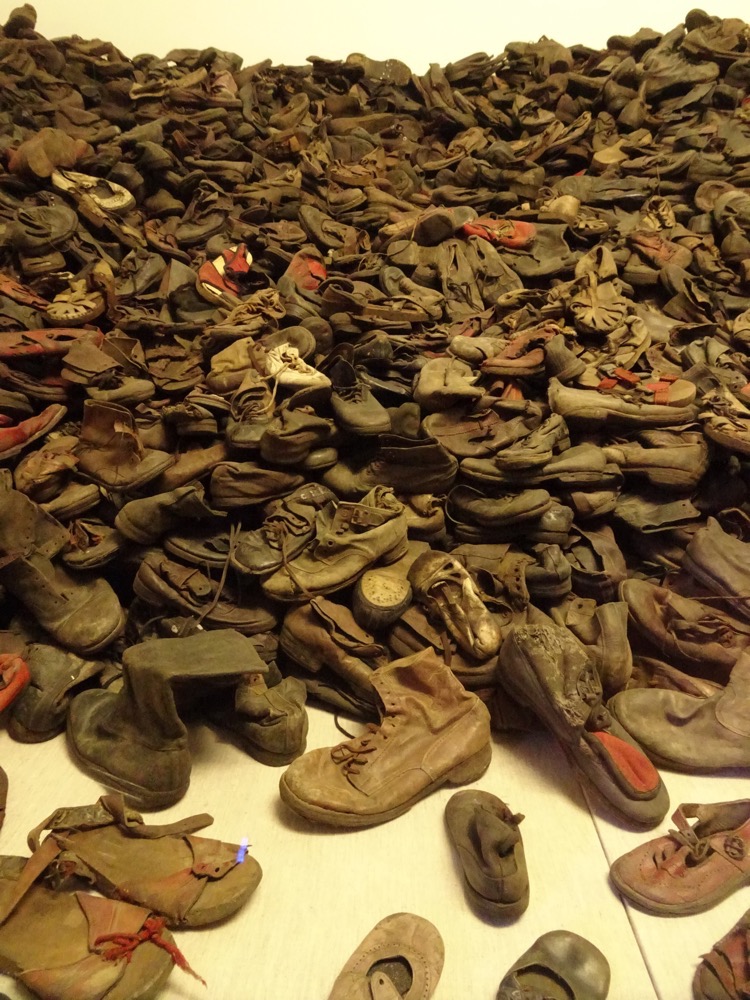 The shoes of children who were murdered at the camps:
The shoes of children who were murdered at the camps: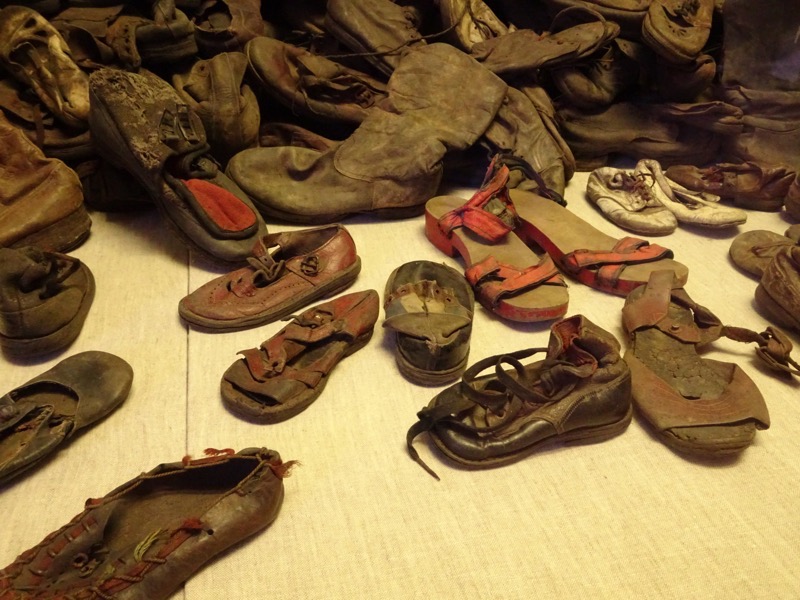 Personal brushes and shaving brushes:
Personal brushes and shaving brushes: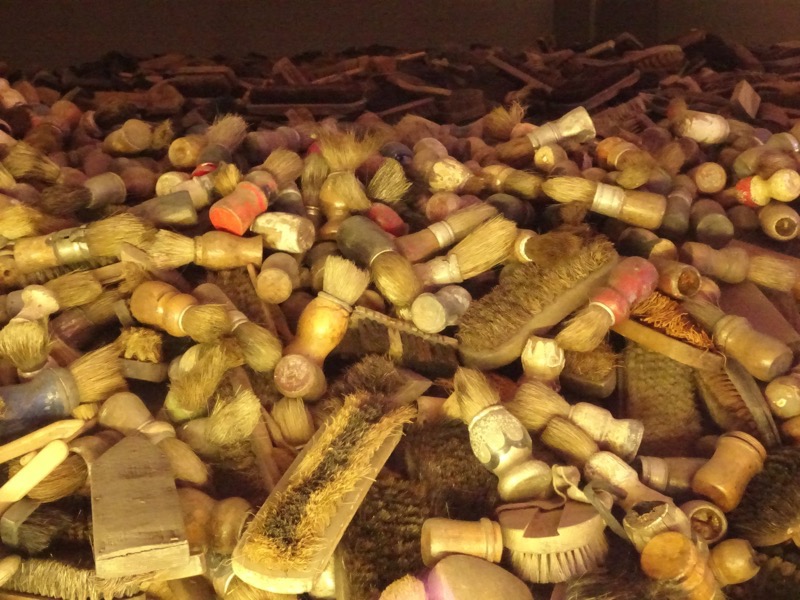
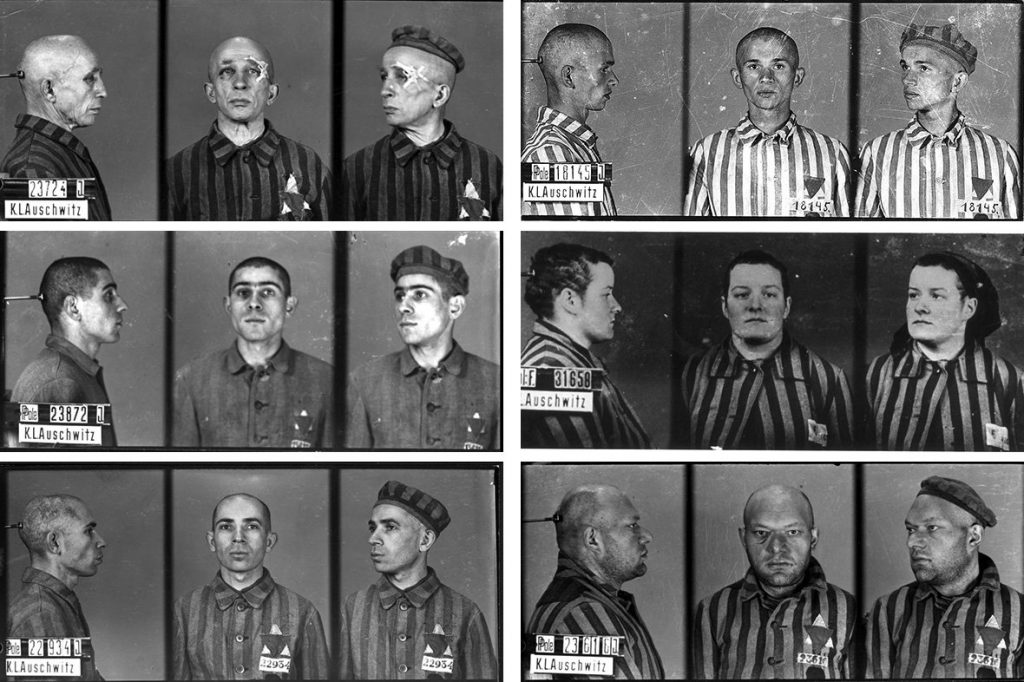
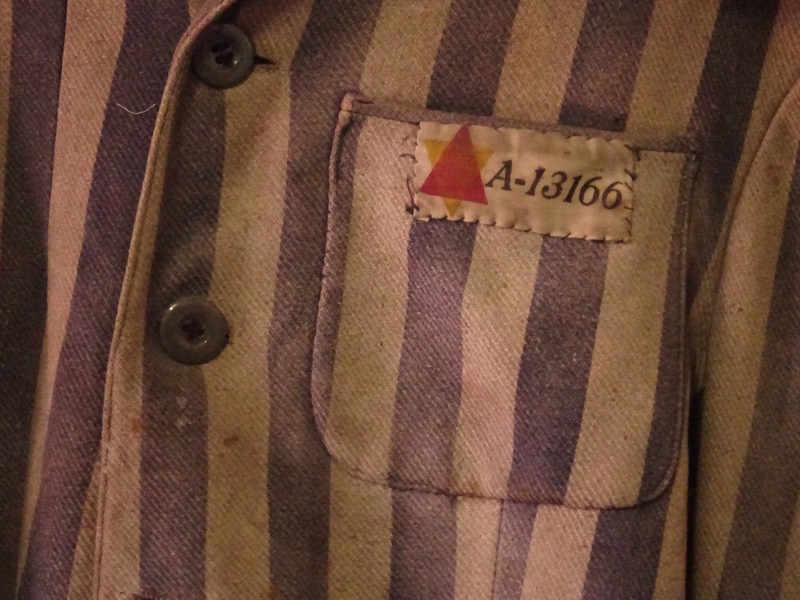 Each of these people had a family, an occupation, a home. Here, they were dehumanized and turned into a number only.
Each of these people had a family, an occupation, a home. Here, they were dehumanized and turned into a number only. 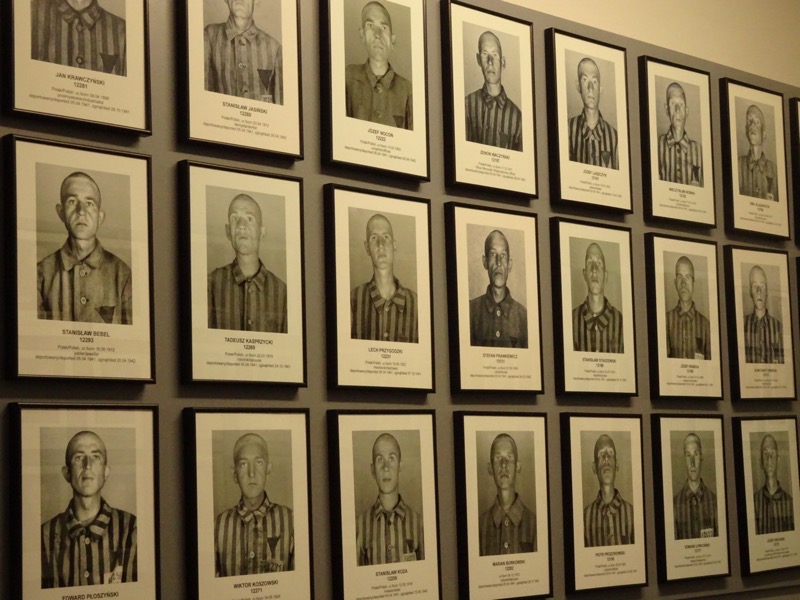
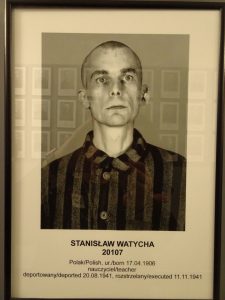
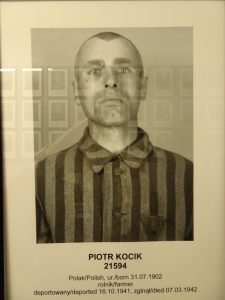
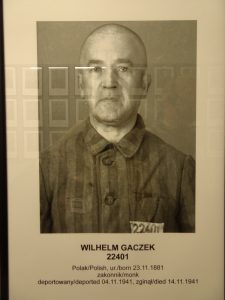
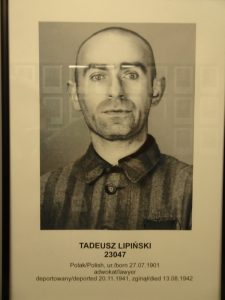
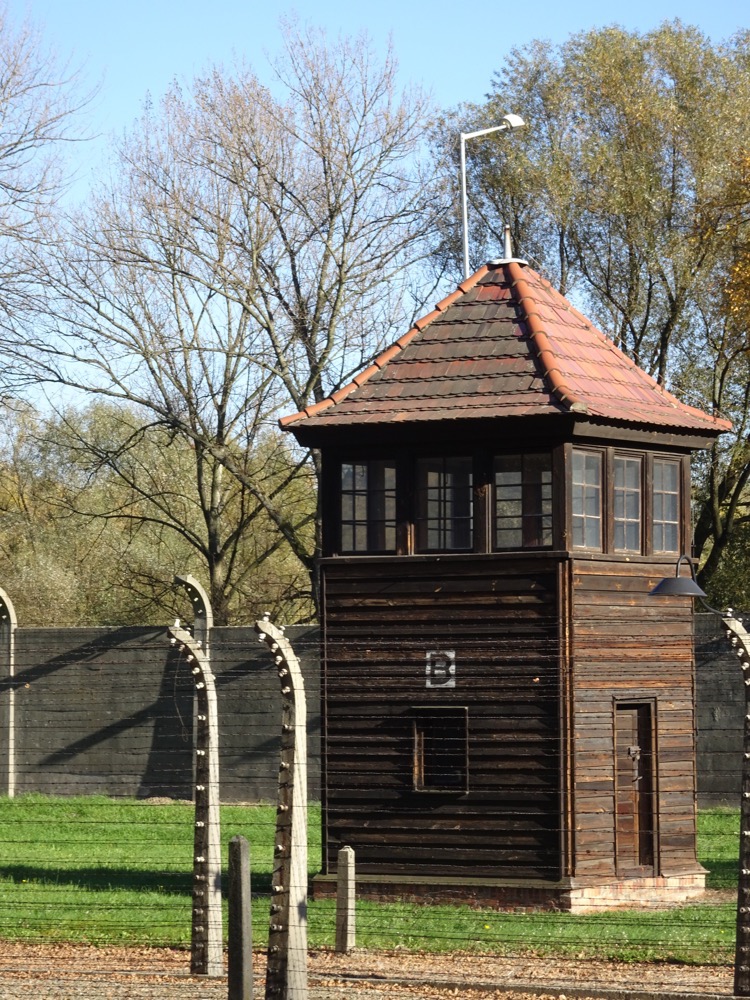
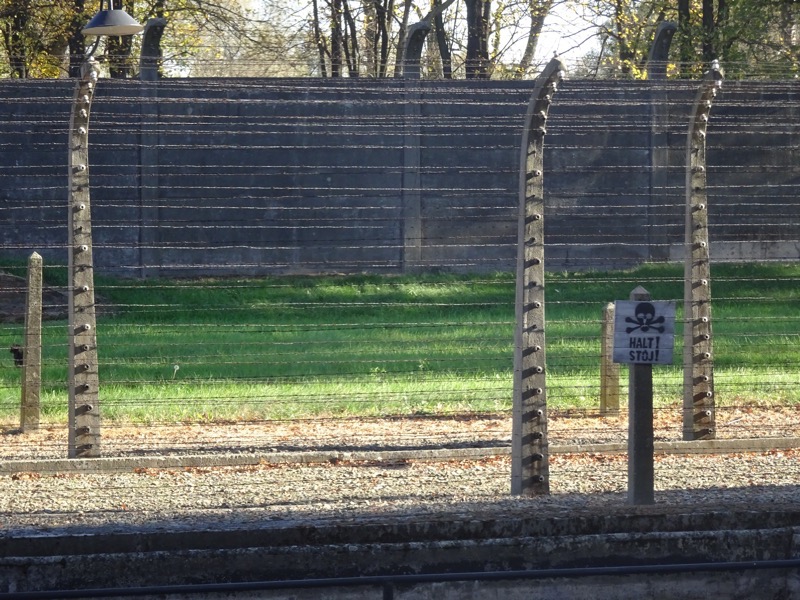
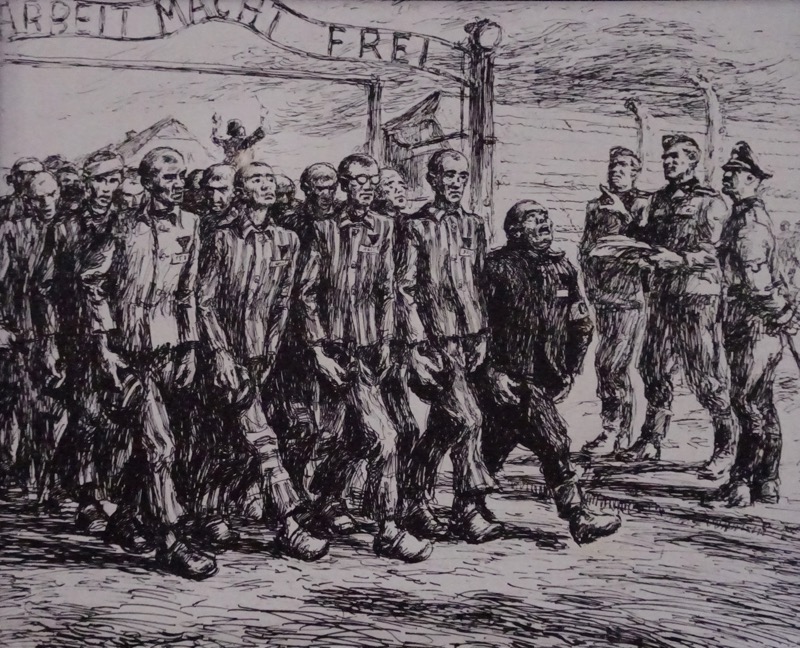
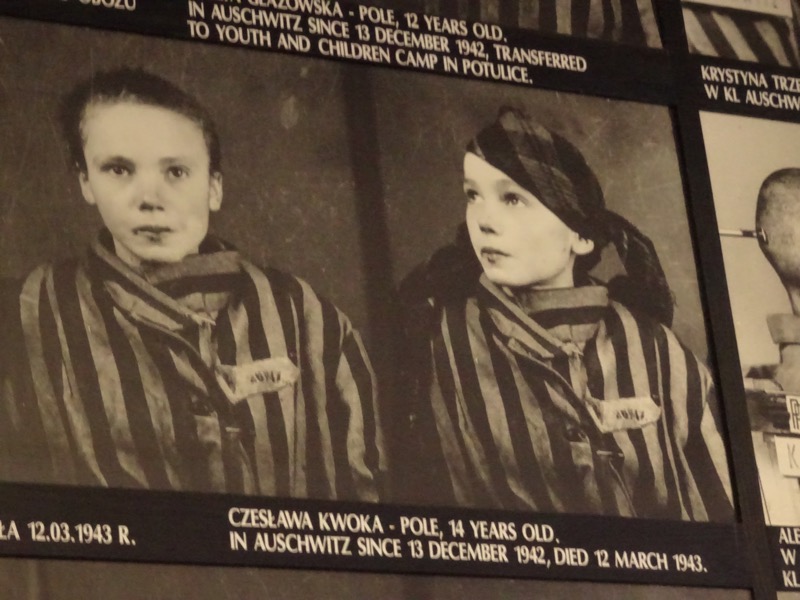
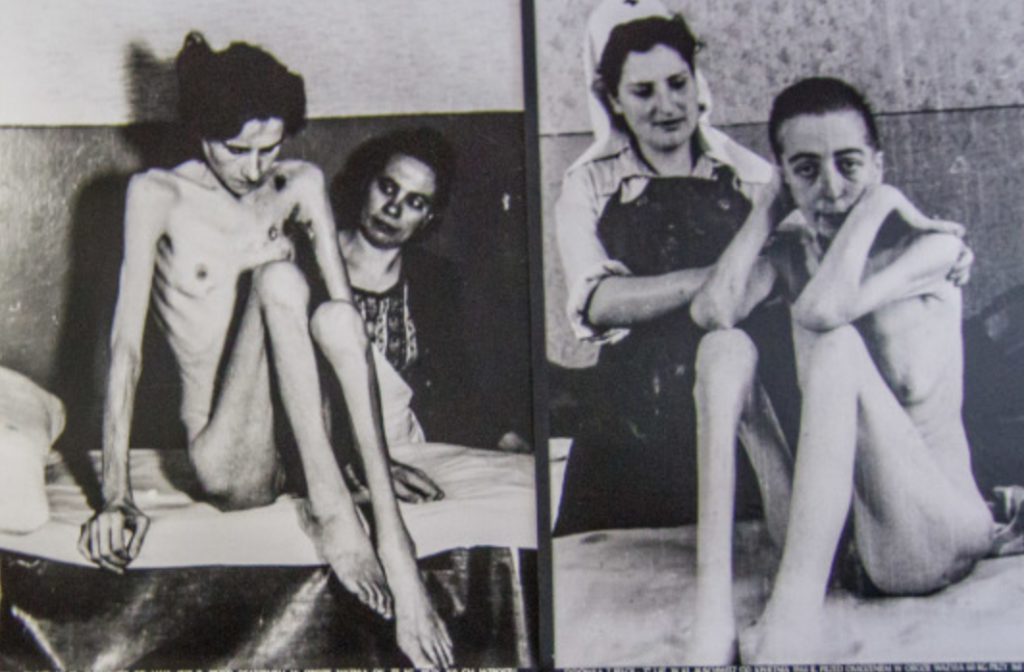
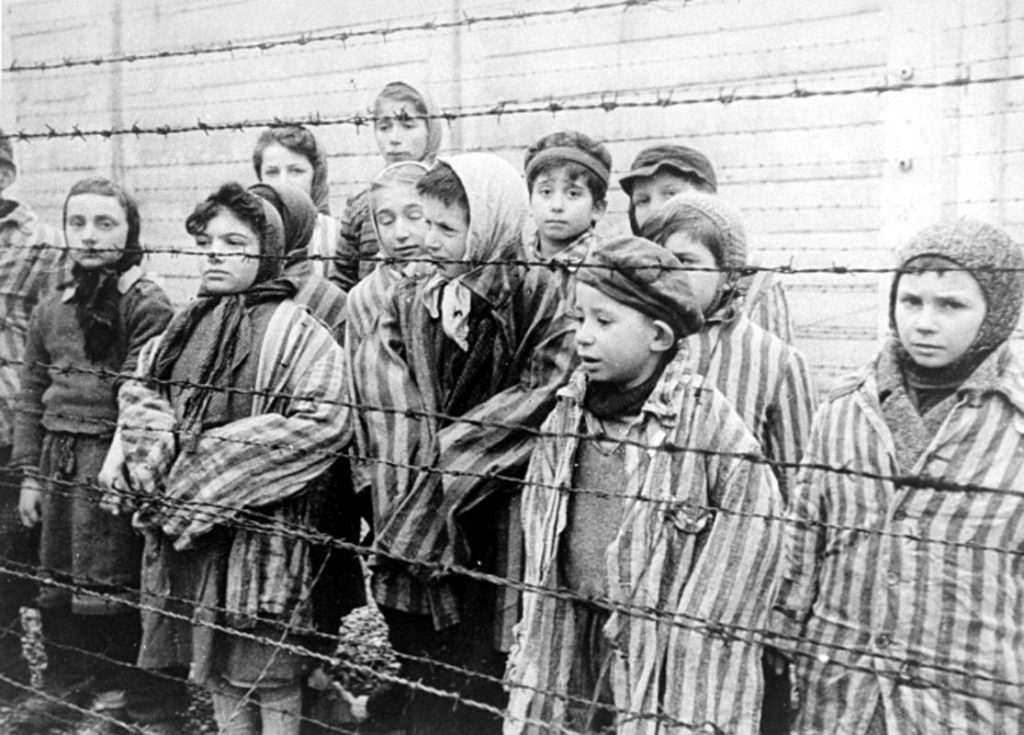
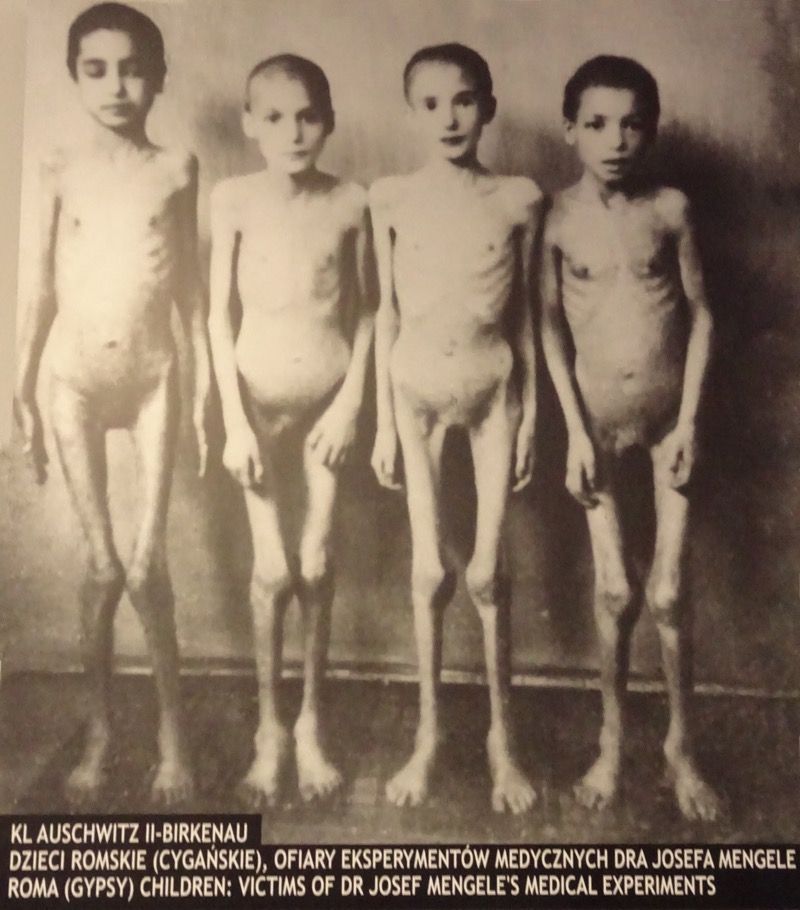
 Map of the Block 11 Punishment Unit. This was effectively the prison within the prison. If prisoner committed offences while in the camp, they could expect any sort of retribution – immediate execution, solitary confinement for a period of time, confinement to starvation with the intention of murdering the prisoner, or face a firing squad at an unknown future time. Note Section 22 in the left hand building – it has what is know as ‘standing cells’ where prisoners entered through a two foot door in a wall and were put in a cell approximatedly two foot square and six foot tall. Prisoners would be locked in this standing cell in complete darkness for indeterminate periods of time.
Map of the Block 11 Punishment Unit. This was effectively the prison within the prison. If prisoner committed offences while in the camp, they could expect any sort of retribution – immediate execution, solitary confinement for a period of time, confinement to starvation with the intention of murdering the prisoner, or face a firing squad at an unknown future time. Note Section 22 in the left hand building – it has what is know as ‘standing cells’ where prisoners entered through a two foot door in a wall and were put in a cell approximatedly two foot square and six foot tall. Prisoners would be locked in this standing cell in complete darkness for indeterminate periods of time.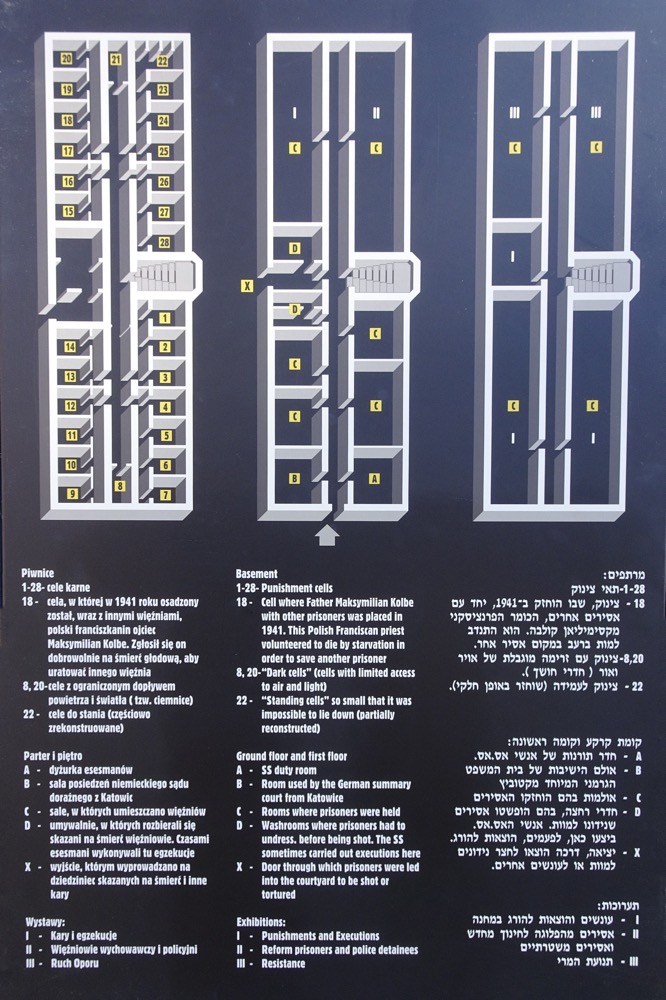 Prisoners were led to this wall for execution by firing squad.
Prisoners were led to this wall for execution by firing squad.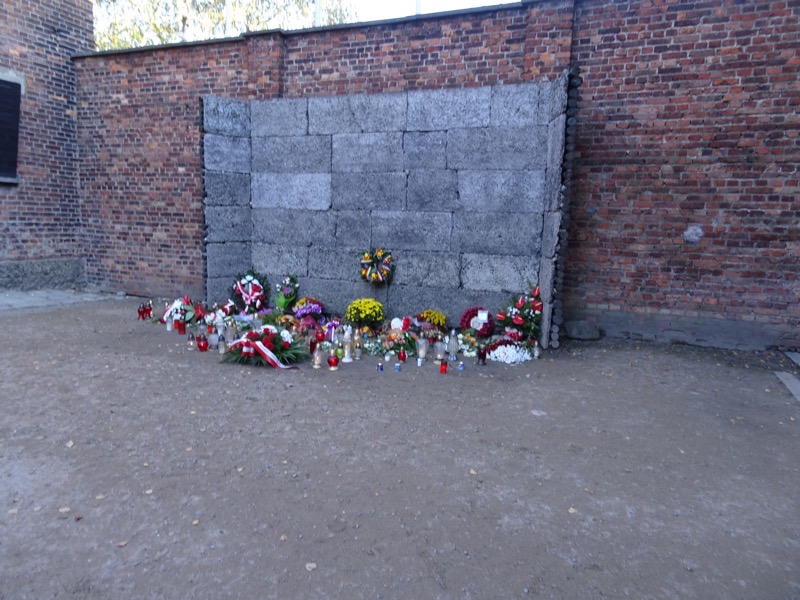
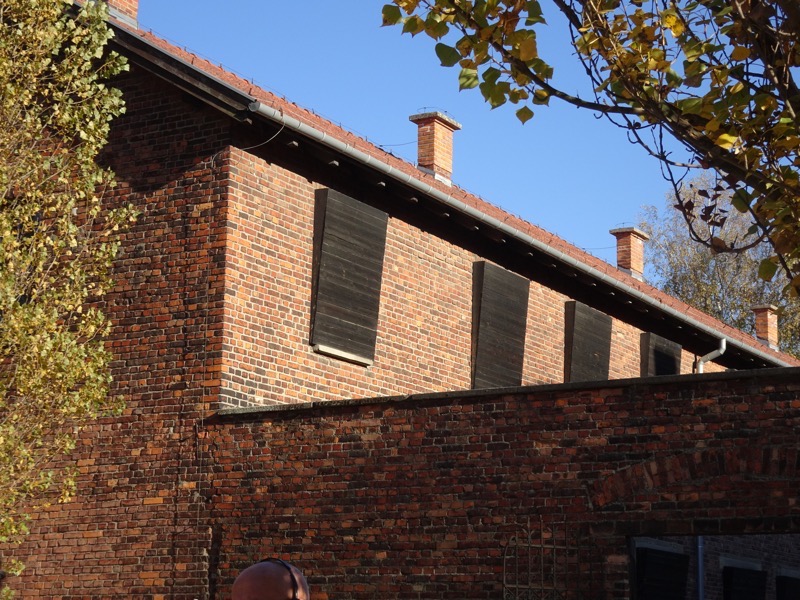 The barracks beside the execution courtyard were blocked from seeing what was happening during the executions. Prisoners avoided having anything to do with Block 11 and tried hard to stay away from it when going about their duties.
The barracks beside the execution courtyard were blocked from seeing what was happening during the executions. Prisoners avoided having anything to do with Block 11 and tried hard to stay away from it when going about their duties.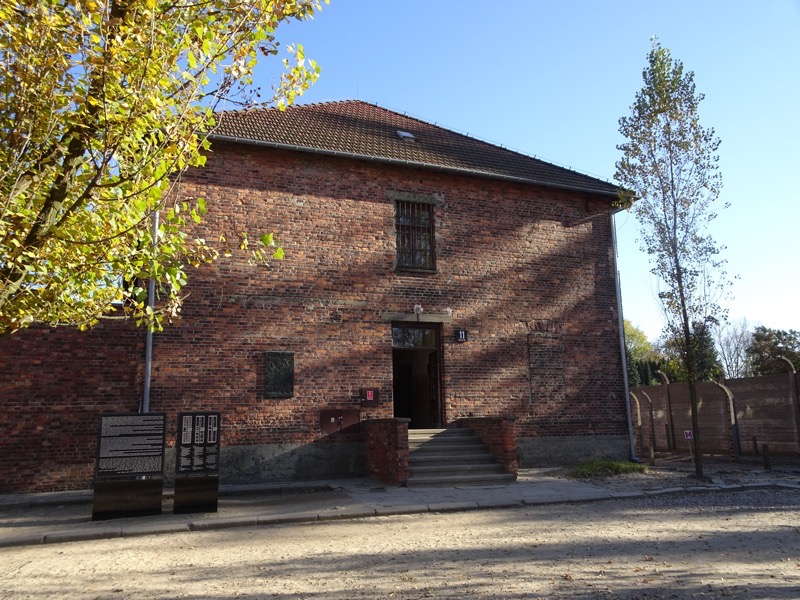 A guardhouse used by SS officials for shelter during the harsh roll-calls that prisoners were forced to endure:
A guardhouse used by SS officials for shelter during the harsh roll-calls that prisoners were forced to endure: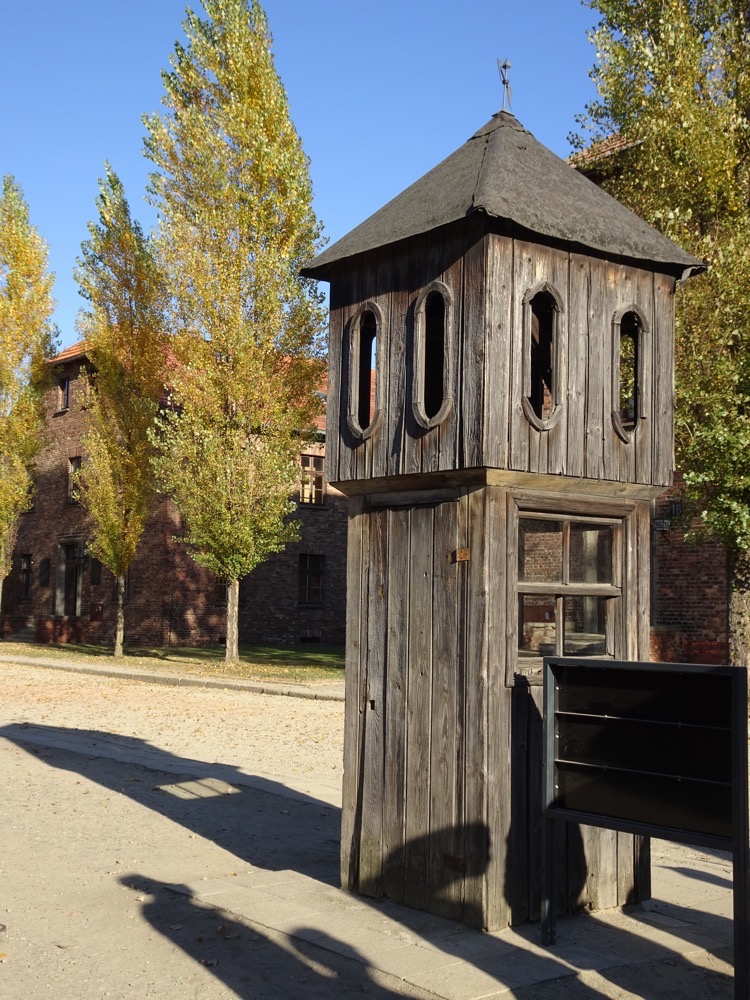
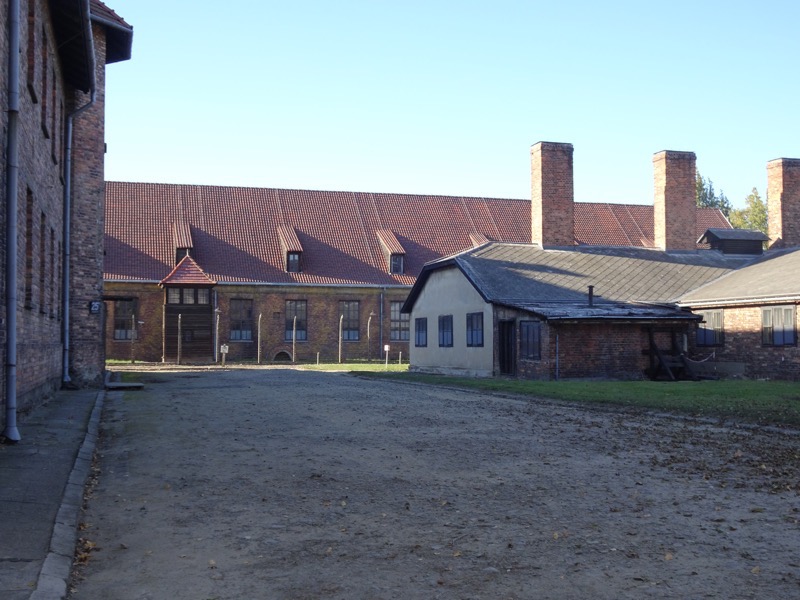 In the centre of Auschwitz KL, the SS officer in charge would hold a roll call in the courtyard above. The roll call contained reports on the number of prisoners present. If there seemed to be anyone missing, prisoners had to continue to stand at attention until the SS were satisfied – regardless of the weather, sometimes for up to twelve hours or more. To intimidate the prisoners, the SS would also conduct public hangings in full view of the roll-call area. The largest such execution was carried out on 19 July 1943 when twelve Poles suspected of helping three other prisoners escape, and of maintaining contacts with the outside world, were hanged together on a purpose-built gallows.
In the centre of Auschwitz KL, the SS officer in charge would hold a roll call in the courtyard above. The roll call contained reports on the number of prisoners present. If there seemed to be anyone missing, prisoners had to continue to stand at attention until the SS were satisfied – regardless of the weather, sometimes for up to twelve hours or more. To intimidate the prisoners, the SS would also conduct public hangings in full view of the roll-call area. The largest such execution was carried out on 19 July 1943 when twelve Poles suspected of helping three other prisoners escape, and of maintaining contacts with the outside world, were hanged together on a purpose-built gallows.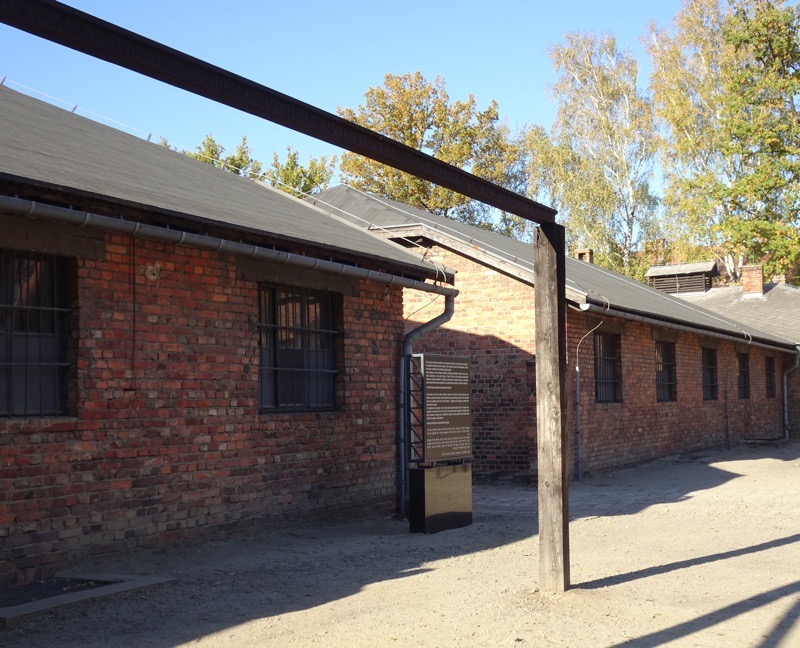

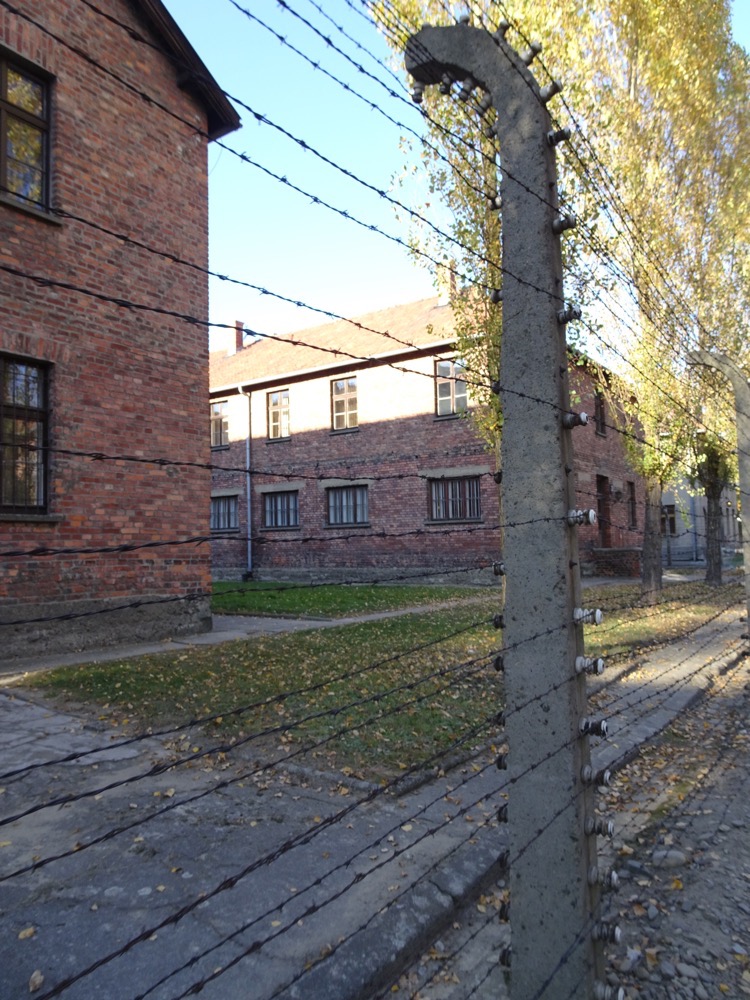
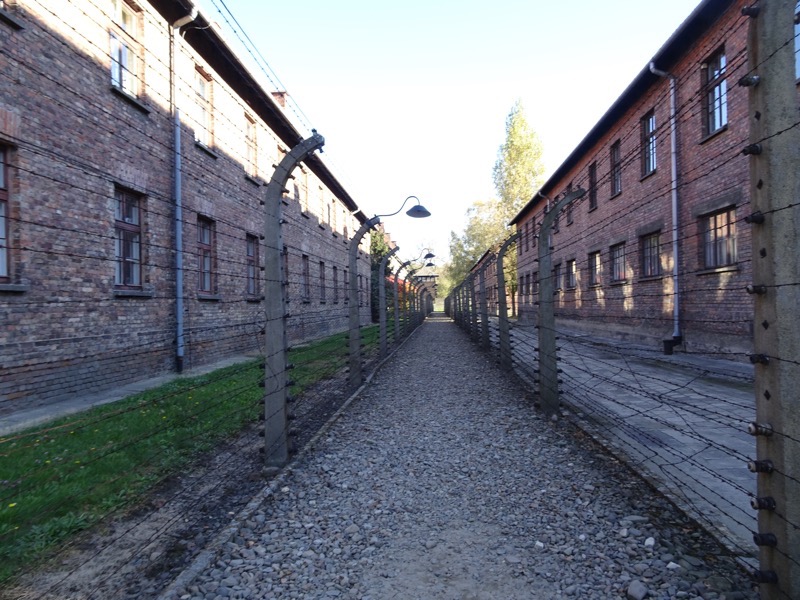
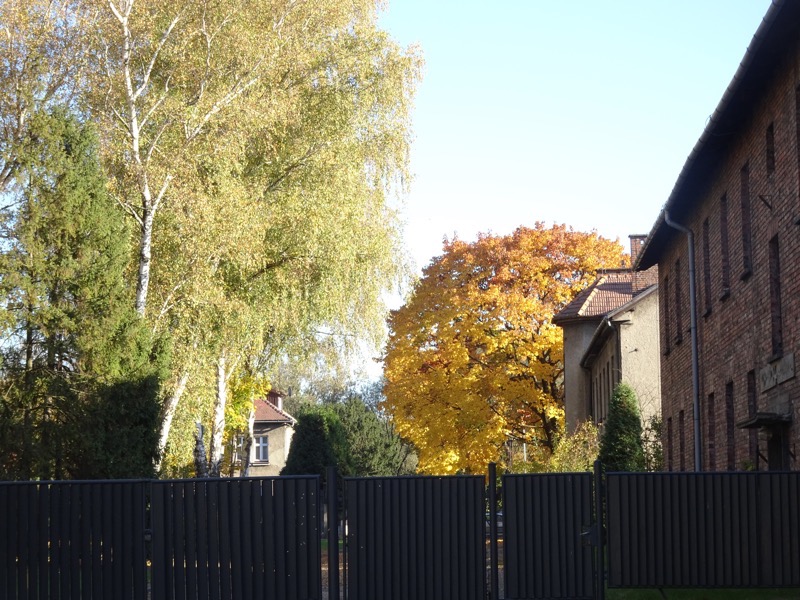 Later, after the war, and after the trials for war crimes, a special gallows was built here and Rudolph Höss was hanged on 16 April 1947, after a trial before the Polish Supreme National Tribunal. Fittingly he was executed at Auschwitz, in between of his former home and the gas chambers. It is not possible to believe that the Höss family didn’t hear, smell and see the airborne ash remains of the prisoners emerging from the chimneys, who met their fate in the gas chambers.
Later, after the war, and after the trials for war crimes, a special gallows was built here and Rudolph Höss was hanged on 16 April 1947, after a trial before the Polish Supreme National Tribunal. Fittingly he was executed at Auschwitz, in between of his former home and the gas chambers. It is not possible to believe that the Höss family didn’t hear, smell and see the airborne ash remains of the prisoners emerging from the chimneys, who met their fate in the gas chambers.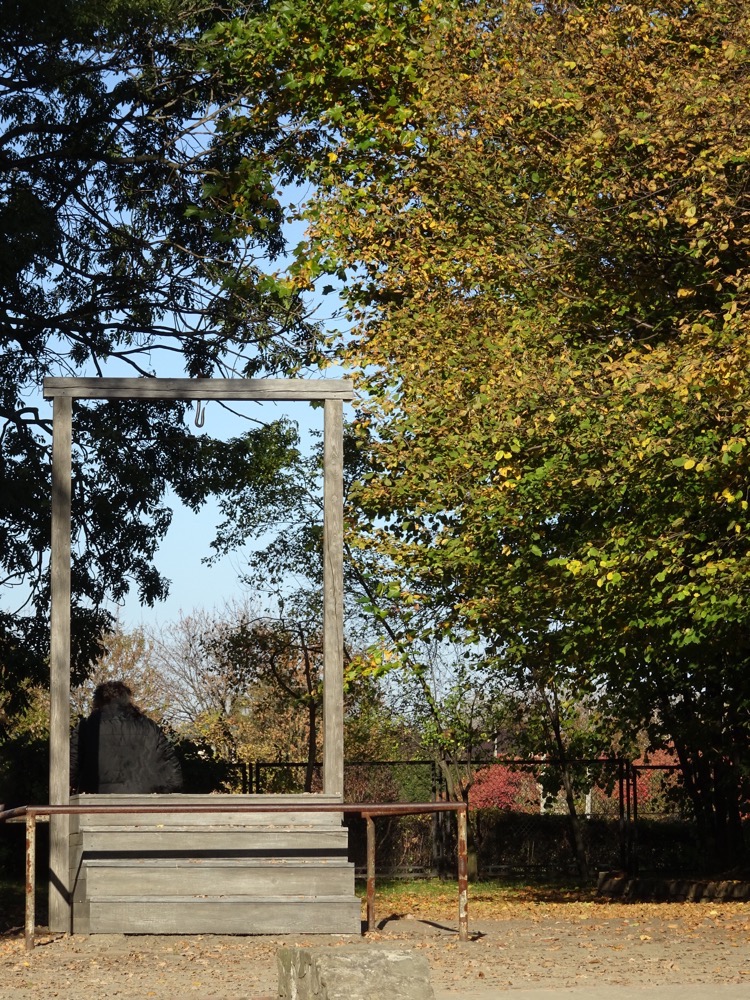
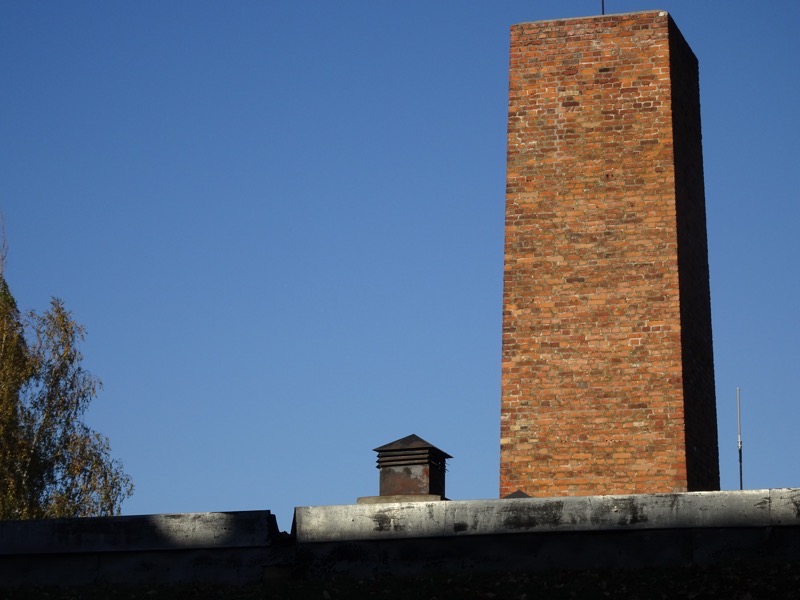
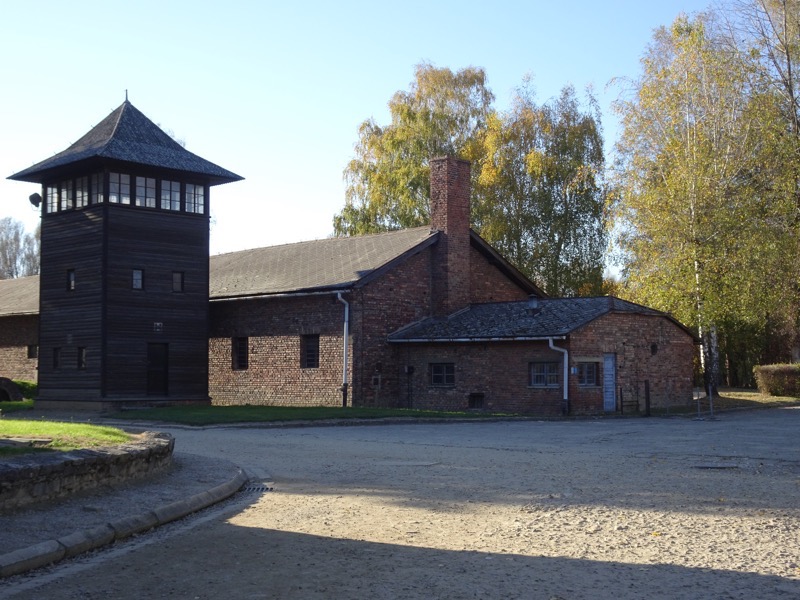 The small gas chamber at KL (Konzentrationslager) Auschwitz:
The small gas chamber at KL (Konzentrationslager) Auschwitz: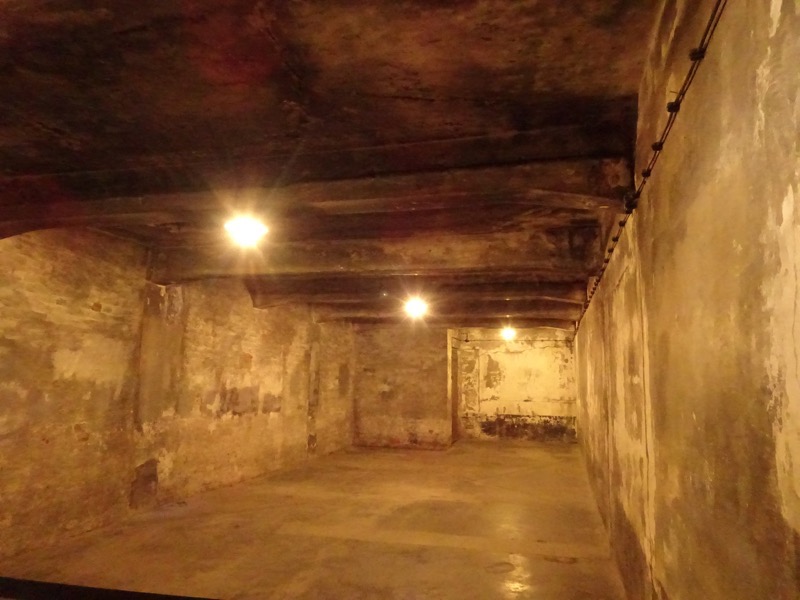
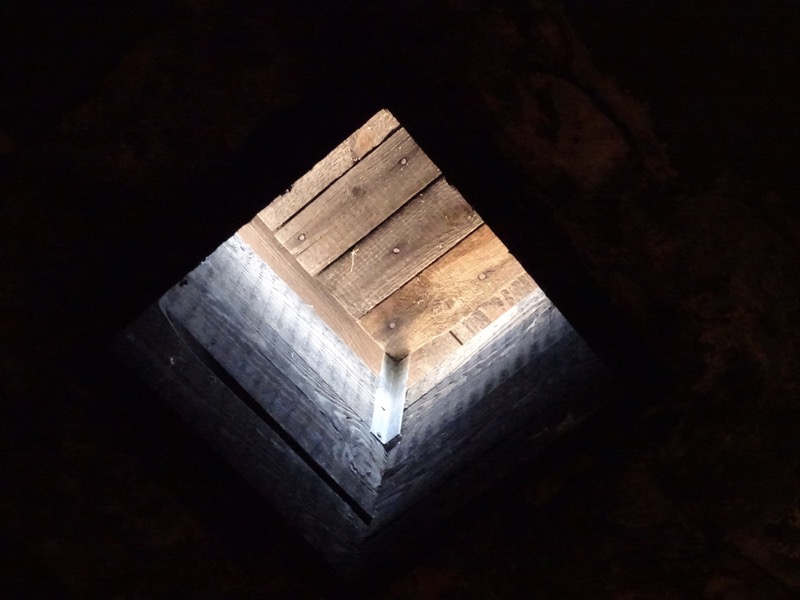 The creamation works directly beside the gas chamber.
The creamation works directly beside the gas chamber.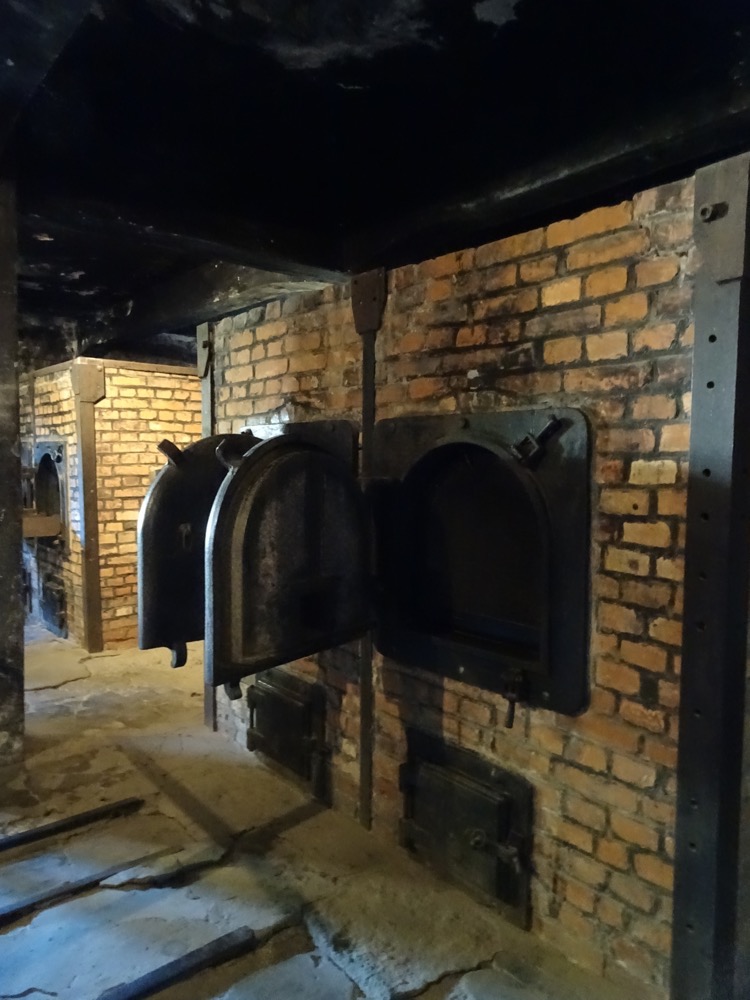
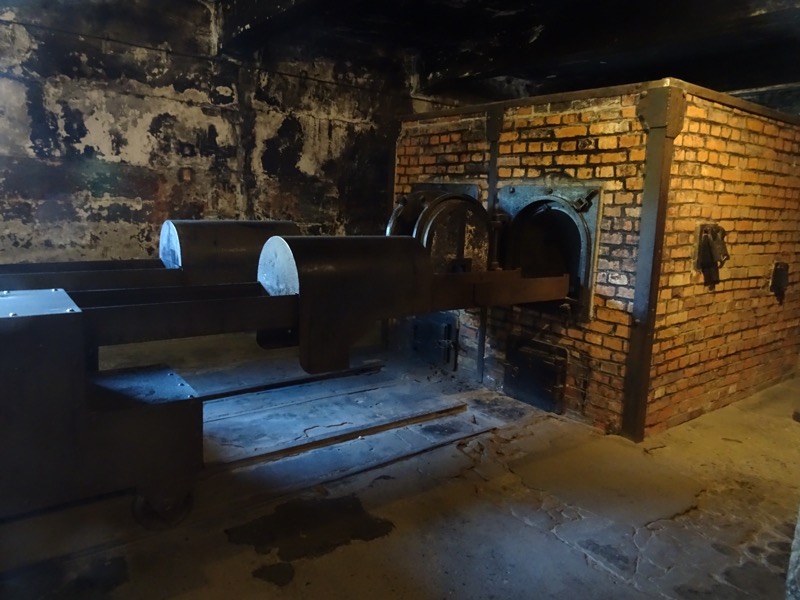 All of which is only divided from the worker/prisoner barracks by two rows of patrolled barbed wire. The prisoners must have also know the fates of those who entered the chambers.
All of which is only divided from the worker/prisoner barracks by two rows of patrolled barbed wire. The prisoners must have also know the fates of those who entered the chambers.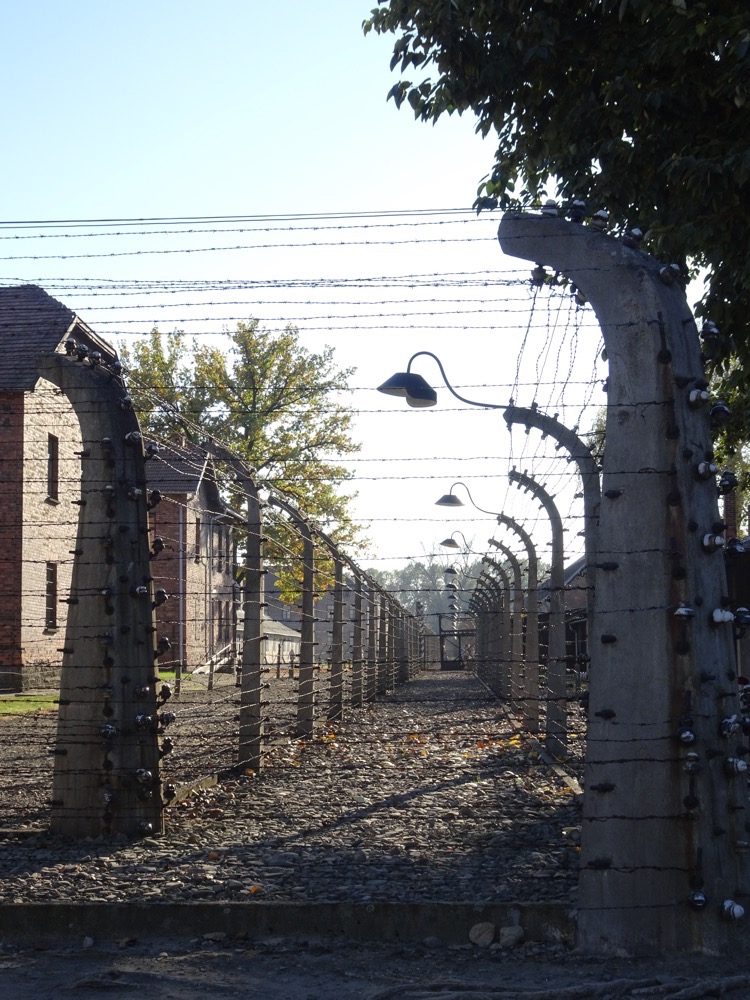
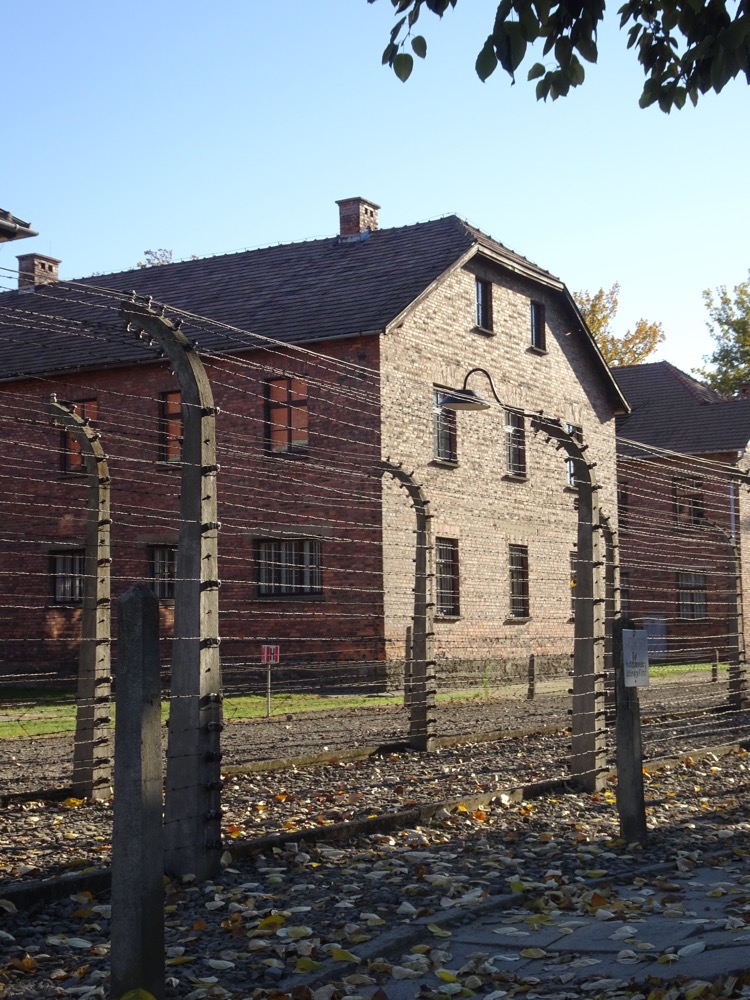 It was at this point we had a break in our tour and I took the opportunity to talk to our guide, Marta, who I had noticed handled the appalling and traumatizing material that she was imparting in a professional, yet very sensitive manner. She was managing to share some truly harrowing content with us in a matter of fact manner, and I wanted to commend her on what I thought must be a difficult and delicate balance between educating visitors and yet now allowing the recitation of bland facts to overwhelm the truly unbelievably vile events that occurred here. I was also curious to know how long she had been guiding visitors through Auschwitz, how many times each day would she go through the complex and how did she manage to not allow the horrific nature of the events that she was constantly discussing not to affect her personally on a psychological level? It turns out that Marta is not actually one of the main tour guides. She is a historian and curator at the museum and she only takes tours on rare occasions.
It was at this point we had a break in our tour and I took the opportunity to talk to our guide, Marta, who I had noticed handled the appalling and traumatizing material that she was imparting in a professional, yet very sensitive manner. She was managing to share some truly harrowing content with us in a matter of fact manner, and I wanted to commend her on what I thought must be a difficult and delicate balance between educating visitors and yet now allowing the recitation of bland facts to overwhelm the truly unbelievably vile events that occurred here. I was also curious to know how long she had been guiding visitors through Auschwitz, how many times each day would she go through the complex and how did she manage to not allow the horrific nature of the events that she was constantly discussing not to affect her personally on a psychological level? It turns out that Marta is not actually one of the main tour guides. She is a historian and curator at the museum and she only takes tours on rare occasions.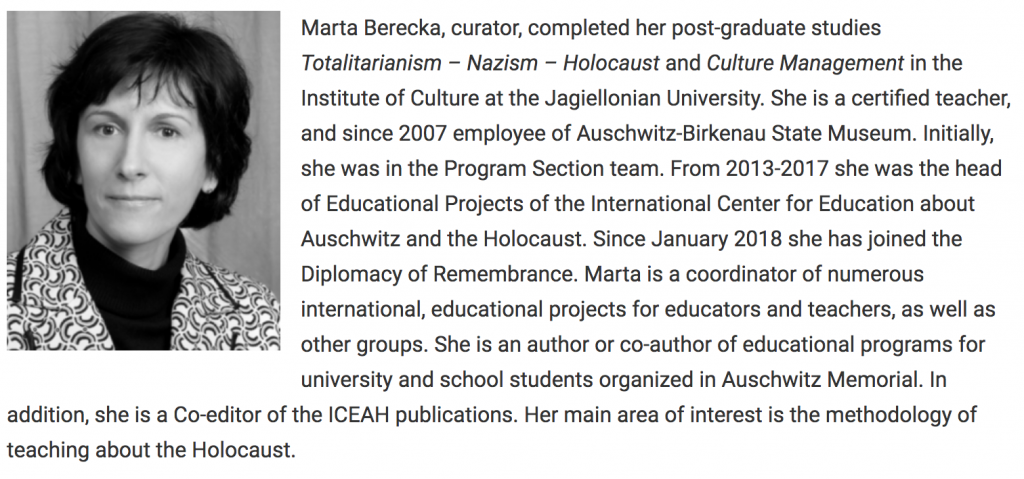
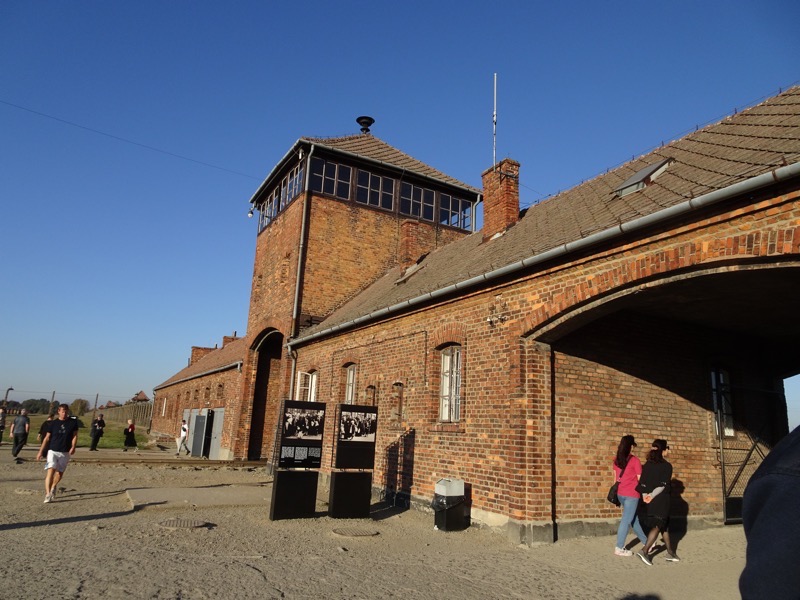
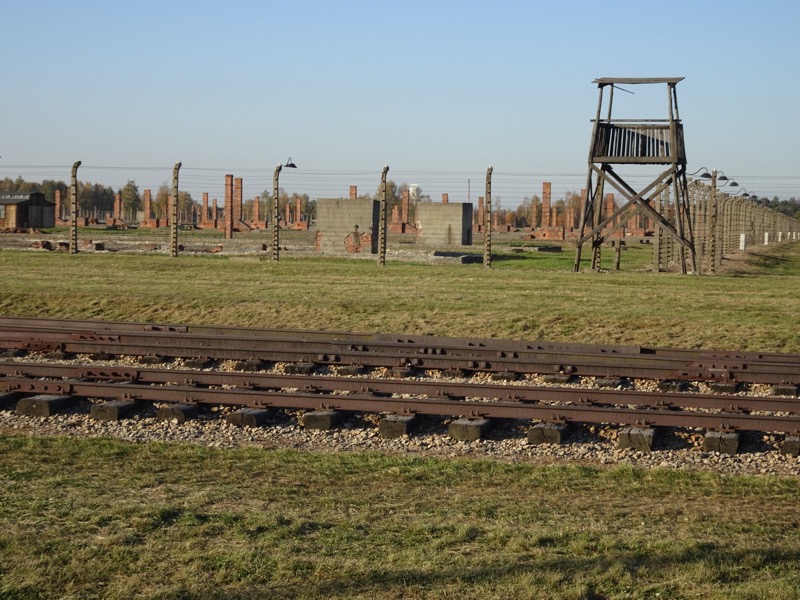

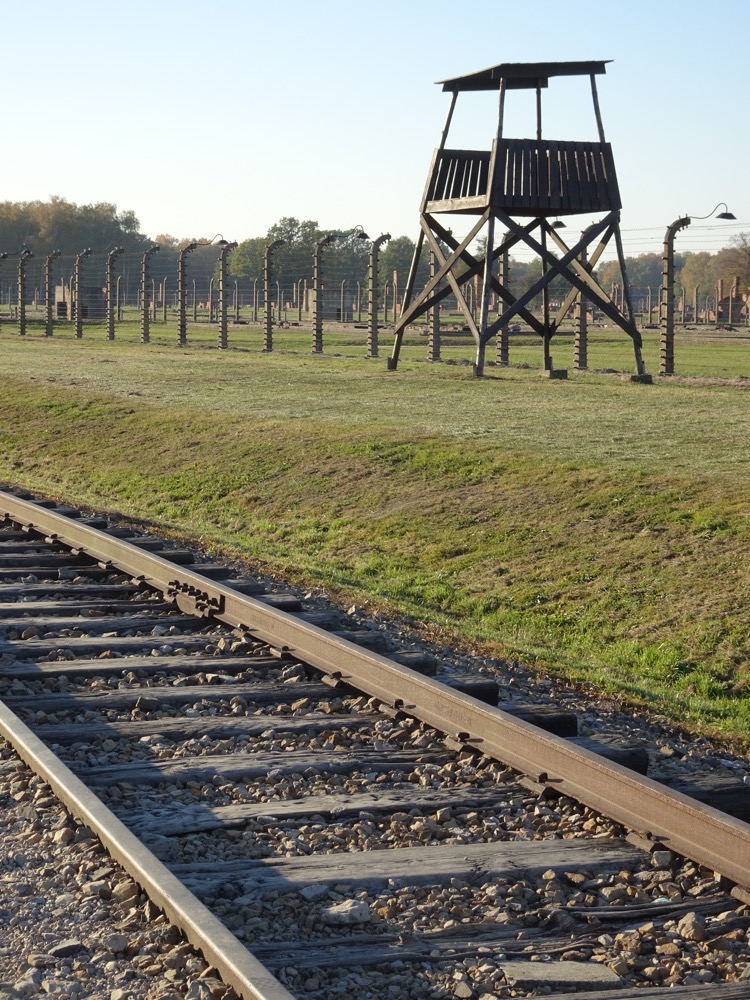 It was during this part of the tour that the sheer scale of the camp hits visitors hard. One hundred and eighty hectares of organised misery, degradation and for most, eventual death.
It was during this part of the tour that the sheer scale of the camp hits visitors hard. One hundred and eighty hectares of organised misery, degradation and for most, eventual death.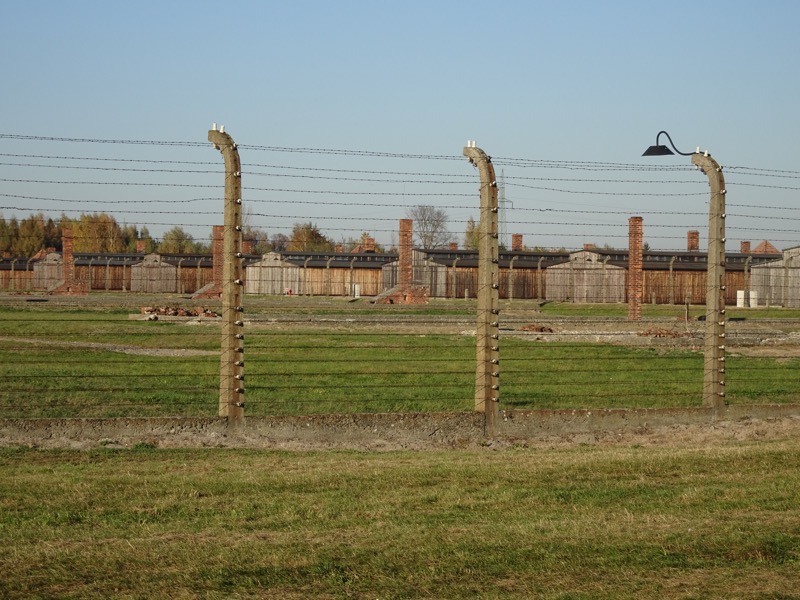 A replica of the railway cars which were used to transport most of the deportees to Auschwitz-Birkenau. Eighty to one hundred people were crammed into these cars for journeys lasting days with no food, no water and no toileting facilities. Tens of thousands of people arrived at the camp in cars just like this one.
A replica of the railway cars which were used to transport most of the deportees to Auschwitz-Birkenau. Eighty to one hundred people were crammed into these cars for journeys lasting days with no food, no water and no toileting facilities. Tens of thousands of people arrived at the camp in cars just like this one.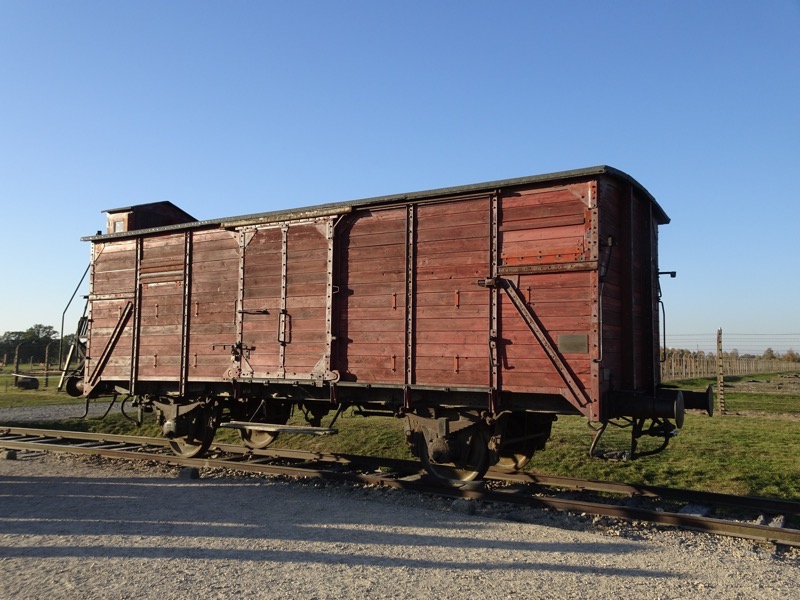 The further into the camp we walked, the size of the camp became more and more apparent.
The further into the camp we walked, the size of the camp became more and more apparent.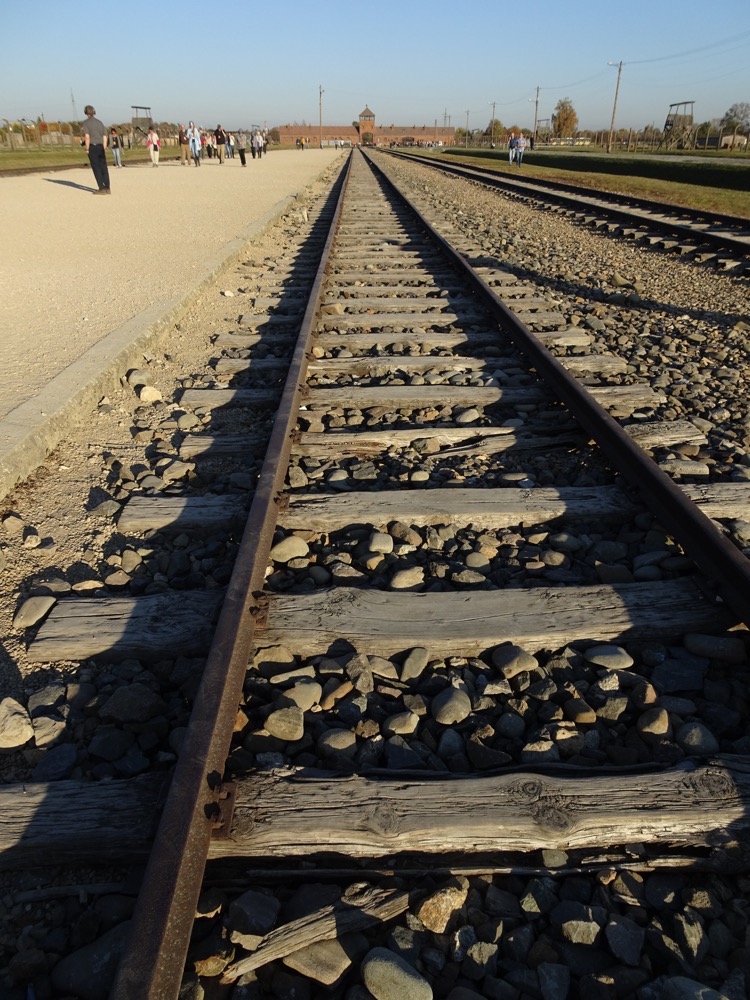
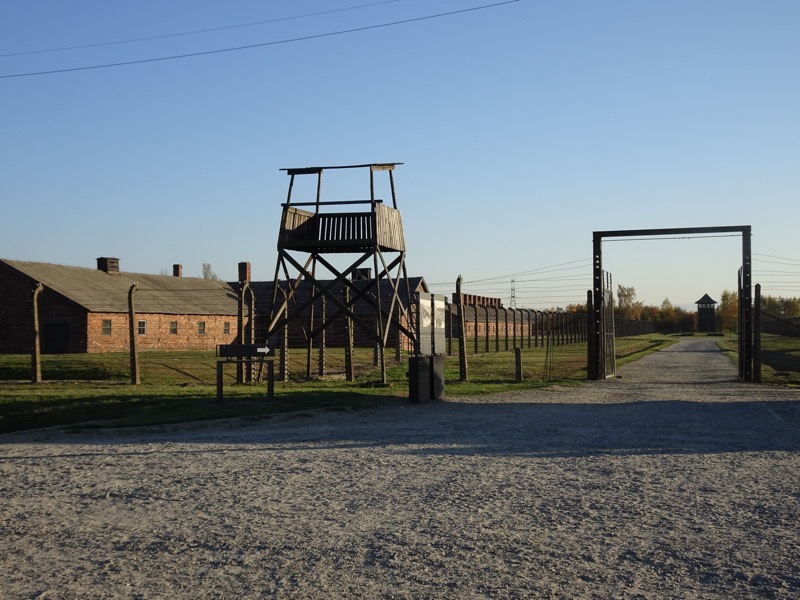
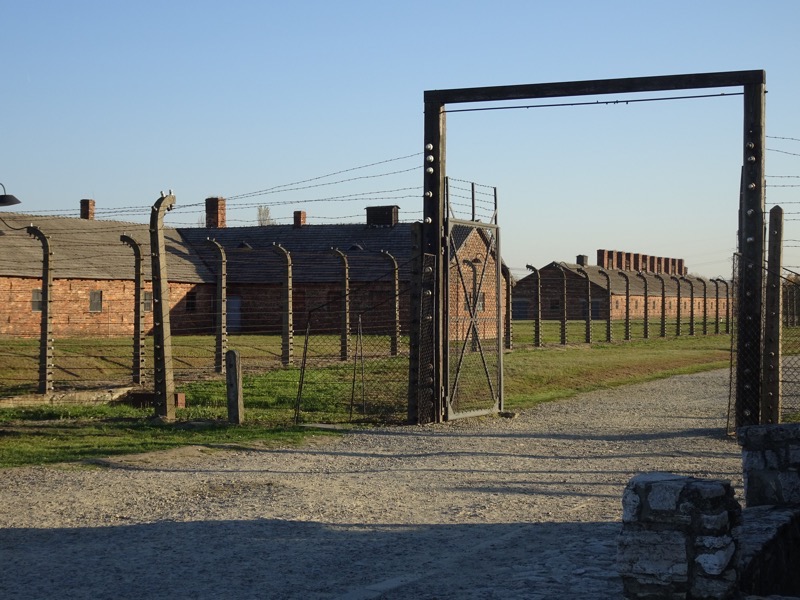 At the ramps at the end of the train tracks where the selection processes were carried out. Behind us is the massive L shaped gas chamber and industrial creamatoria complex.
At the ramps at the end of the train tracks where the selection processes were carried out. Behind us is the massive L shaped gas chamber and industrial creamatoria complex.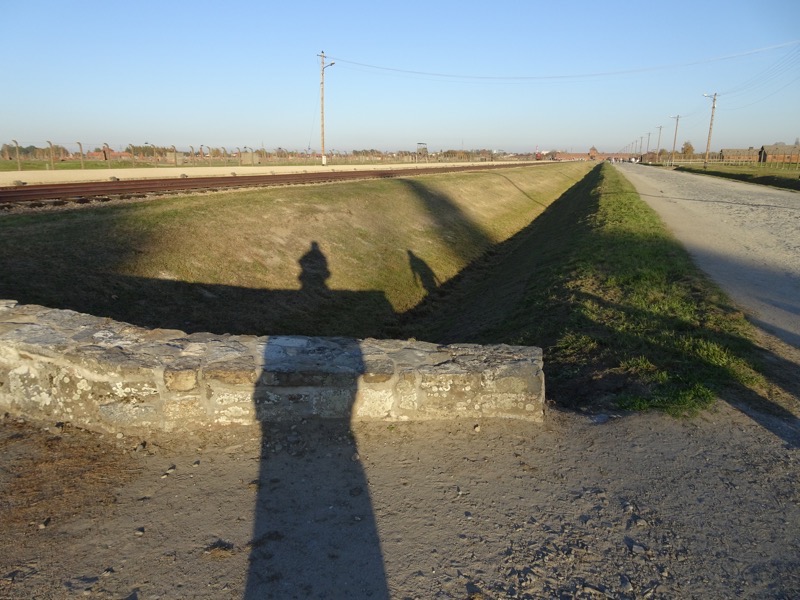 The underground undressing chamber. Destroyed by departing Nazis as the end of the war became a certainty.
The underground undressing chamber. Destroyed by departing Nazis as the end of the war became a certainty.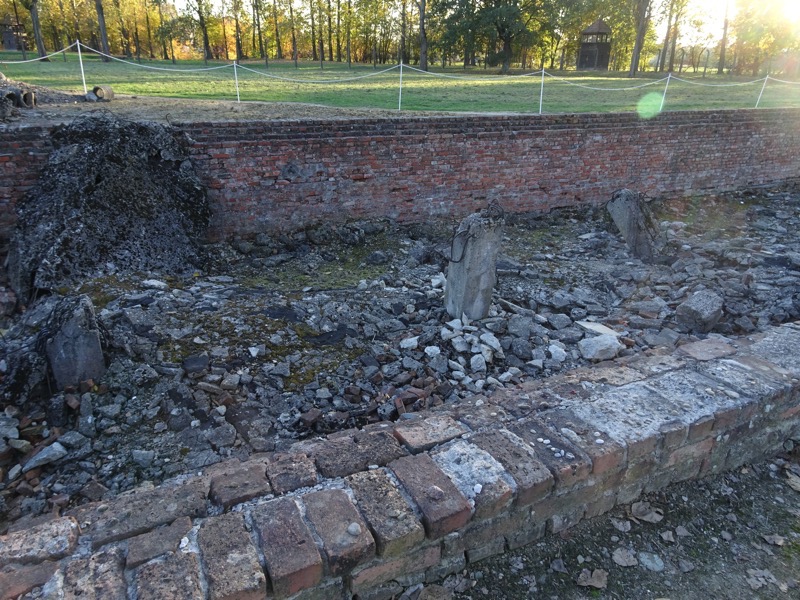 The collapsed roof of the gas chambers:
The collapsed roof of the gas chambers: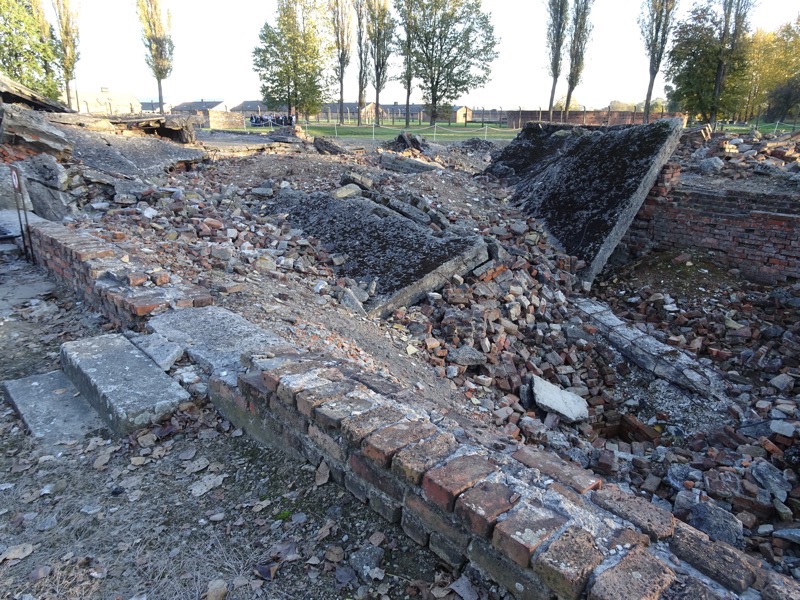
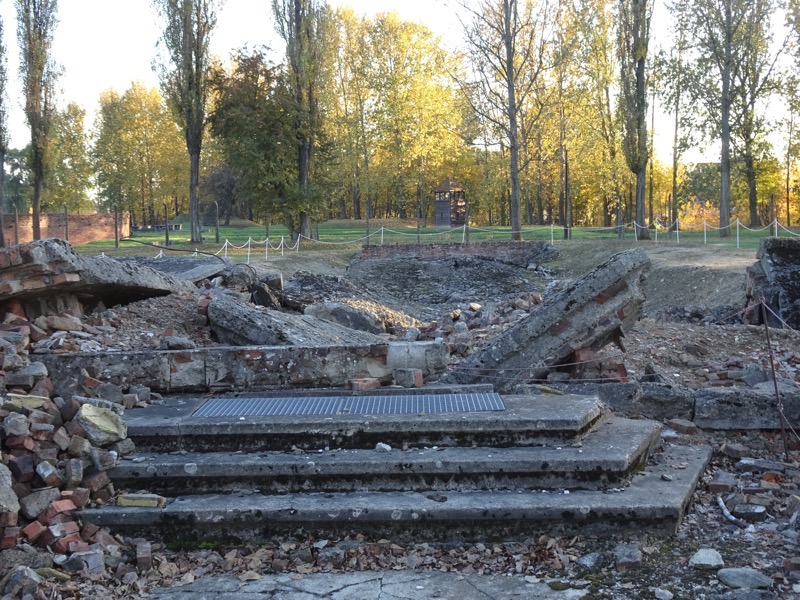 The ruins of the cremation ovens:
The ruins of the cremation ovens: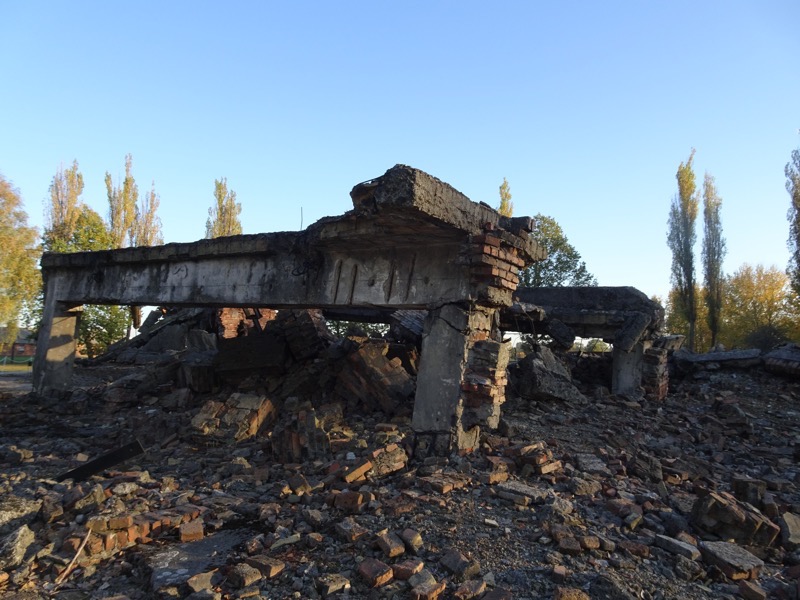 Much of the terrible work carried out in the mass extermination of the Jewish population was Sonderkommandos. The Sonderkommandos were a work detail made up of prisoners from the death camp. They were not civilian workers but were prisoners – usually Jewish – who were forced to work and aid in the management of victims, the looting of the bodies, and the disposal of the corpses in the gas chambers during the Holocaust. They were forced to complete this gruesome work or be killed themselves.
Much of the terrible work carried out in the mass extermination of the Jewish population was Sonderkommandos. The Sonderkommandos were a work detail made up of prisoners from the death camp. They were not civilian workers but were prisoners – usually Jewish – who were forced to work and aid in the management of victims, the looting of the bodies, and the disposal of the corpses in the gas chambers during the Holocaust. They were forced to complete this gruesome work or be killed themselves. 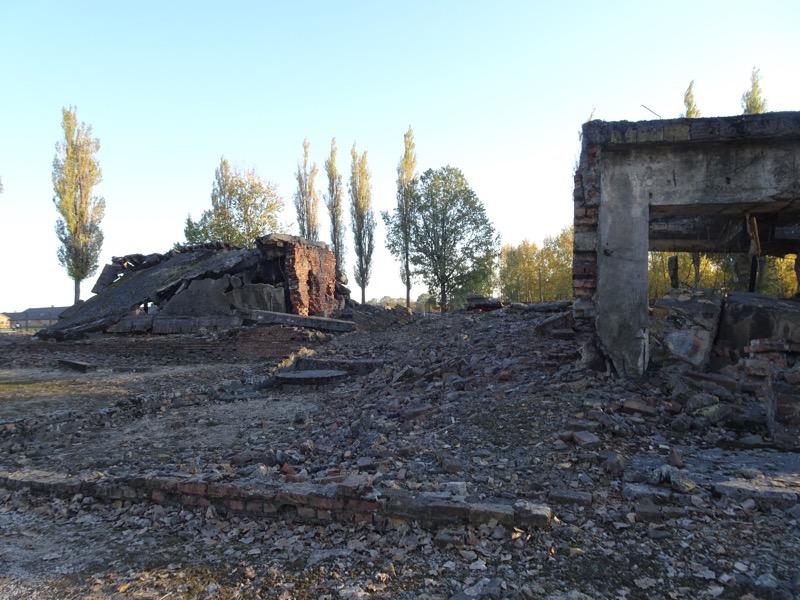
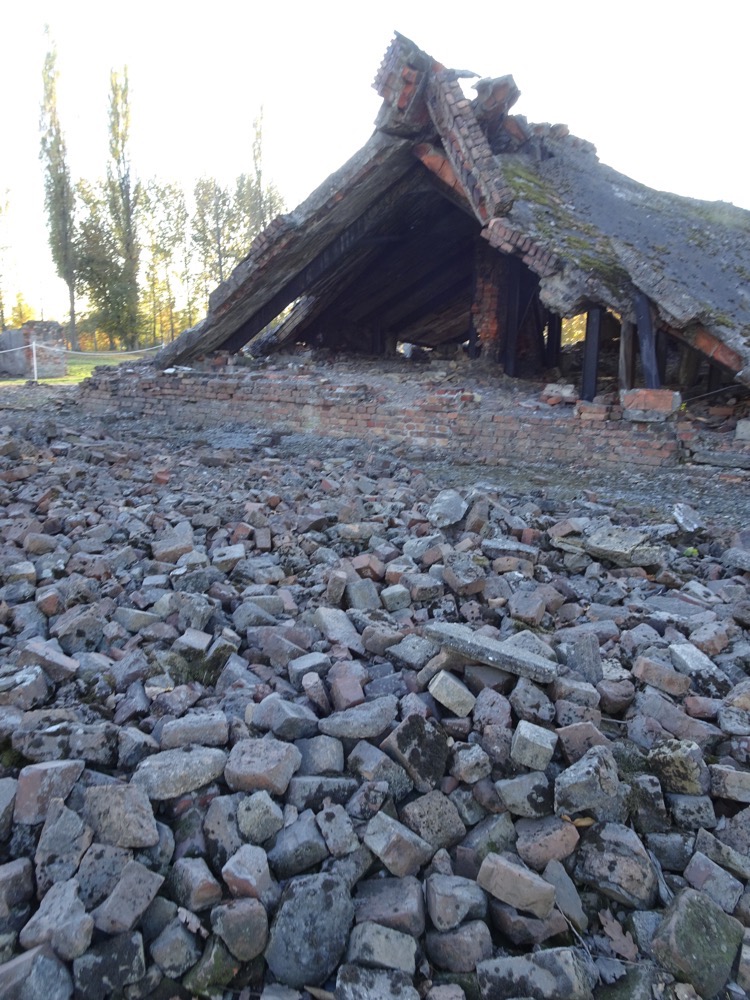
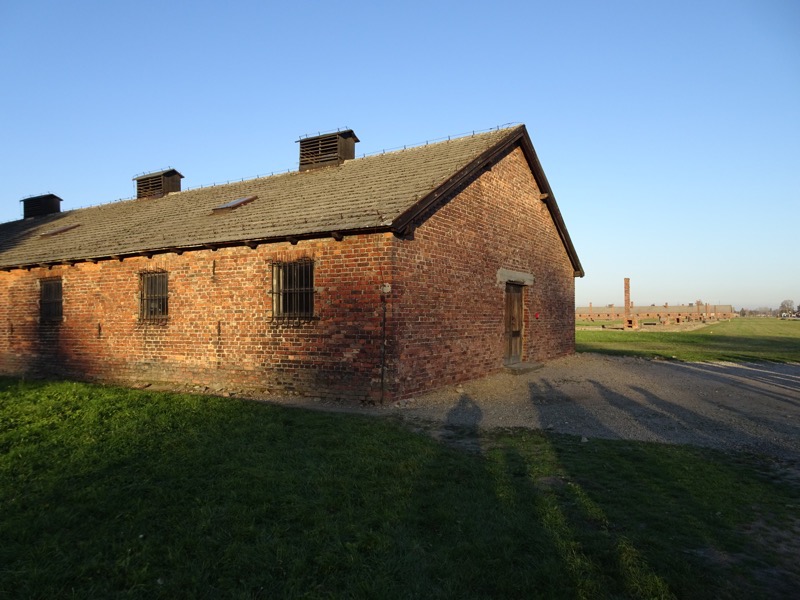
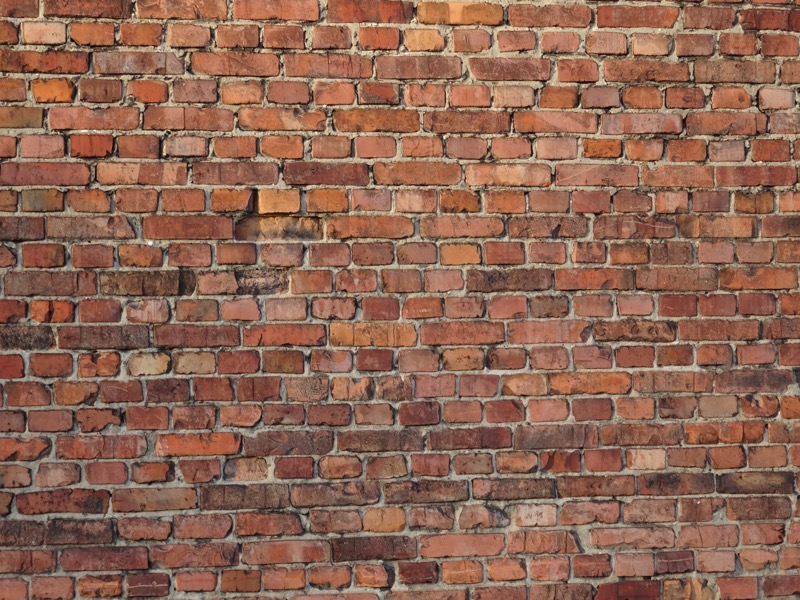
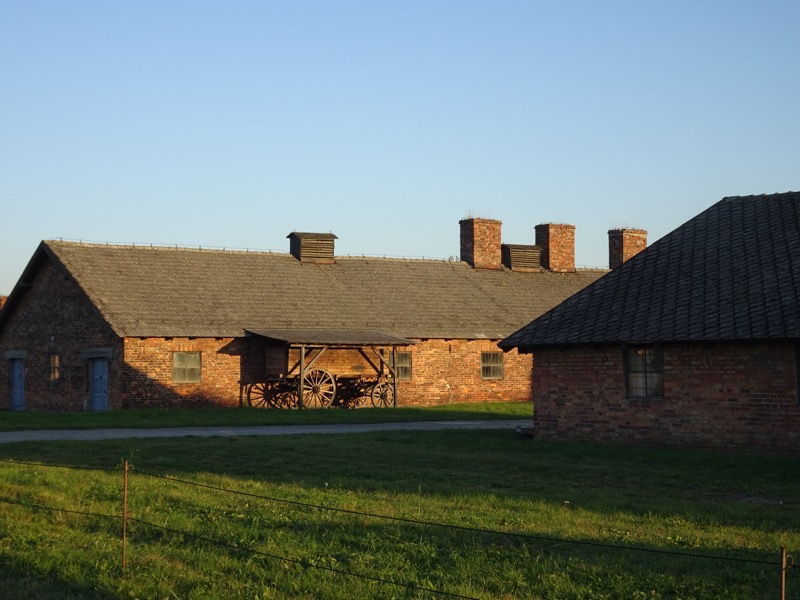
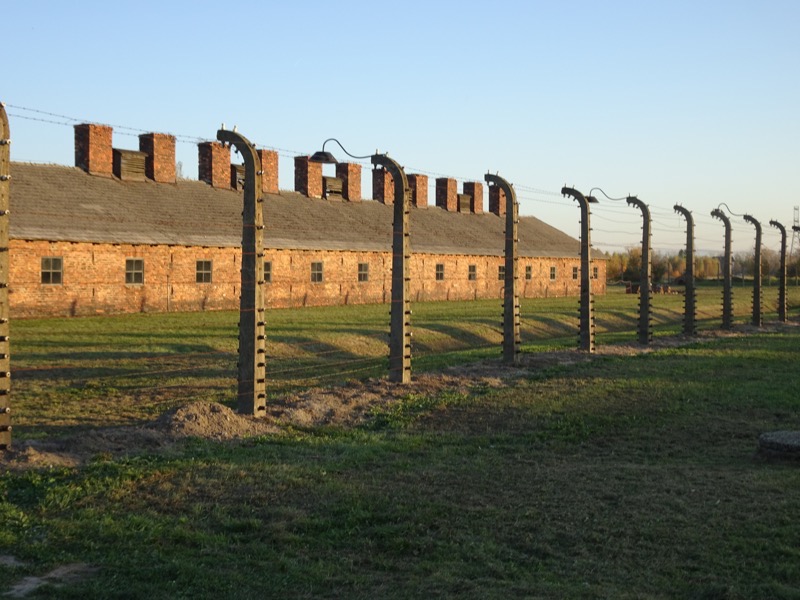 Inside Barracks 16A. ‘Beds’, such as they were, were three stories high and housed four to five people in each space. Necessary for warmth in winter but swelteringly uncomfortable and unsanitary in summer.
Inside Barracks 16A. ‘Beds’, such as they were, were three stories high and housed four to five people in each space. Necessary for warmth in winter but swelteringly uncomfortable and unsanitary in summer.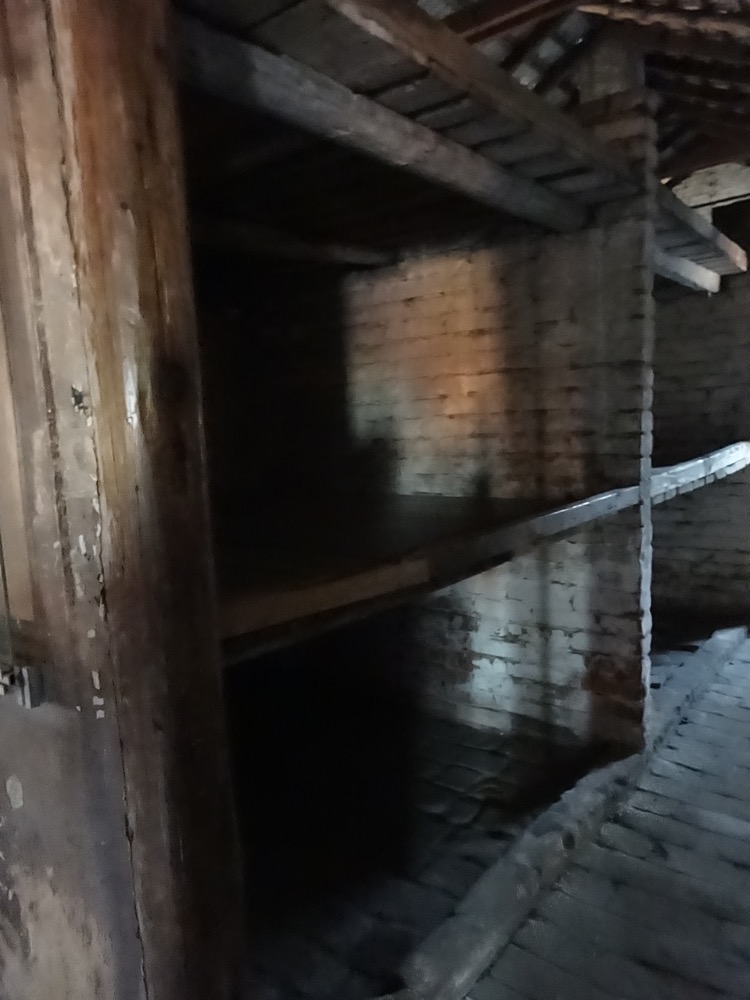 There were no washing facilities in the buildings. Any bathing had to occur outside.
There were no washing facilities in the buildings. Any bathing had to occur outside.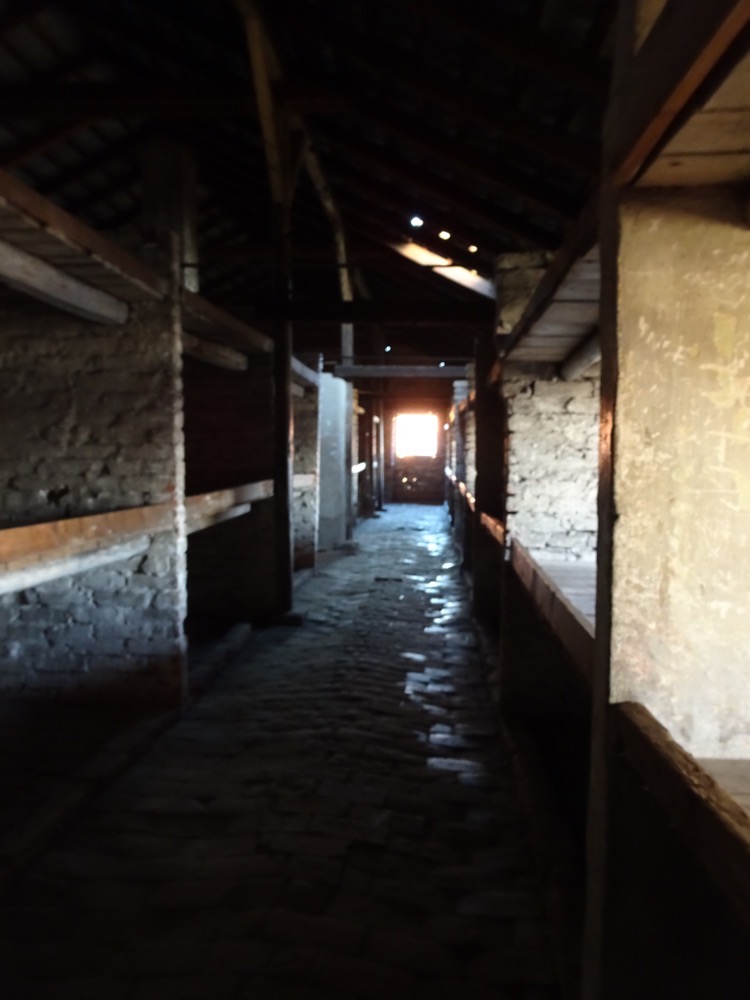
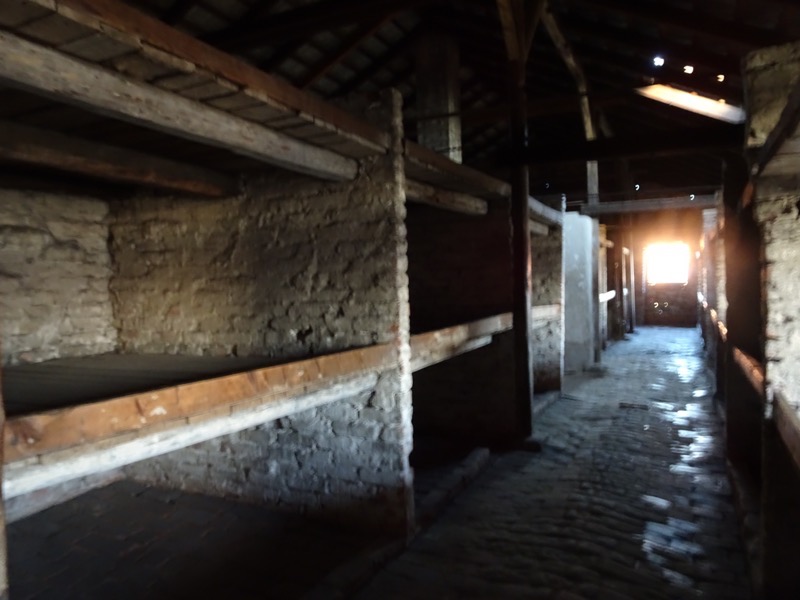
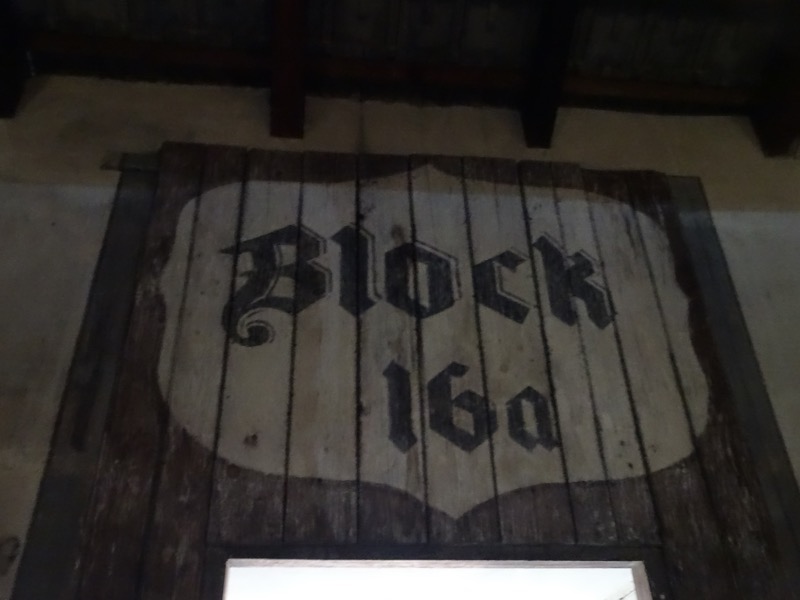 There is much more that could be said about Auschwitz-Birkenau, and there are incalculable books on the topic that adequately demonstrate that. But there is little that captures the feeling of being here and physically taking in this history in person.
There is much more that could be said about Auschwitz-Birkenau, and there are incalculable books on the topic that adequately demonstrate that. But there is little that captures the feeling of being here and physically taking in this history in person.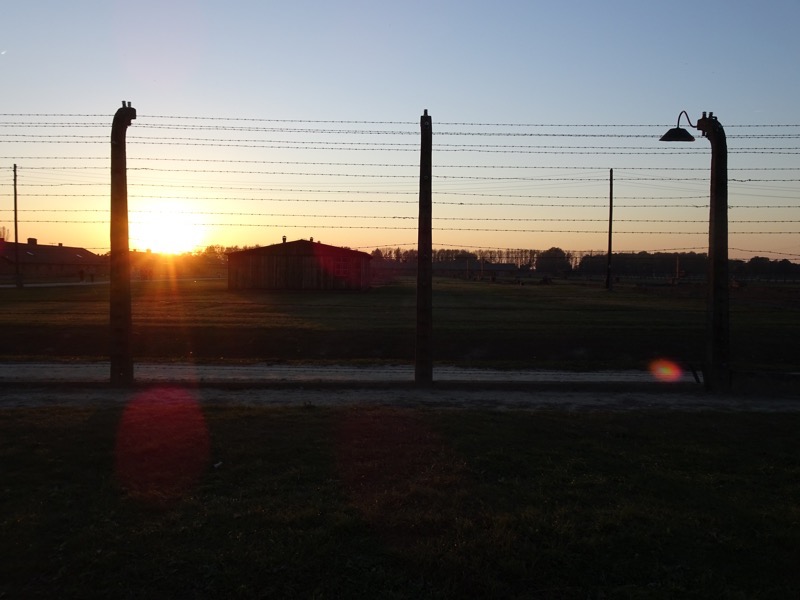
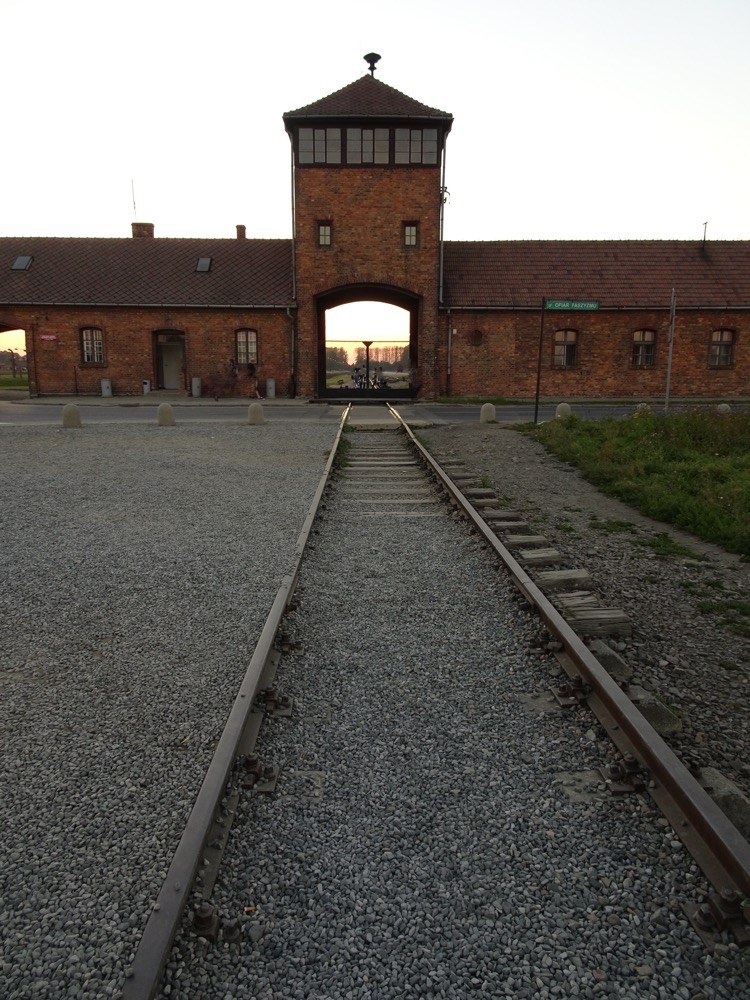 As I was saying to Marta, I don’t remember a time in my life where I learned about the atrocities committed by the Nazis during WWI. I don’t remember gleaning this knowledge for the first time and being shocked and appalled by the inhumanity of it. I grew up seemingly always aware of Hitler, of Nazism, of the concentration camps almost by osmosis. The knowledge I always had merely grown in depth and detail as I got older… but having said this, I feel much like I didn’t really understand the extent of the horrors committed here until today. The scale of the brutality is unimaginable until you are faced with it.
As I was saying to Marta, I don’t remember a time in my life where I learned about the atrocities committed by the Nazis during WWI. I don’t remember gleaning this knowledge for the first time and being shocked and appalled by the inhumanity of it. I grew up seemingly always aware of Hitler, of Nazism, of the concentration camps almost by osmosis. The knowledge I always had merely grown in depth and detail as I got older… but having said this, I feel much like I didn’t really understand the extent of the horrors committed here until today. The scale of the brutality is unimaginable until you are faced with it.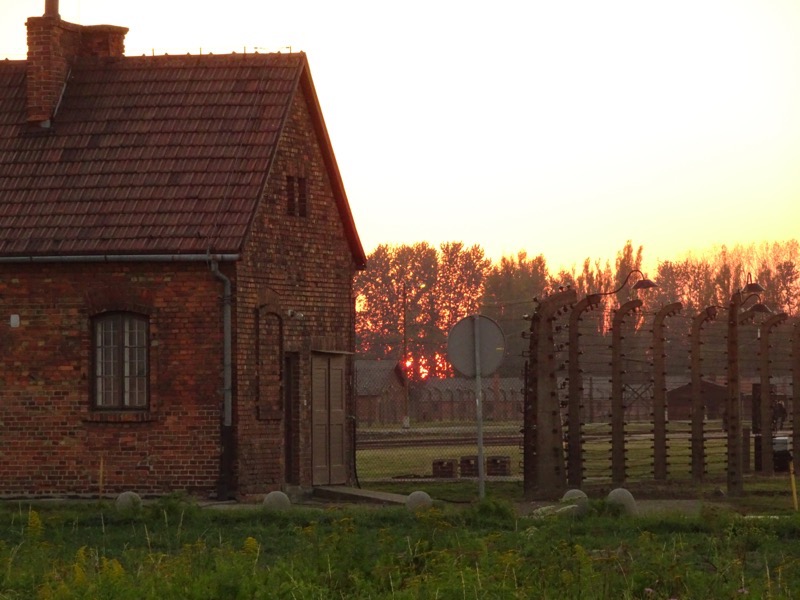 “The last thing to die is hope…”
“The last thing to die is hope…”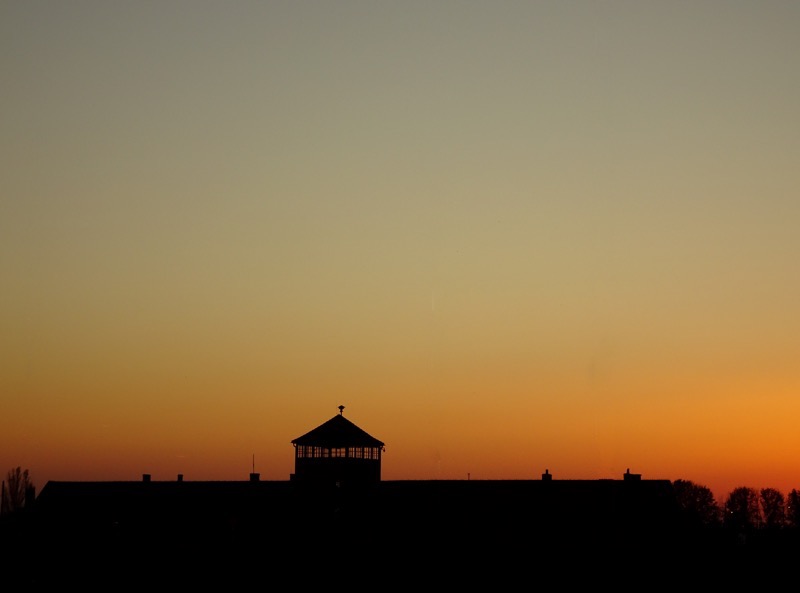
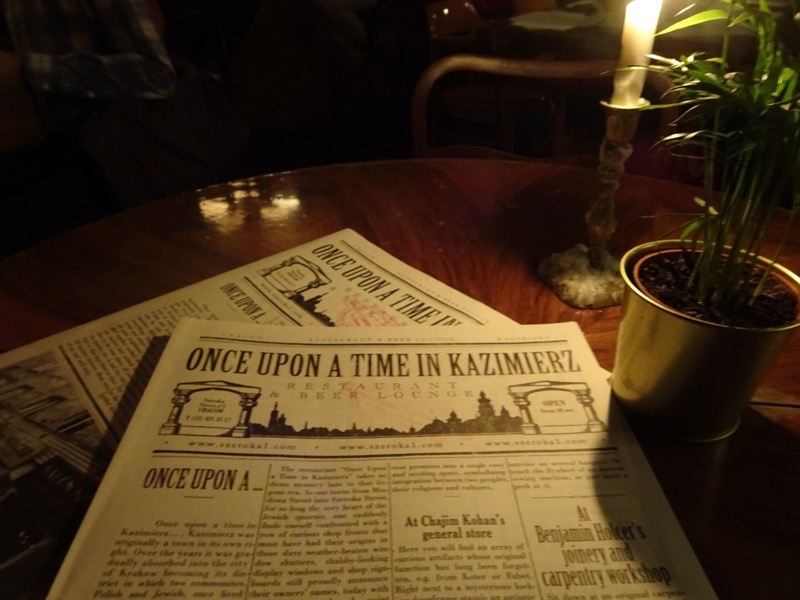 Weird and wonderful decor – one couple found themselves seated at a table that was actually an old treadle sewing machine.
Weird and wonderful decor – one couple found themselves seated at a table that was actually an old treadle sewing machine. Jewish Caviar – chopped chicken livers with eggs in truffle aroma, served with rye bread and whipped butter.
Jewish Caviar – chopped chicken livers with eggs in truffle aroma, served with rye bread and whipped butter. Beef and thyme pierogi, half and half (friend and boiled).
Beef and thyme pierogi, half and half (friend and boiled). Fillet of trout with vegetables in orange butter sauce (zucchini, leek and carrot).
Fillet of trout with vegetables in orange butter sauce (zucchini, leek and carrot). Jerusalem mix – chicken breast, liver, hearts in oriental spices and onion. Delicious!
Jerusalem mix – chicken breast, liver, hearts in oriental spices and onion. Delicious! We were the last to leave the restaurant after a couple more ciders!
We were the last to leave the restaurant after a couple more ciders!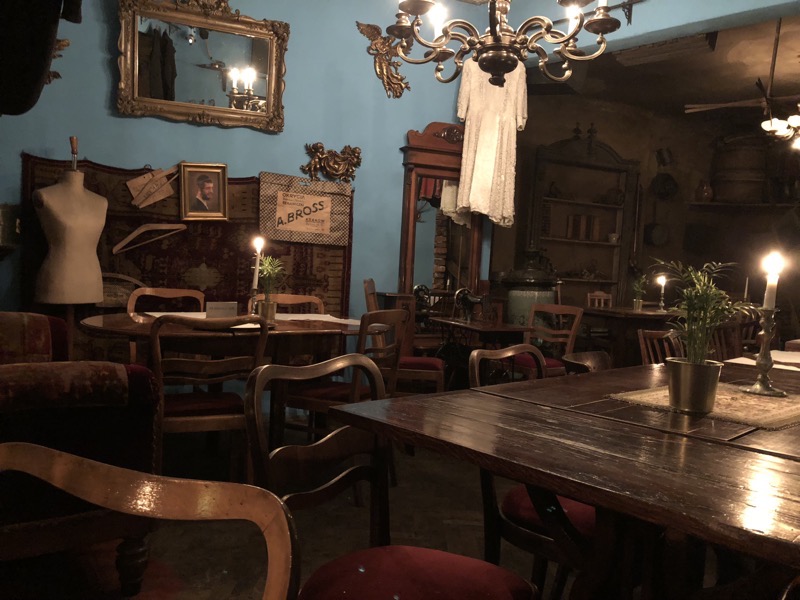 Dessert for yale: Pecan pie with vanilla ice cream:
Dessert for yale: Pecan pie with vanilla ice cream: And for me – steaming mead.
And for me – steaming mead.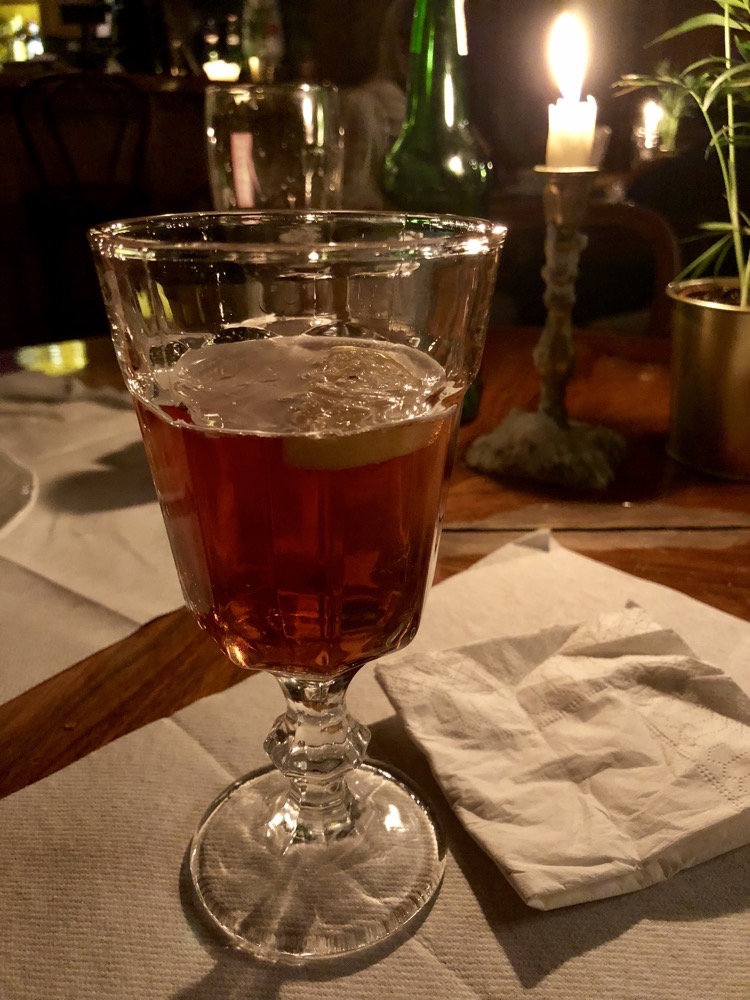 Long day. Need good sleep. Thankfully my, “can I speak to the manager” chat with the night conceirge guy has yielded a different room in the hotel with a better bed. Fingers crossed!
Long day. Need good sleep. Thankfully my, “can I speak to the manager” chat with the night conceirge guy has yielded a different room in the hotel with a better bed. Fingers crossed!